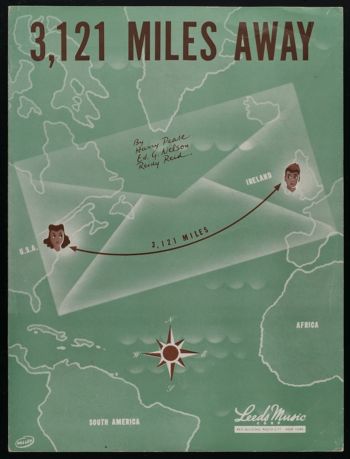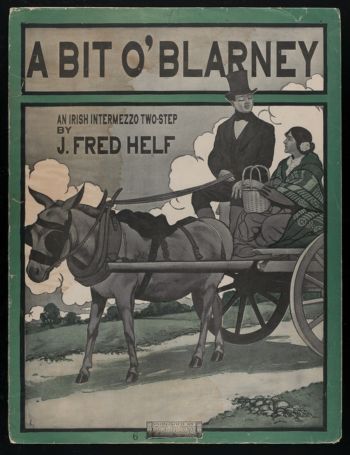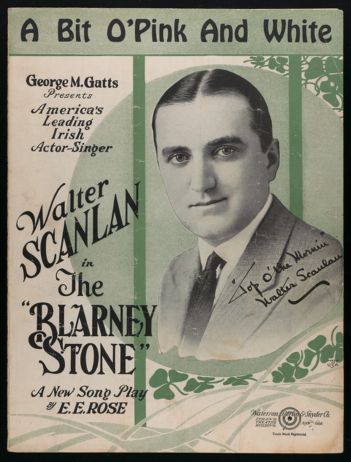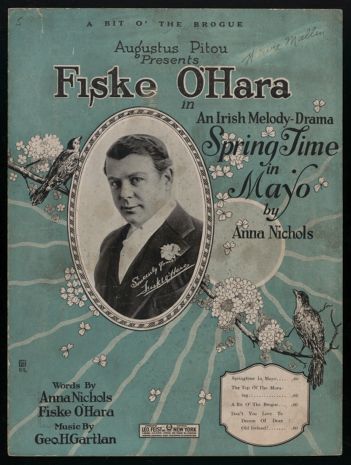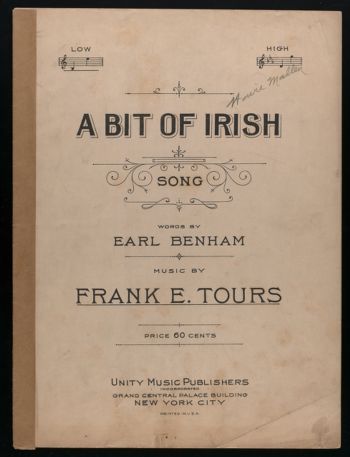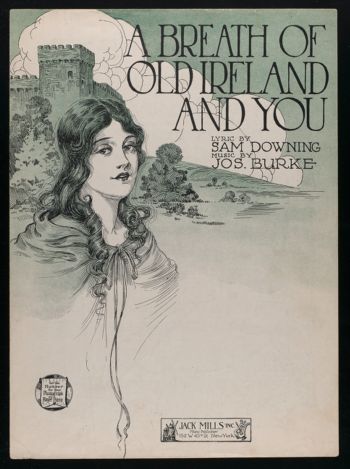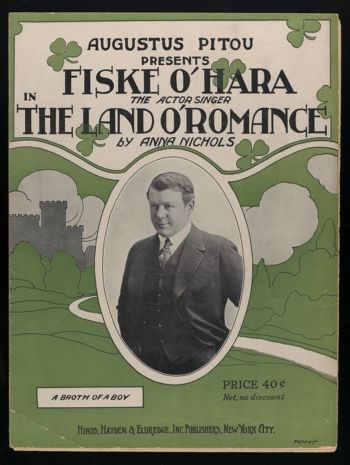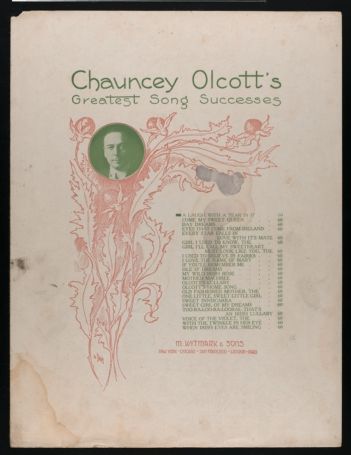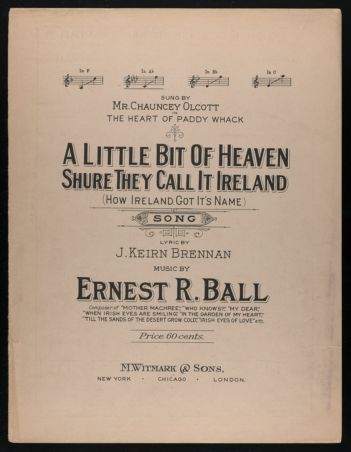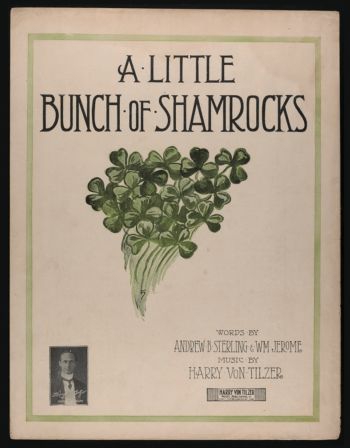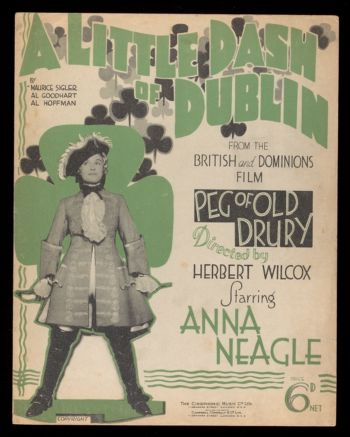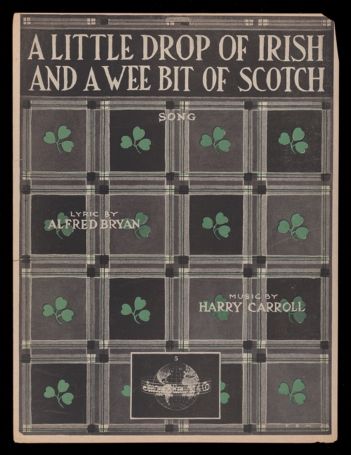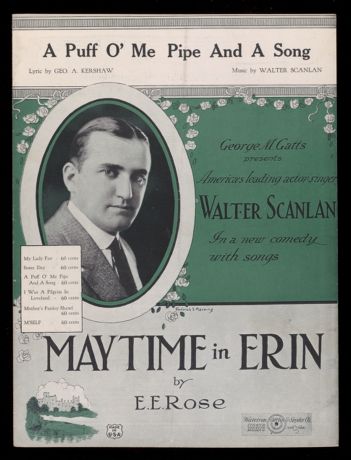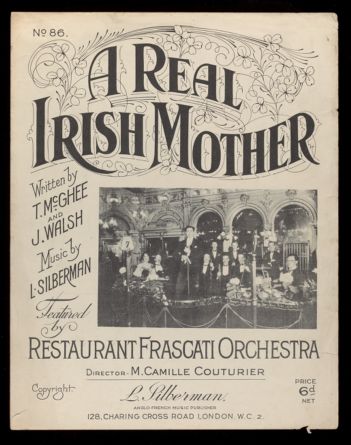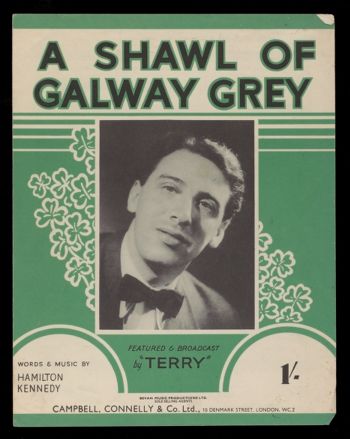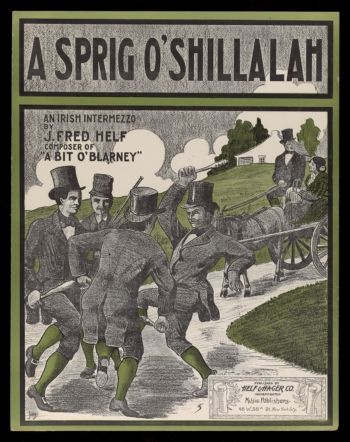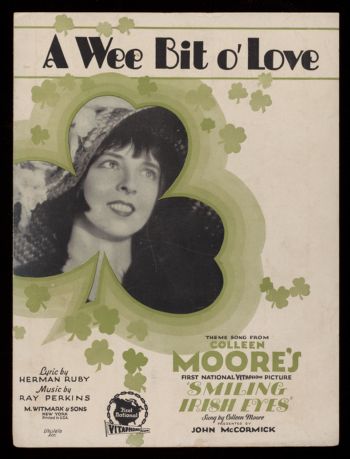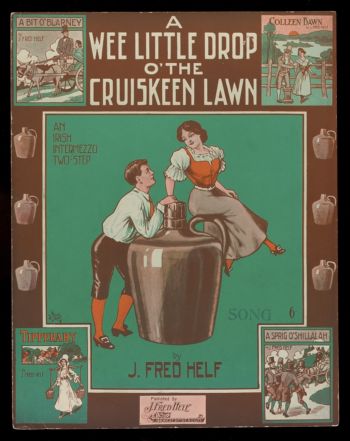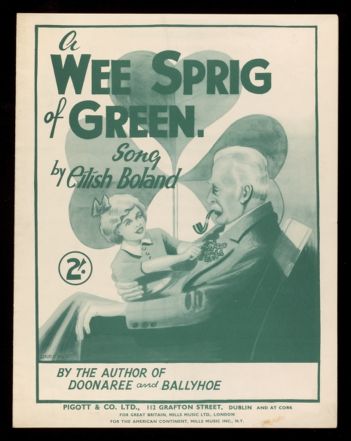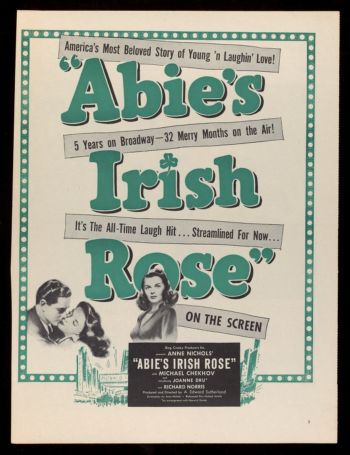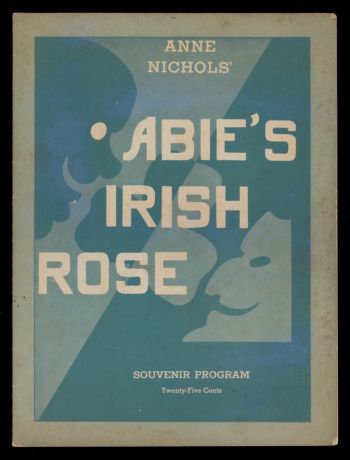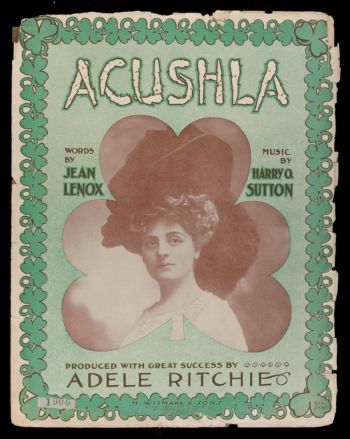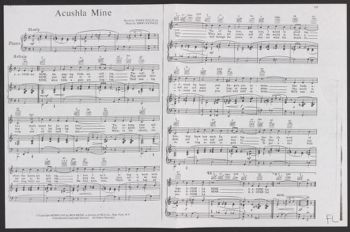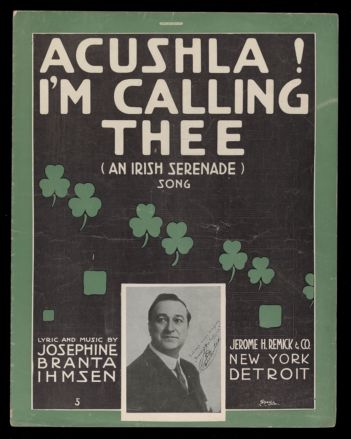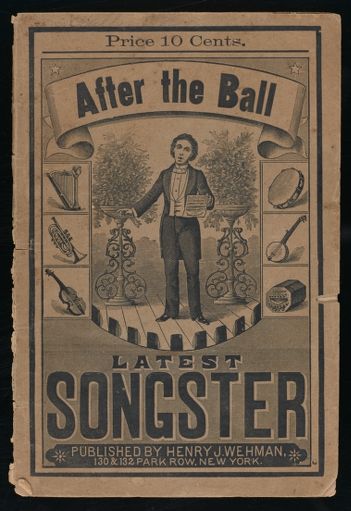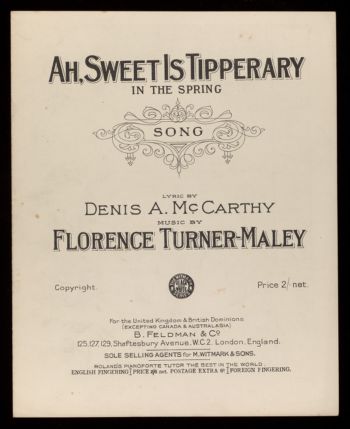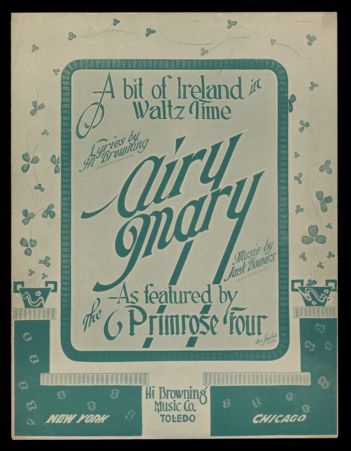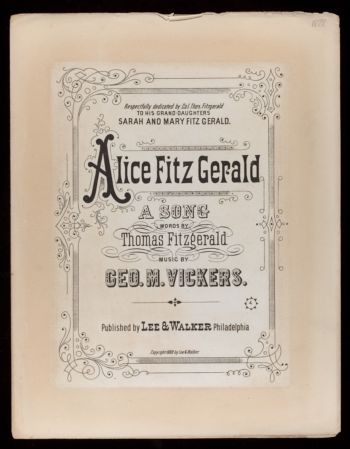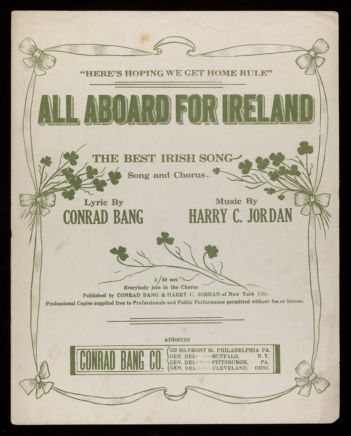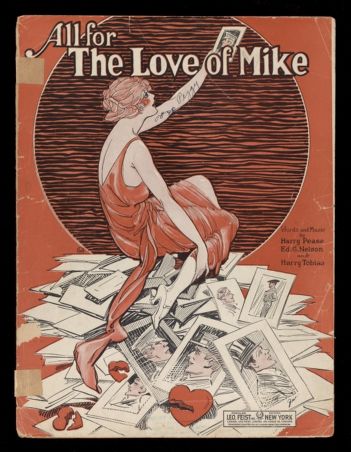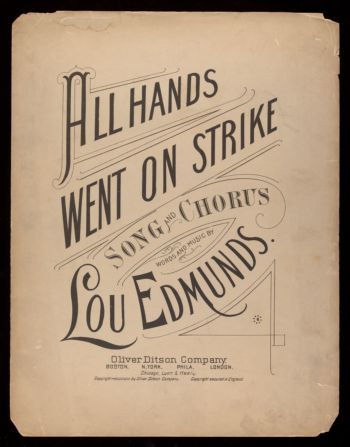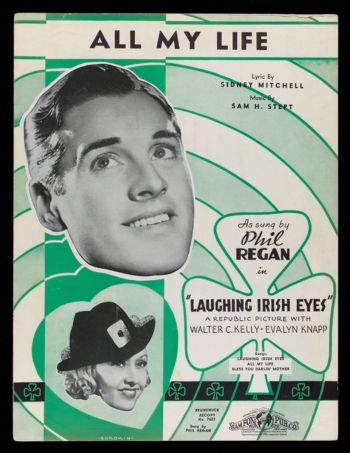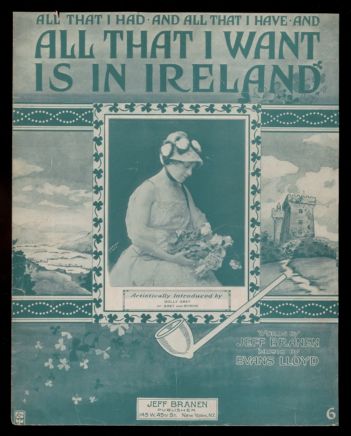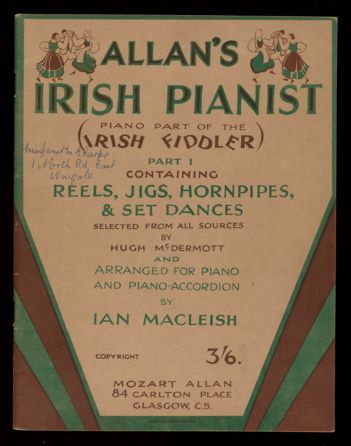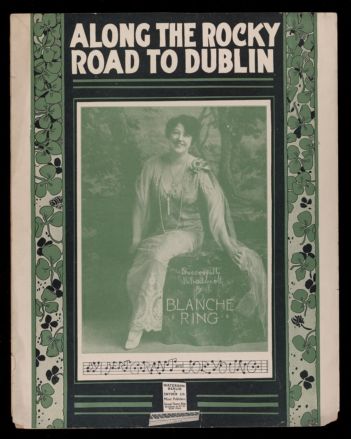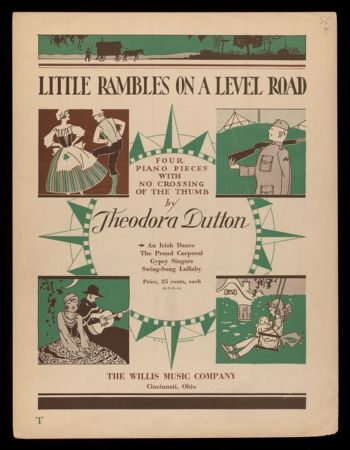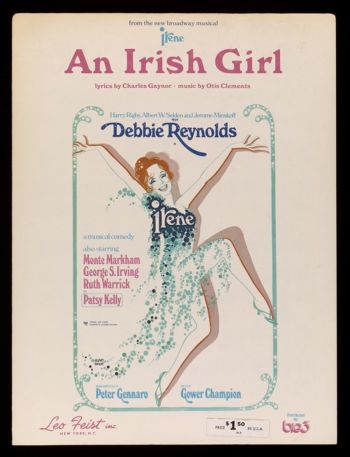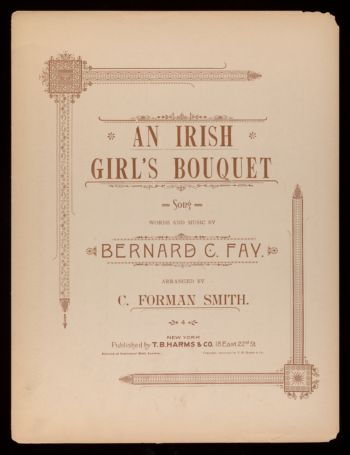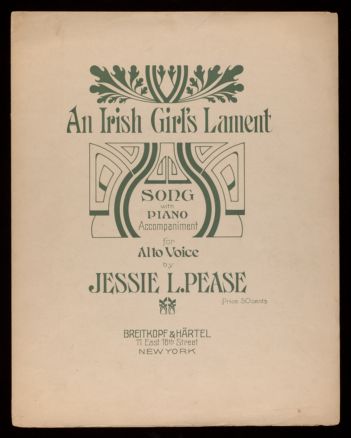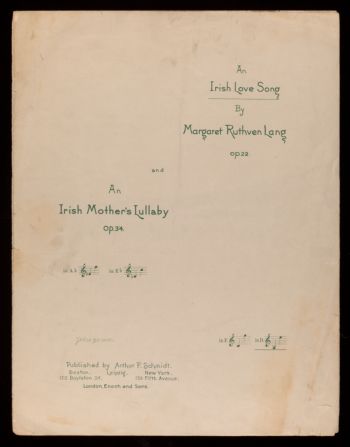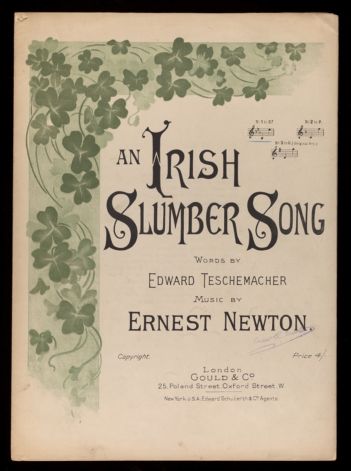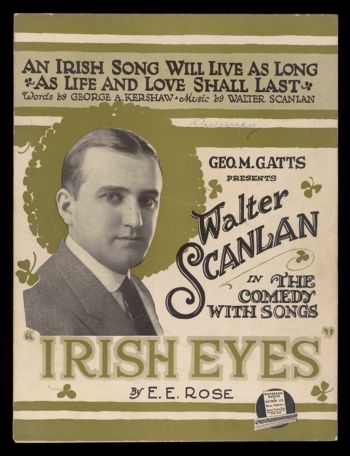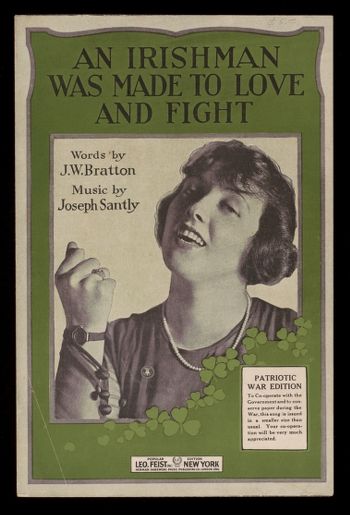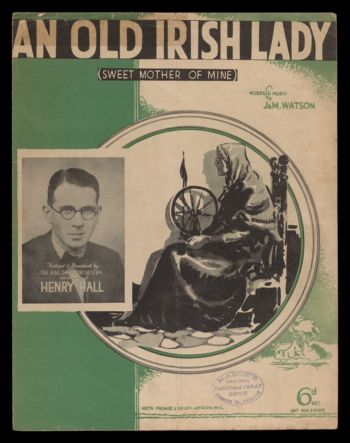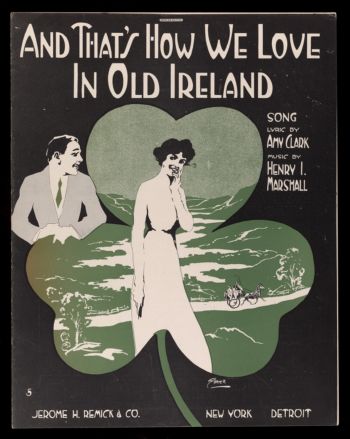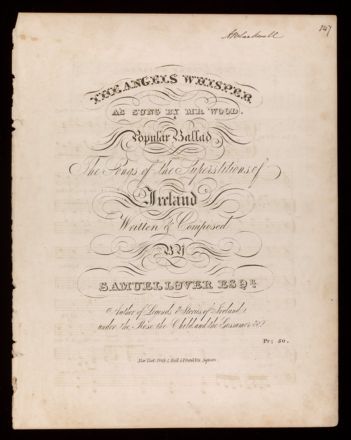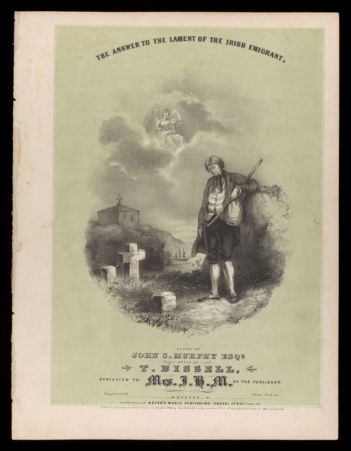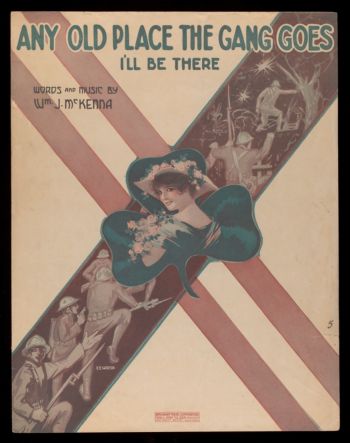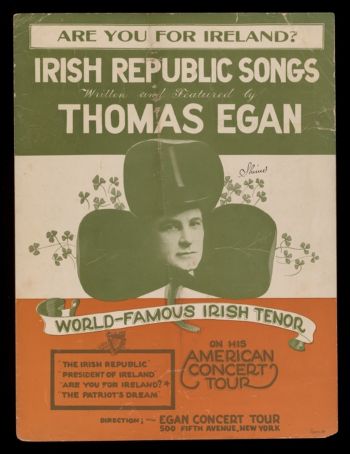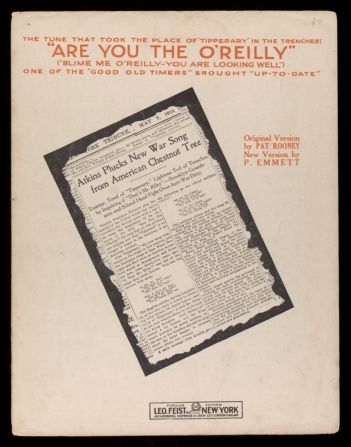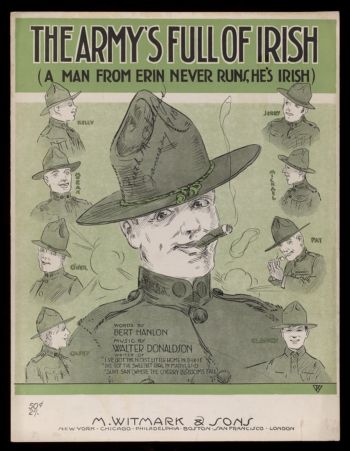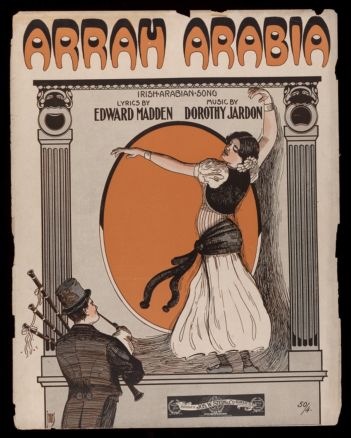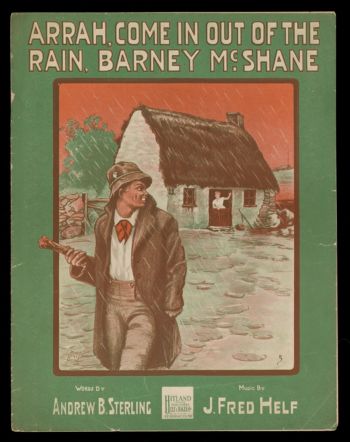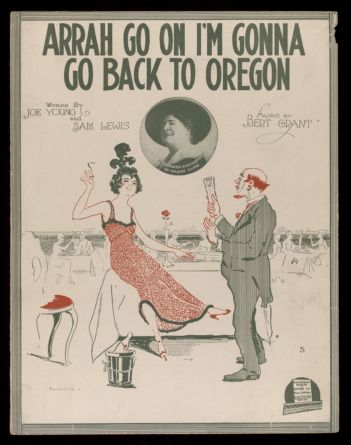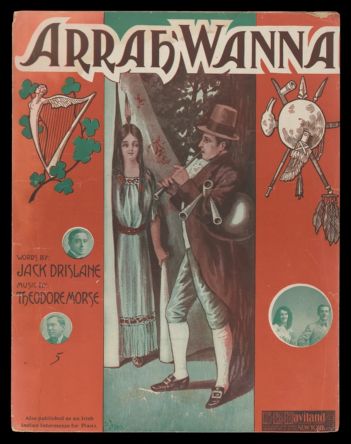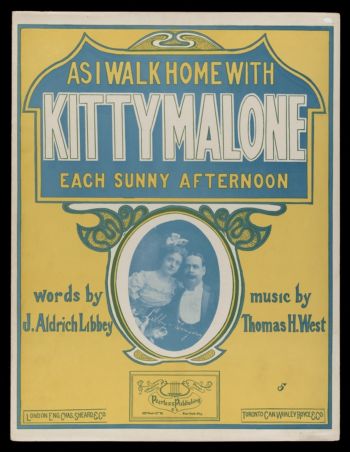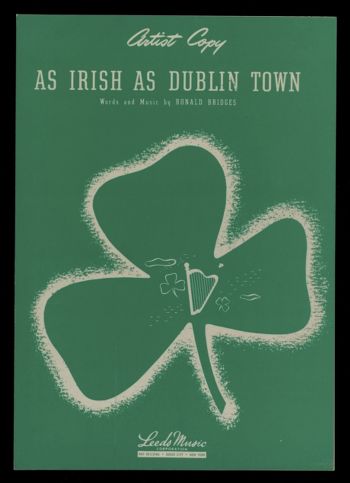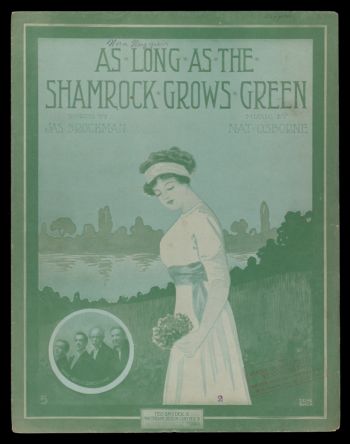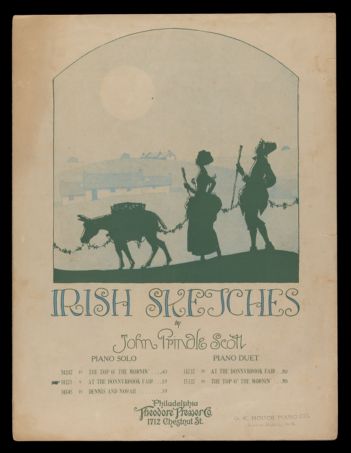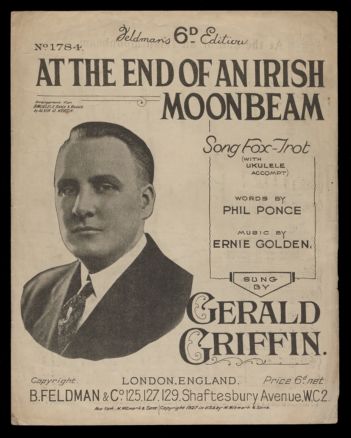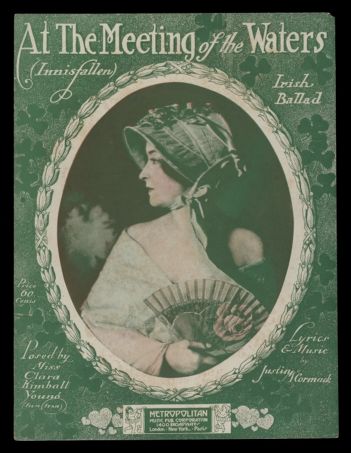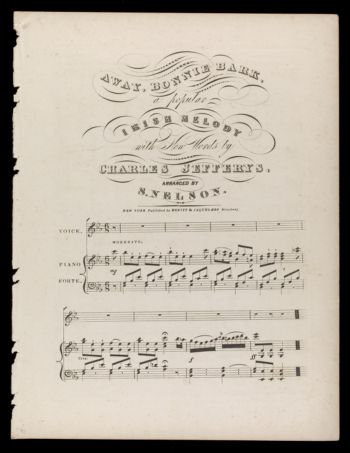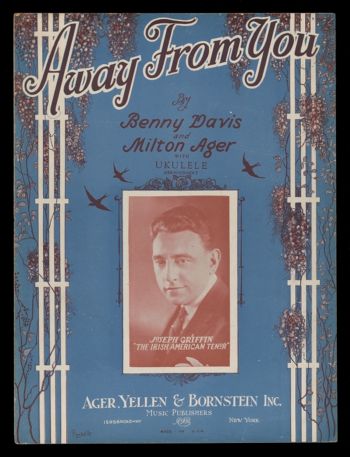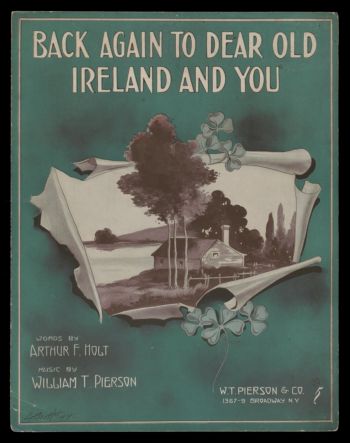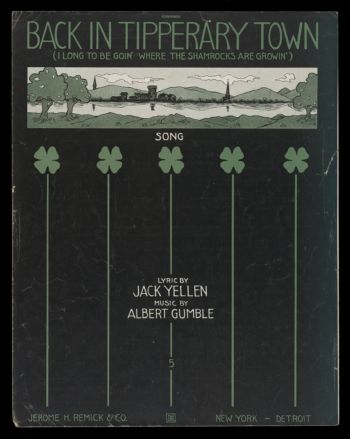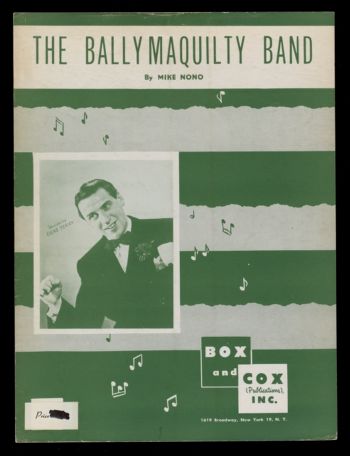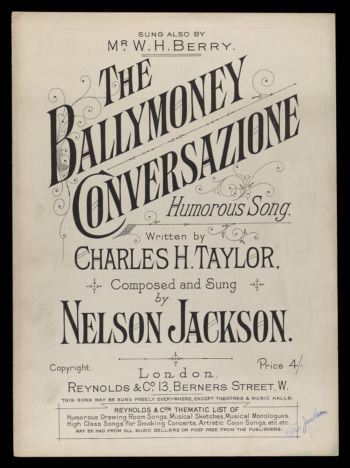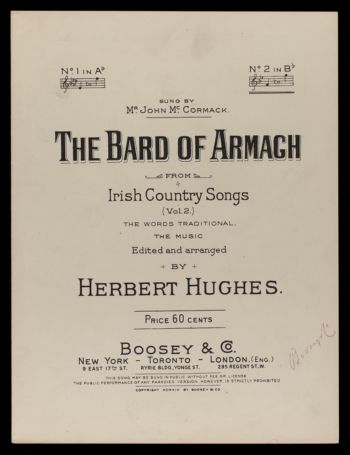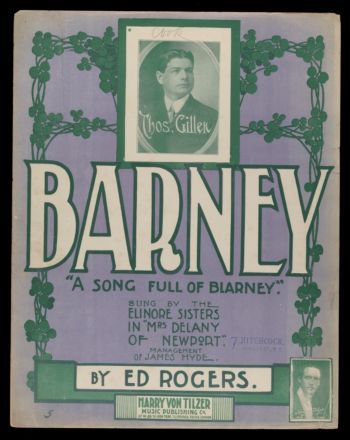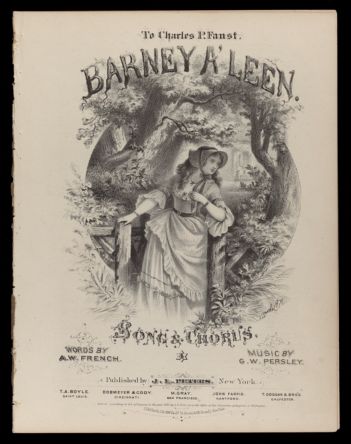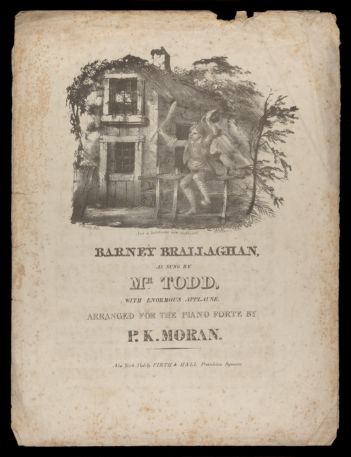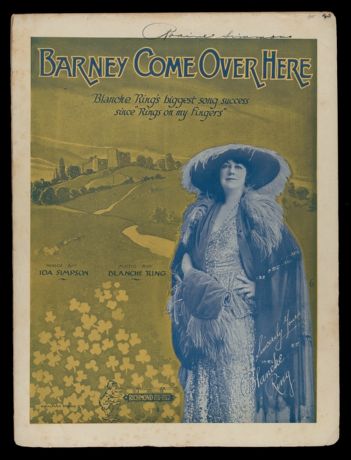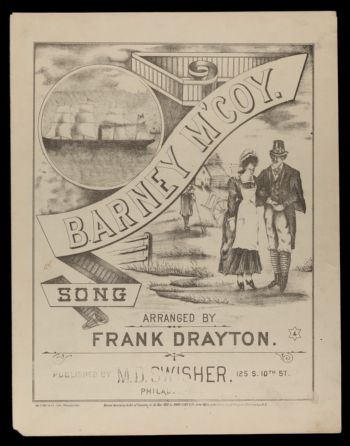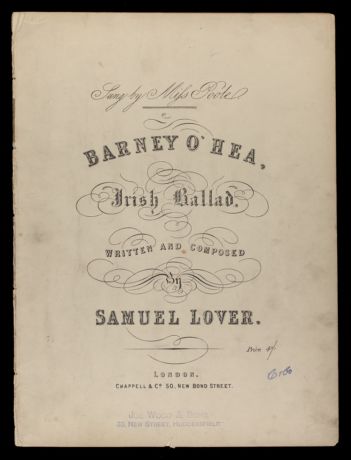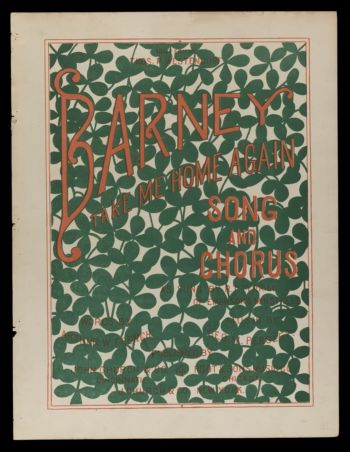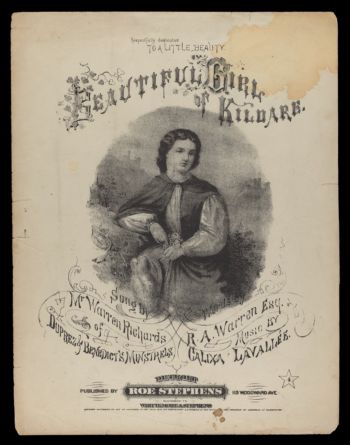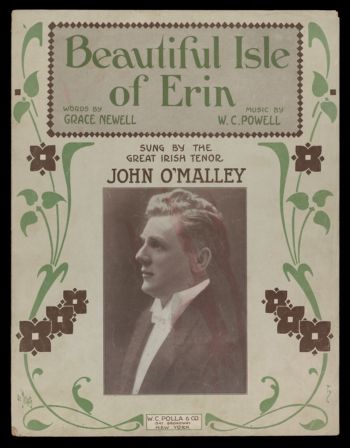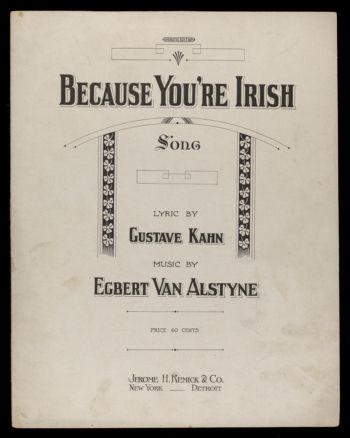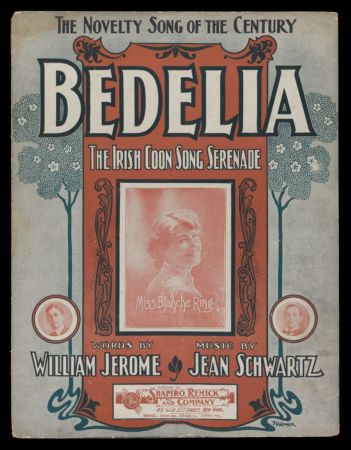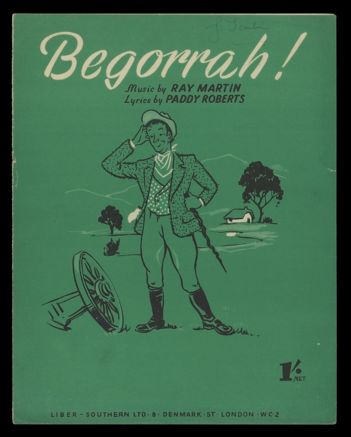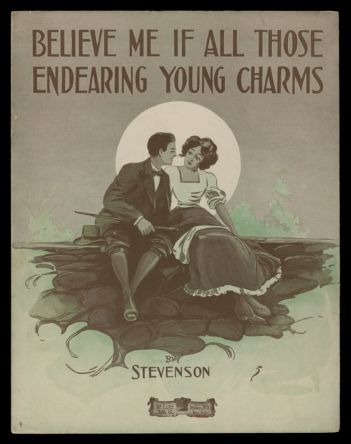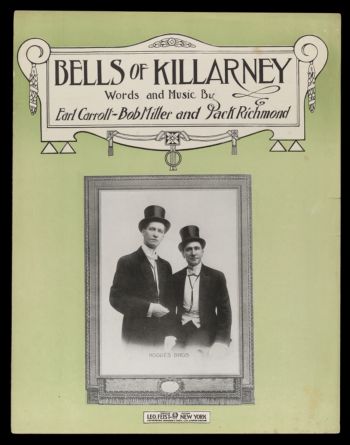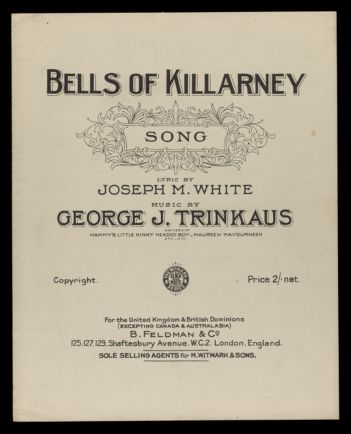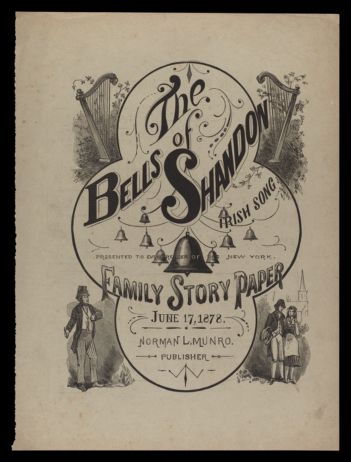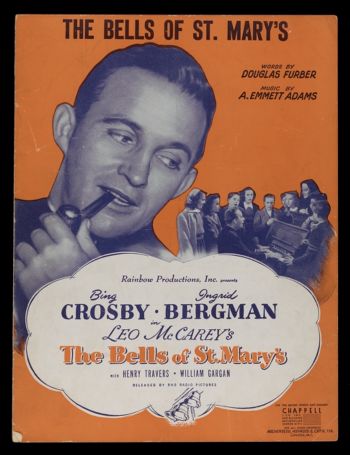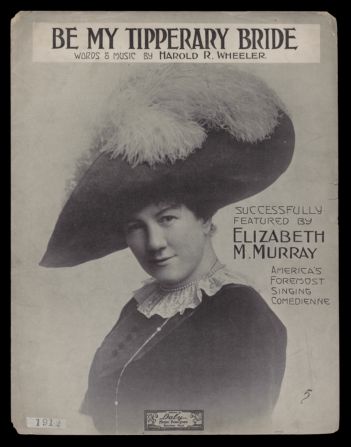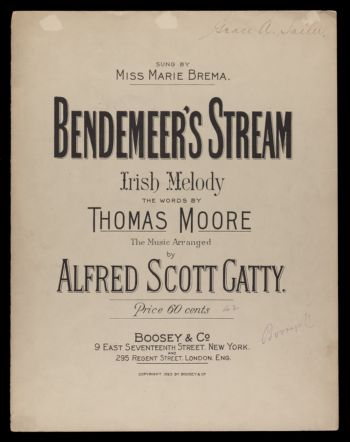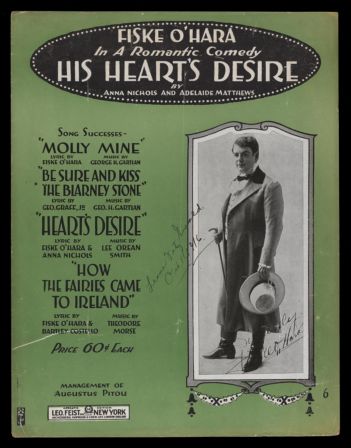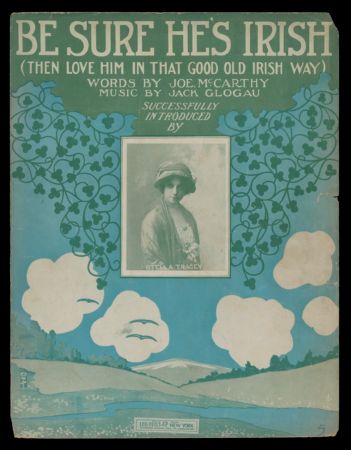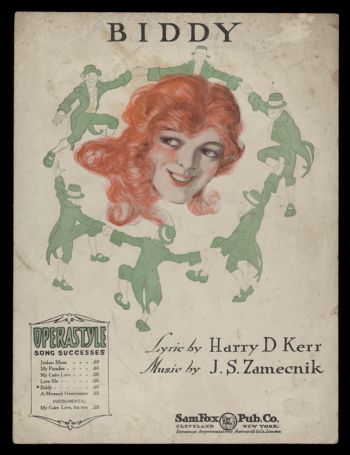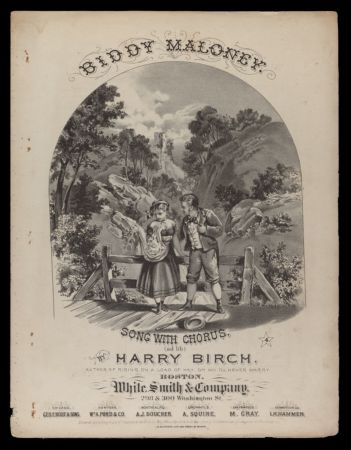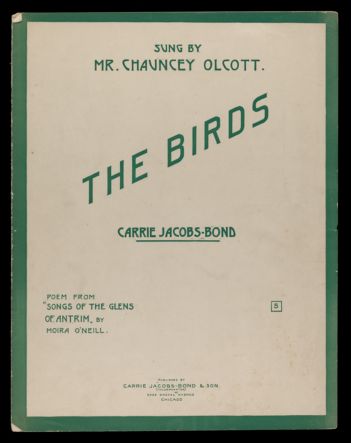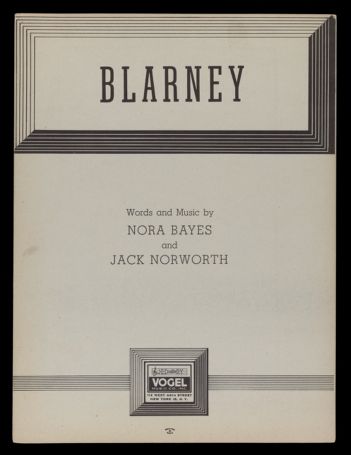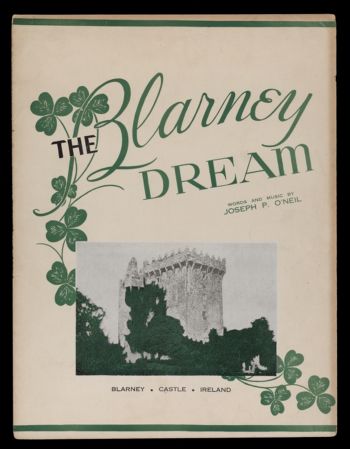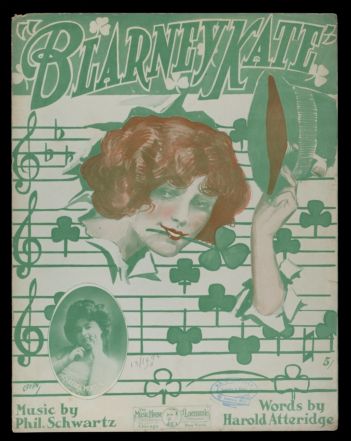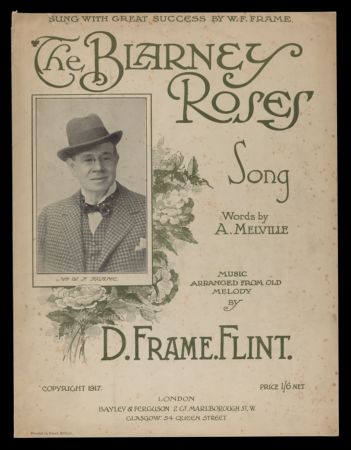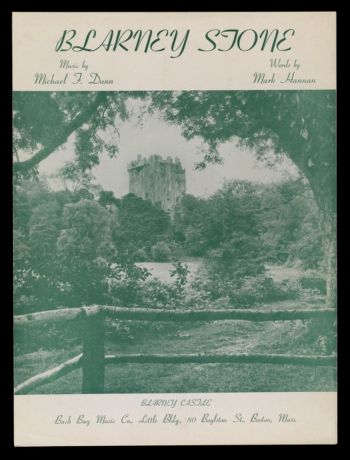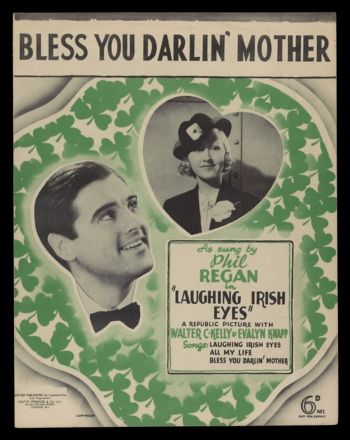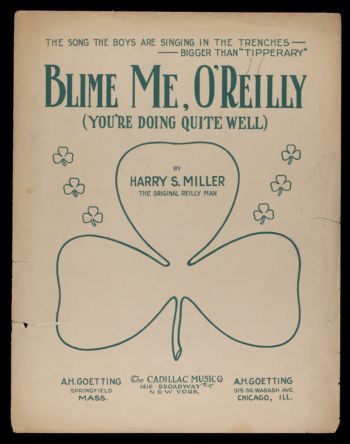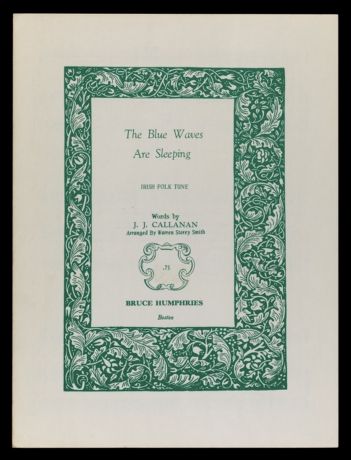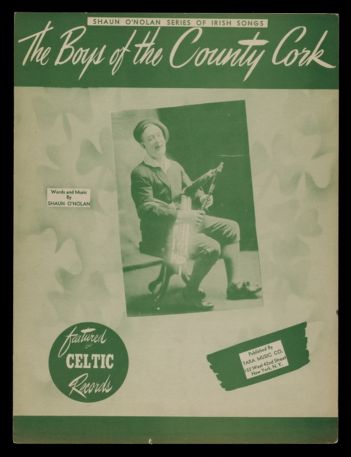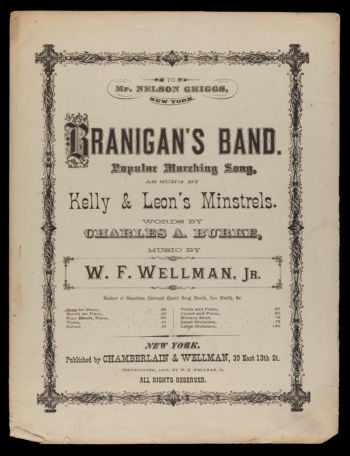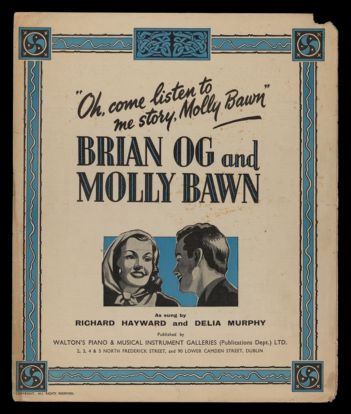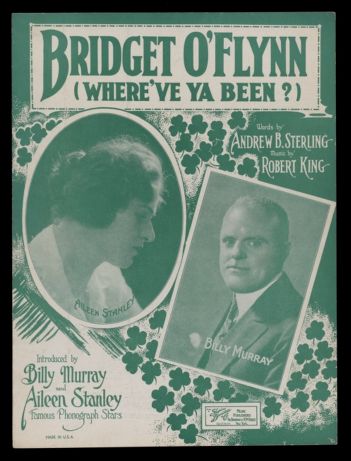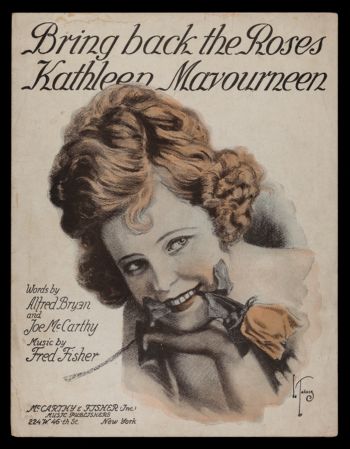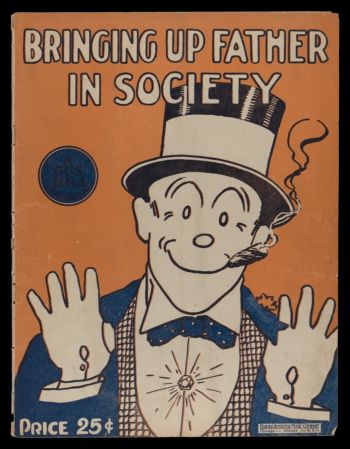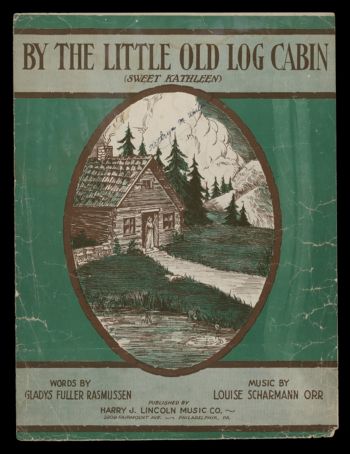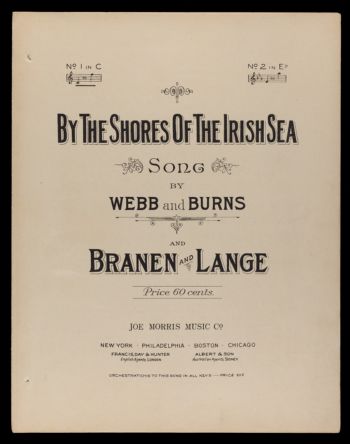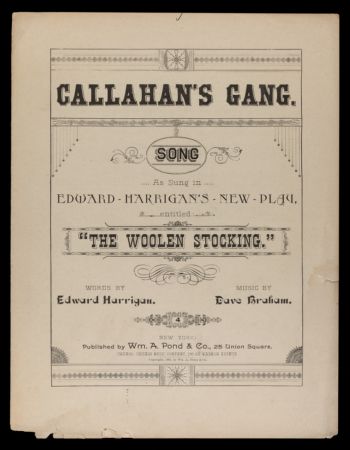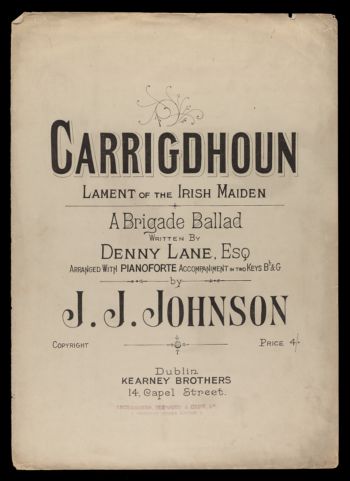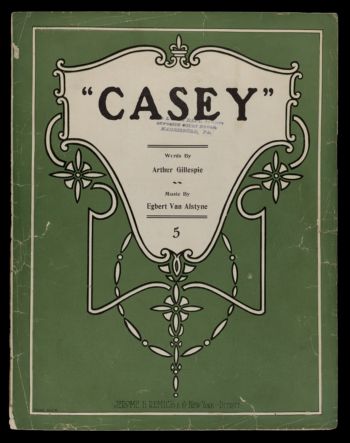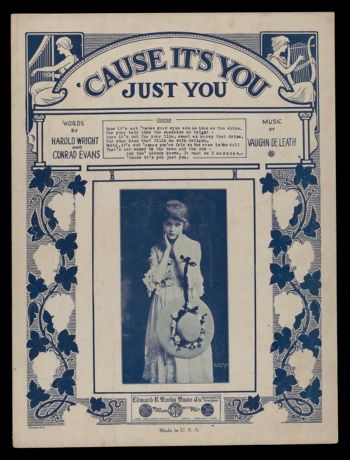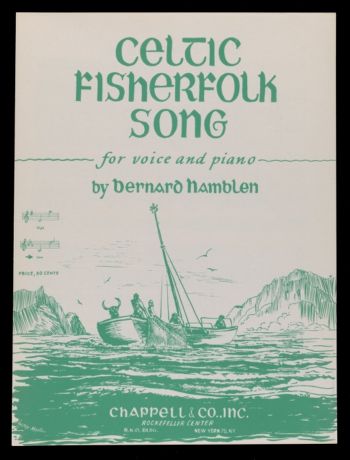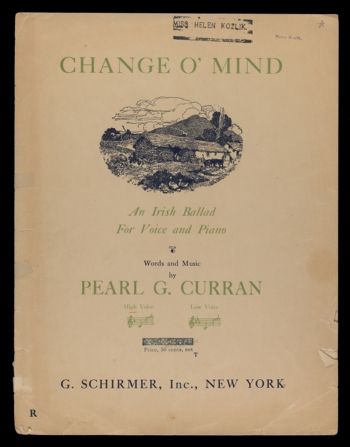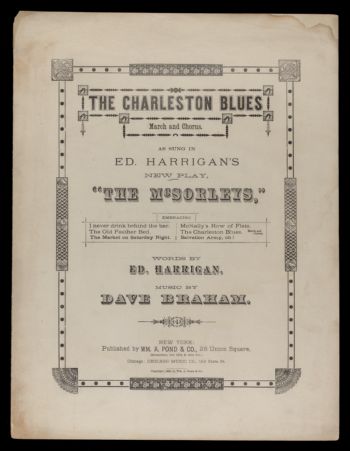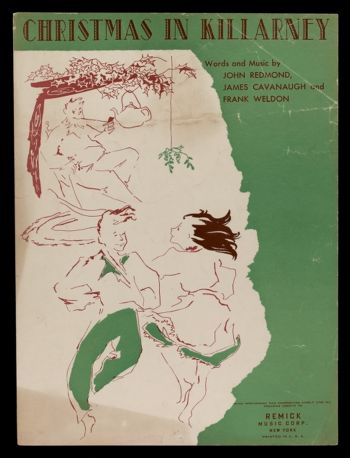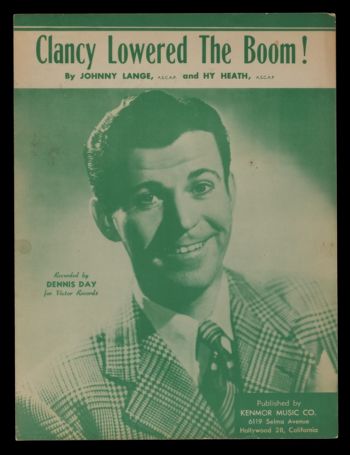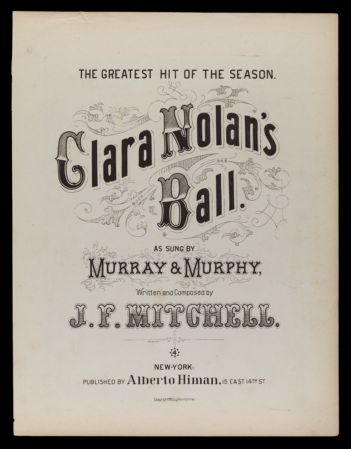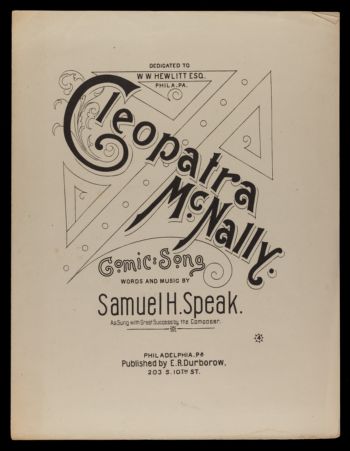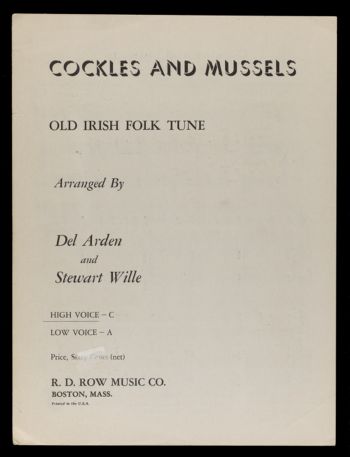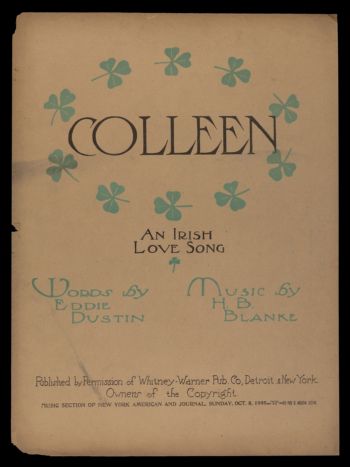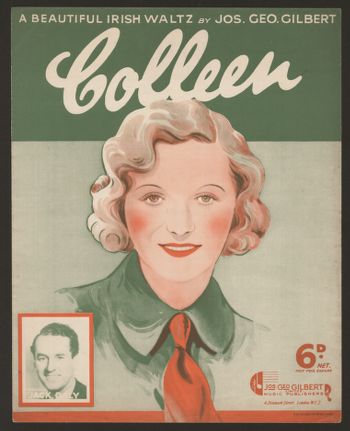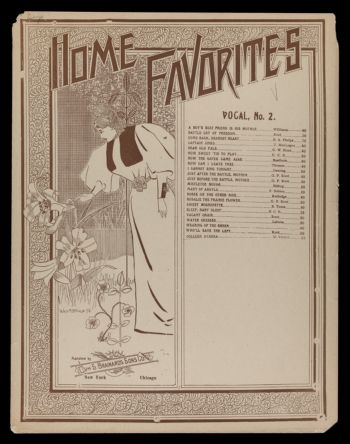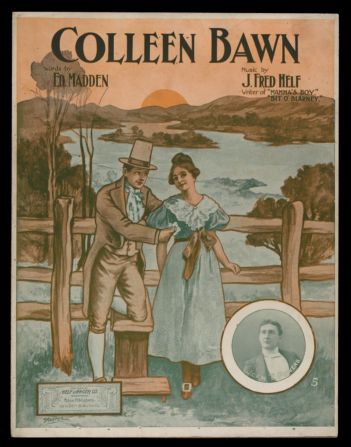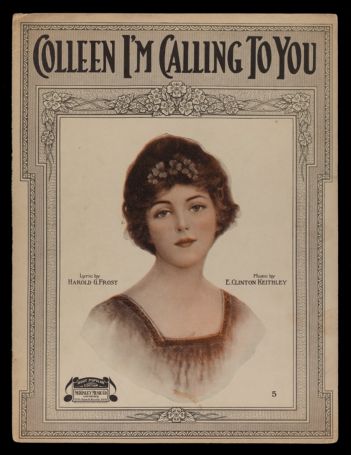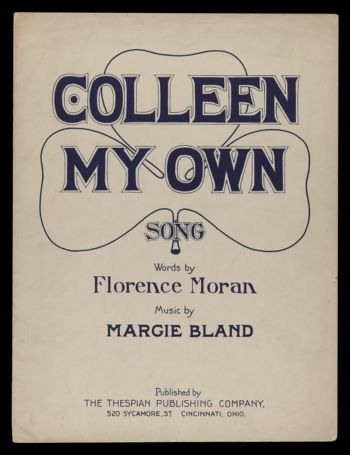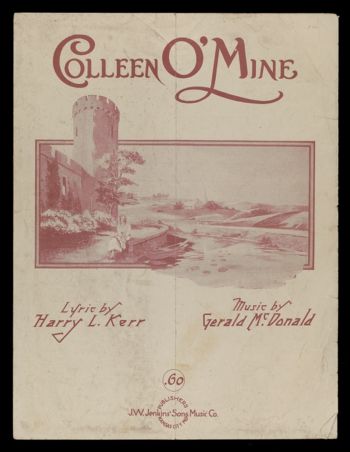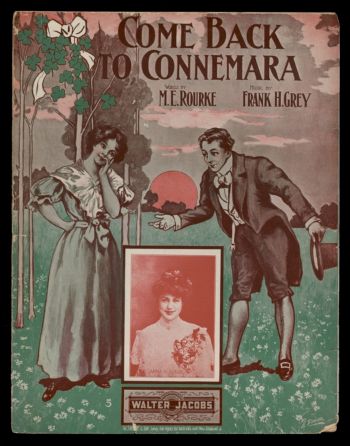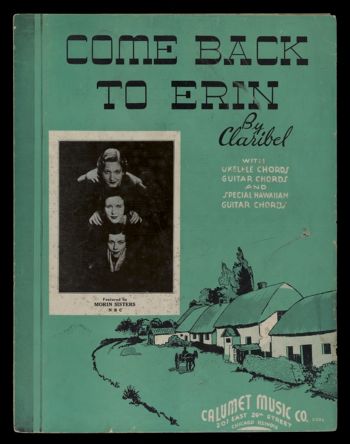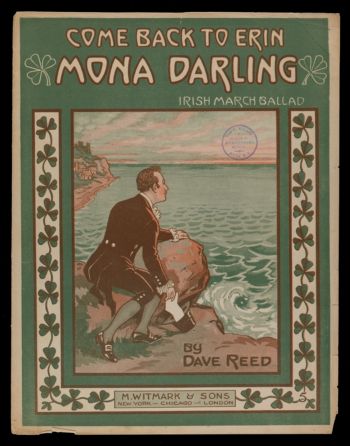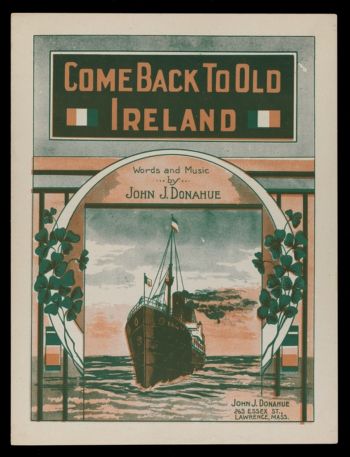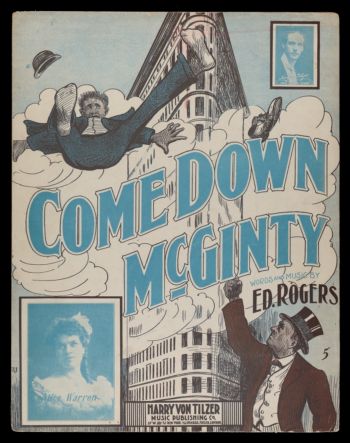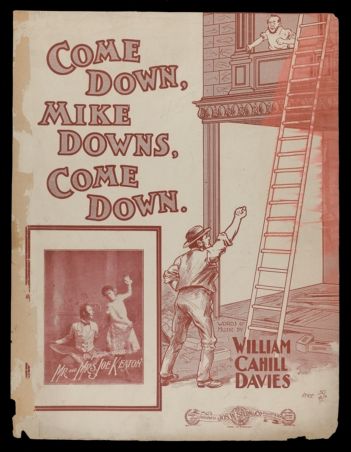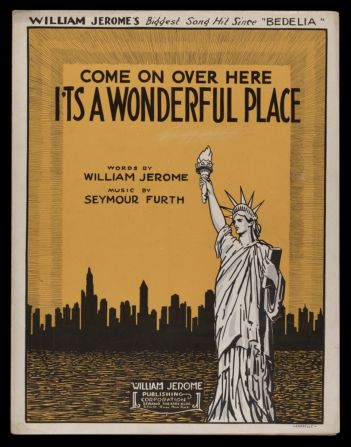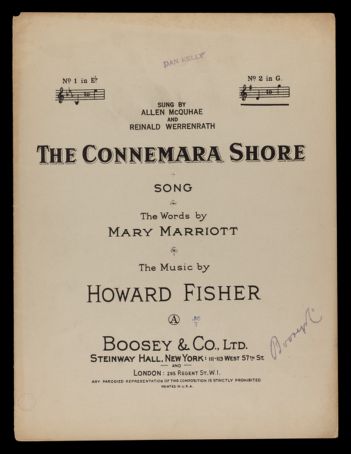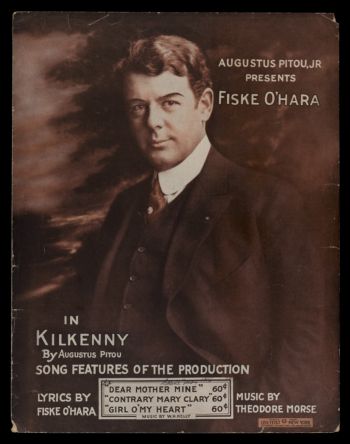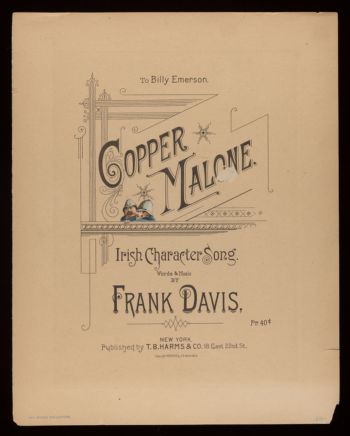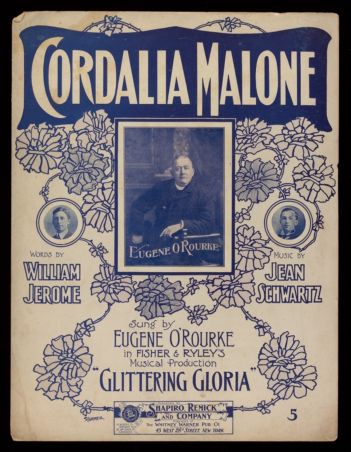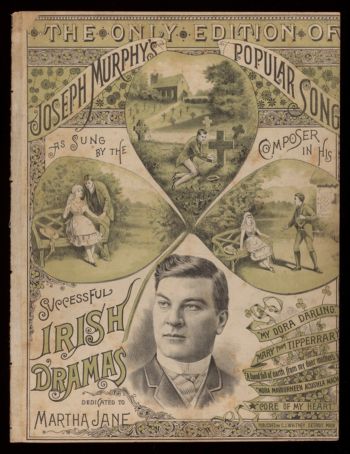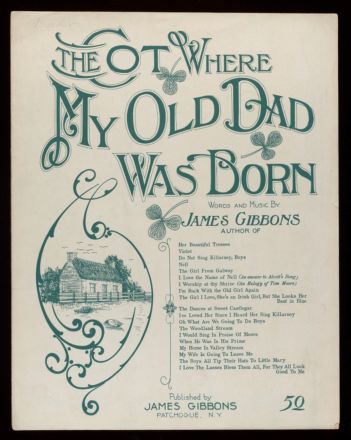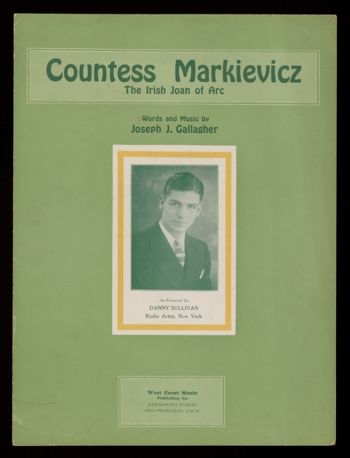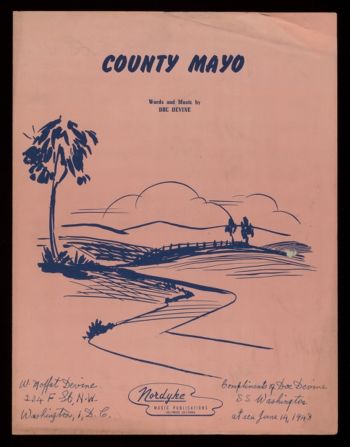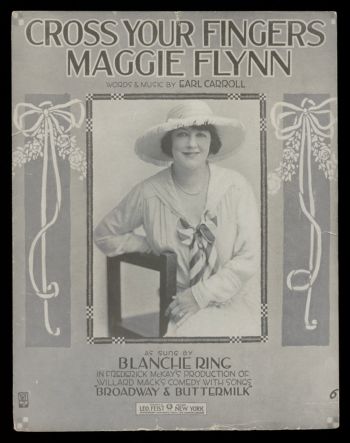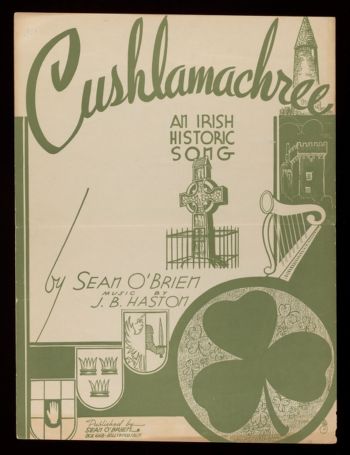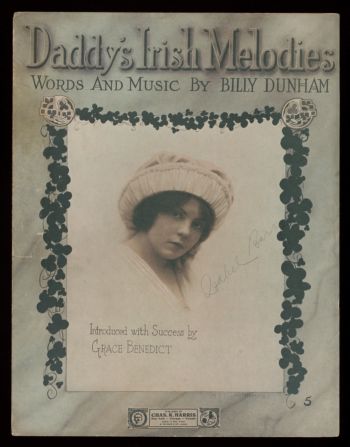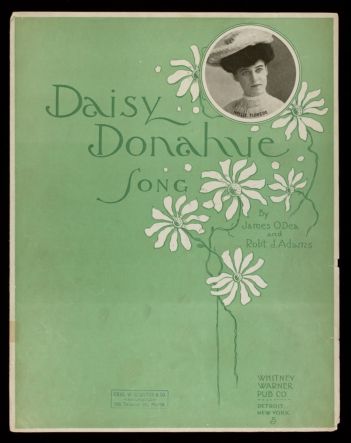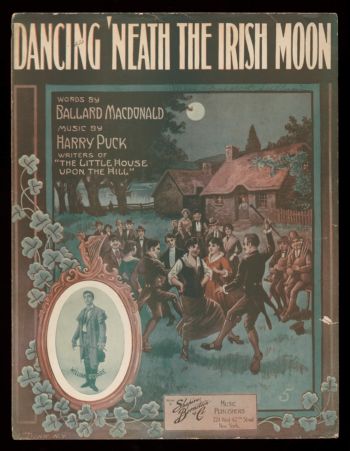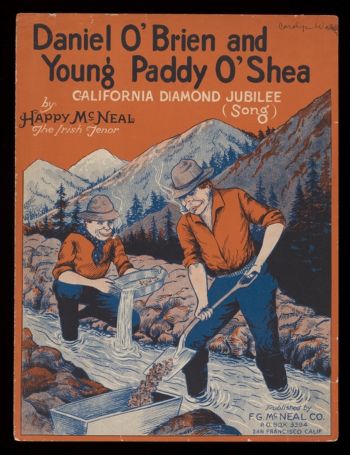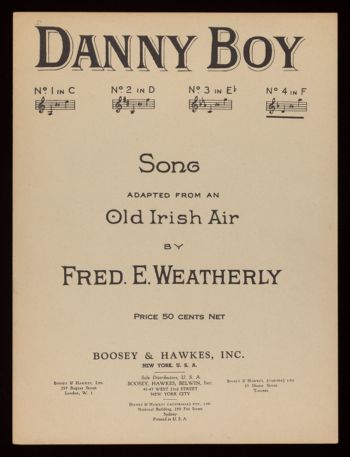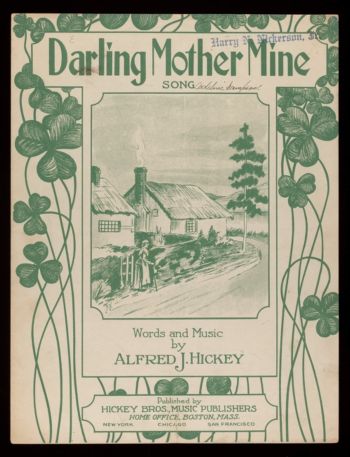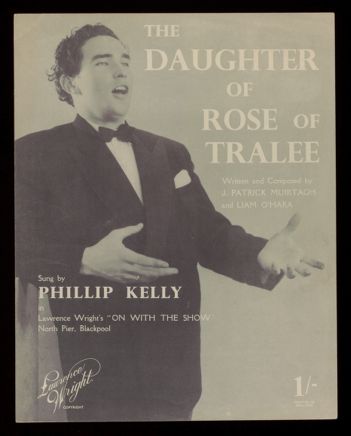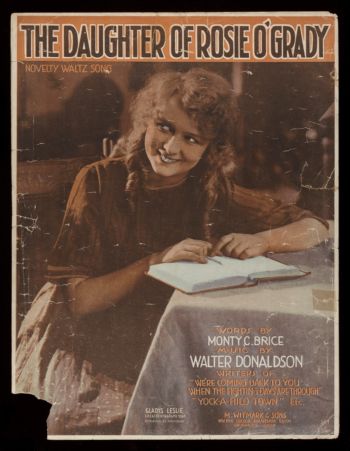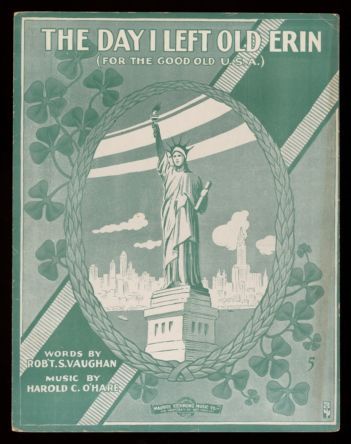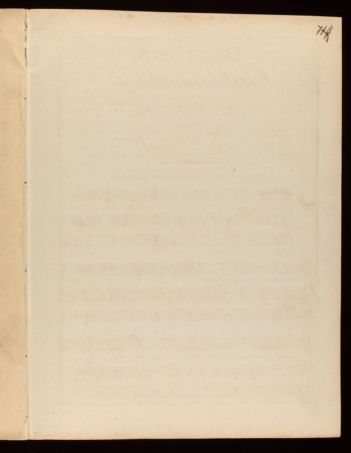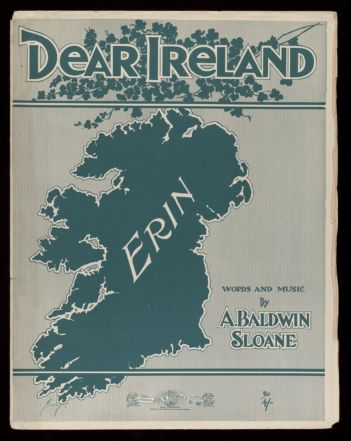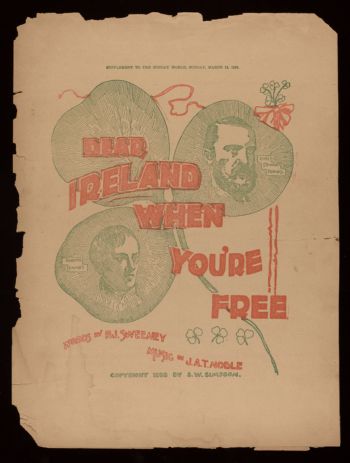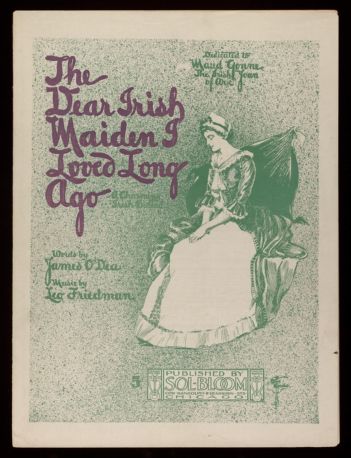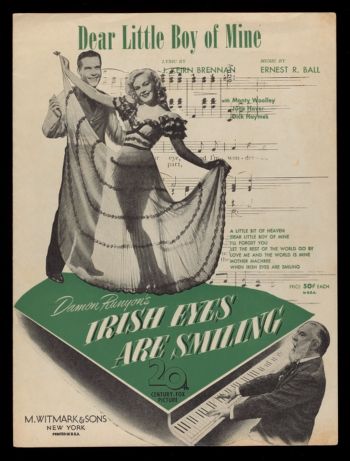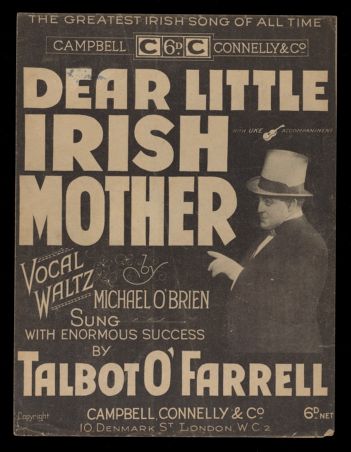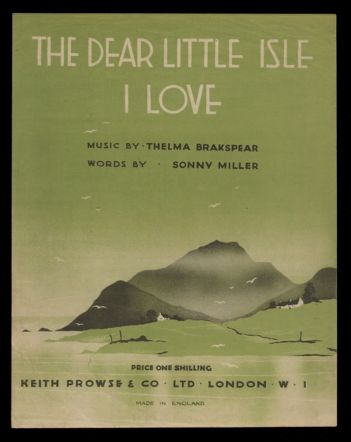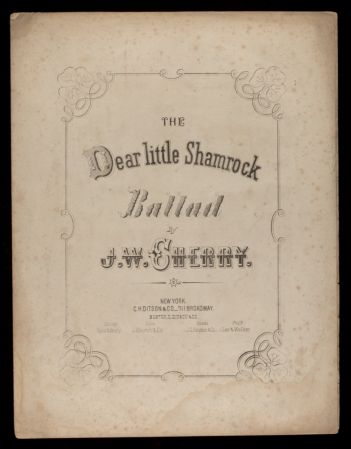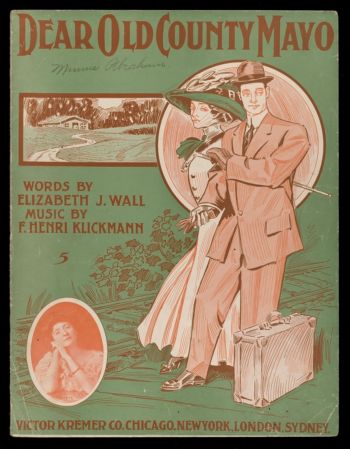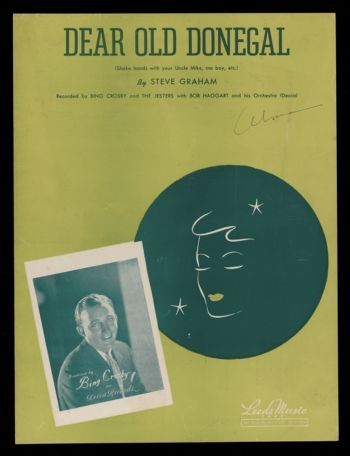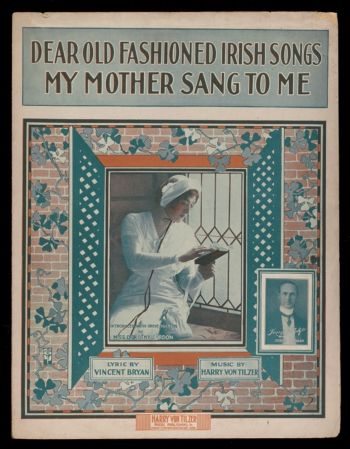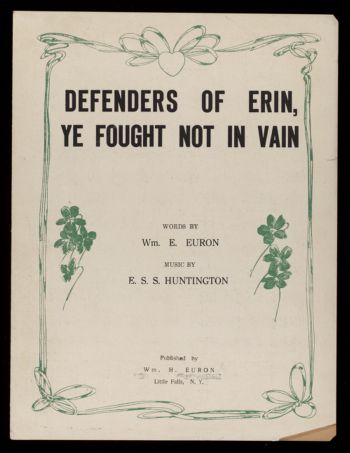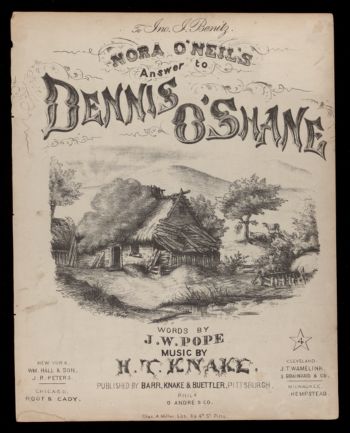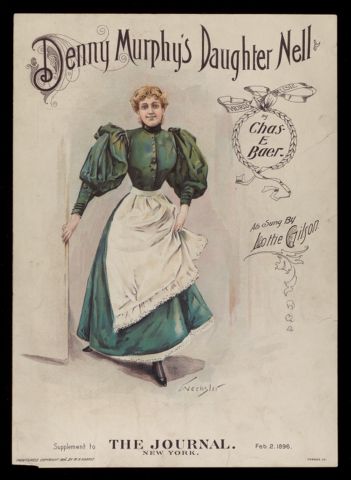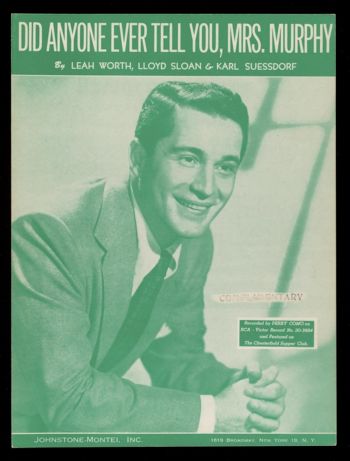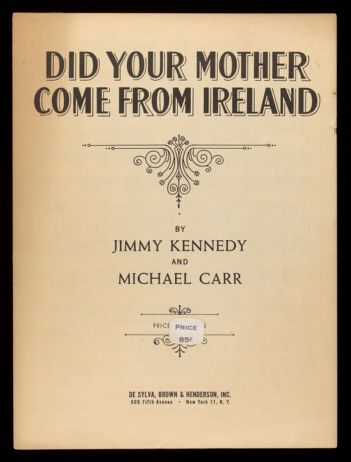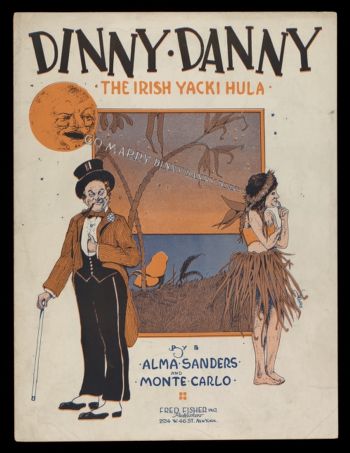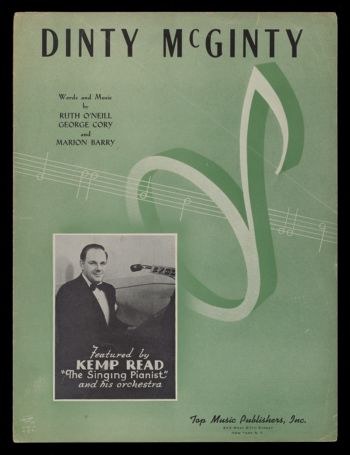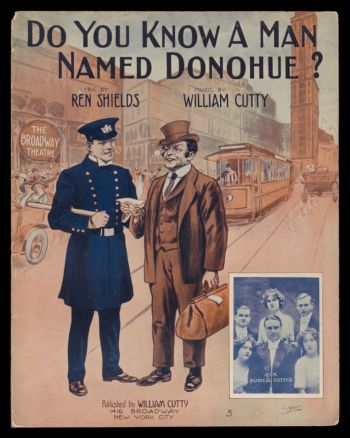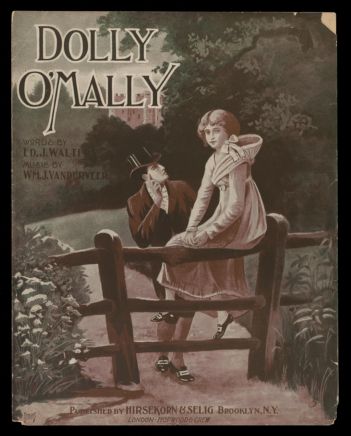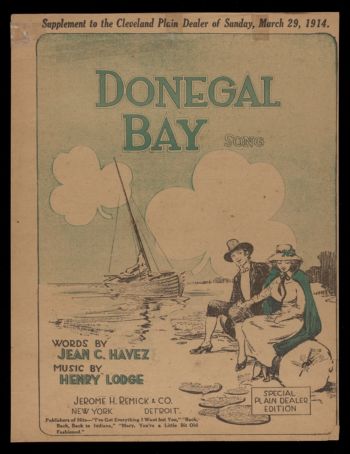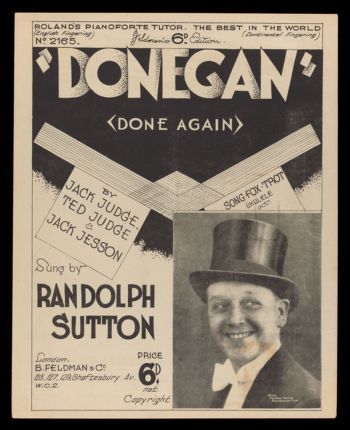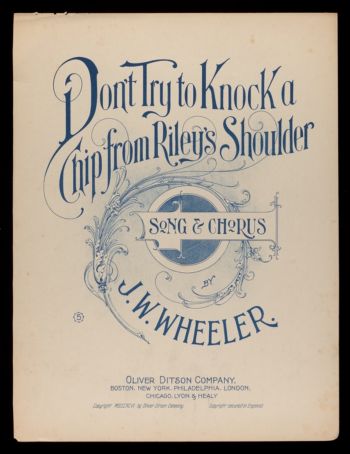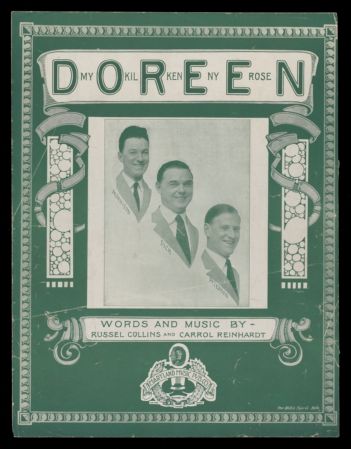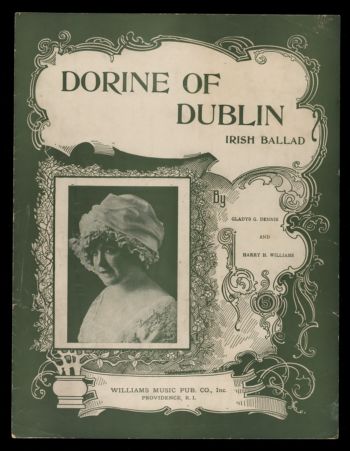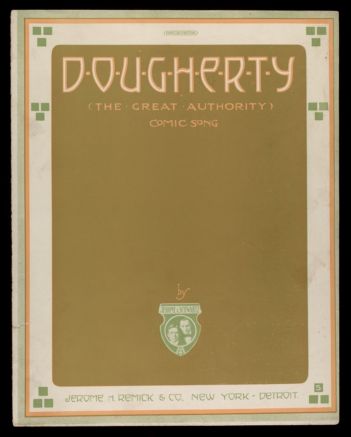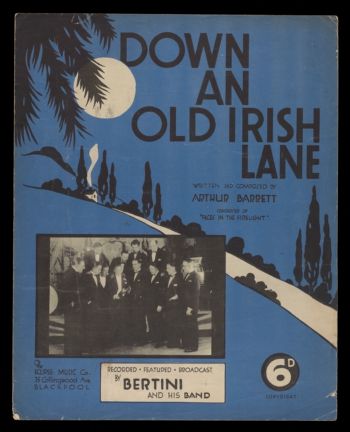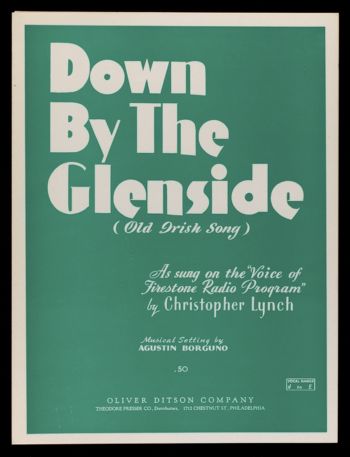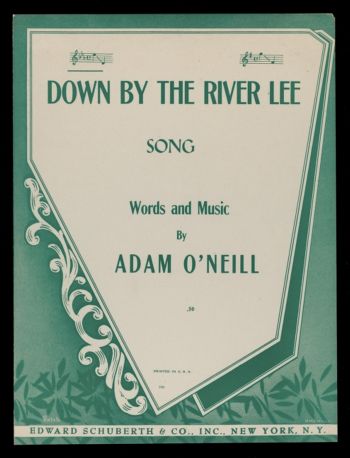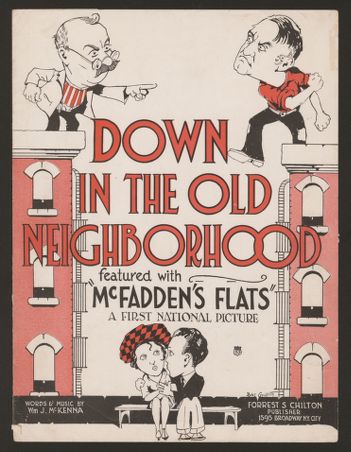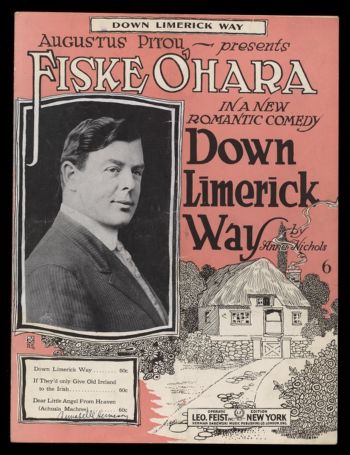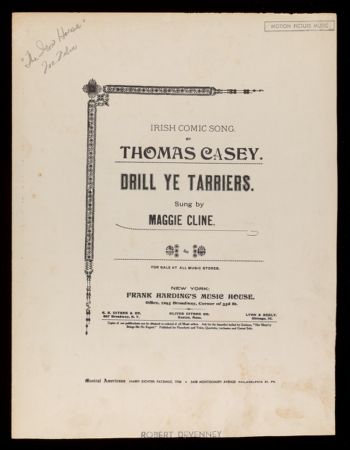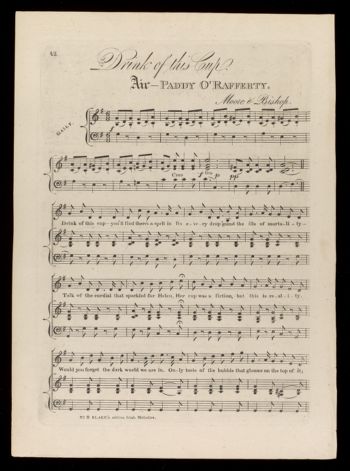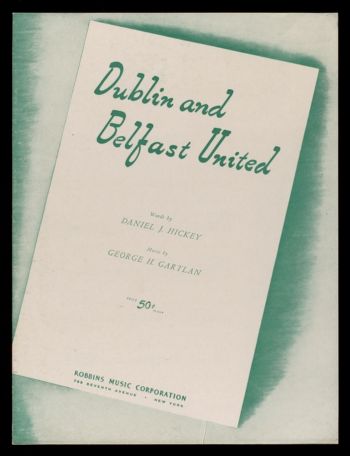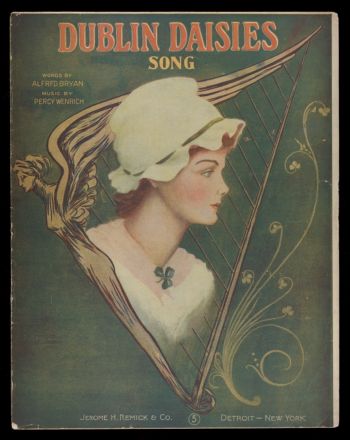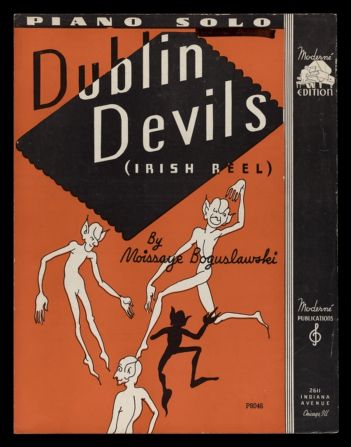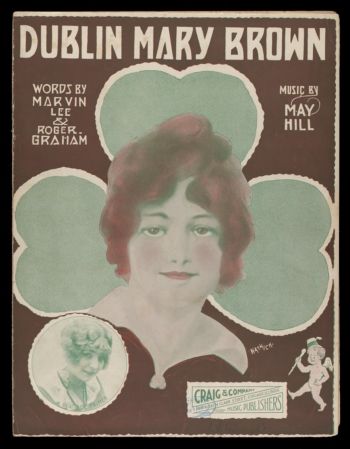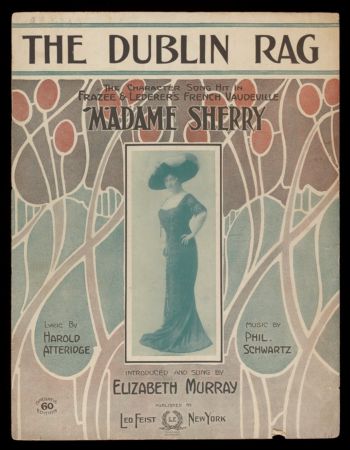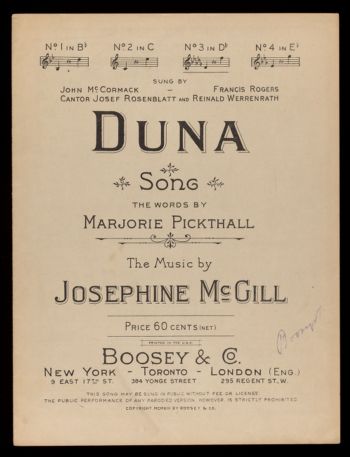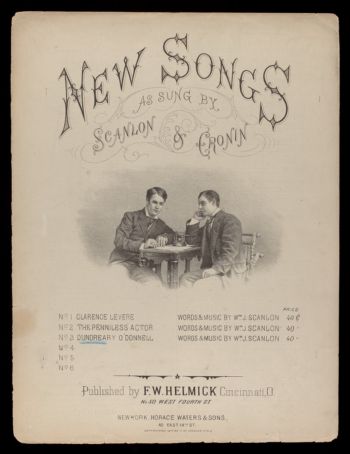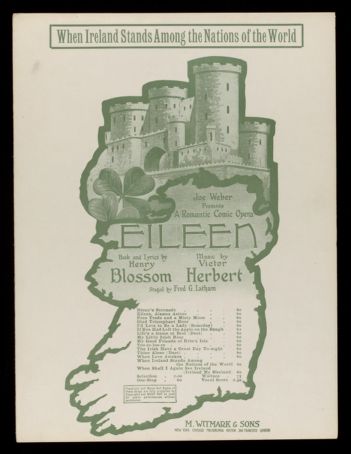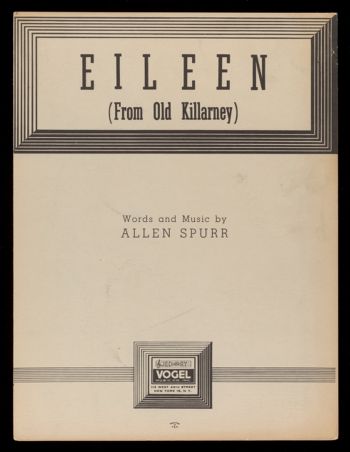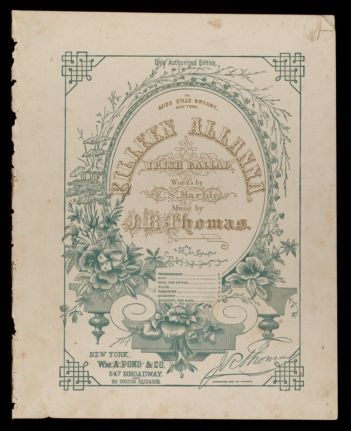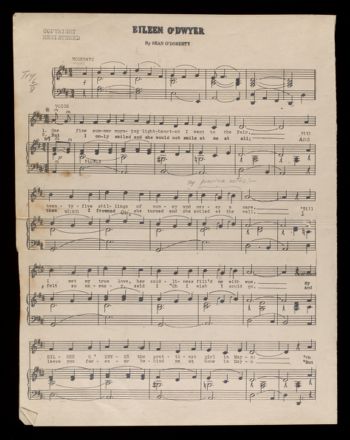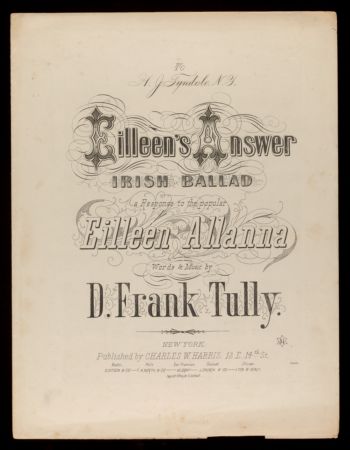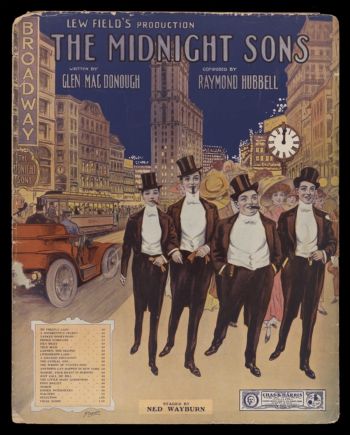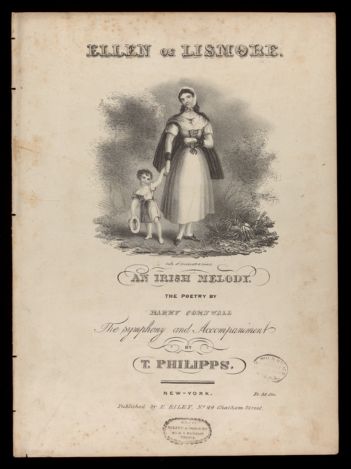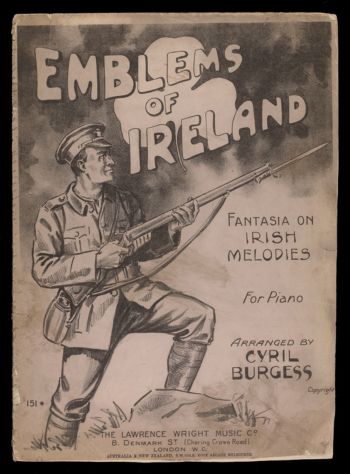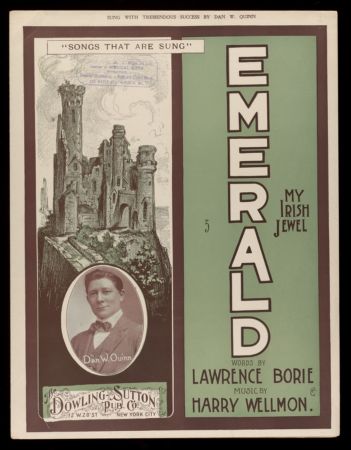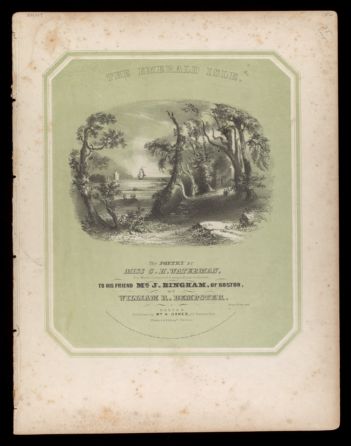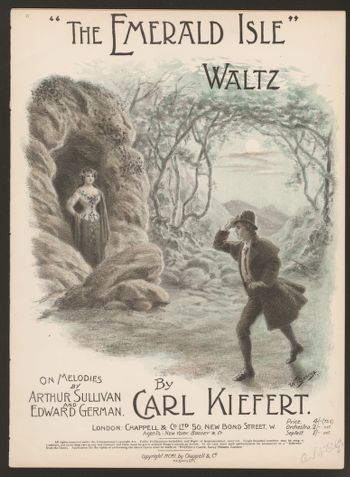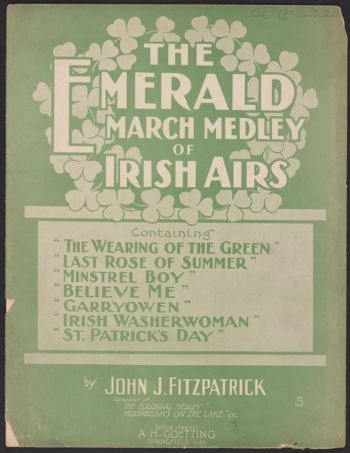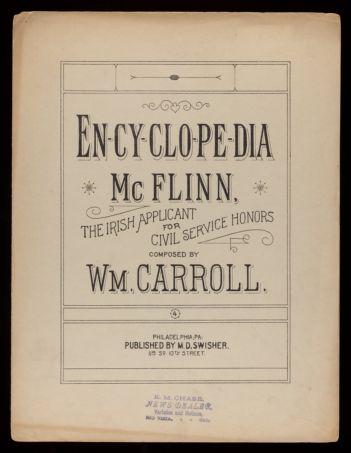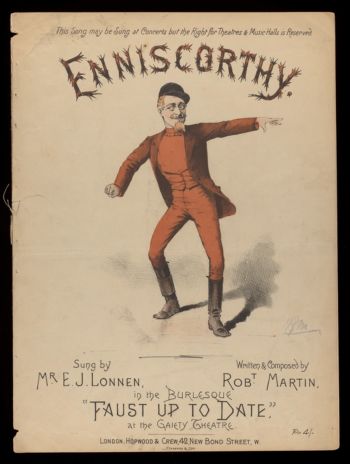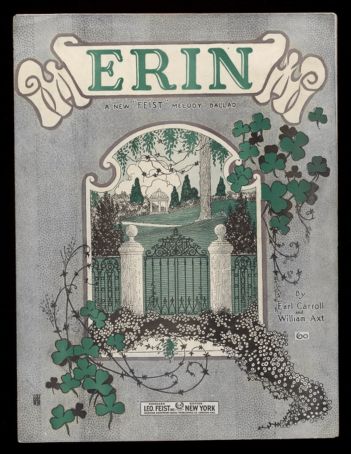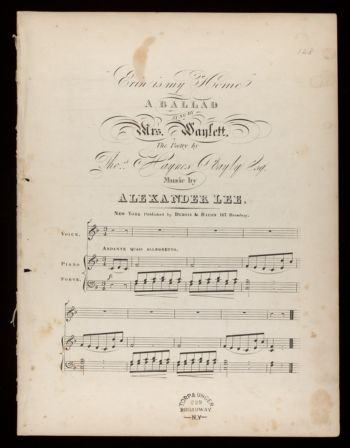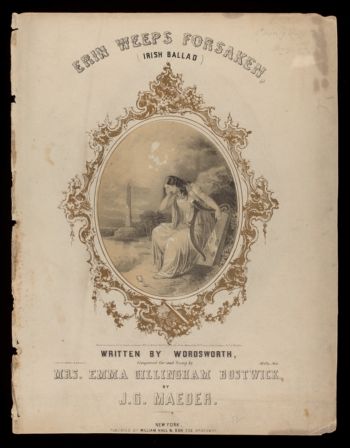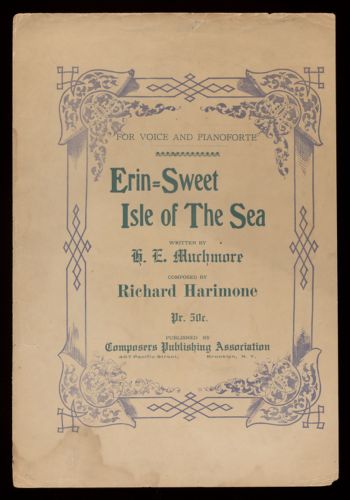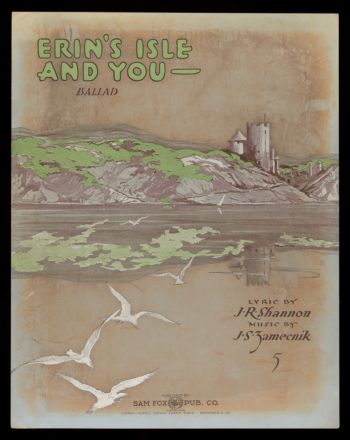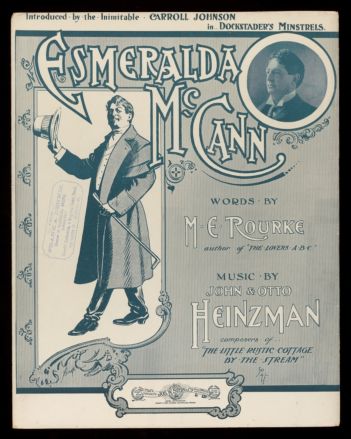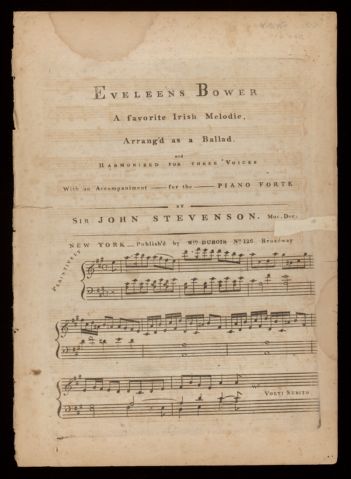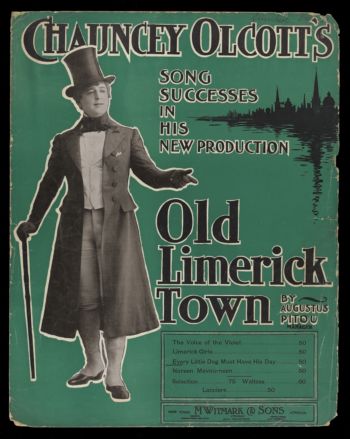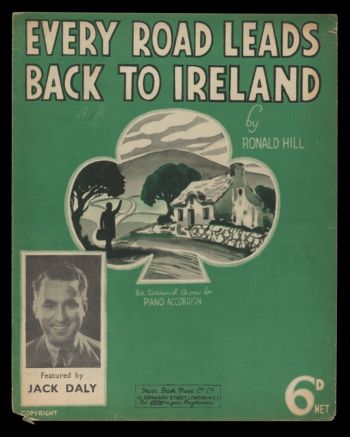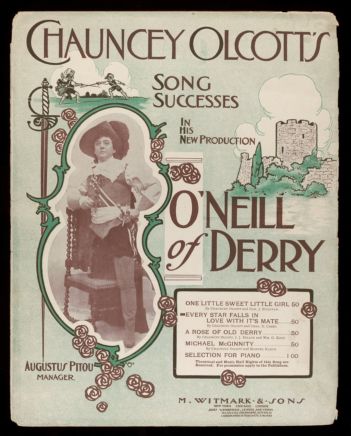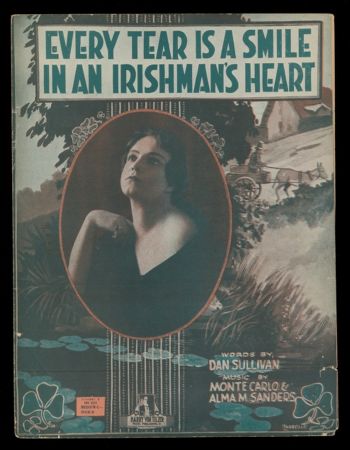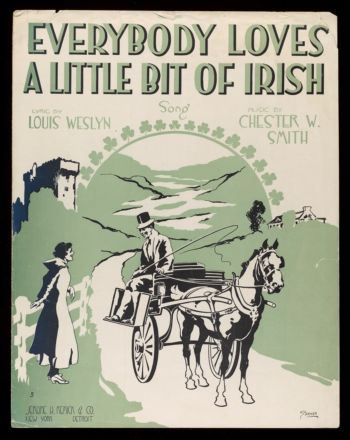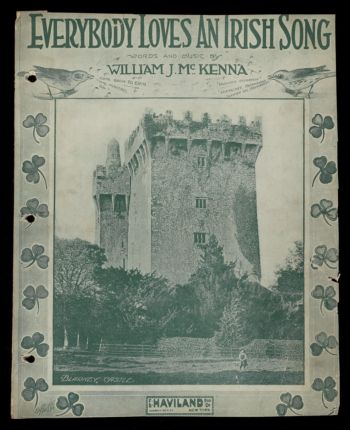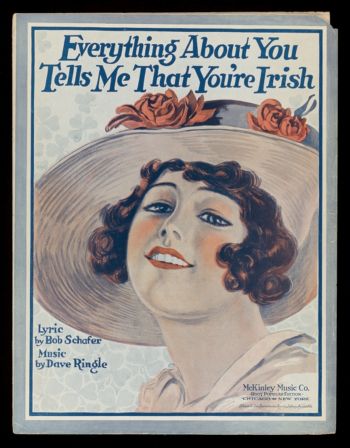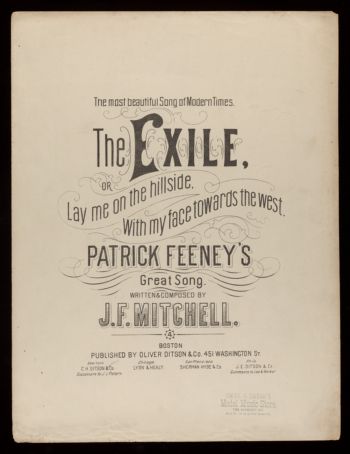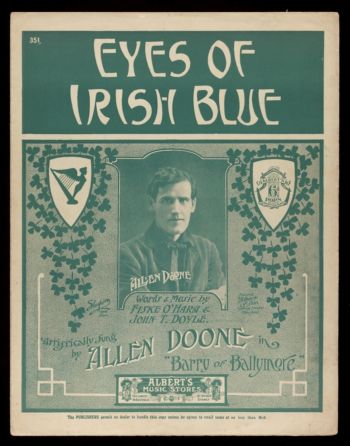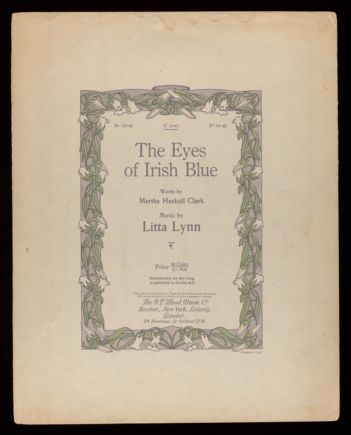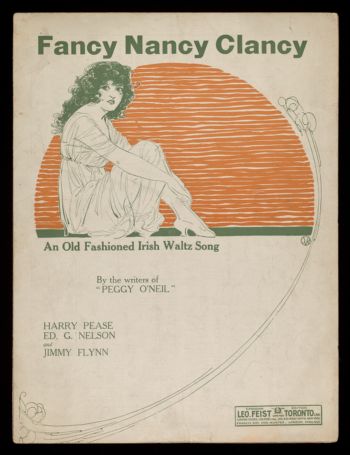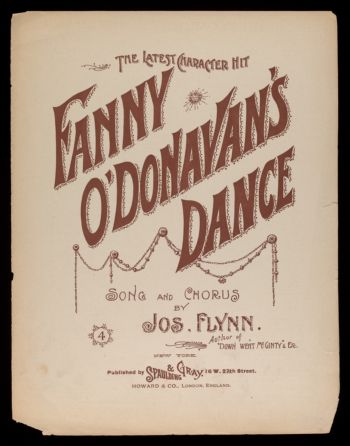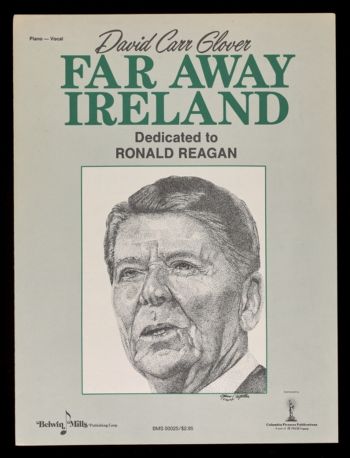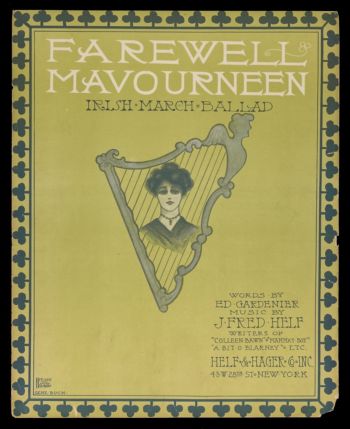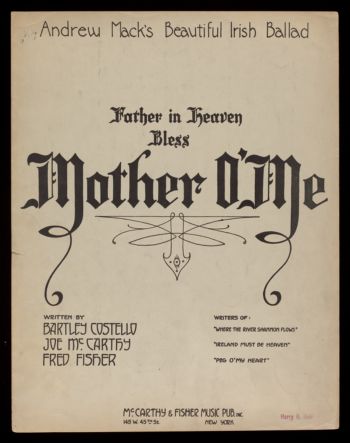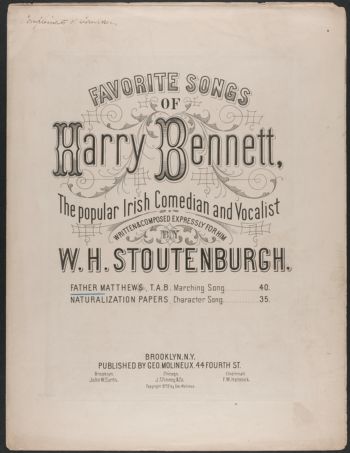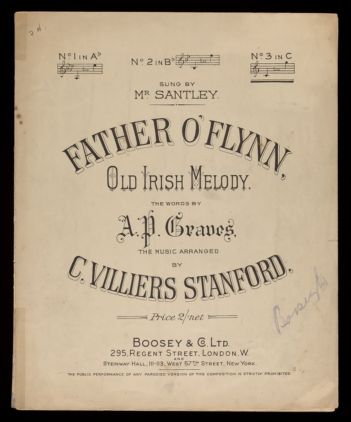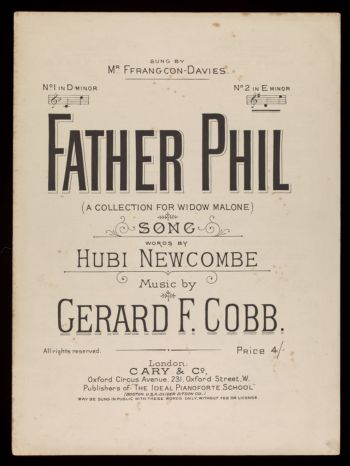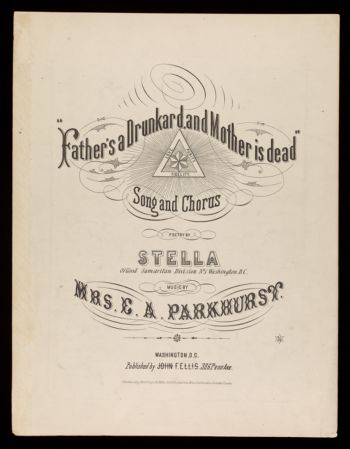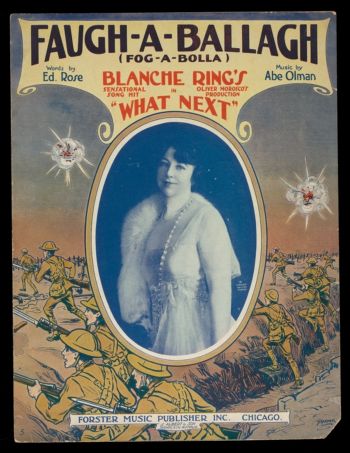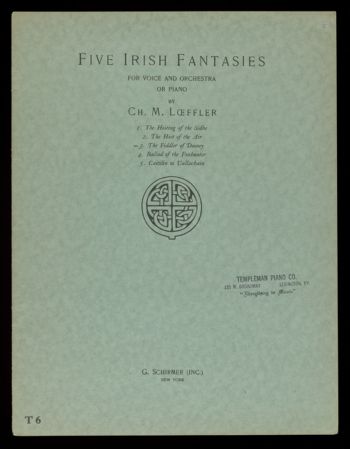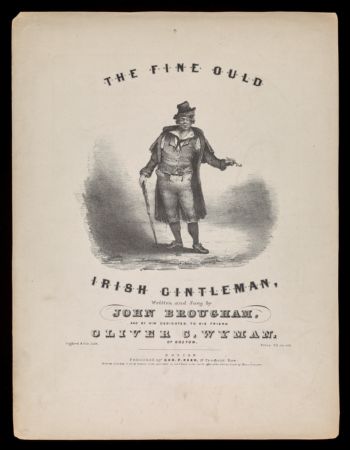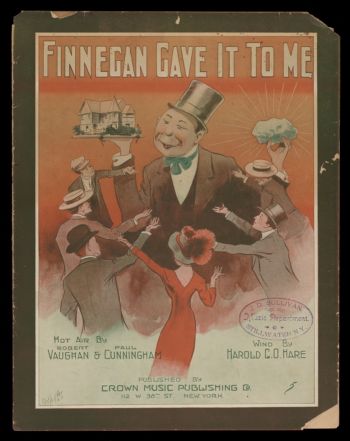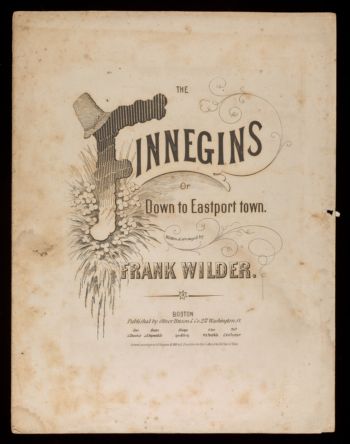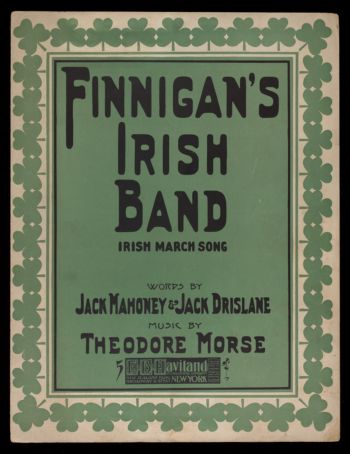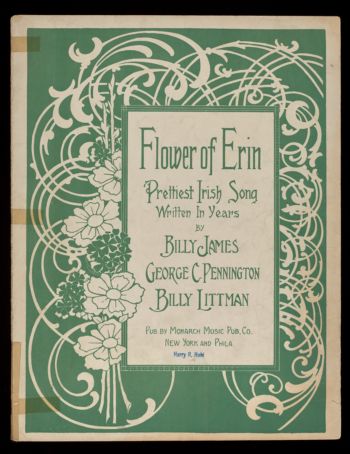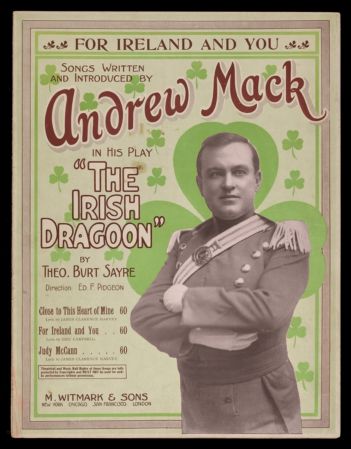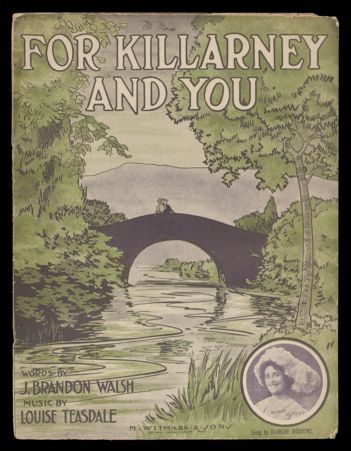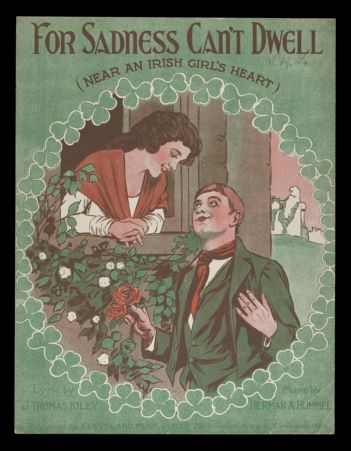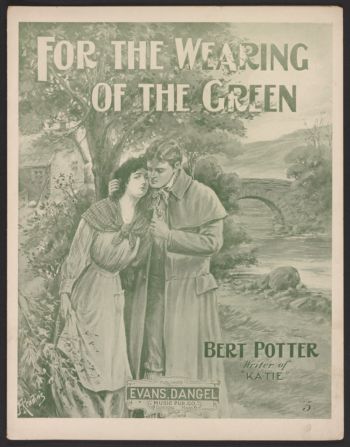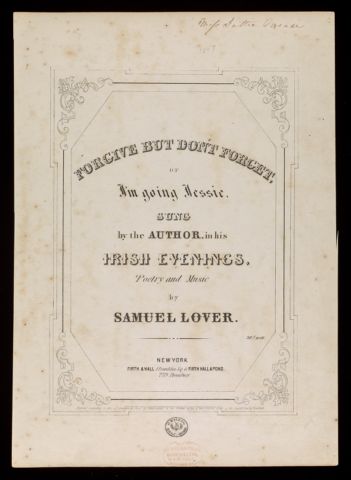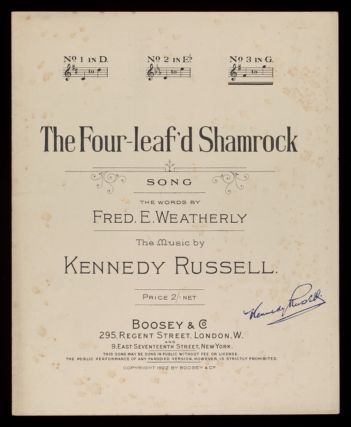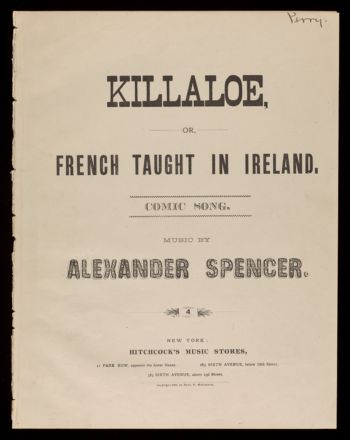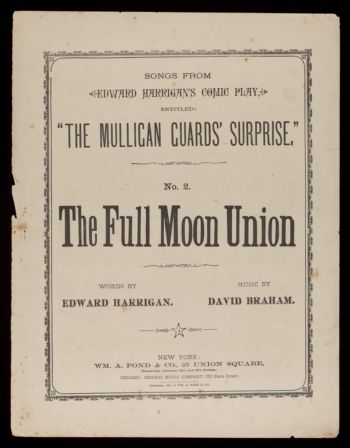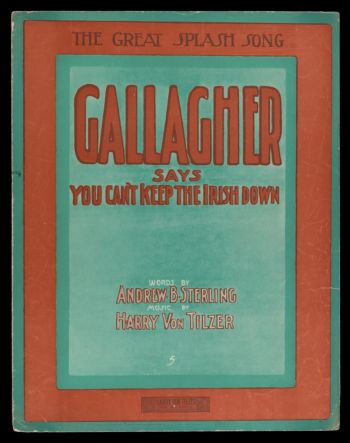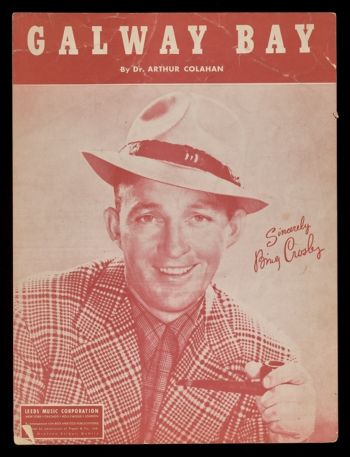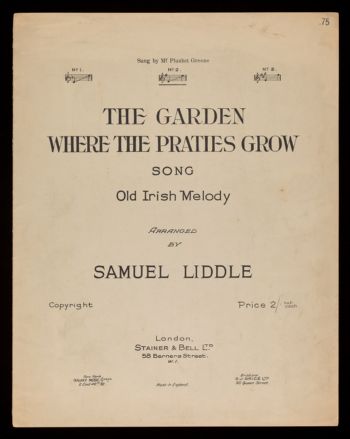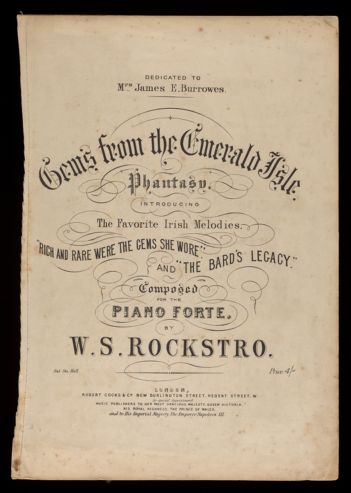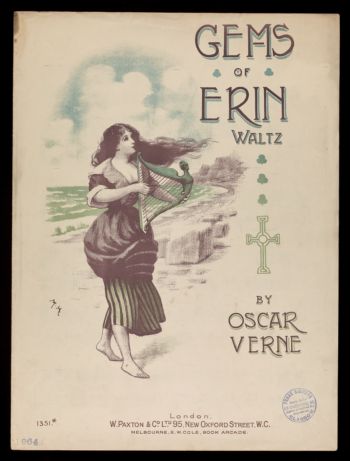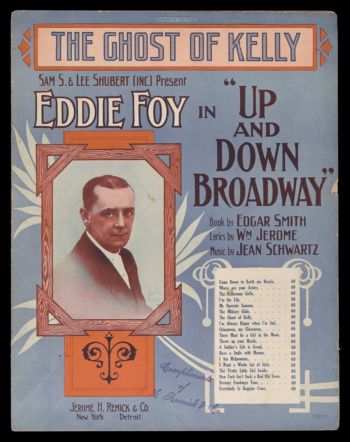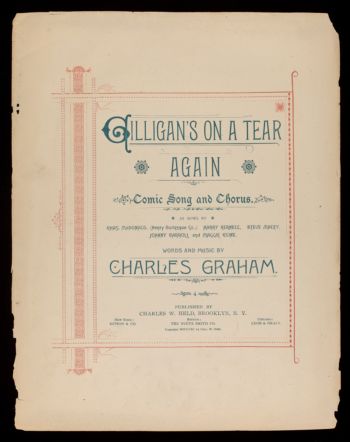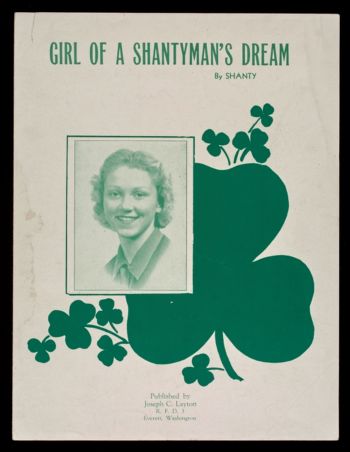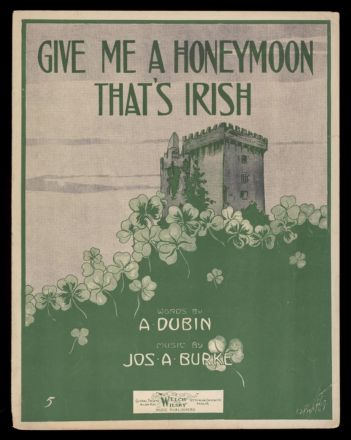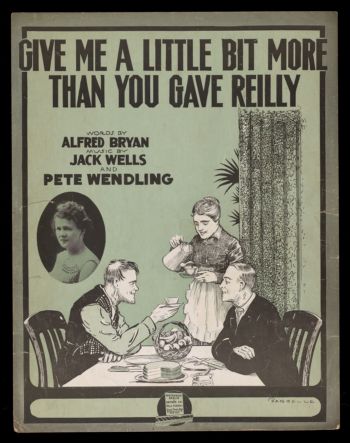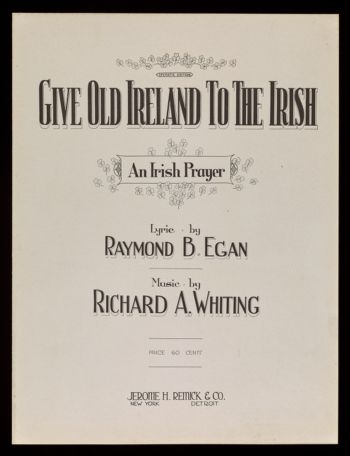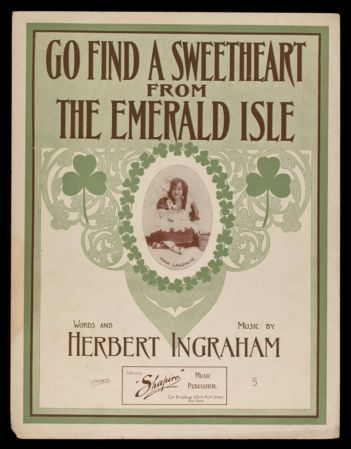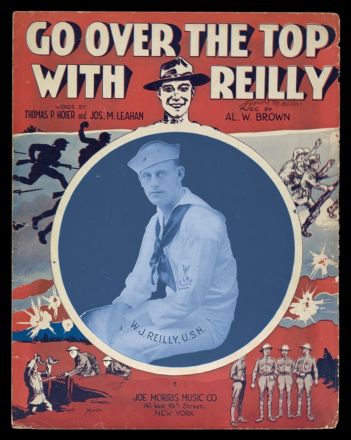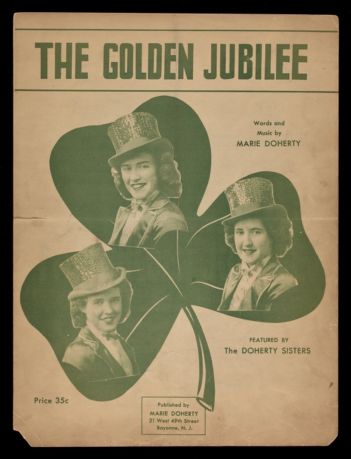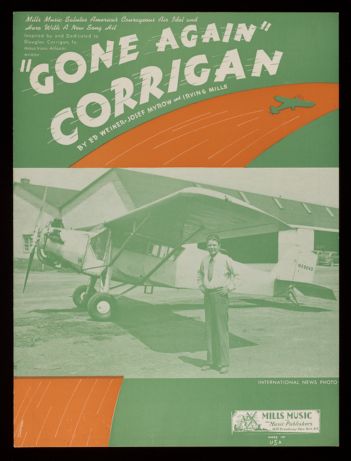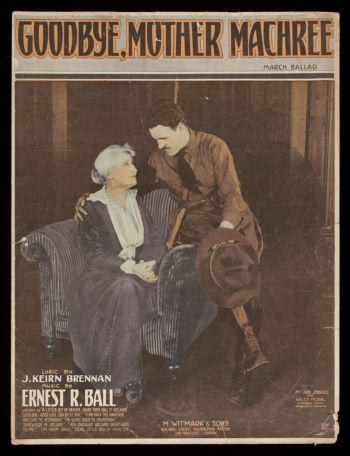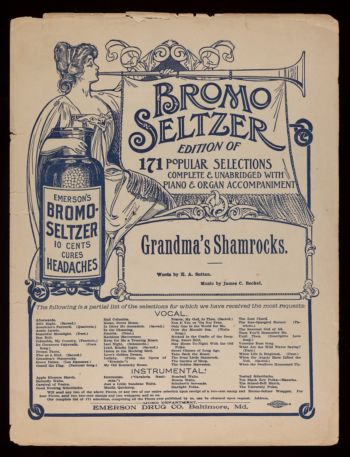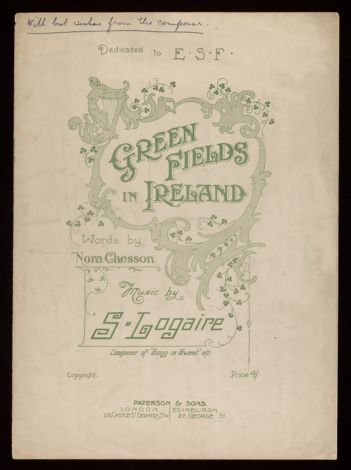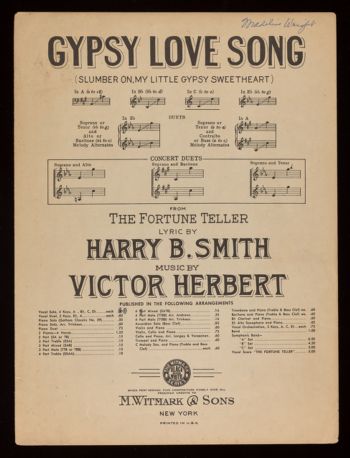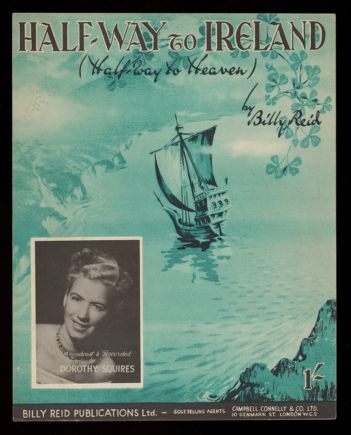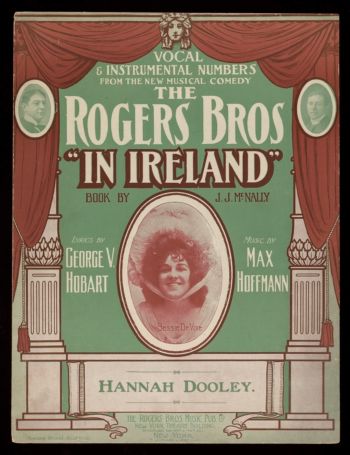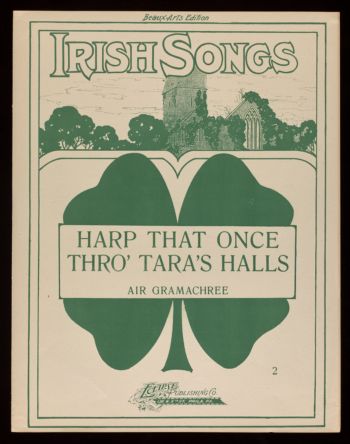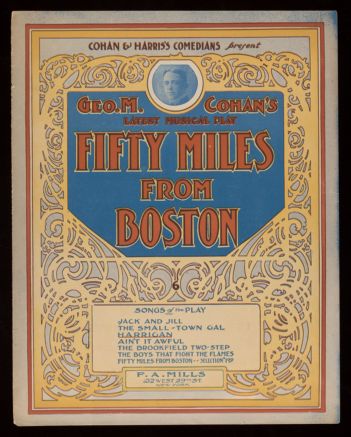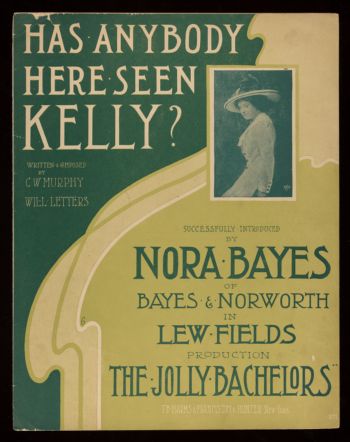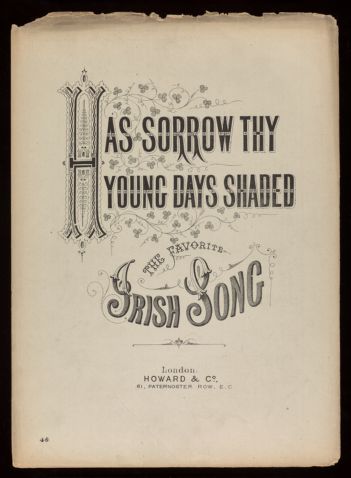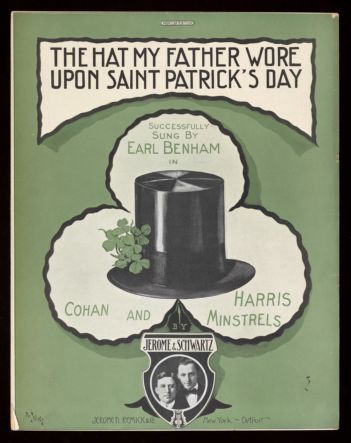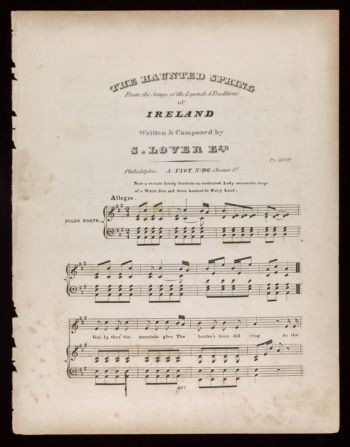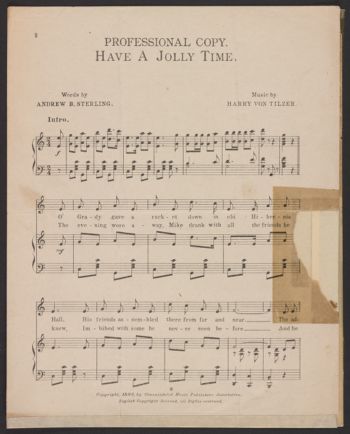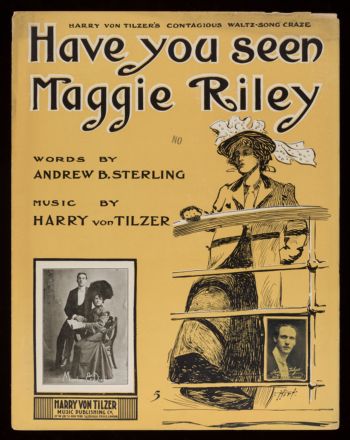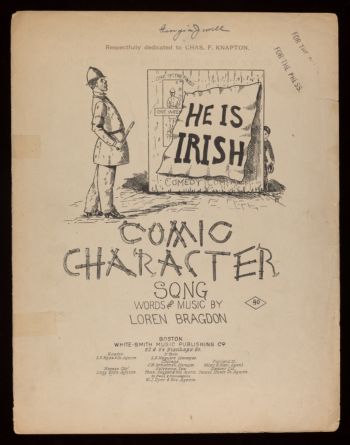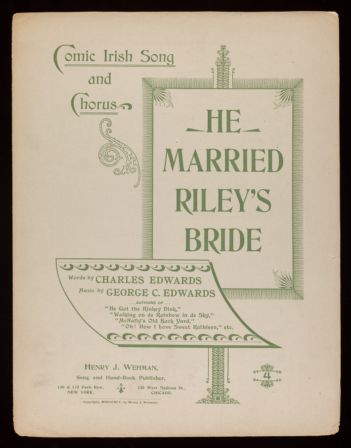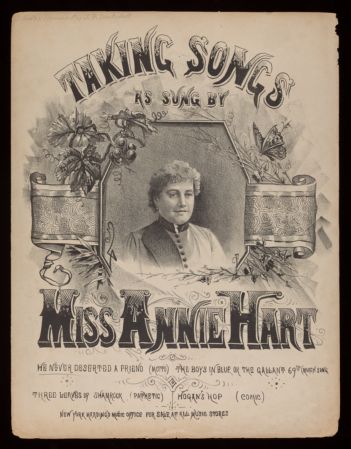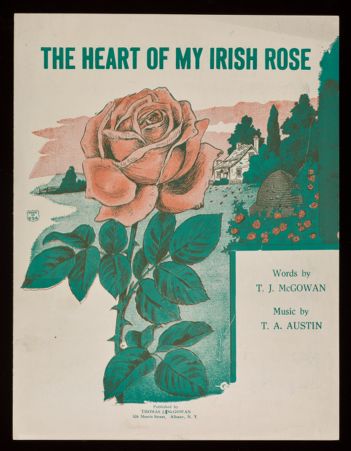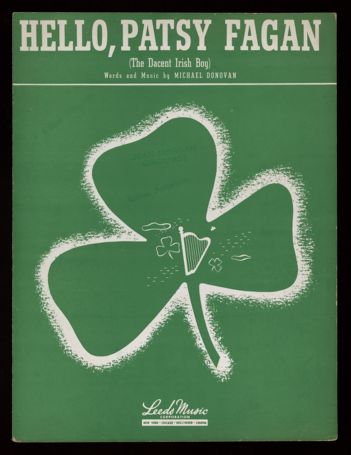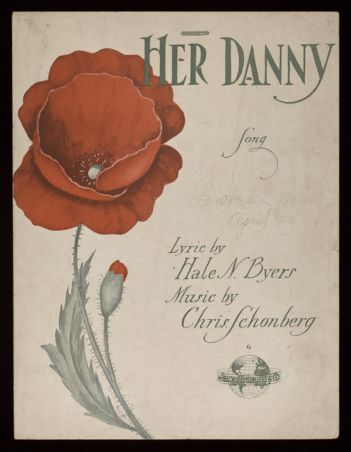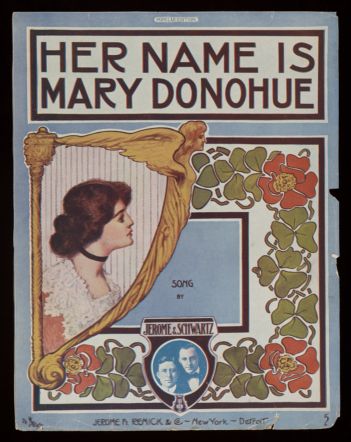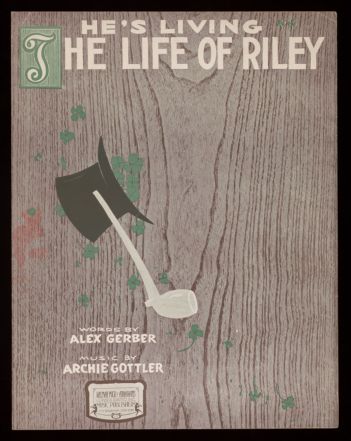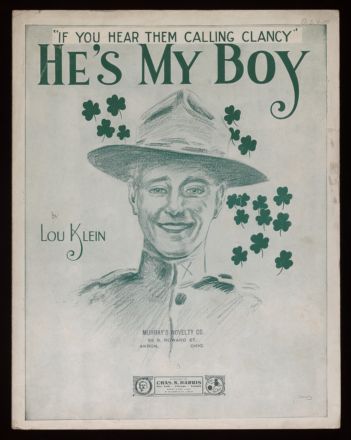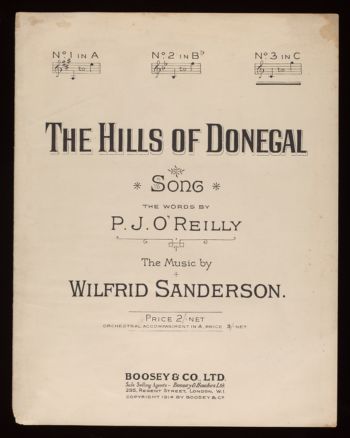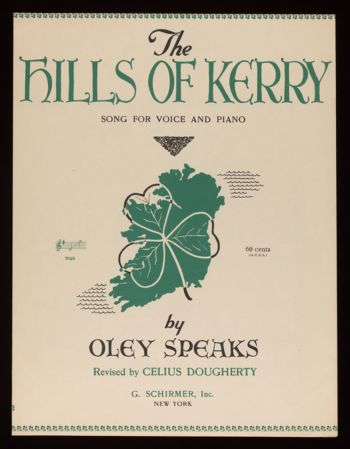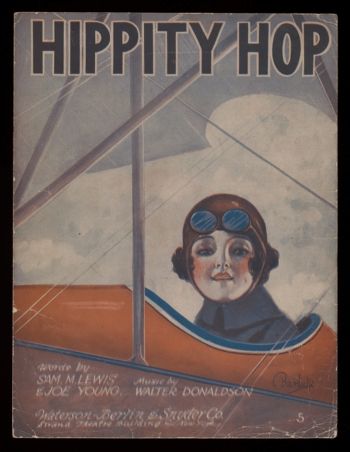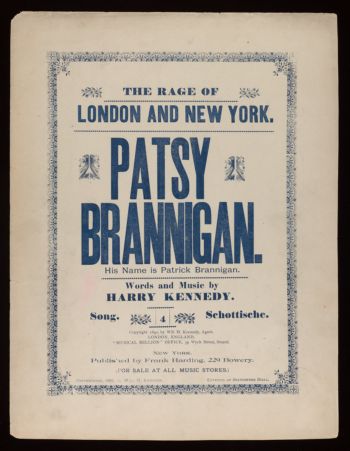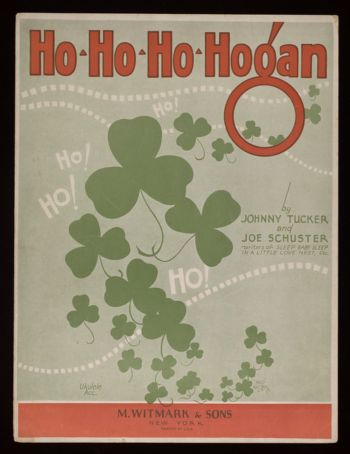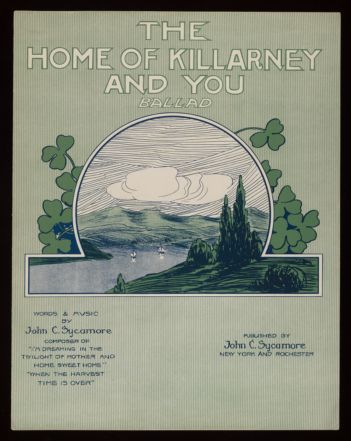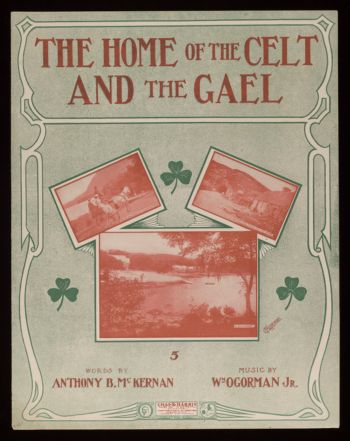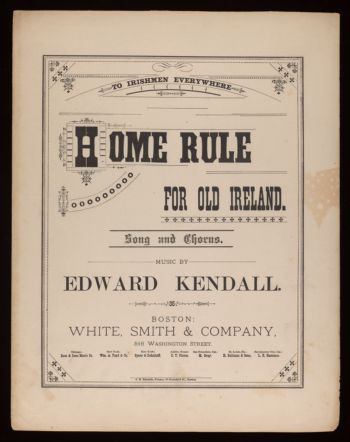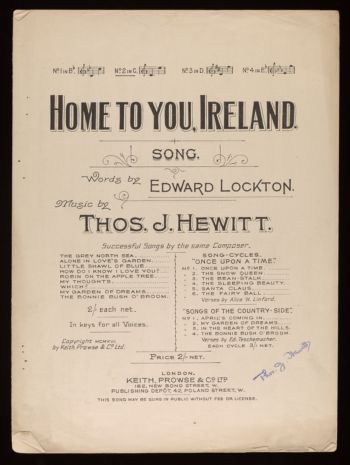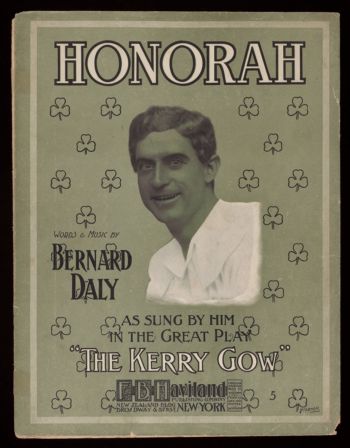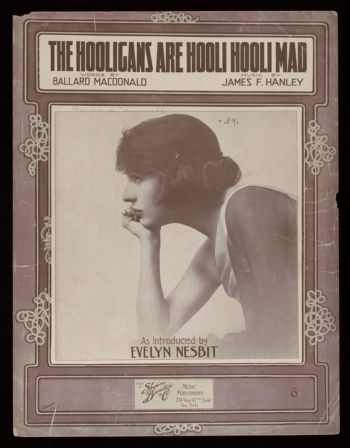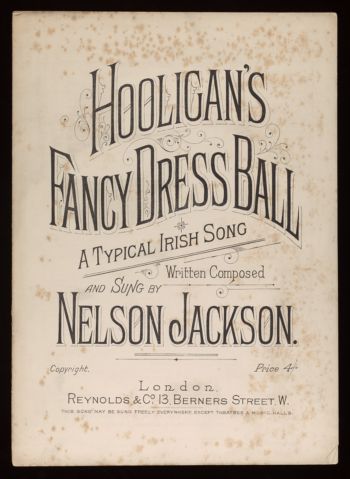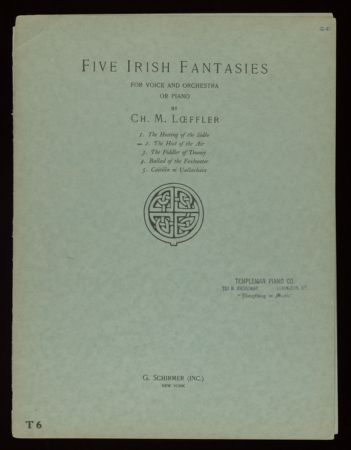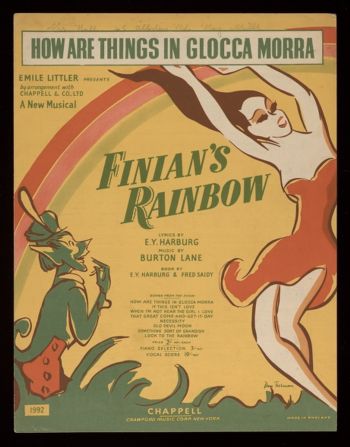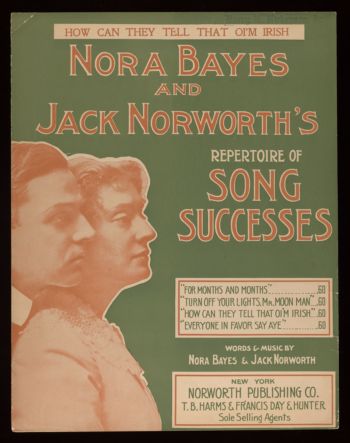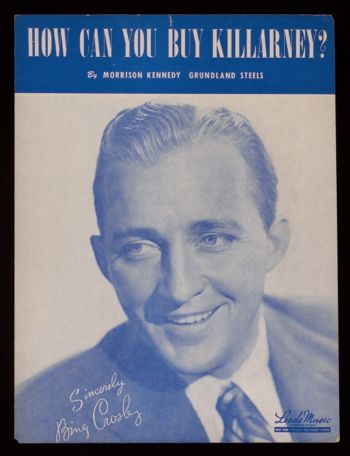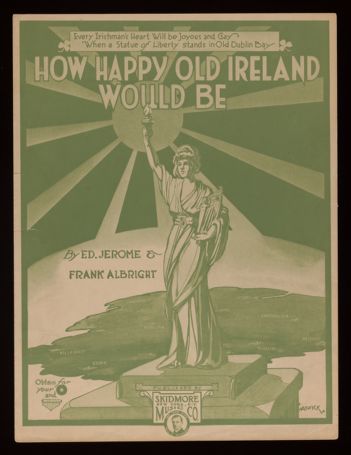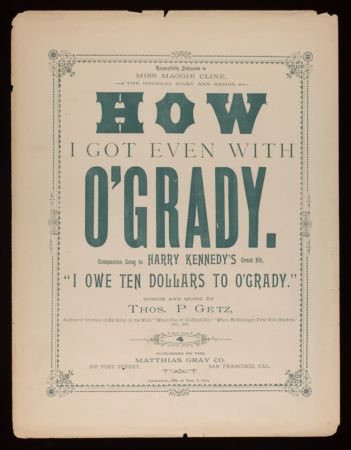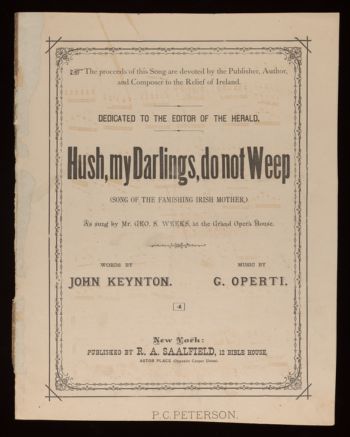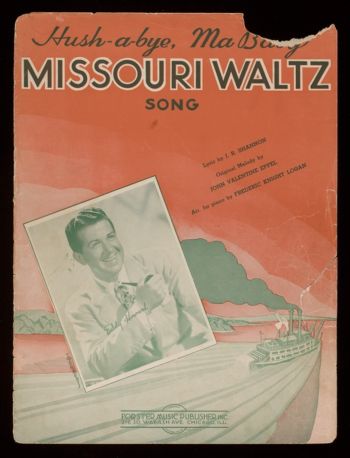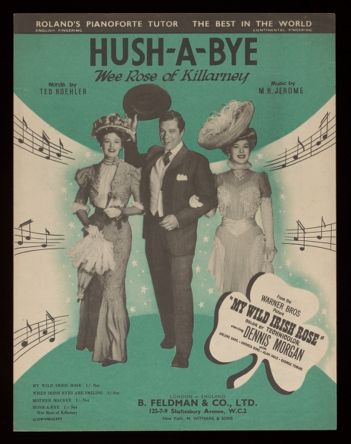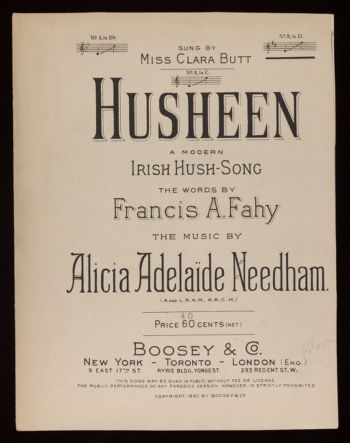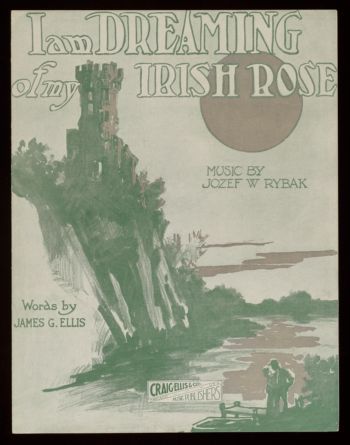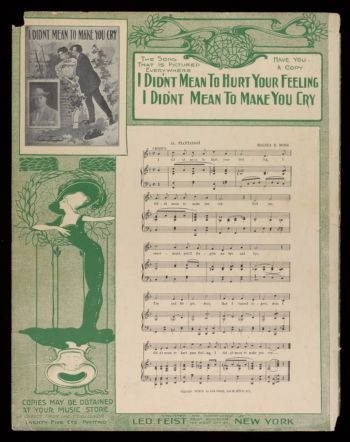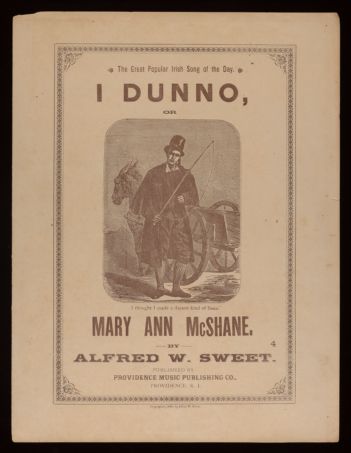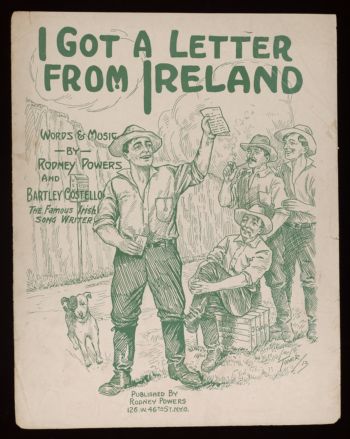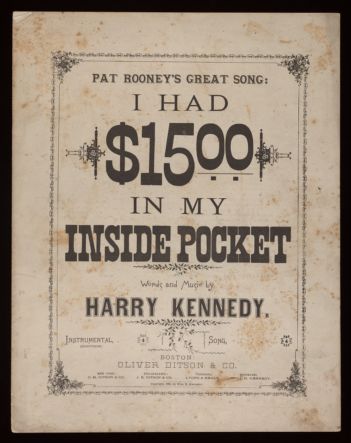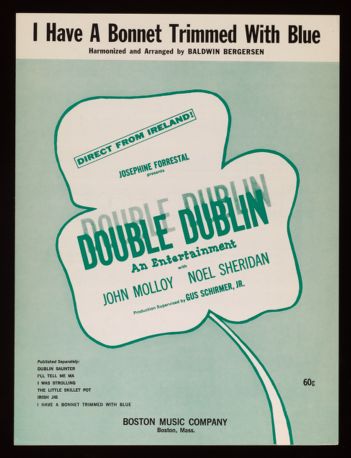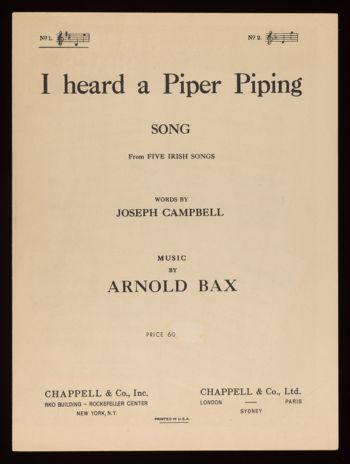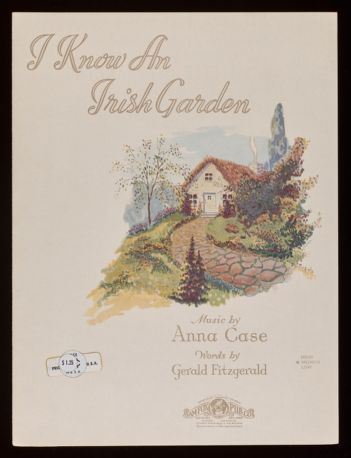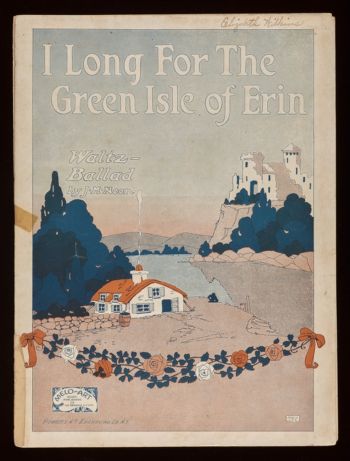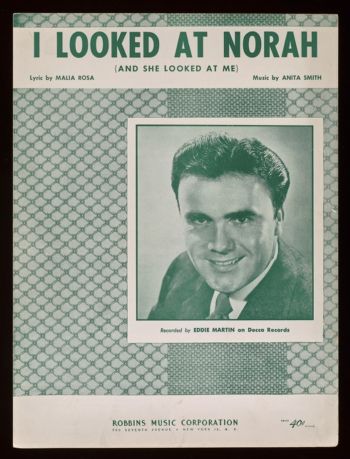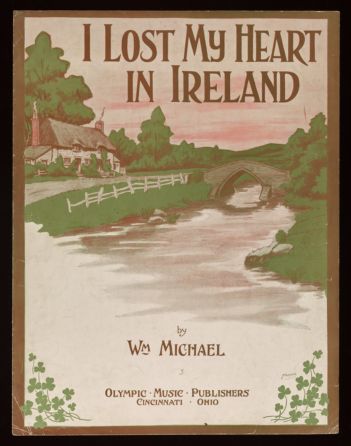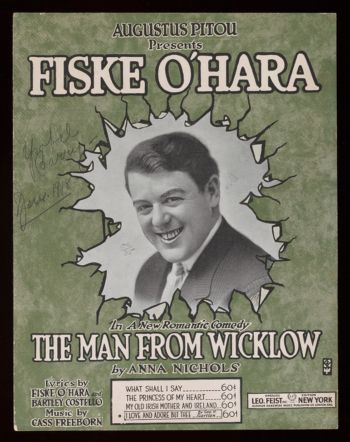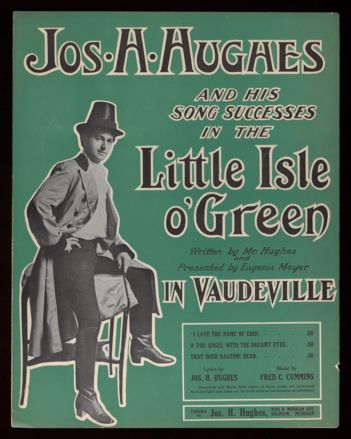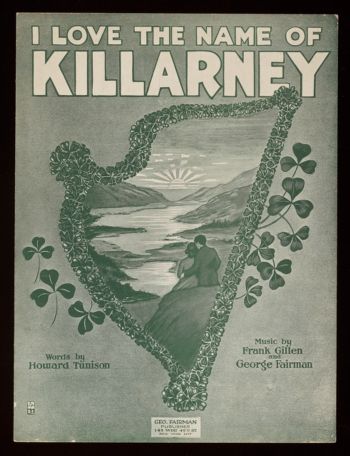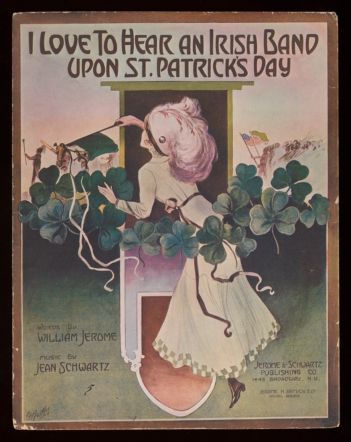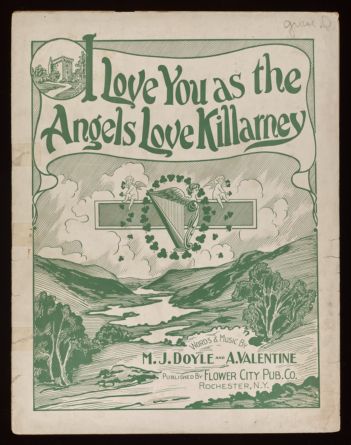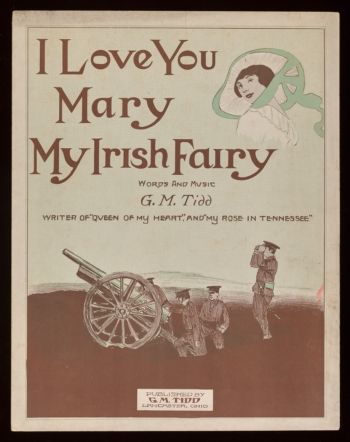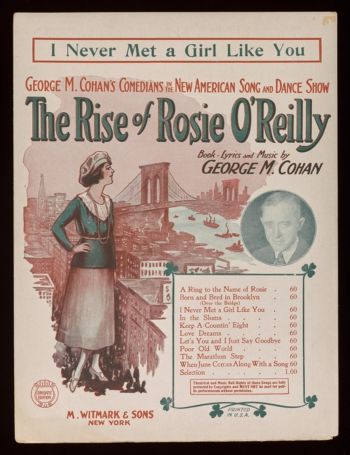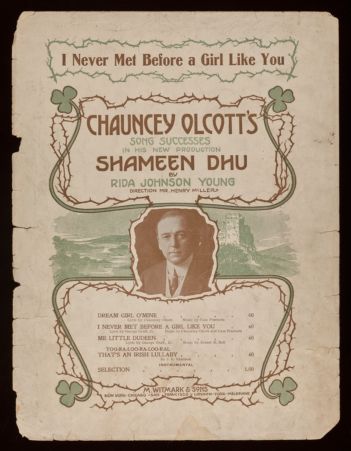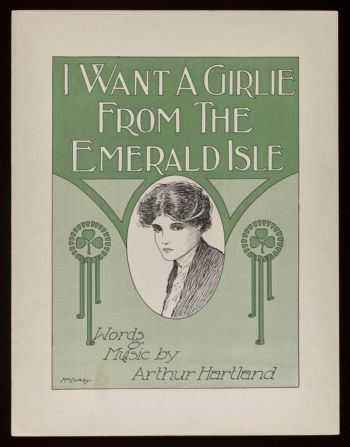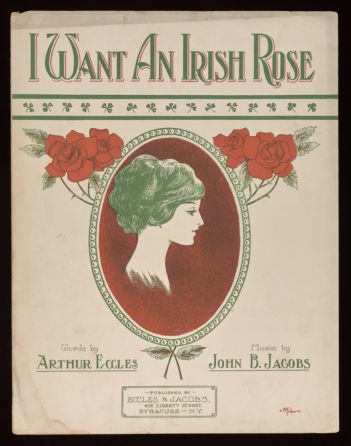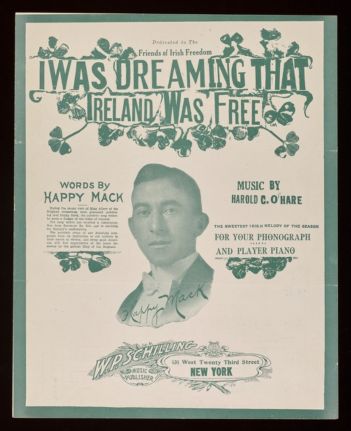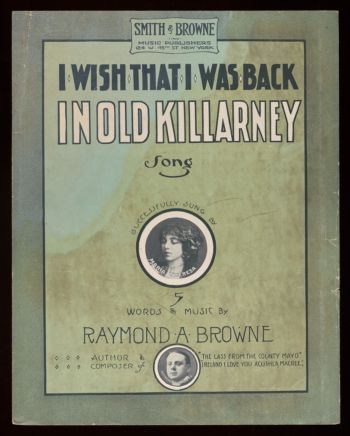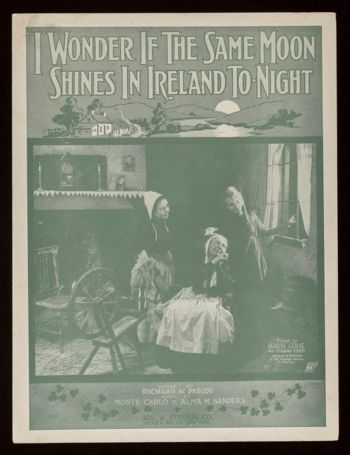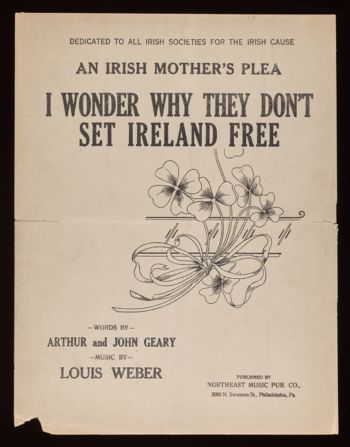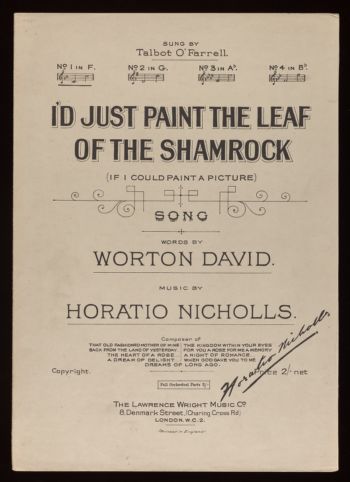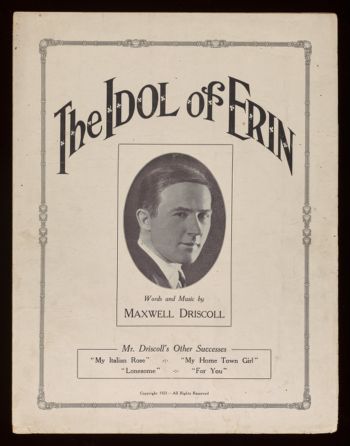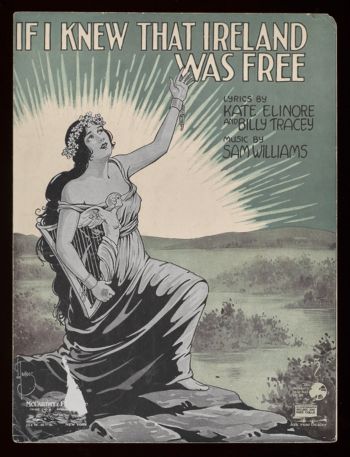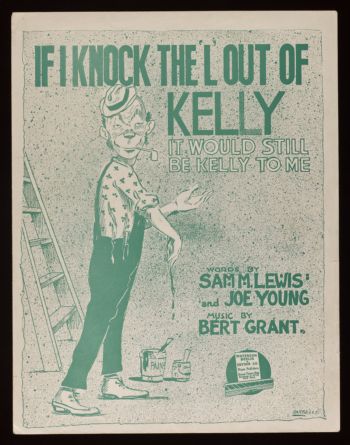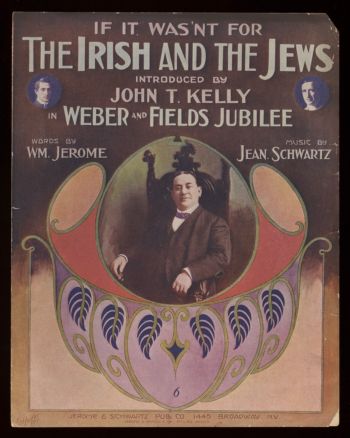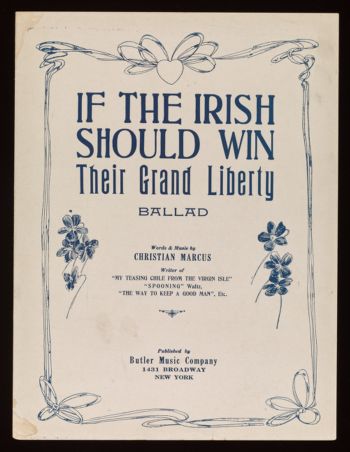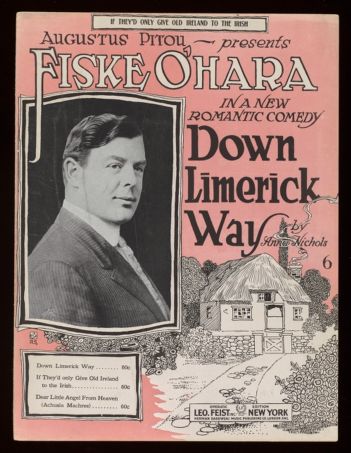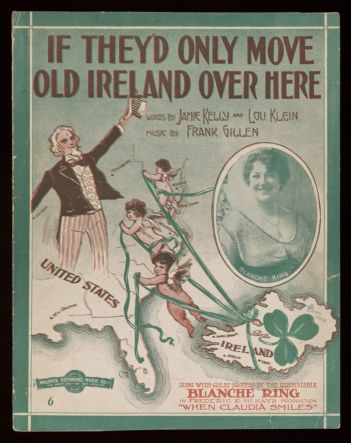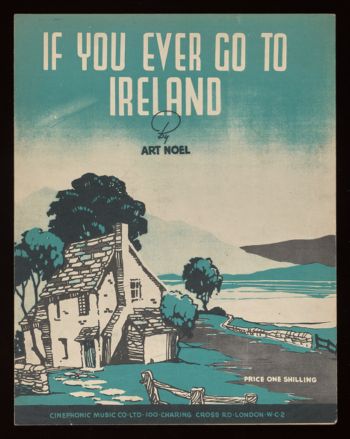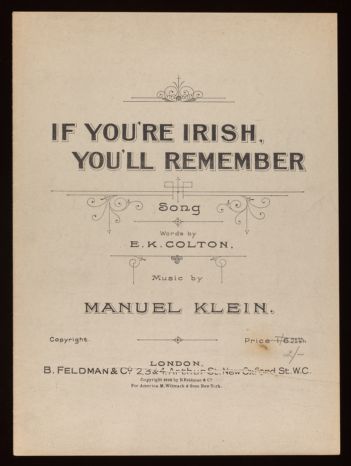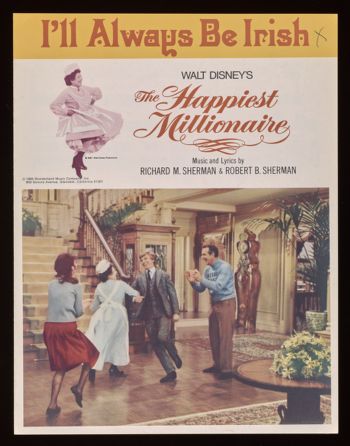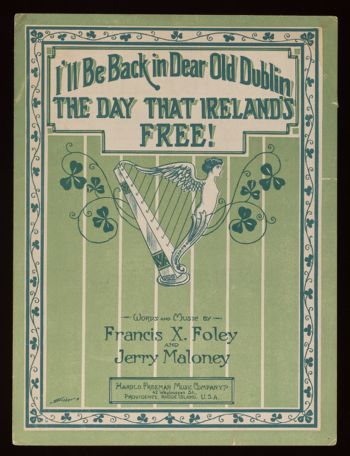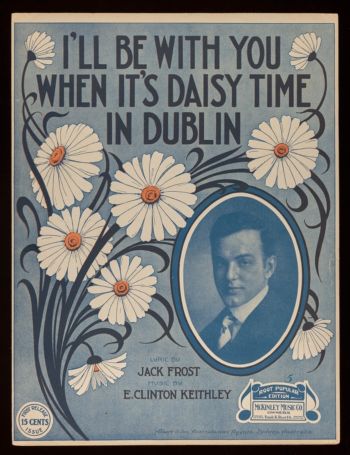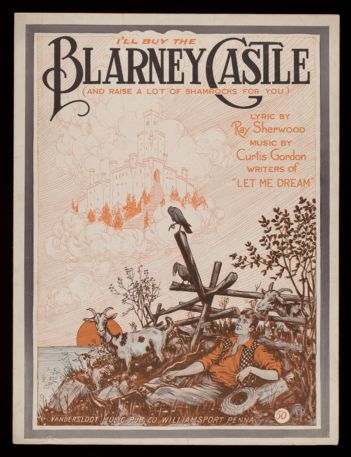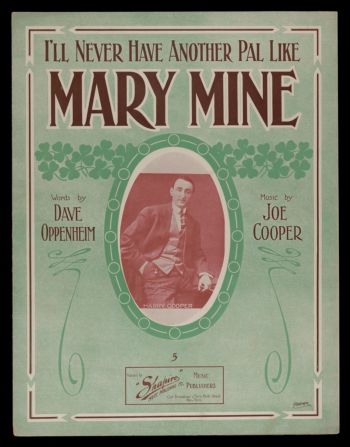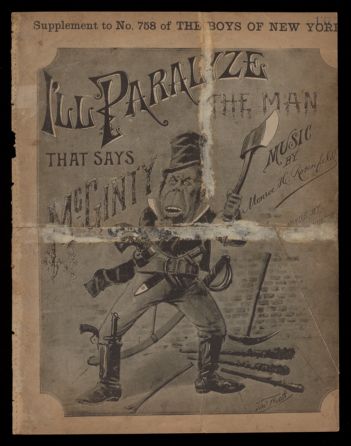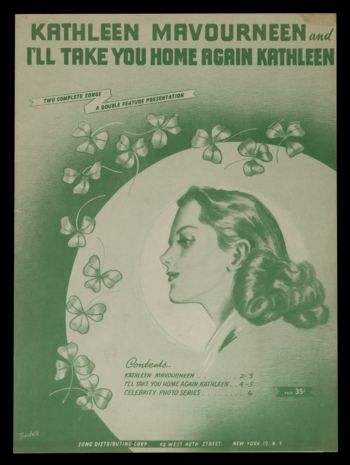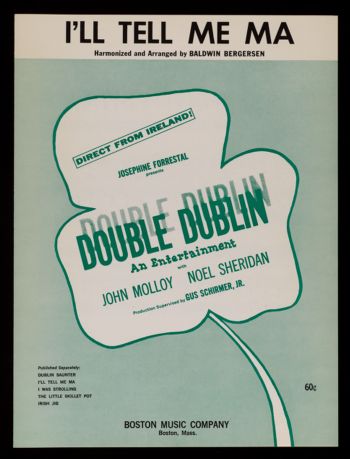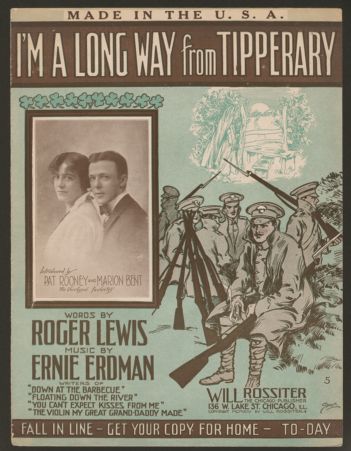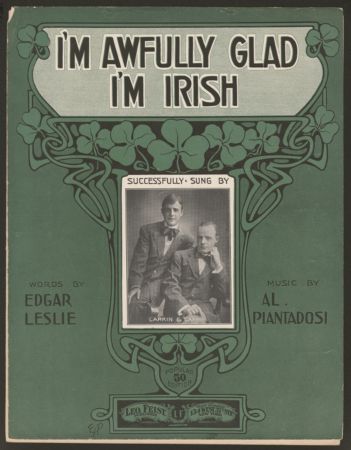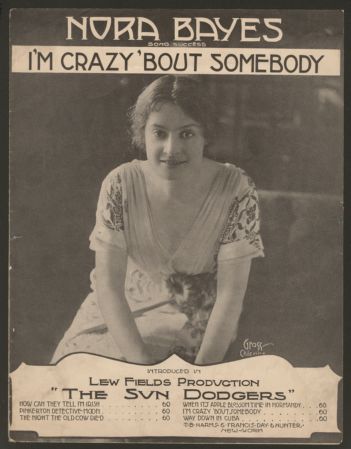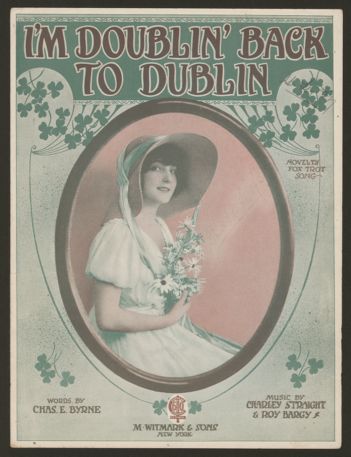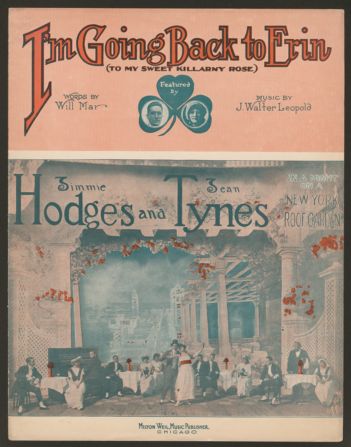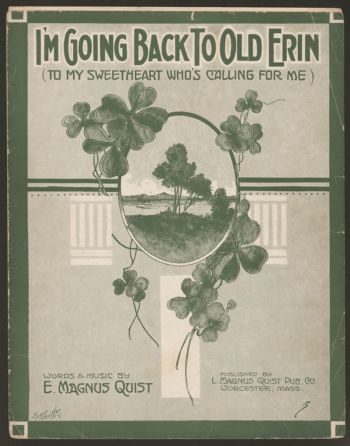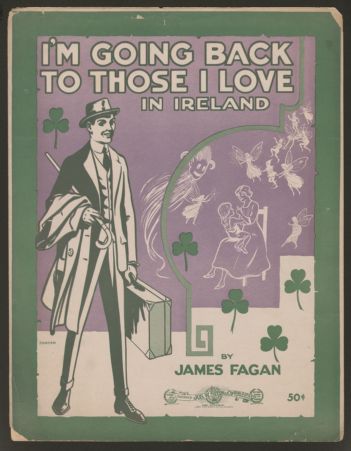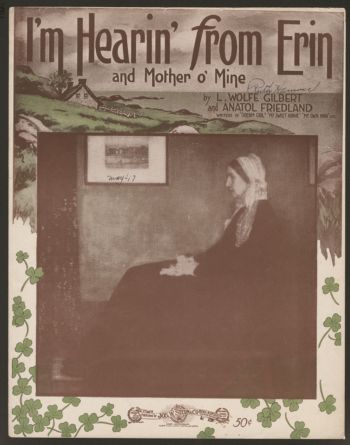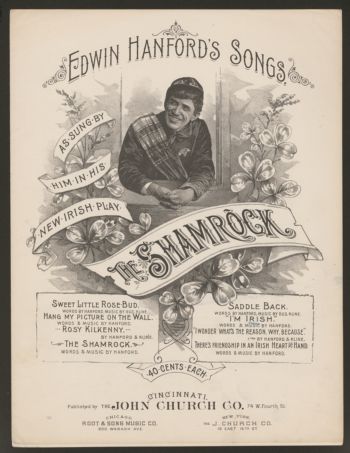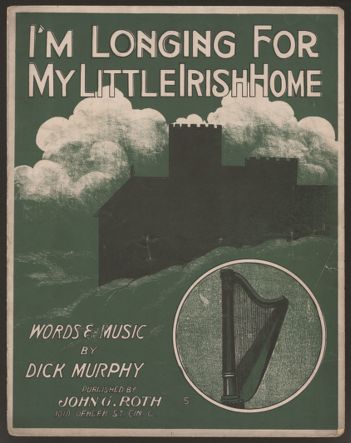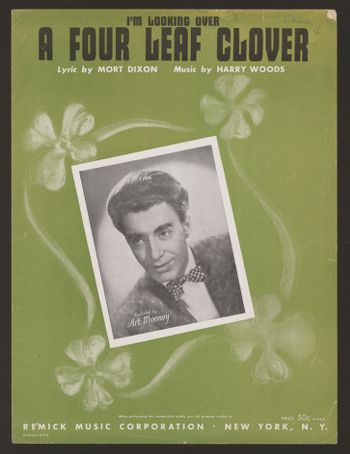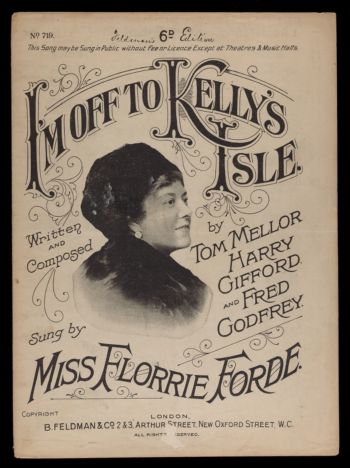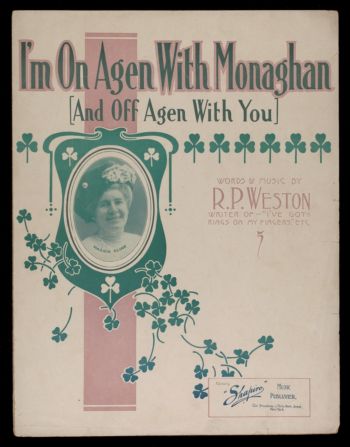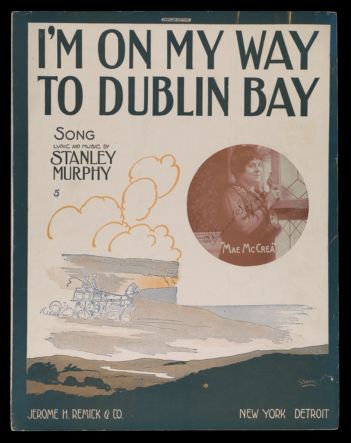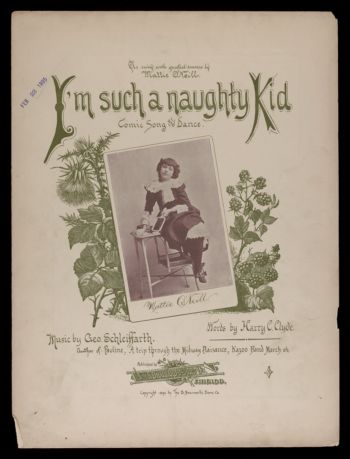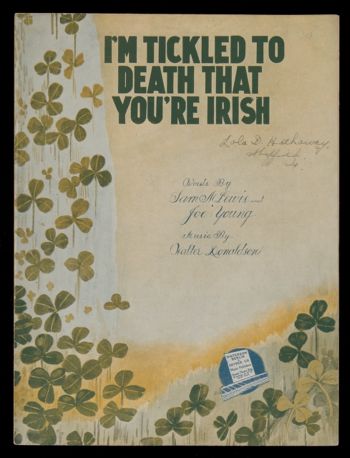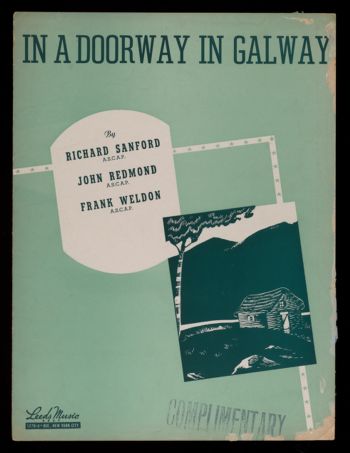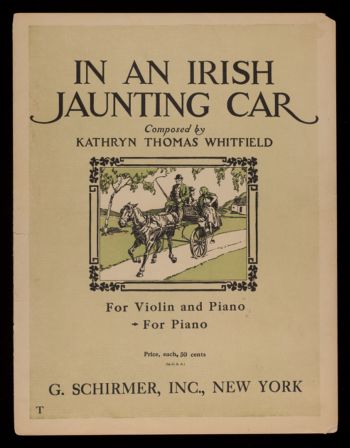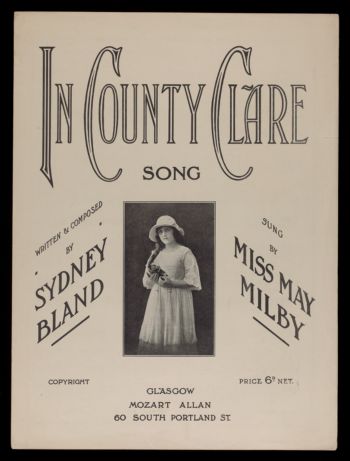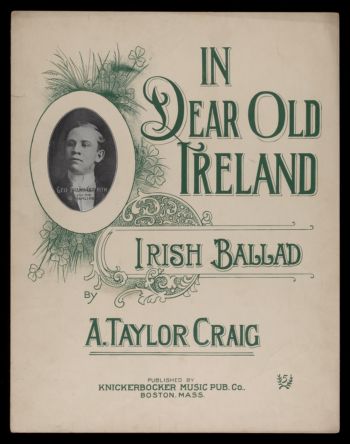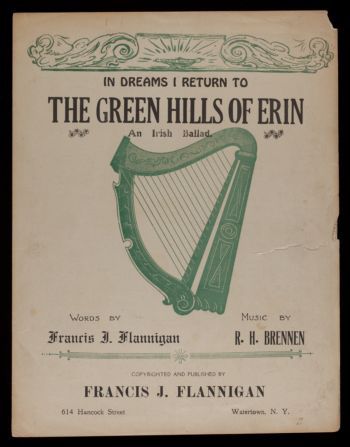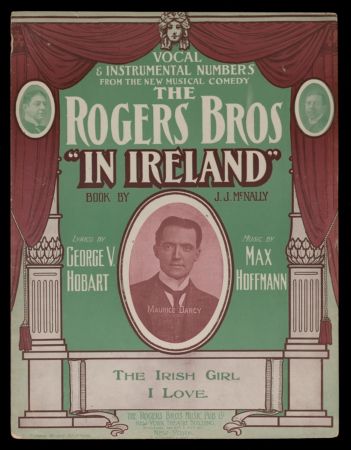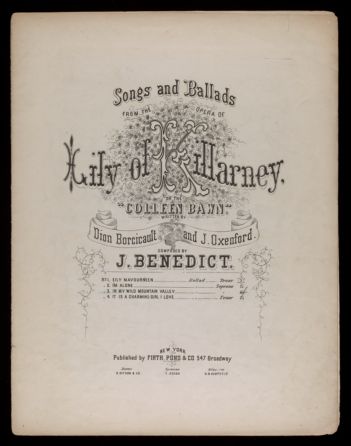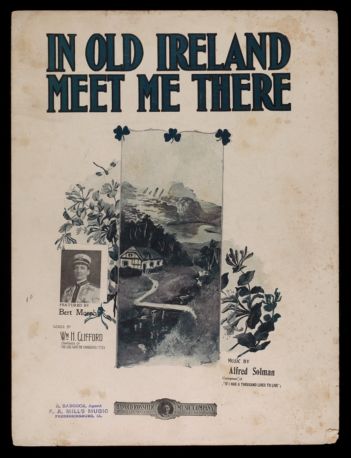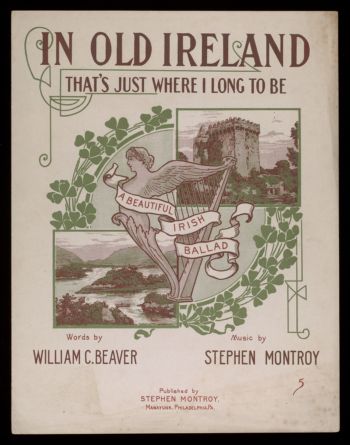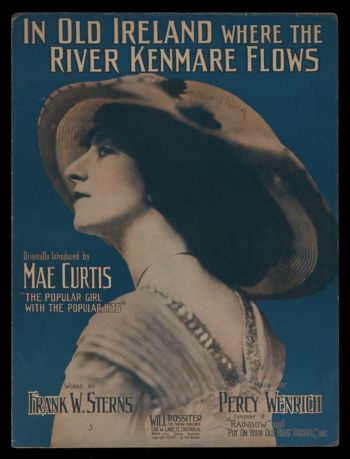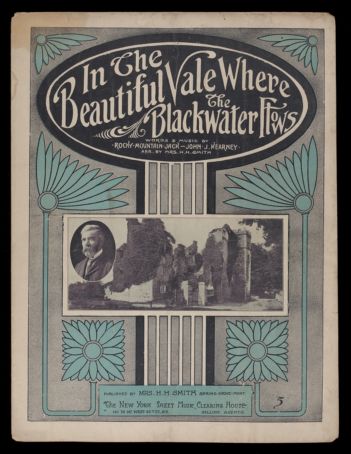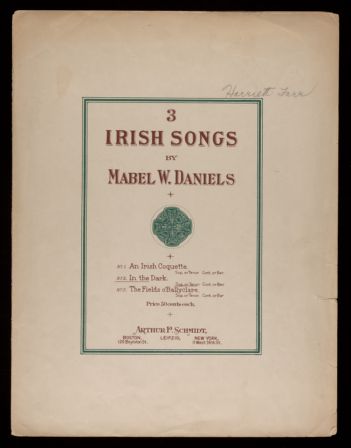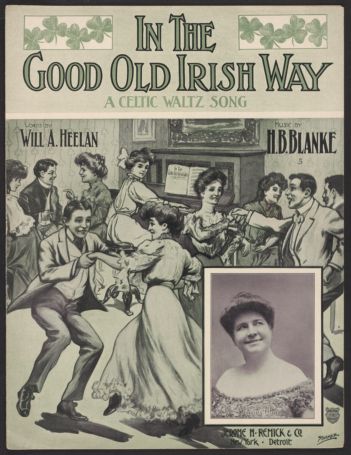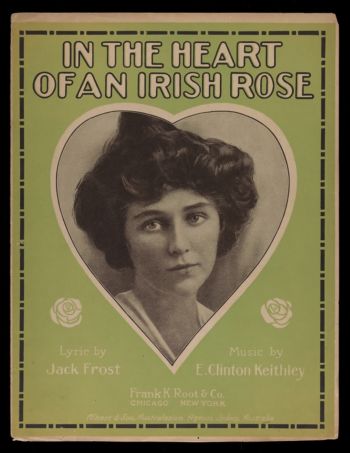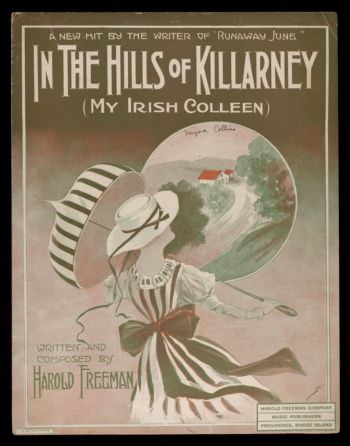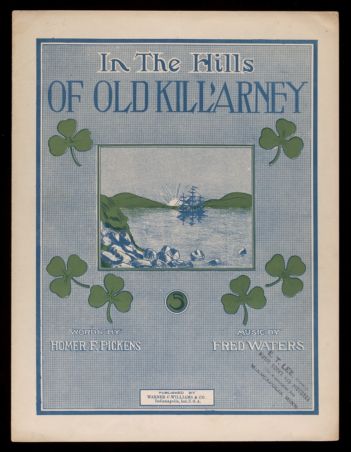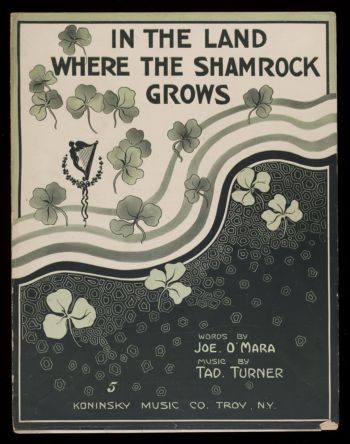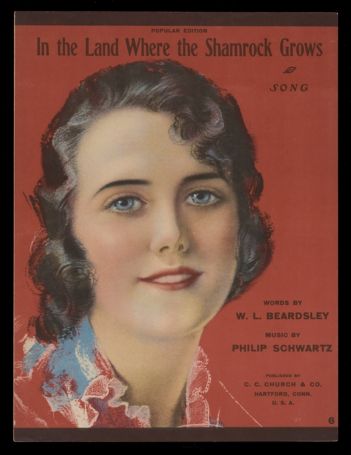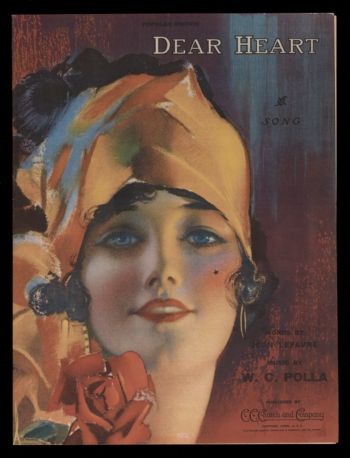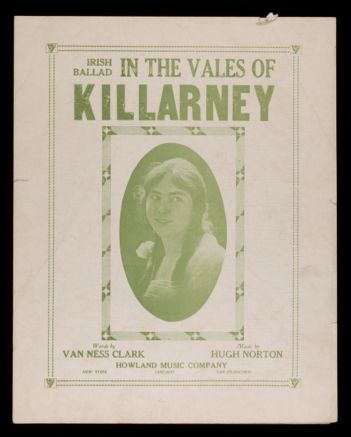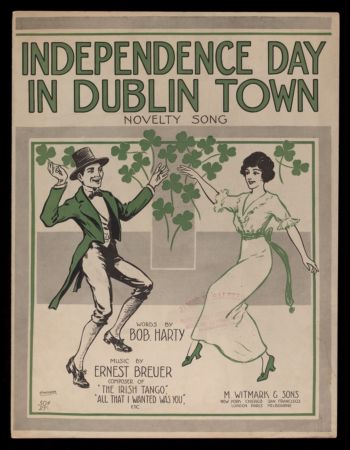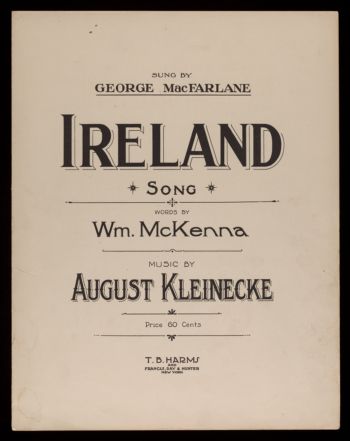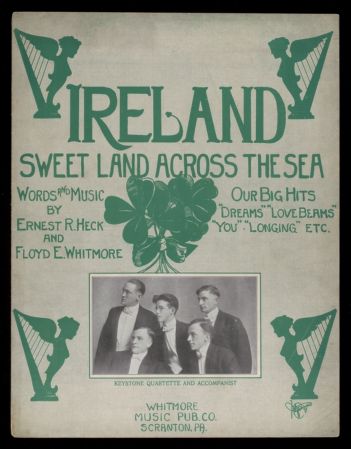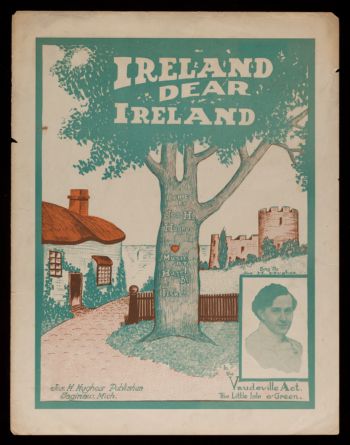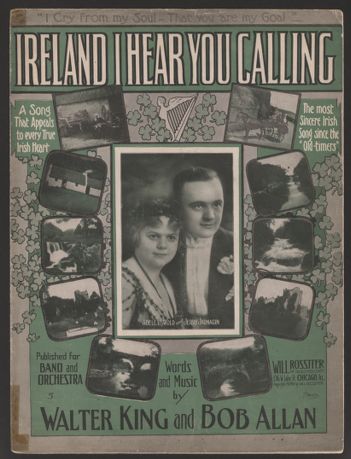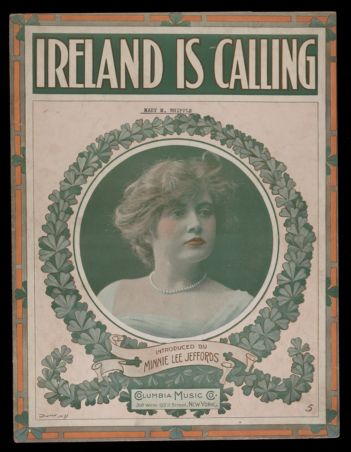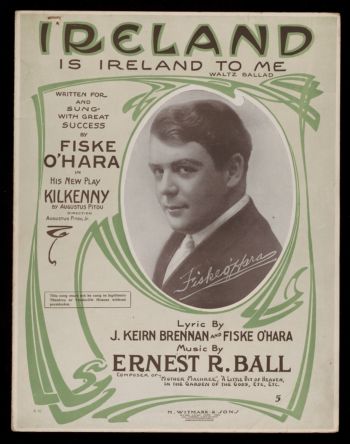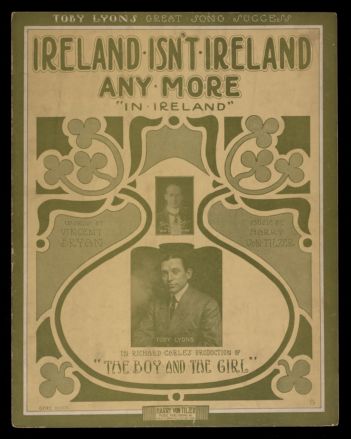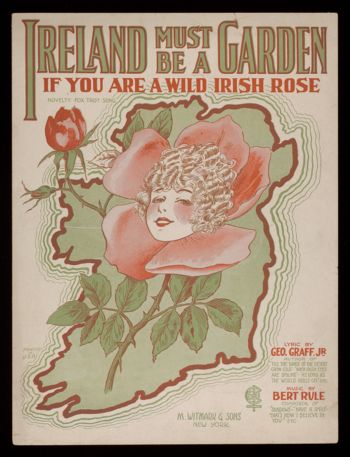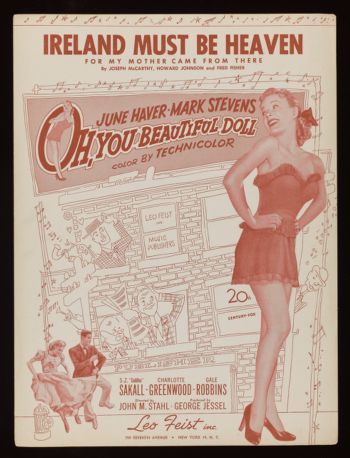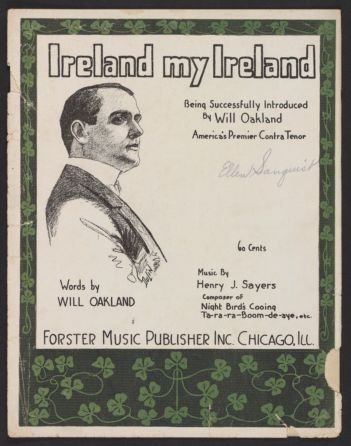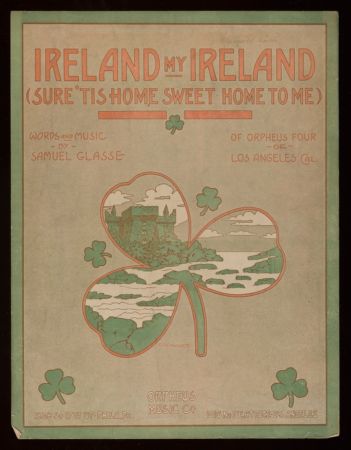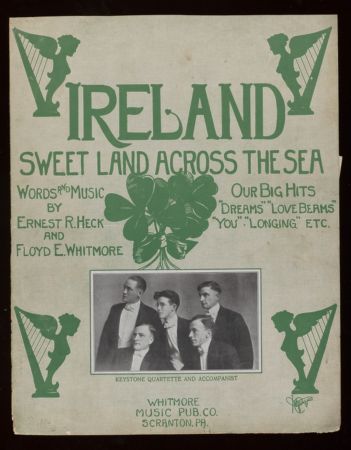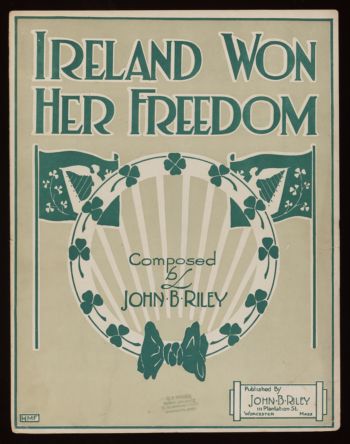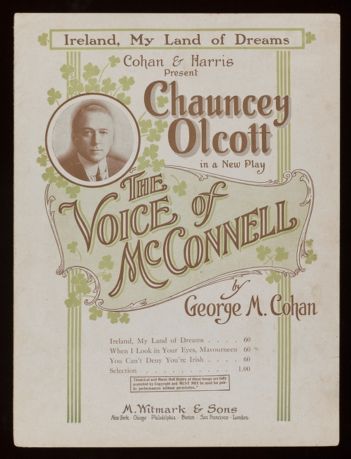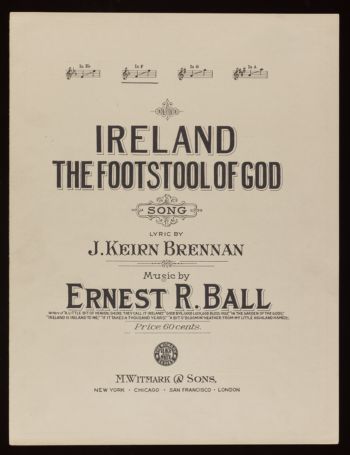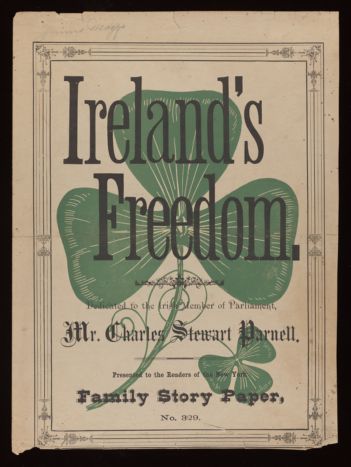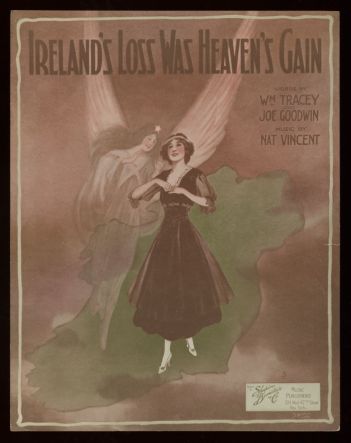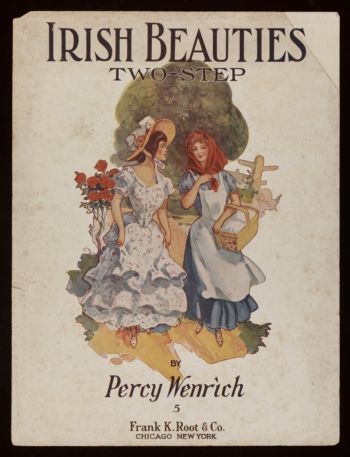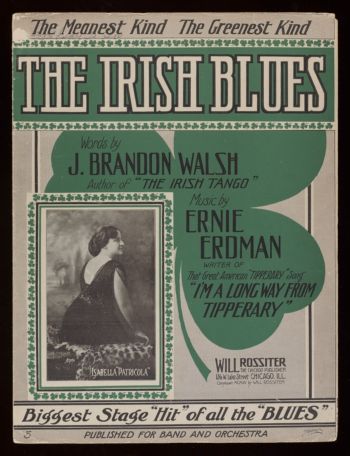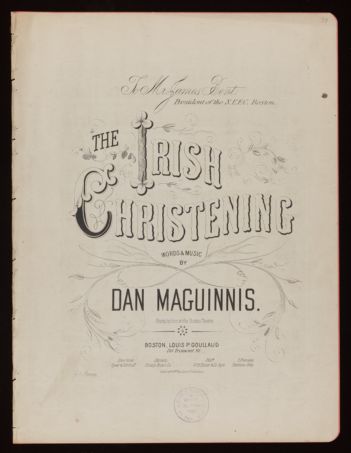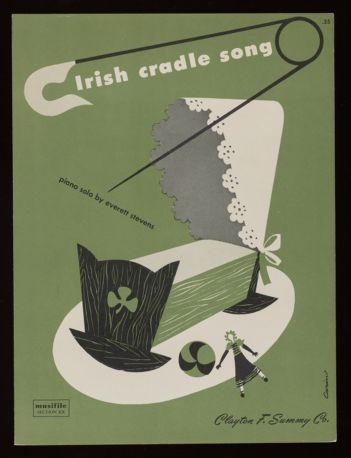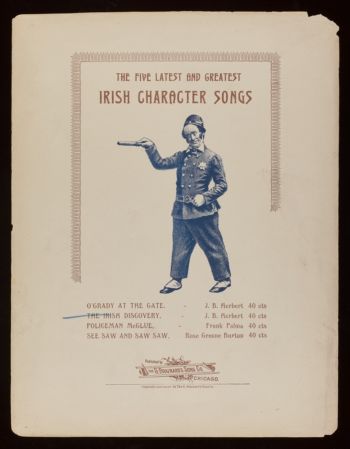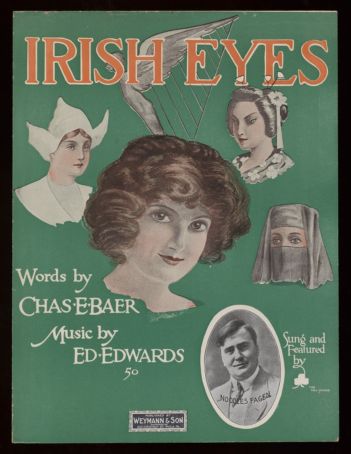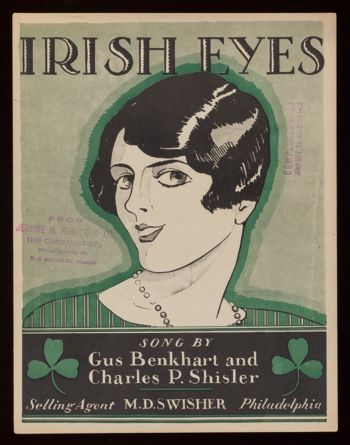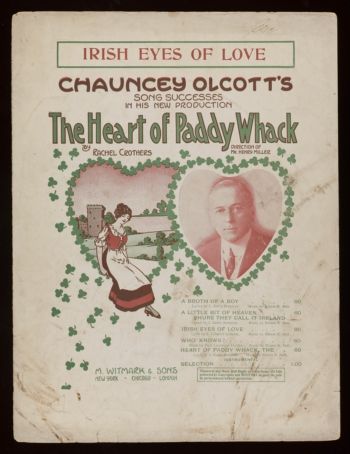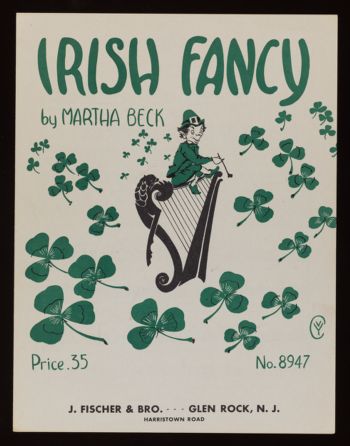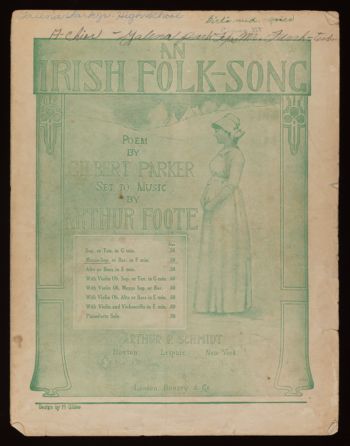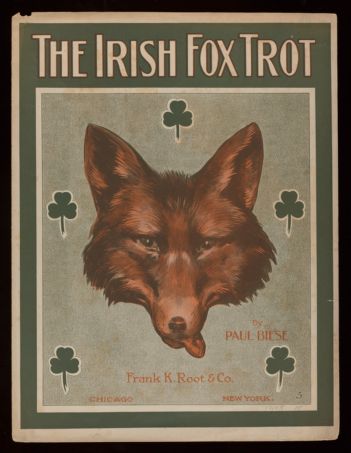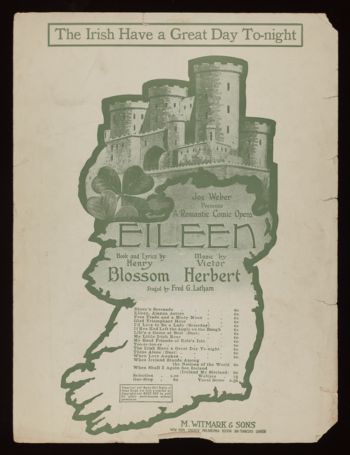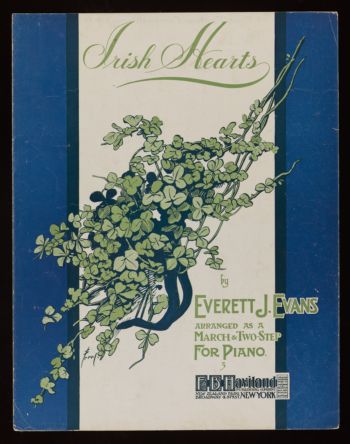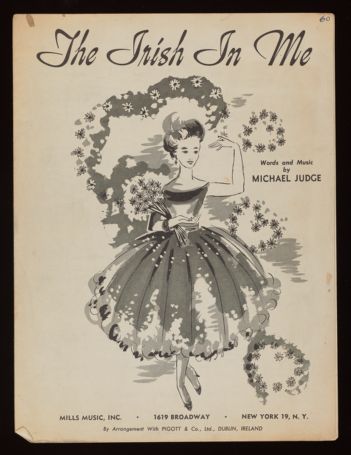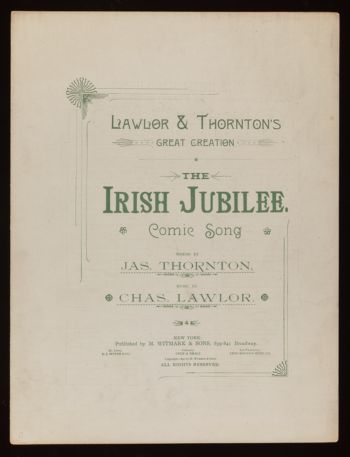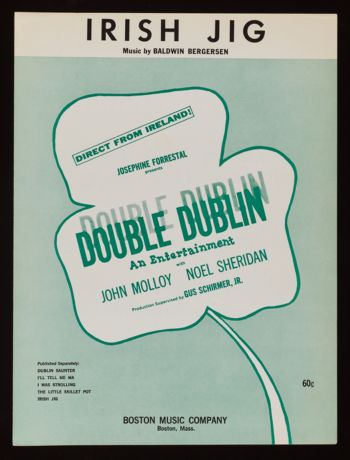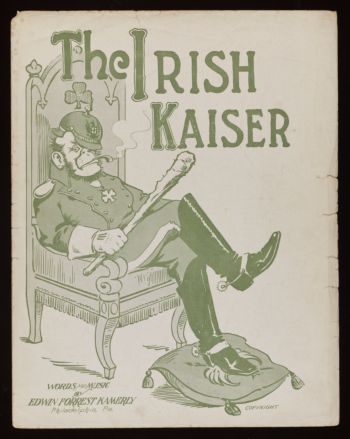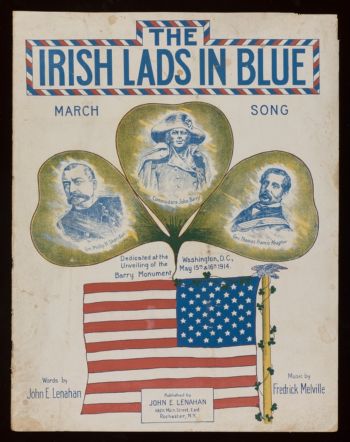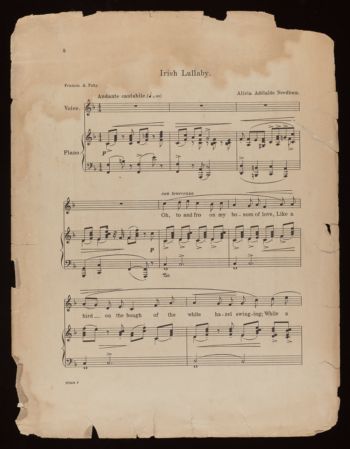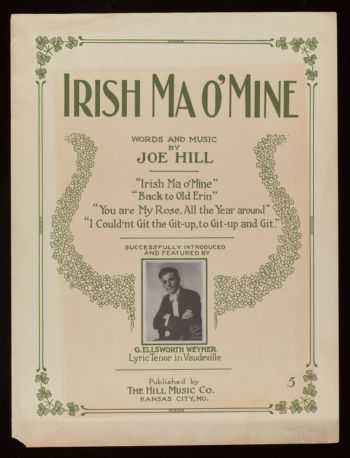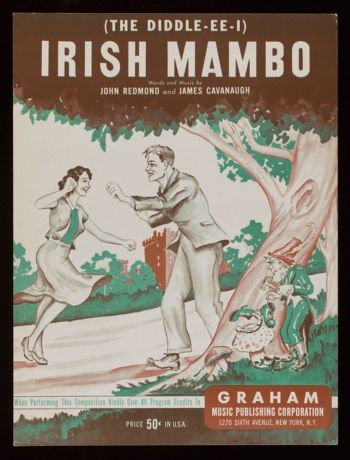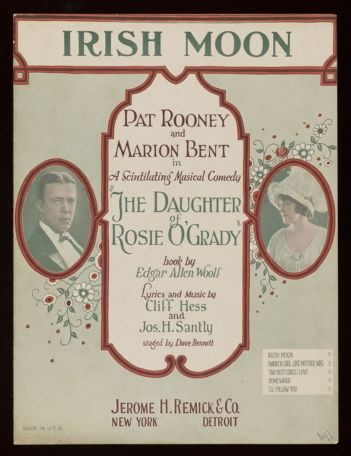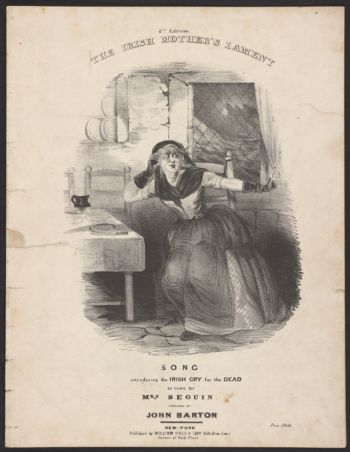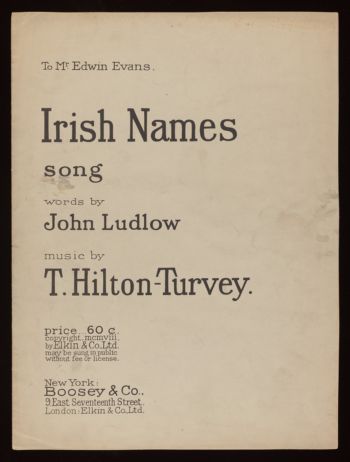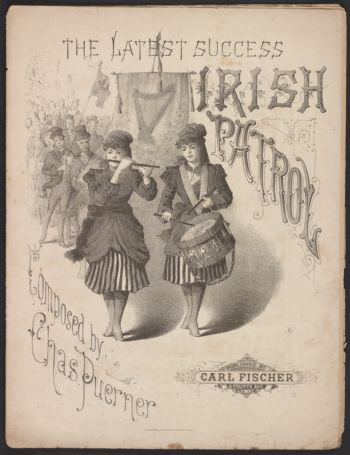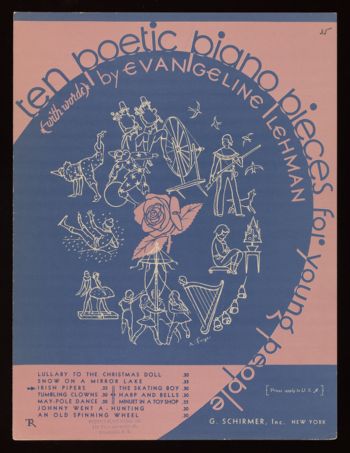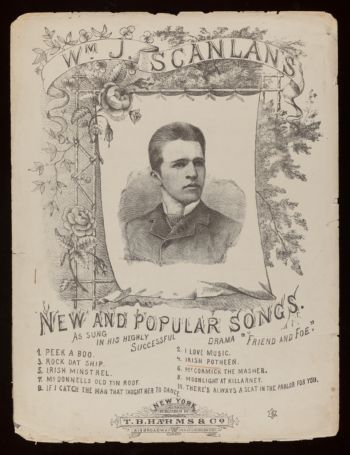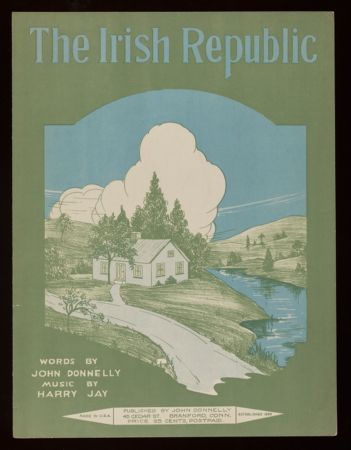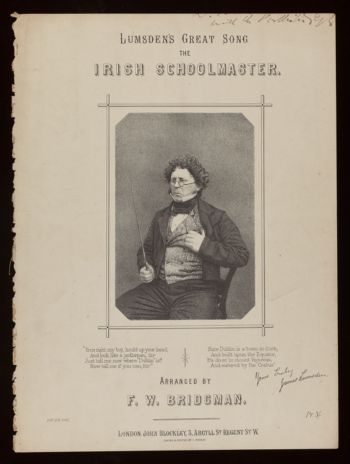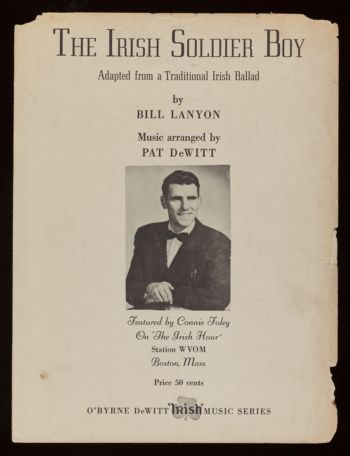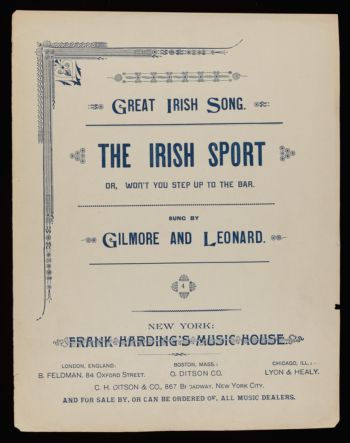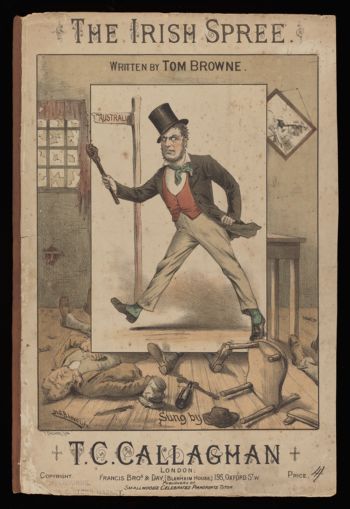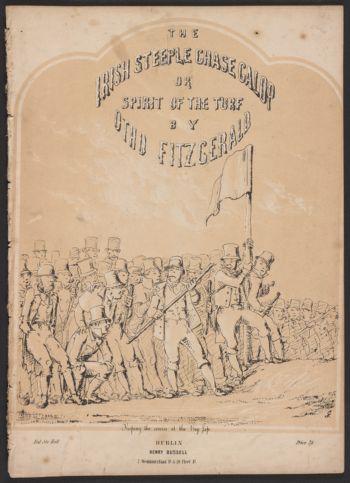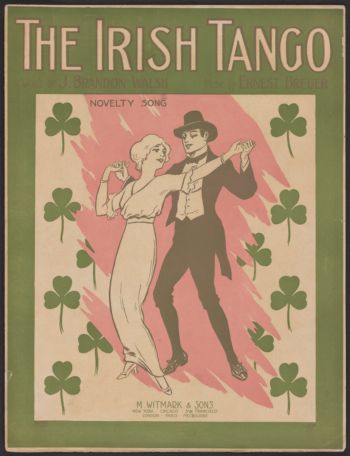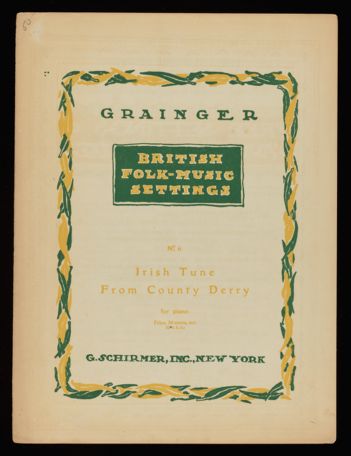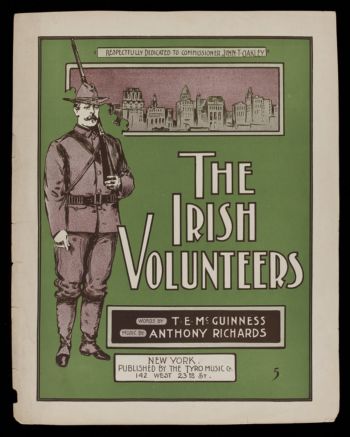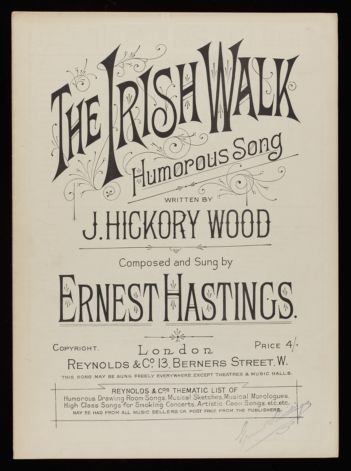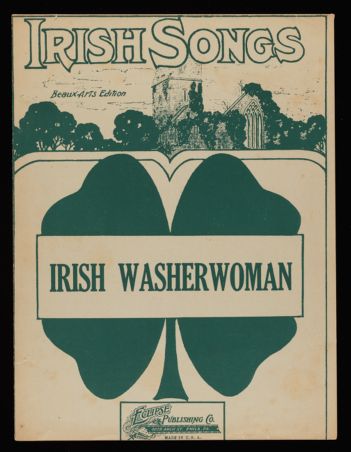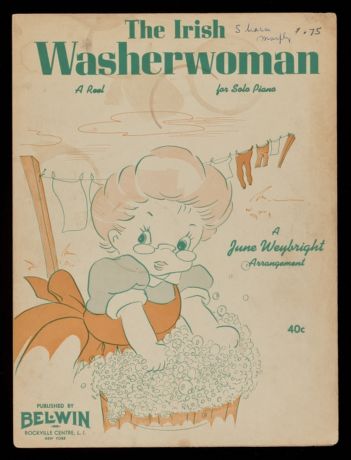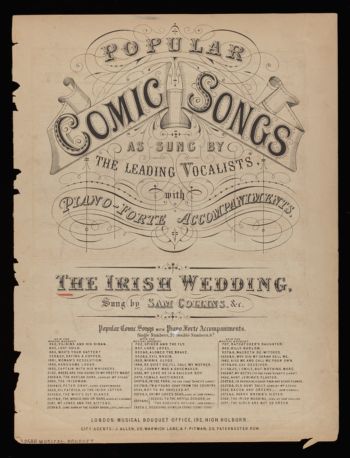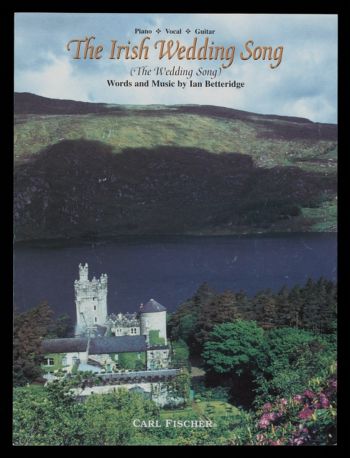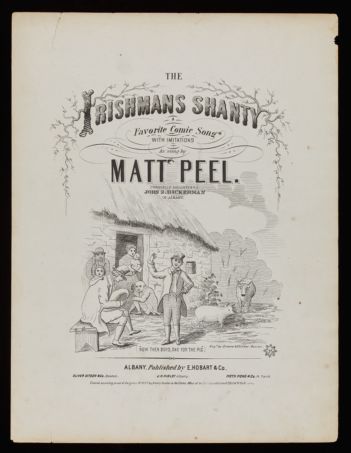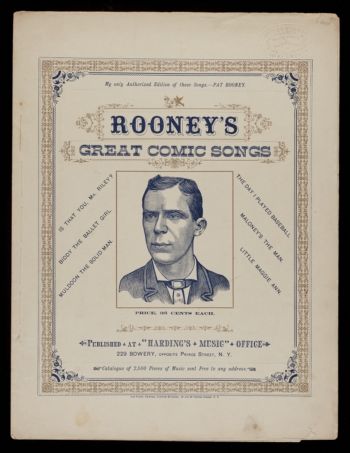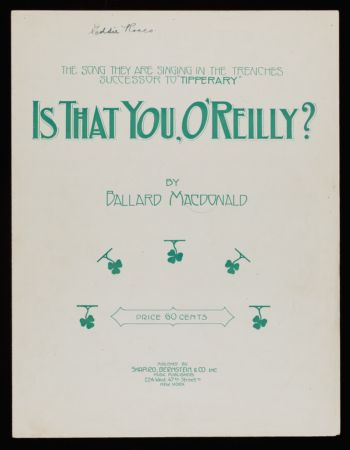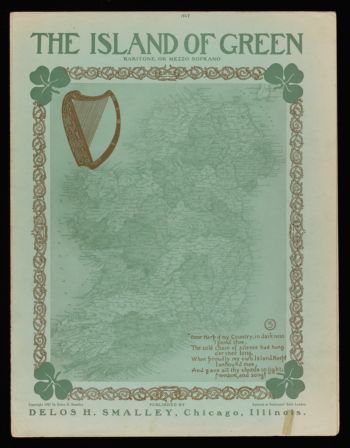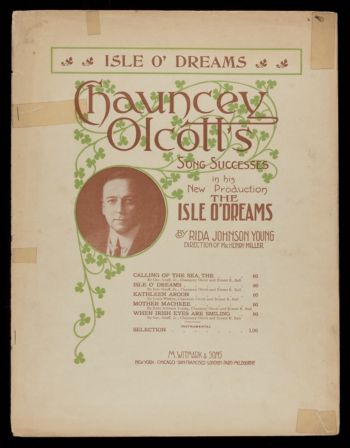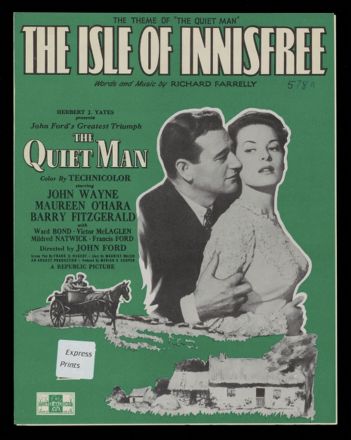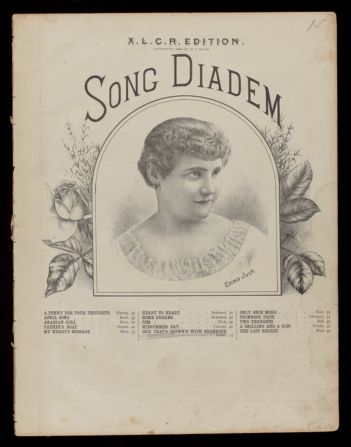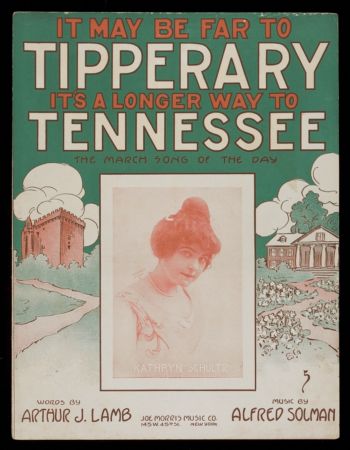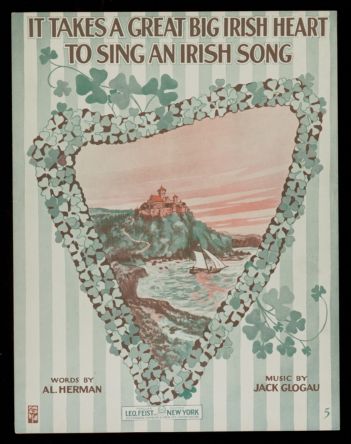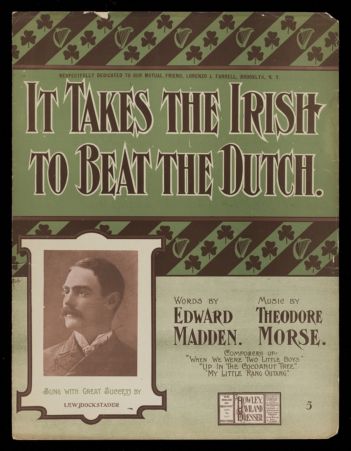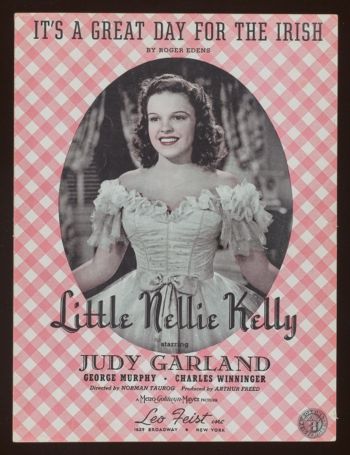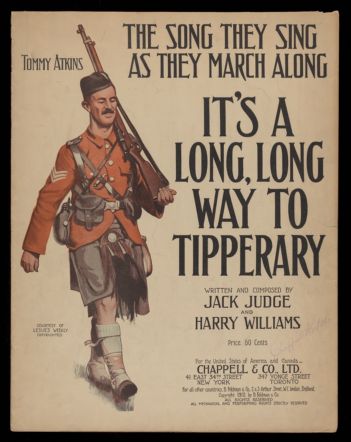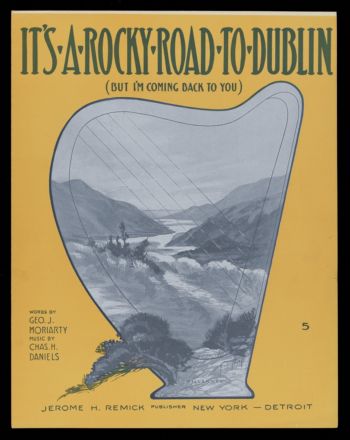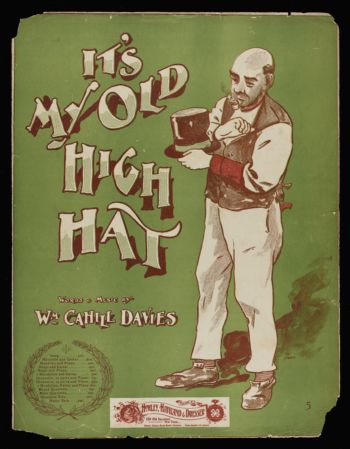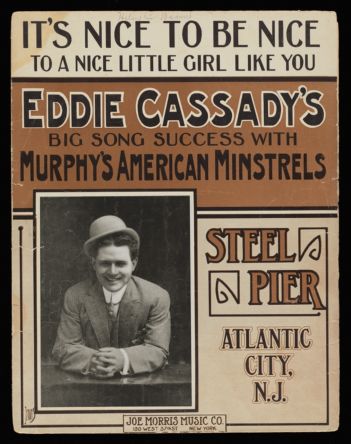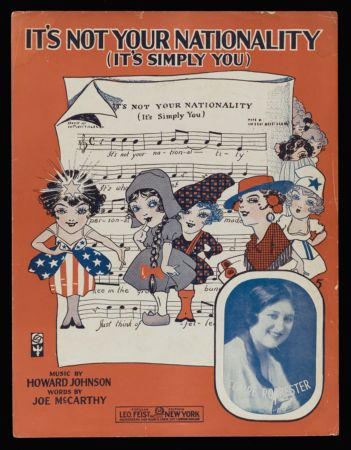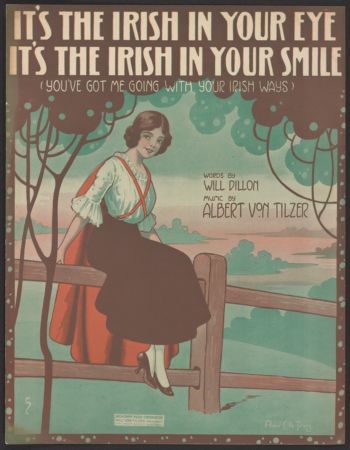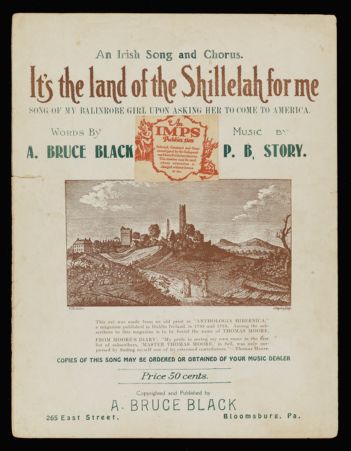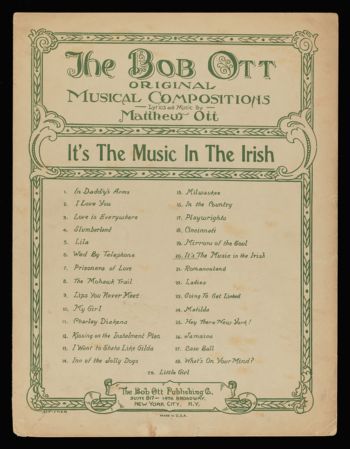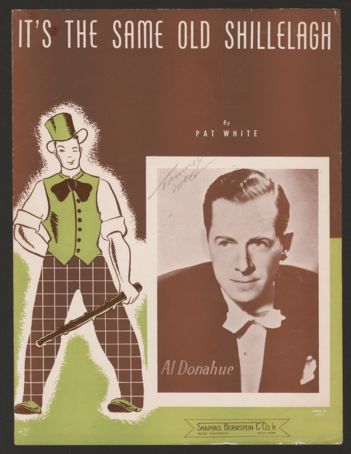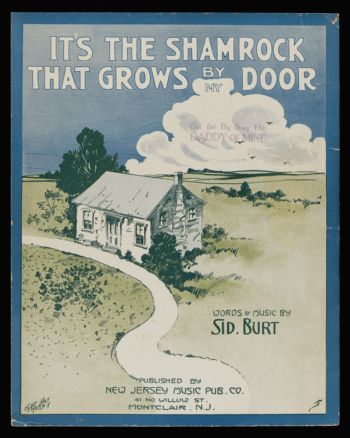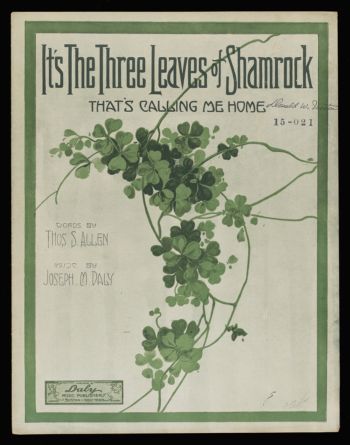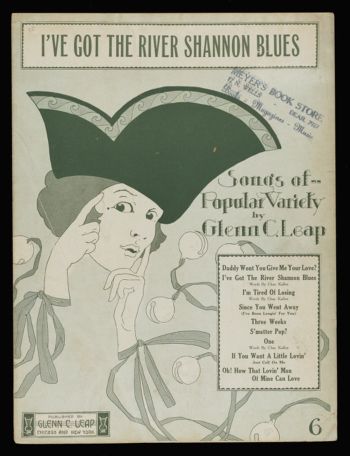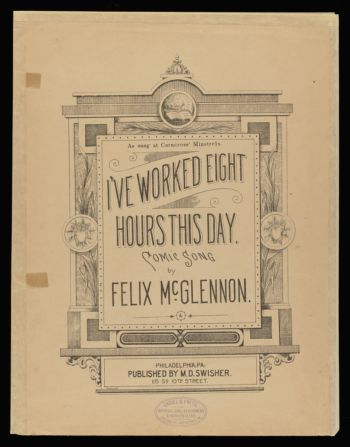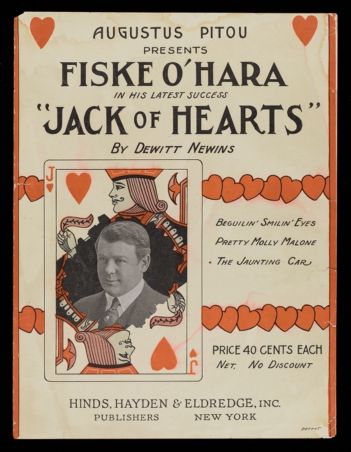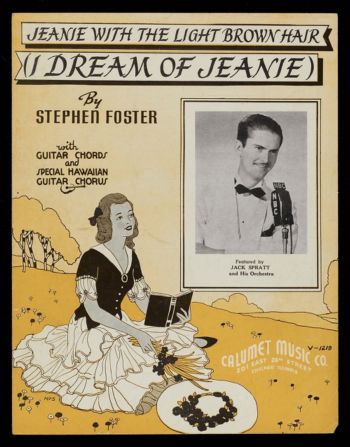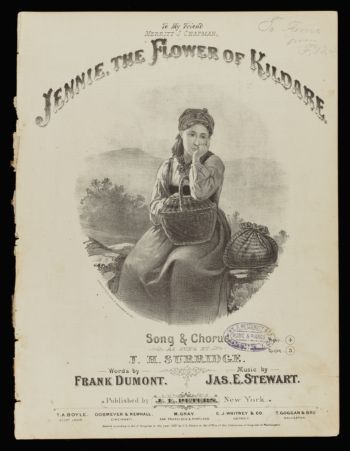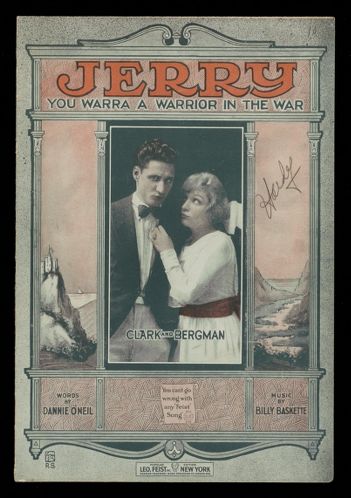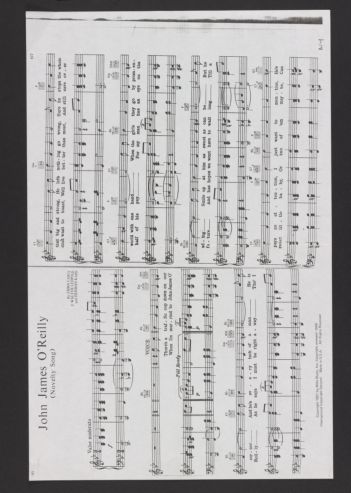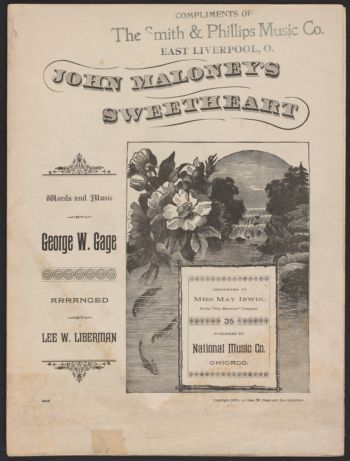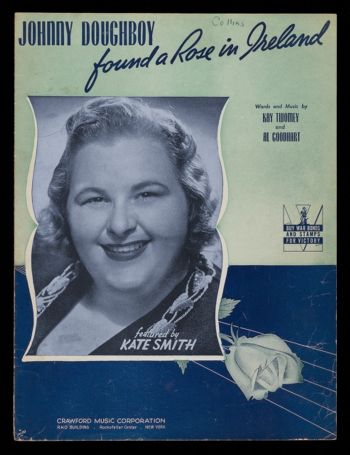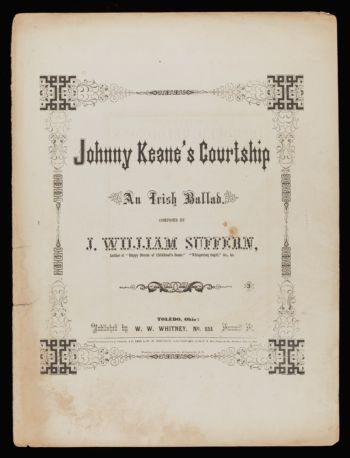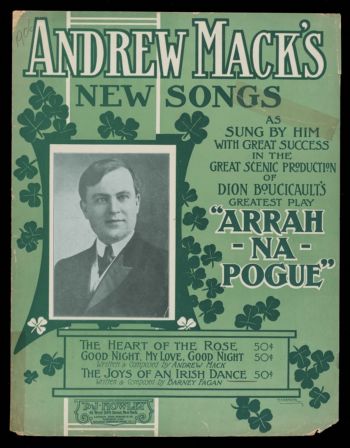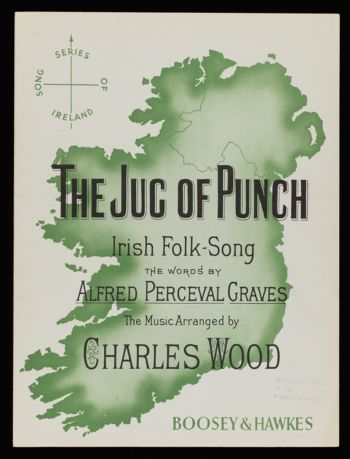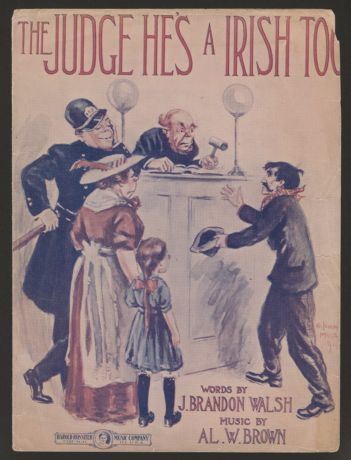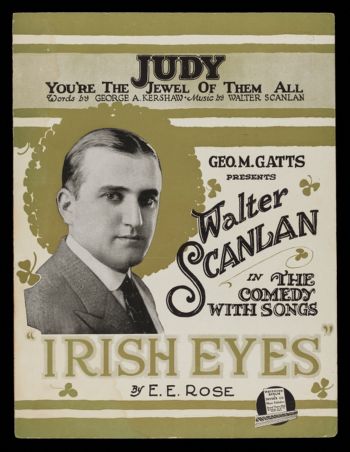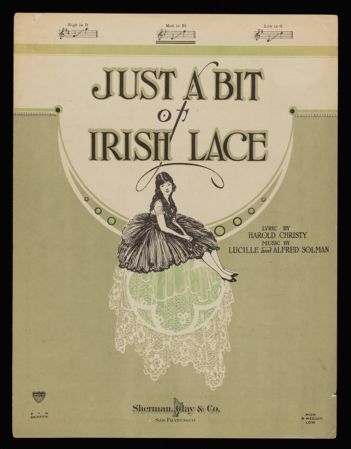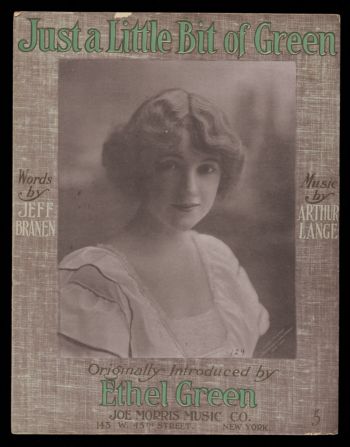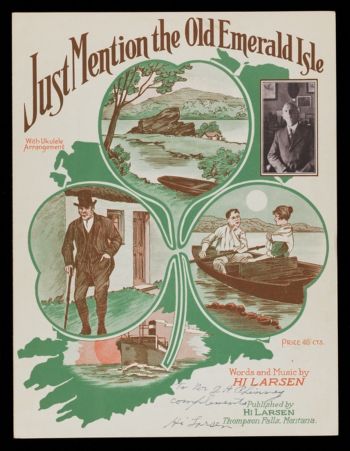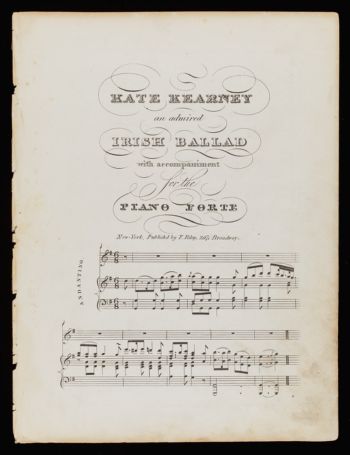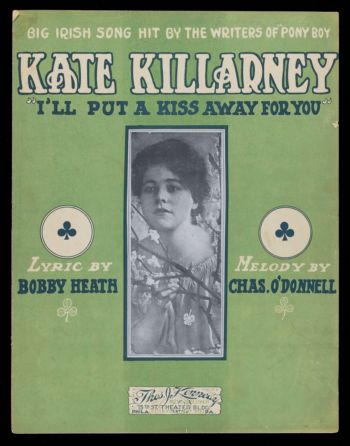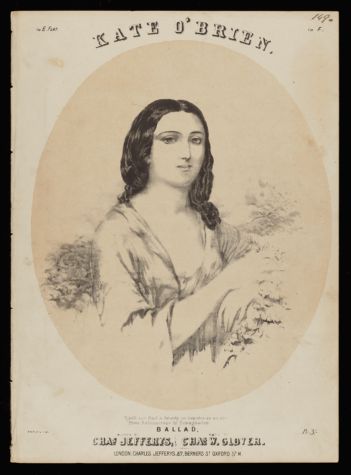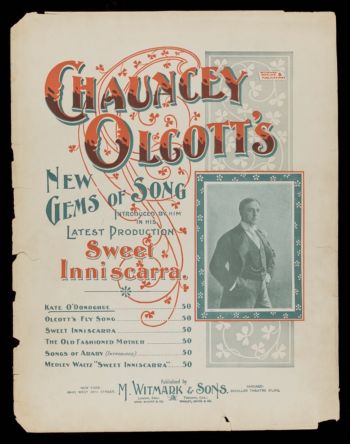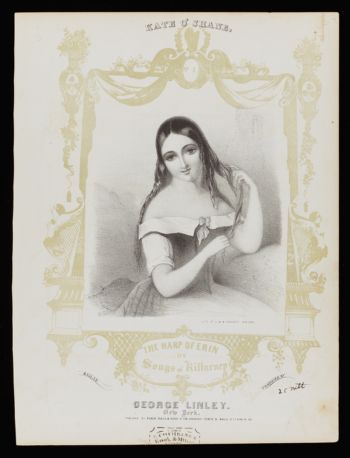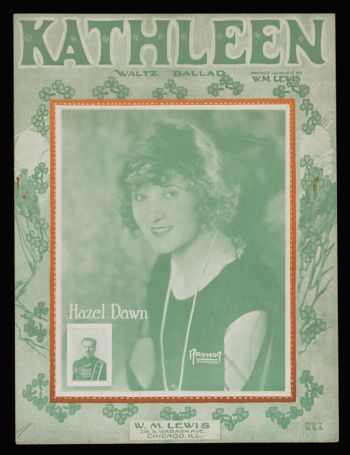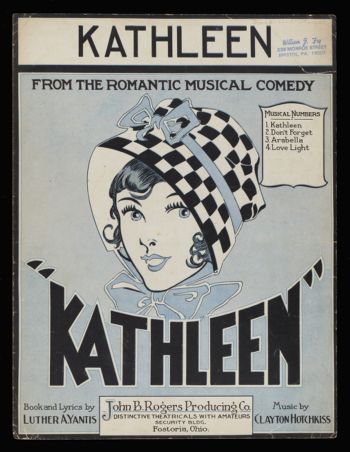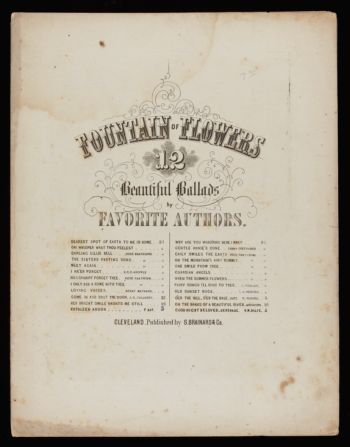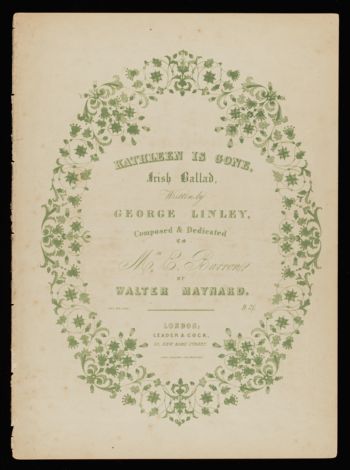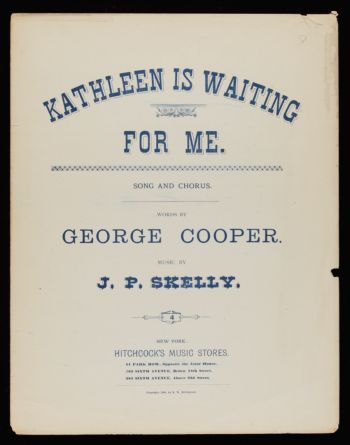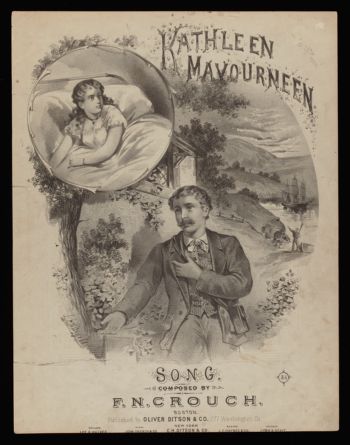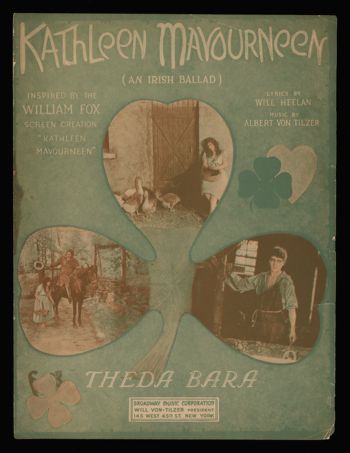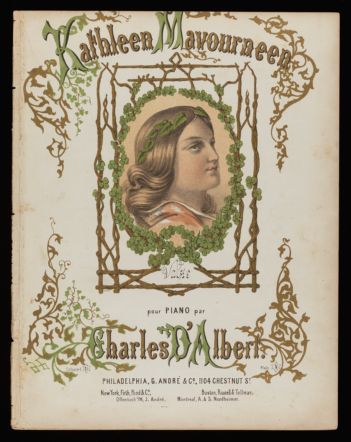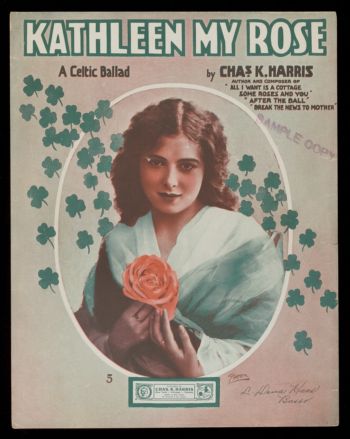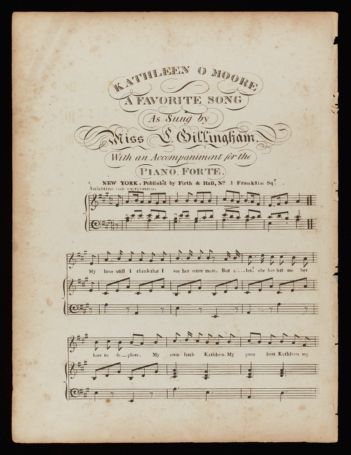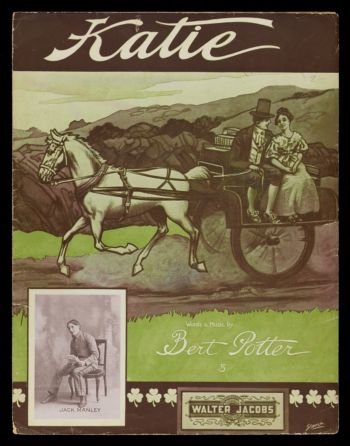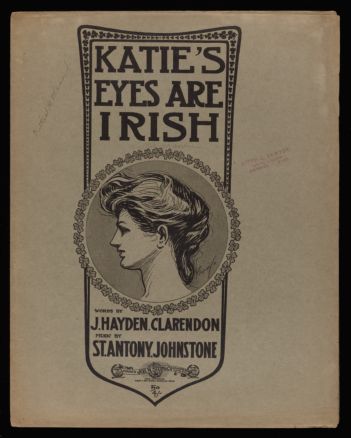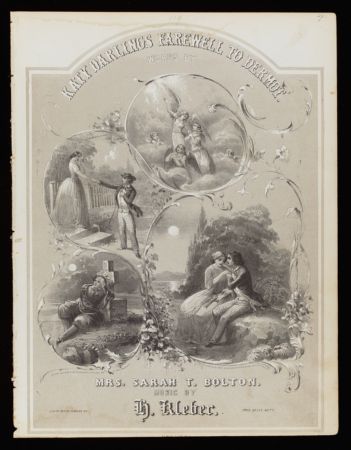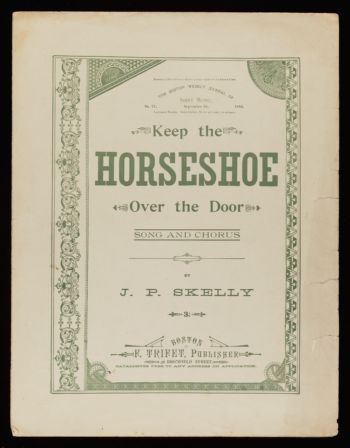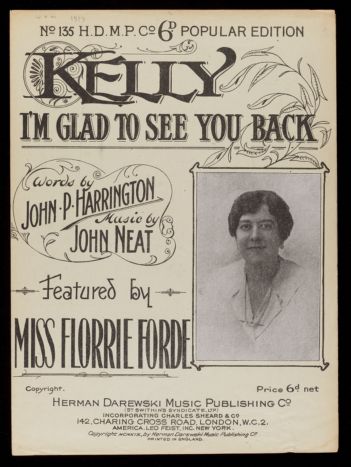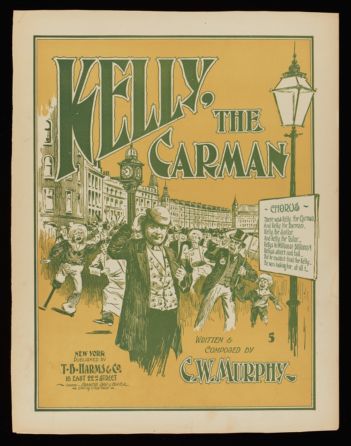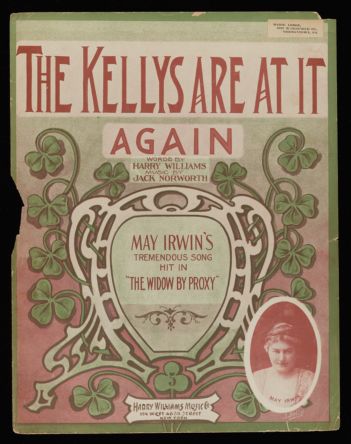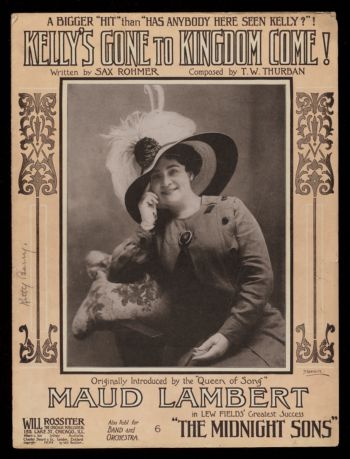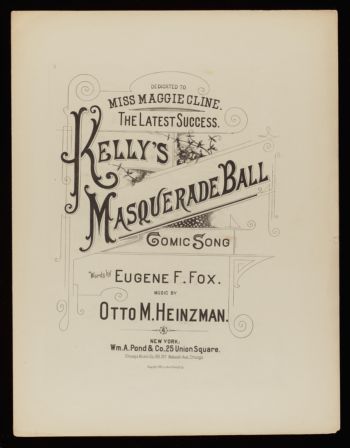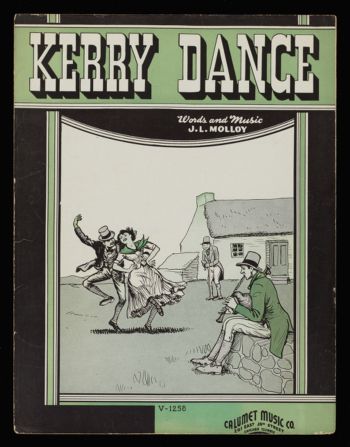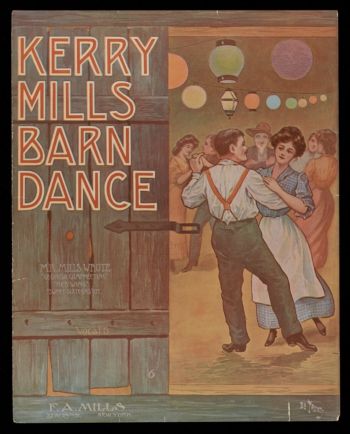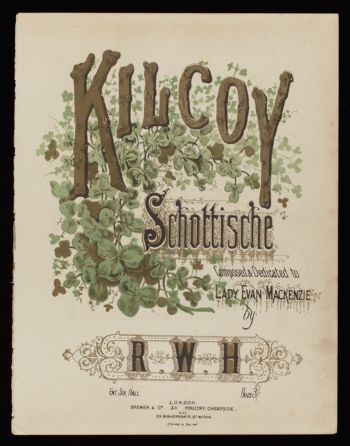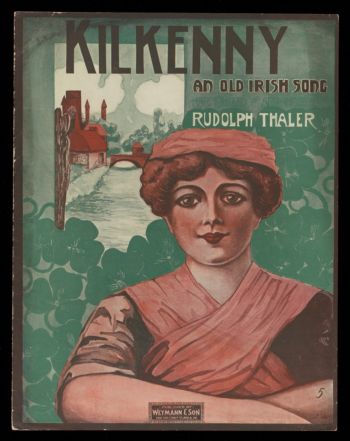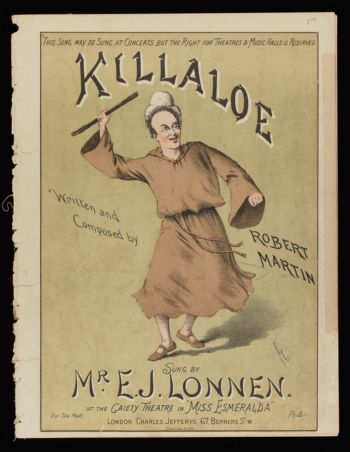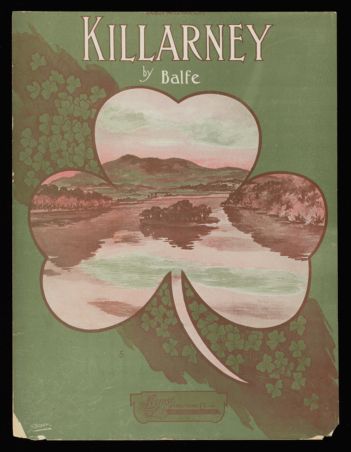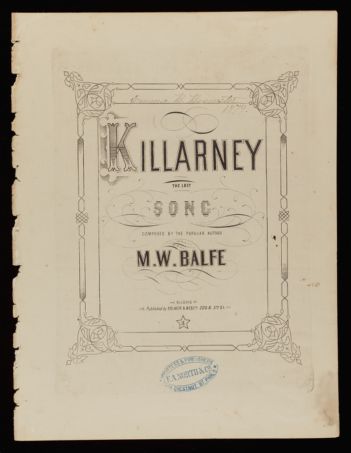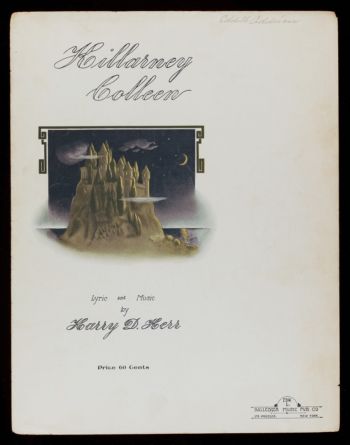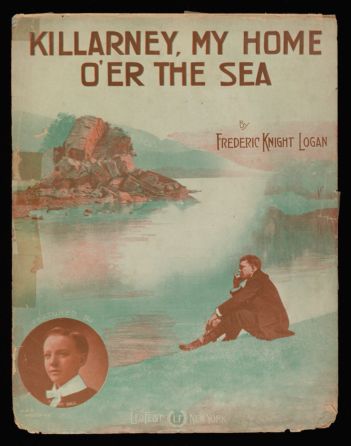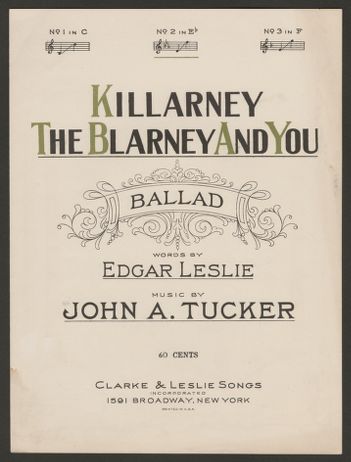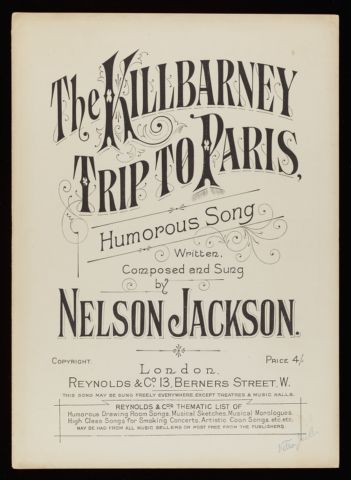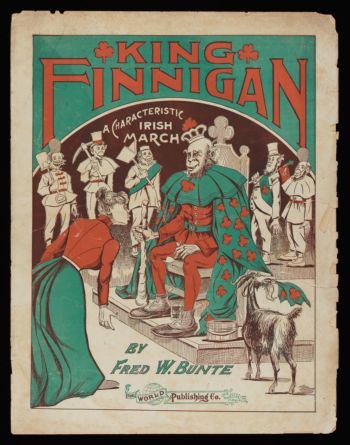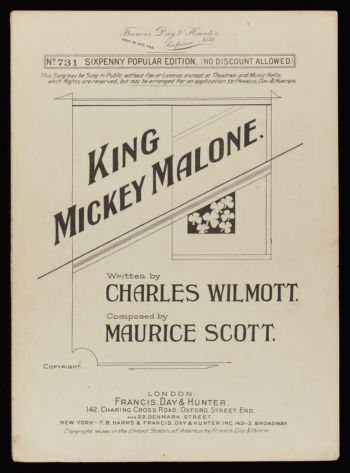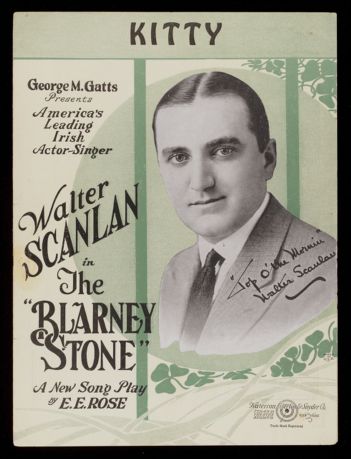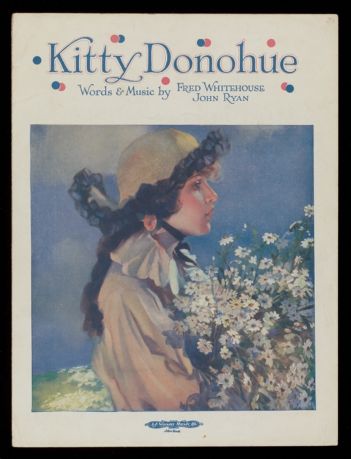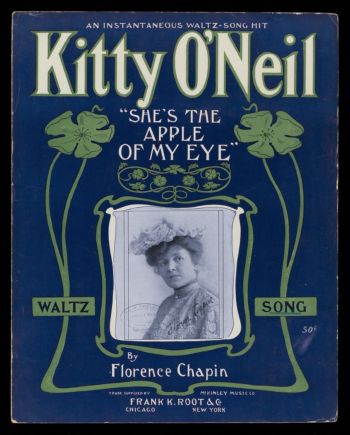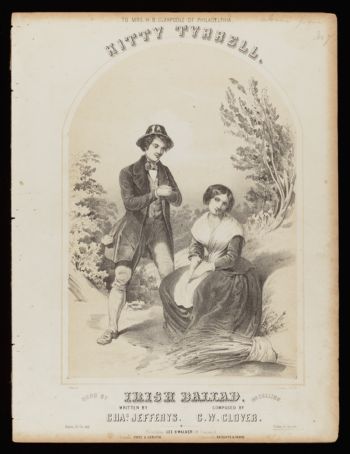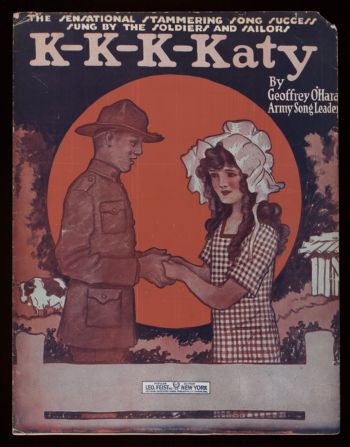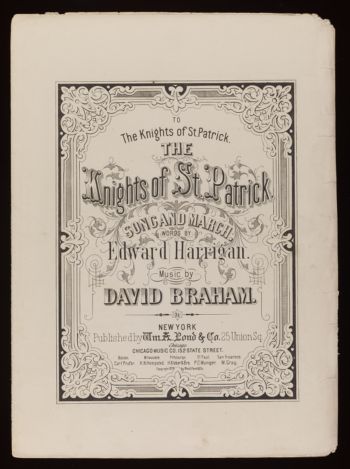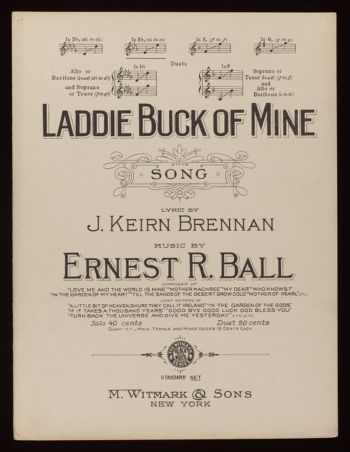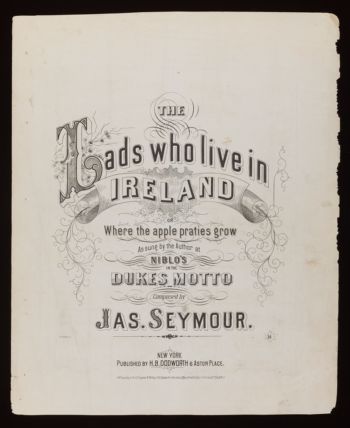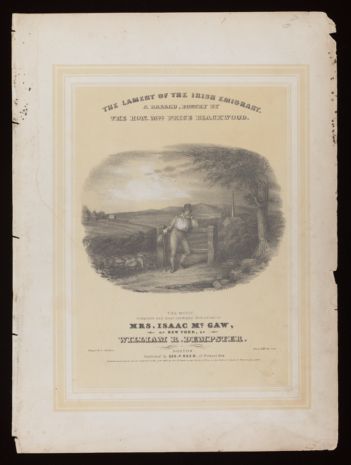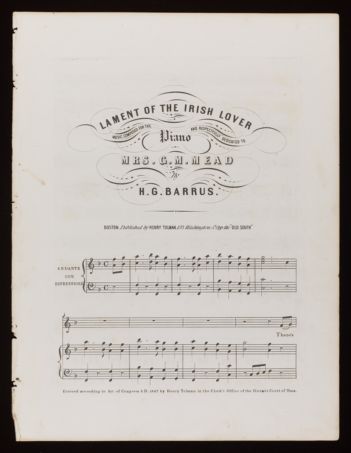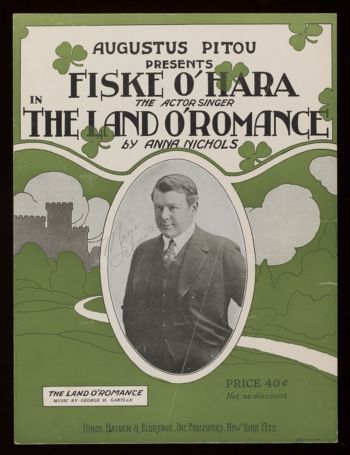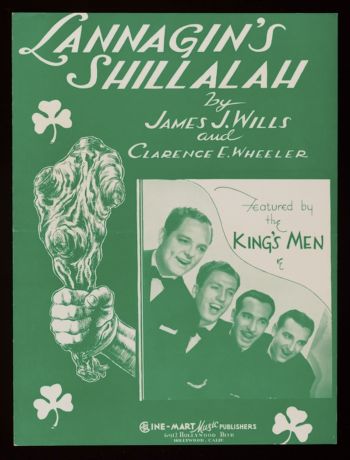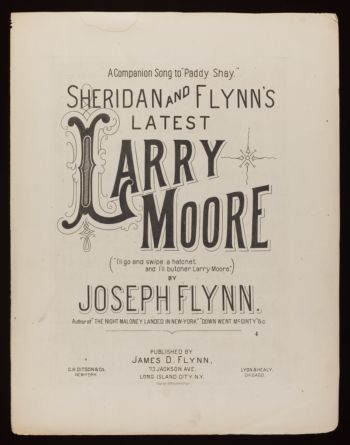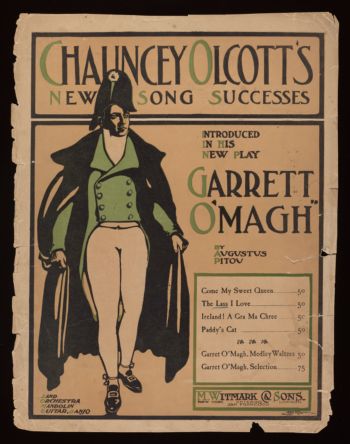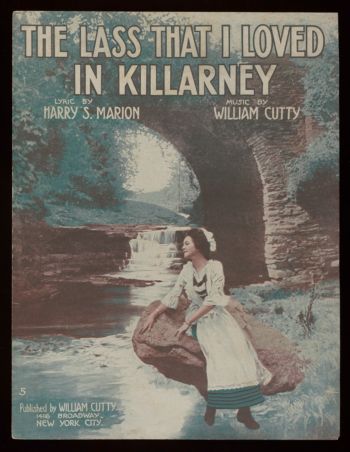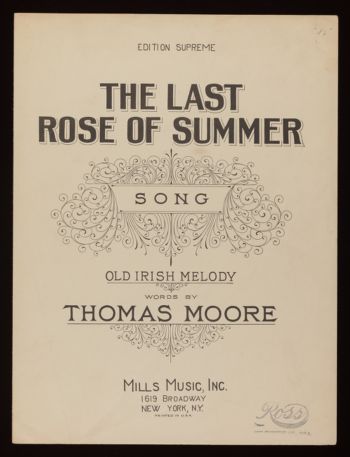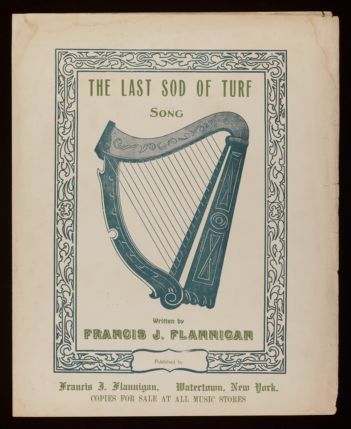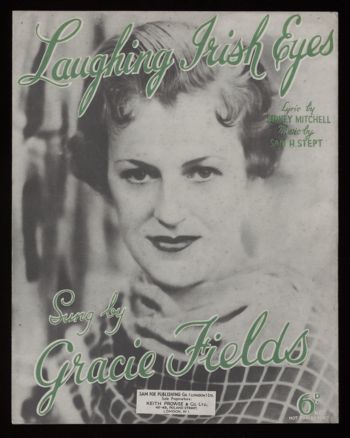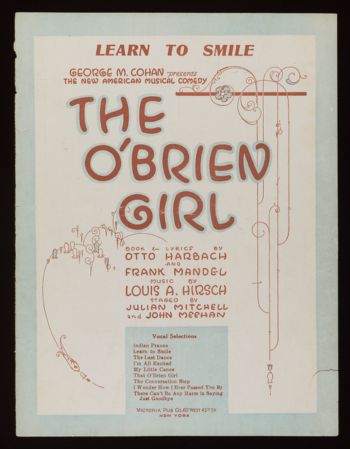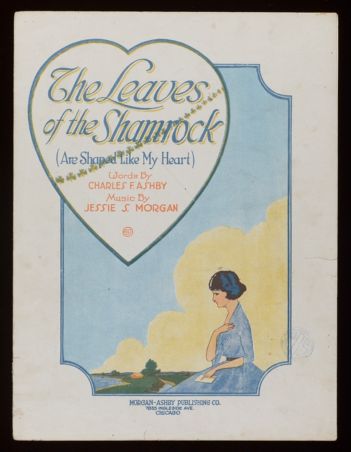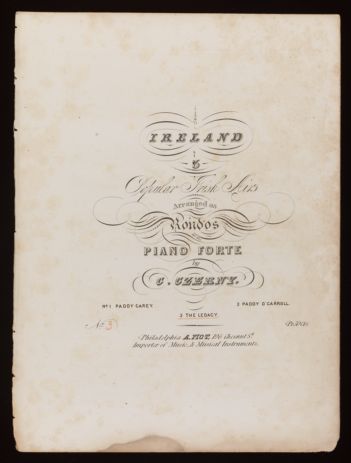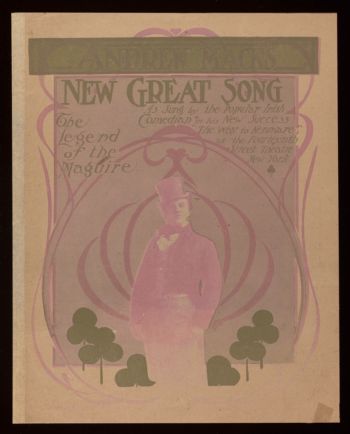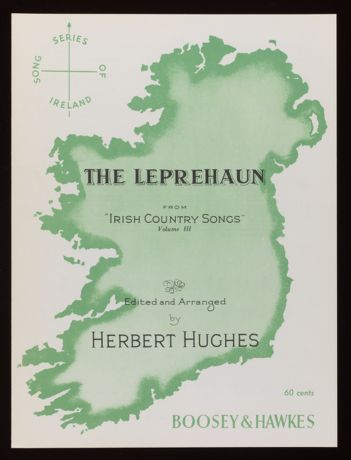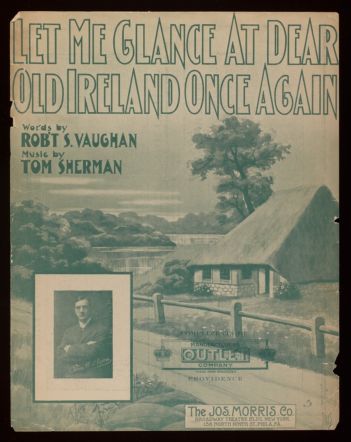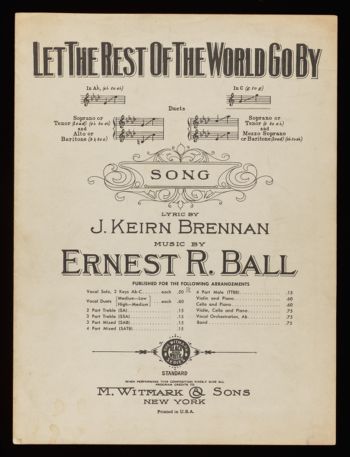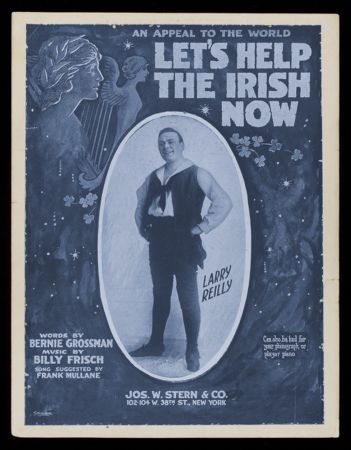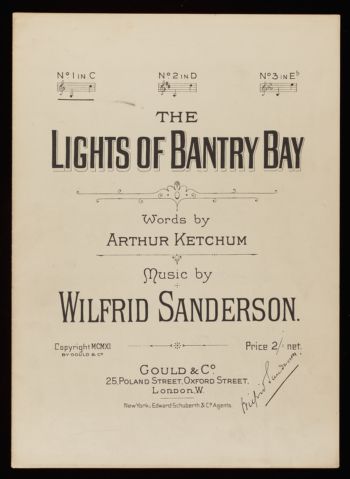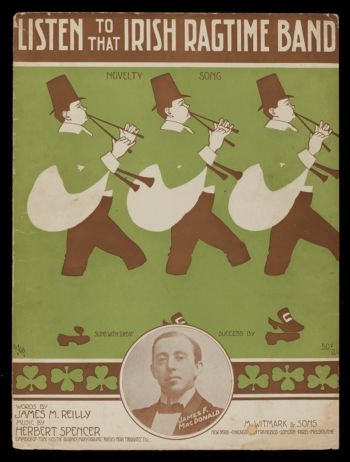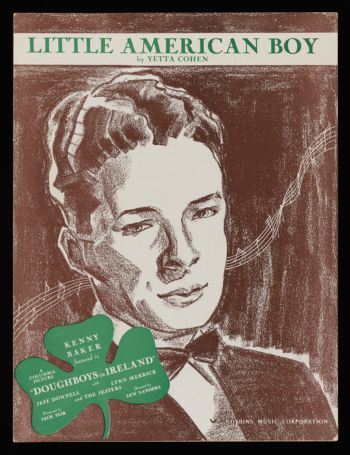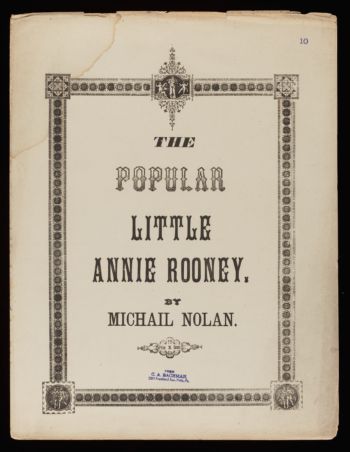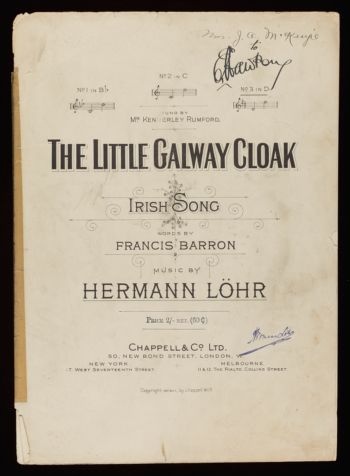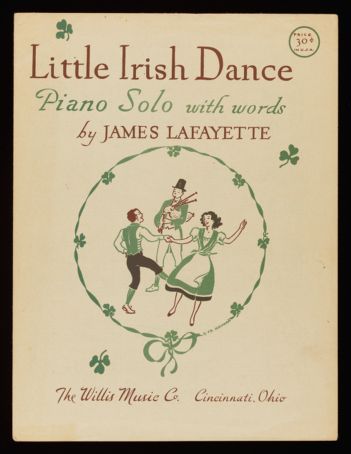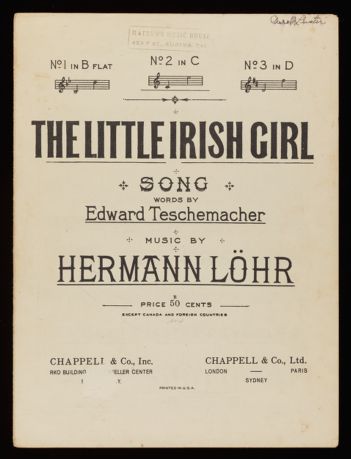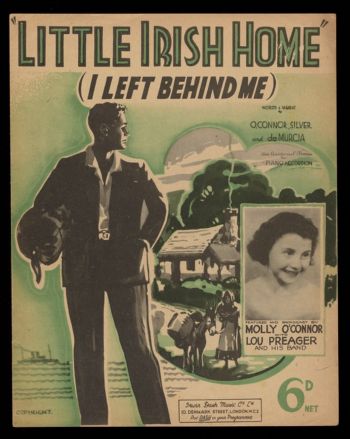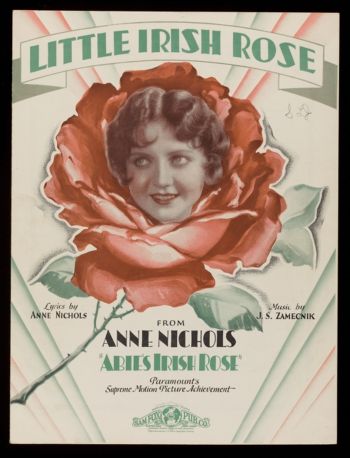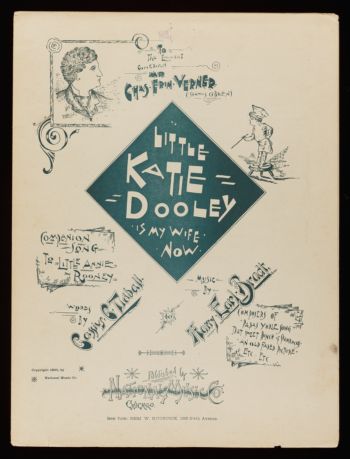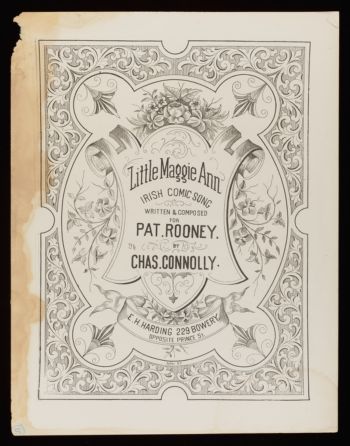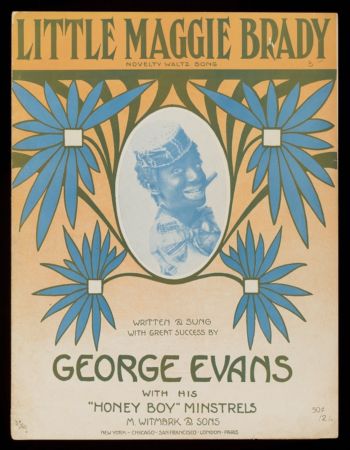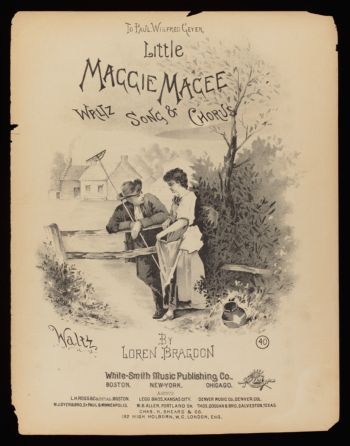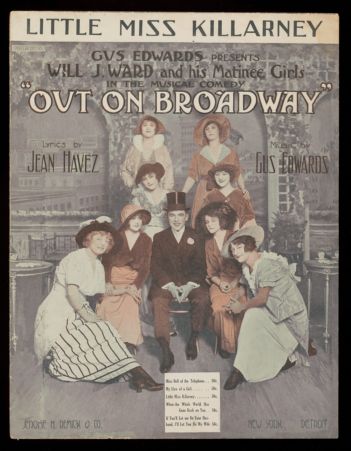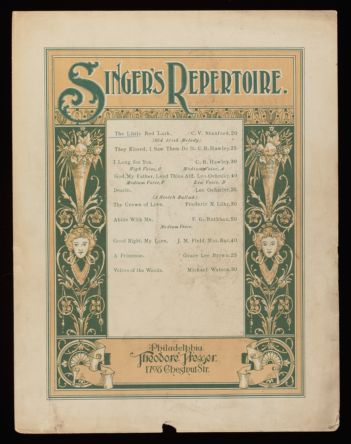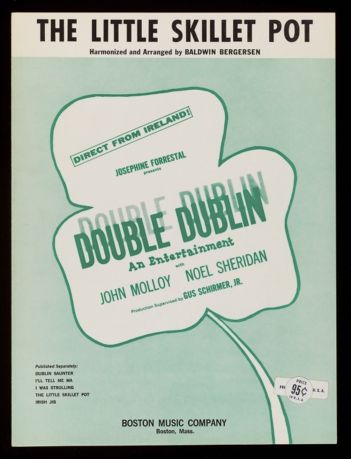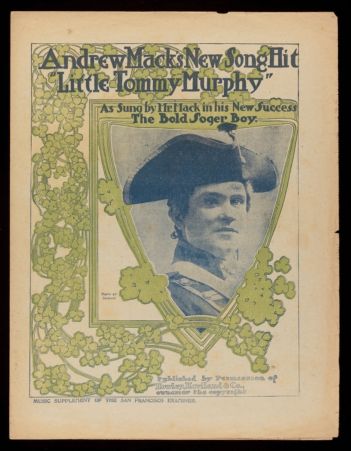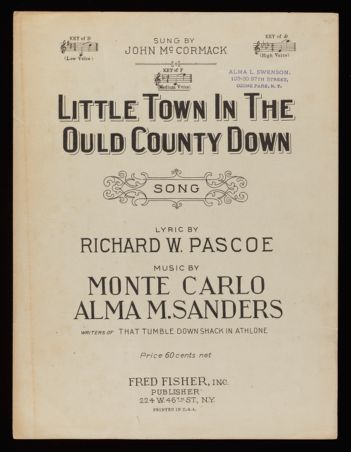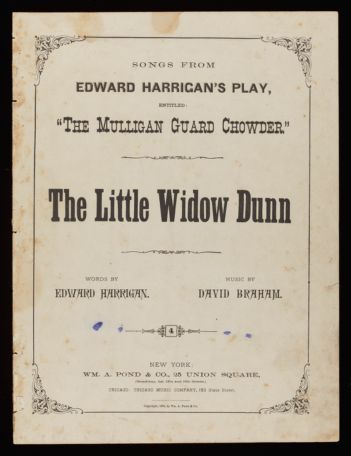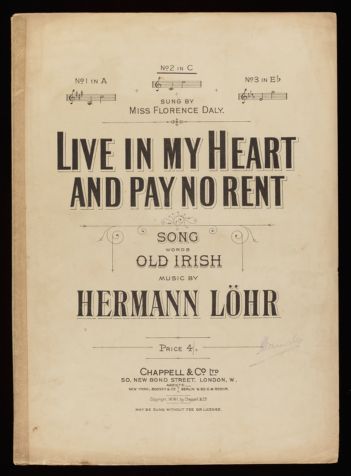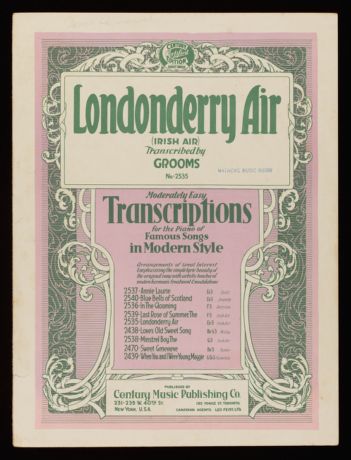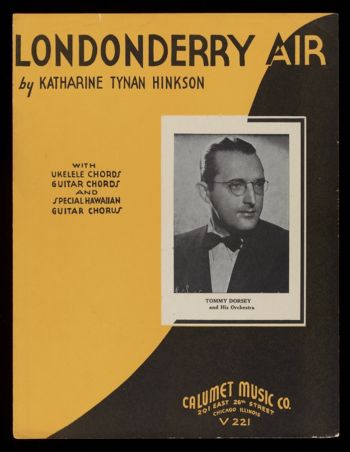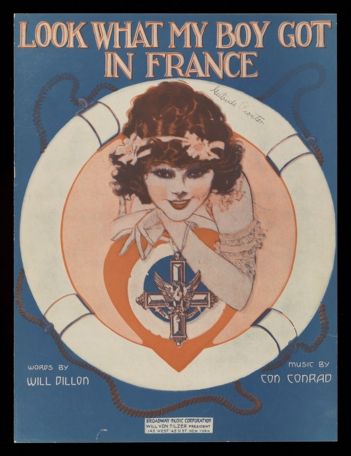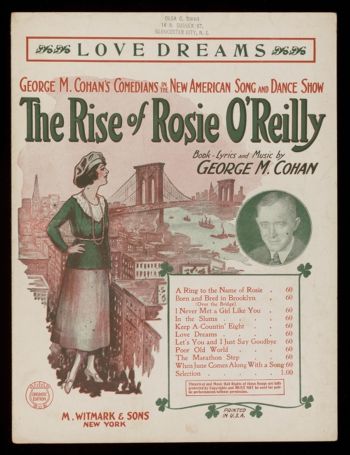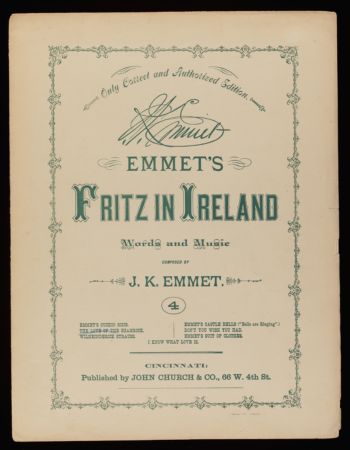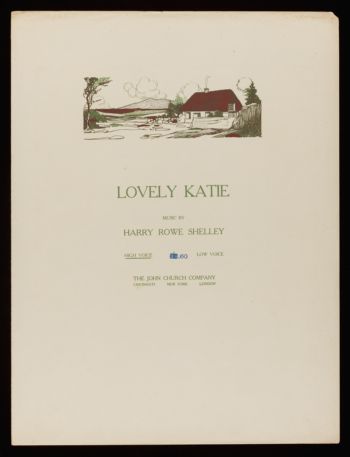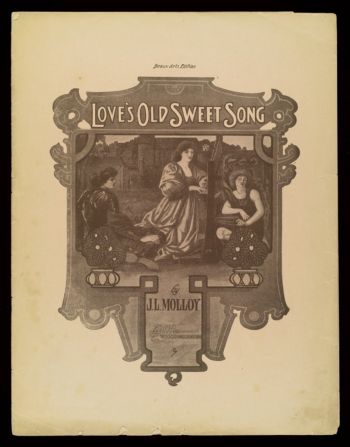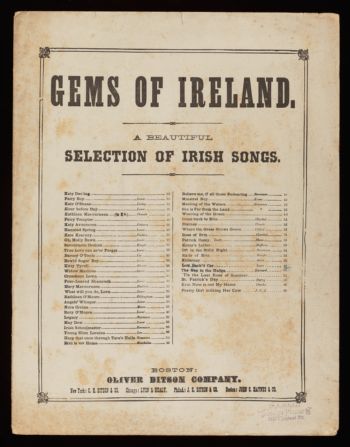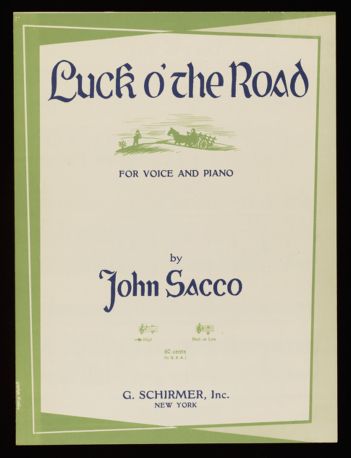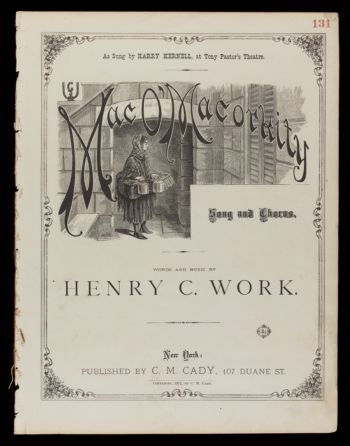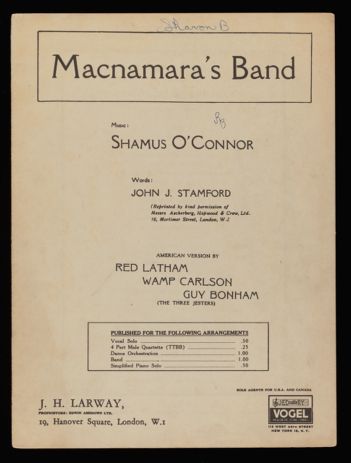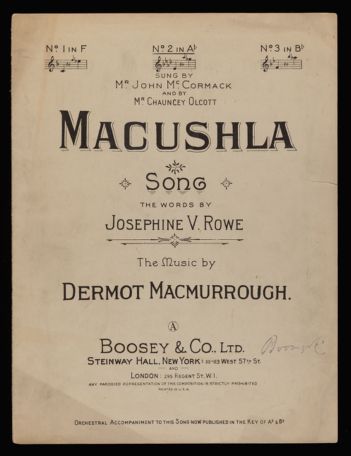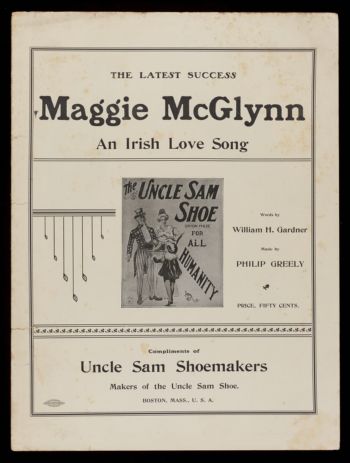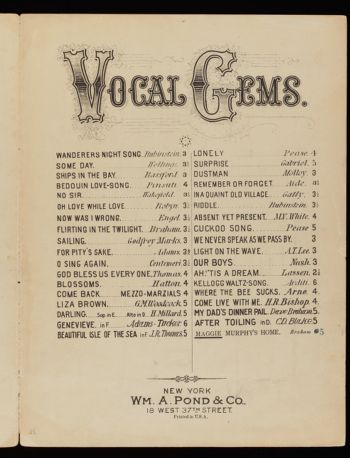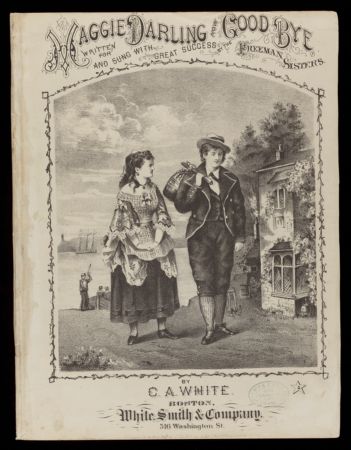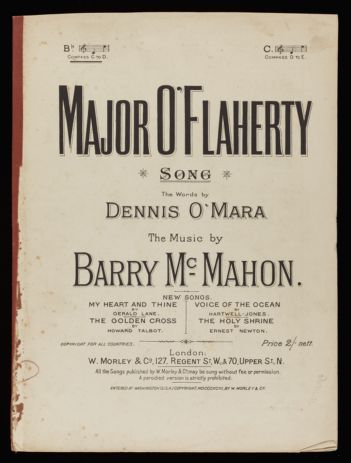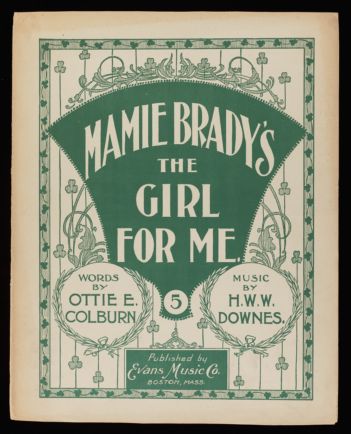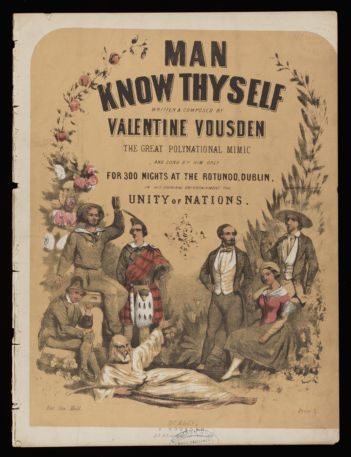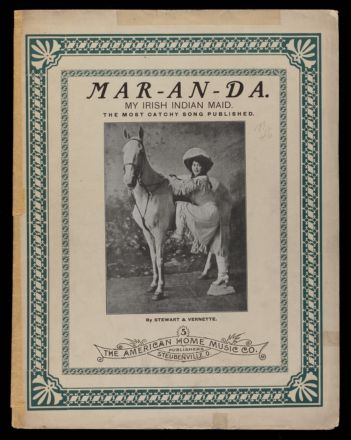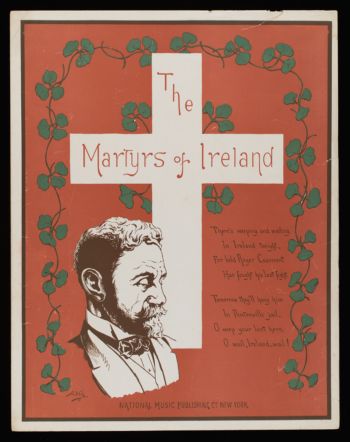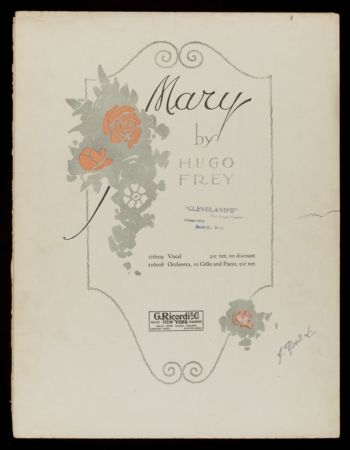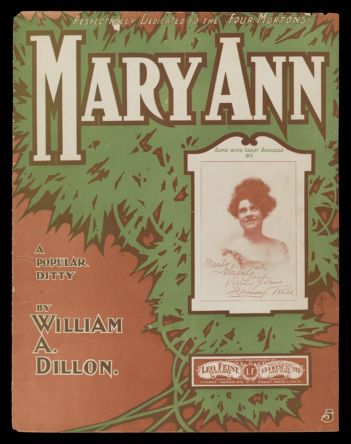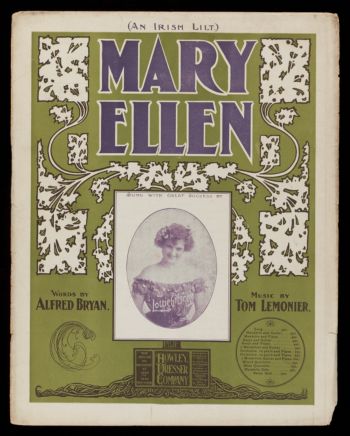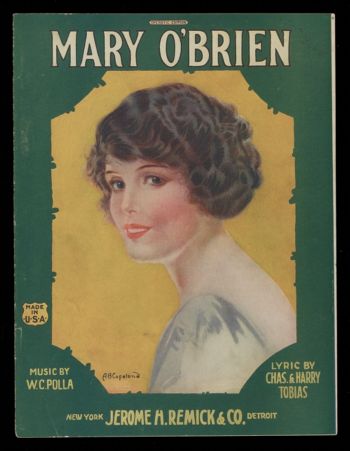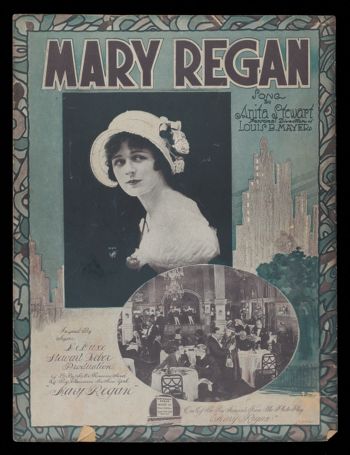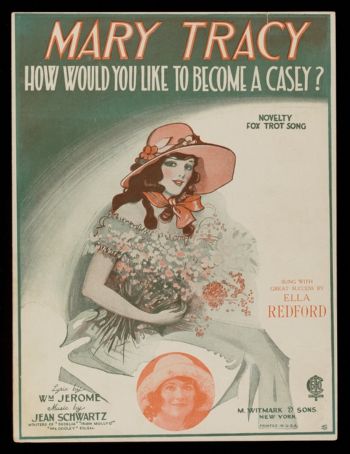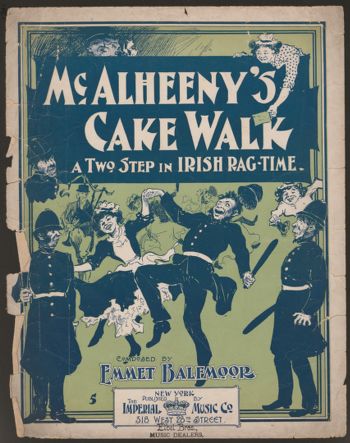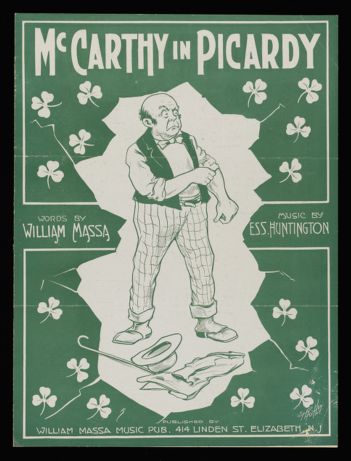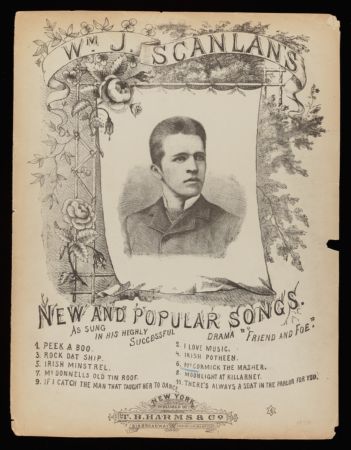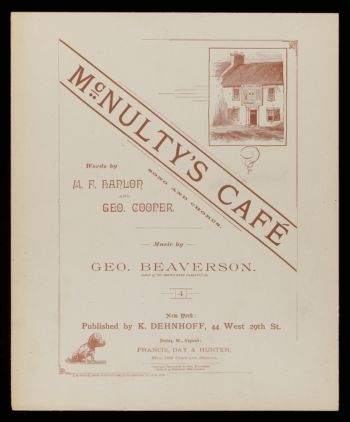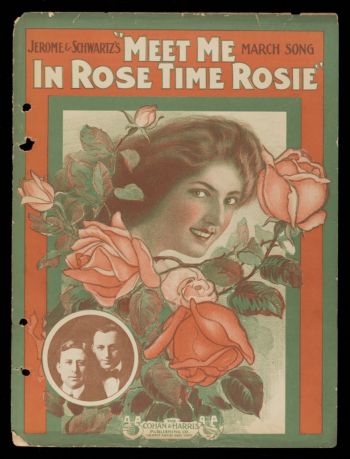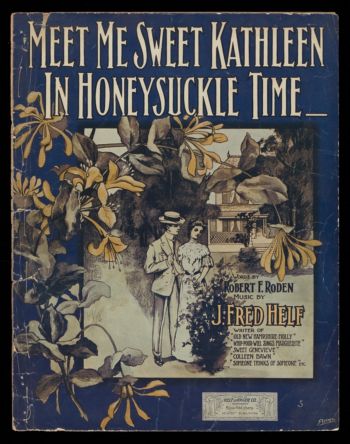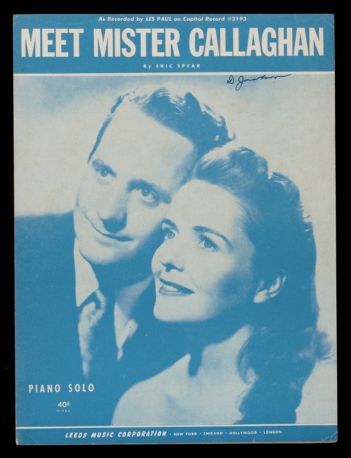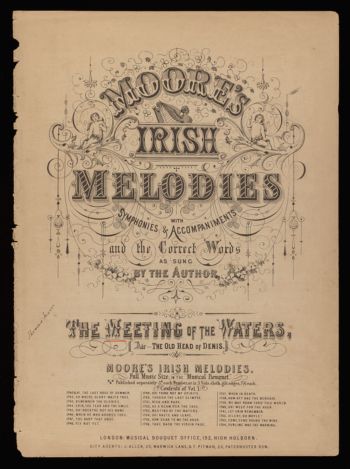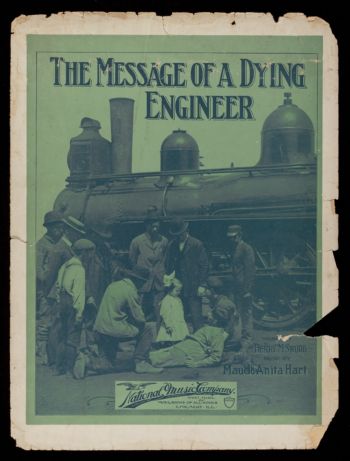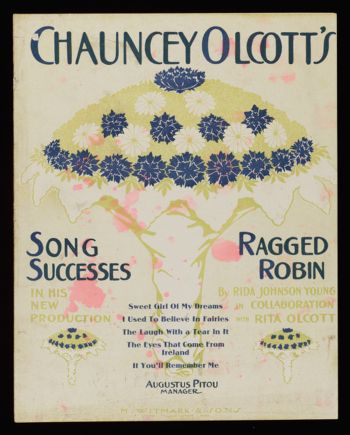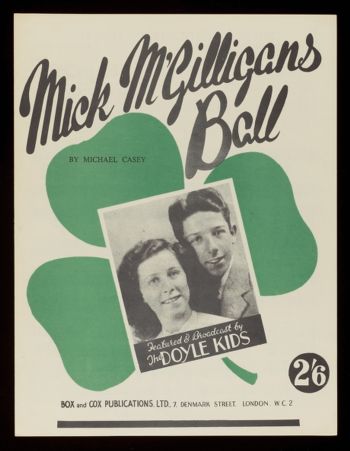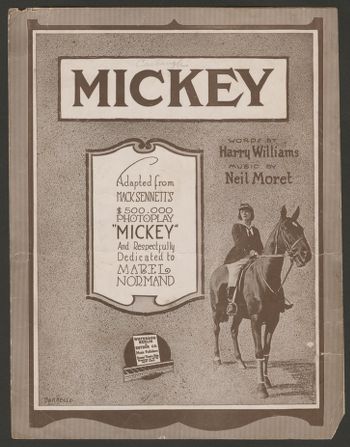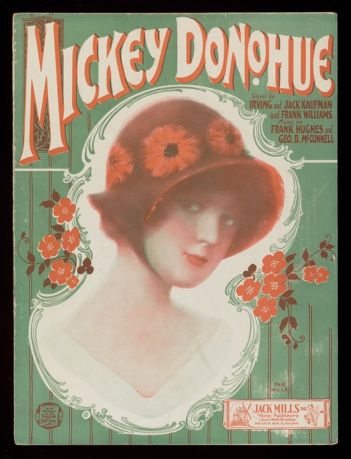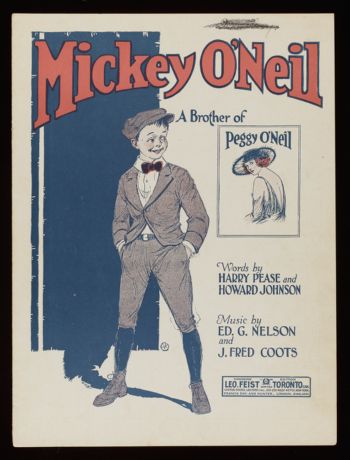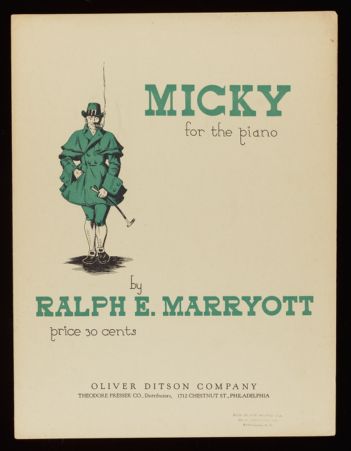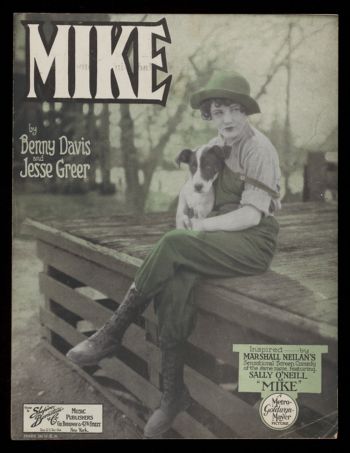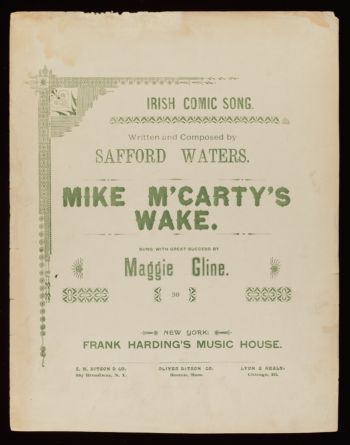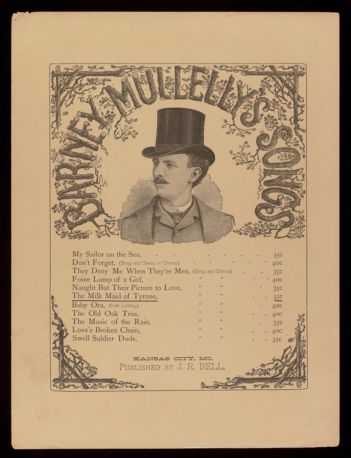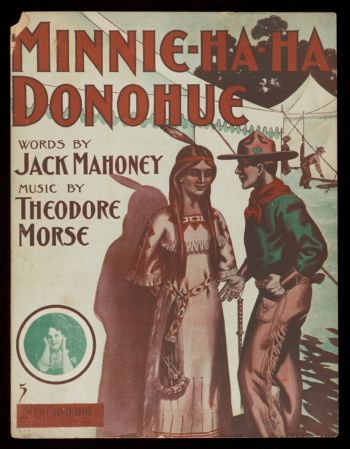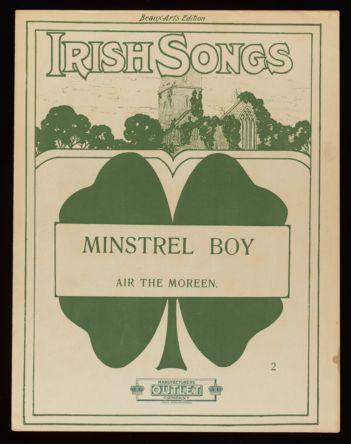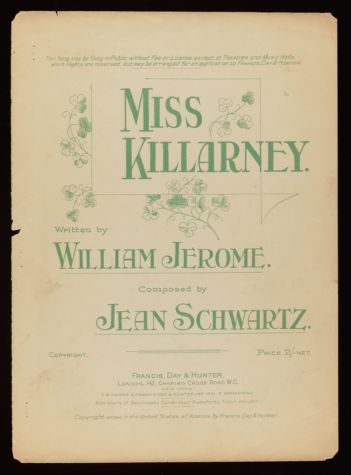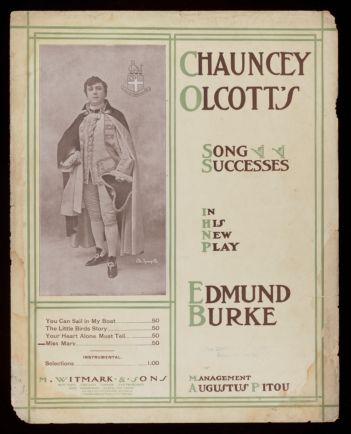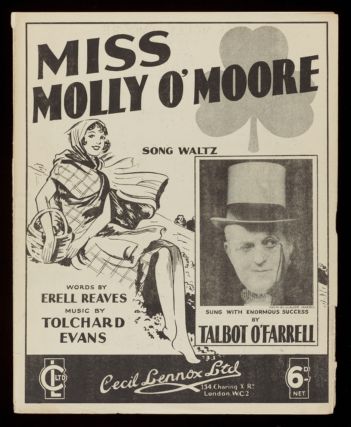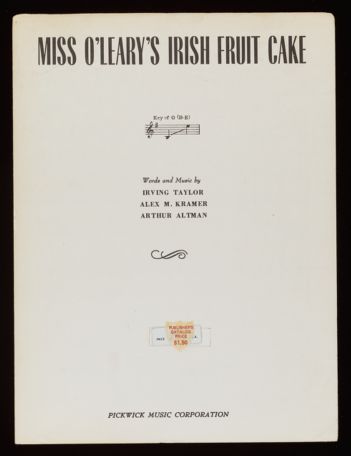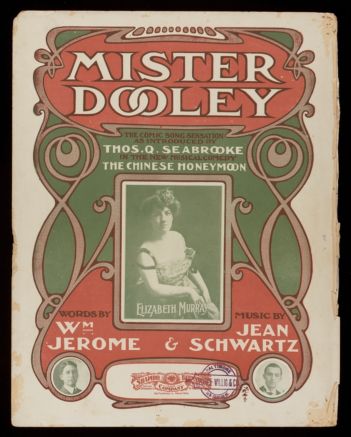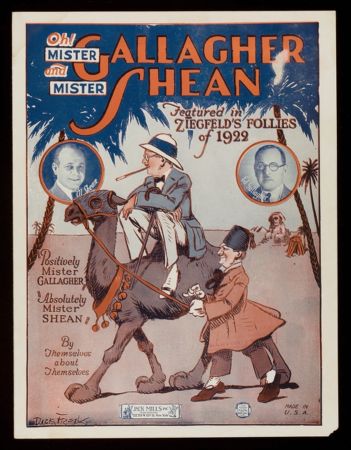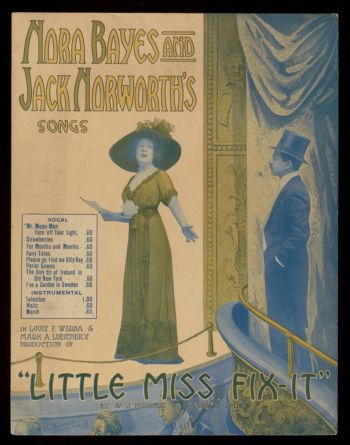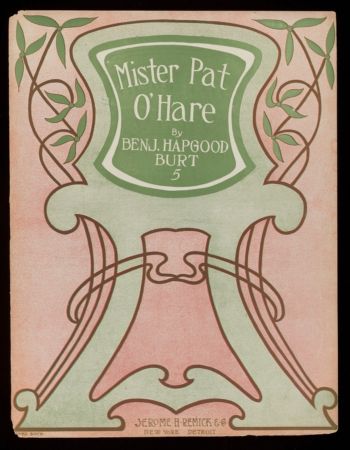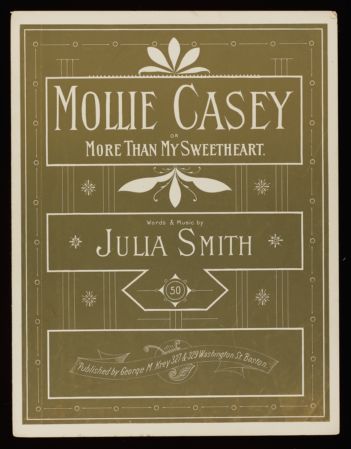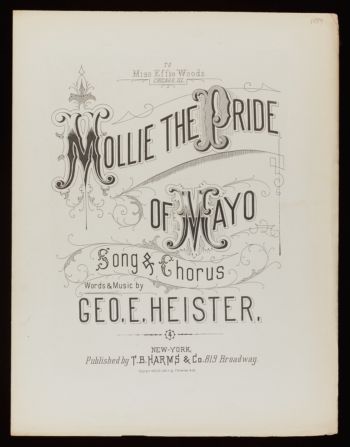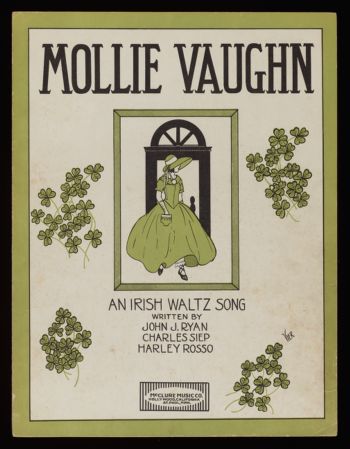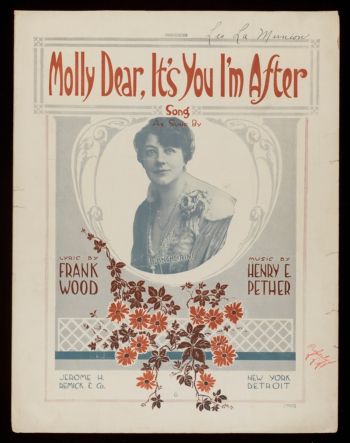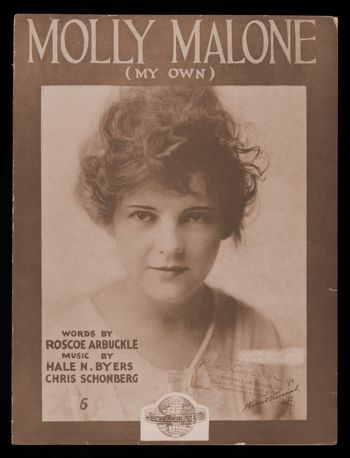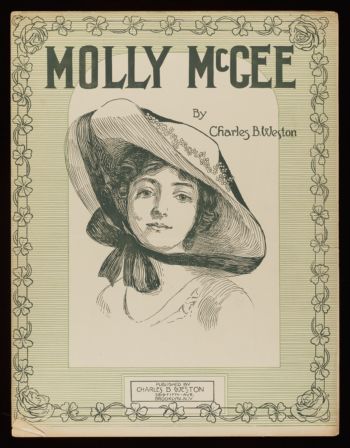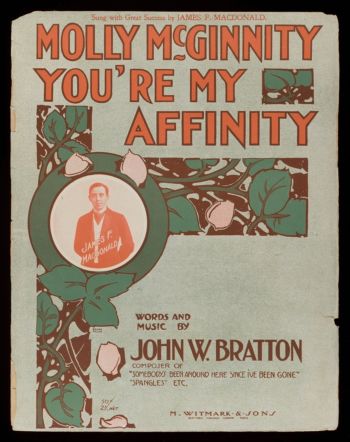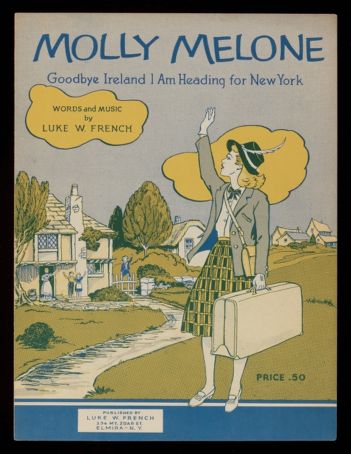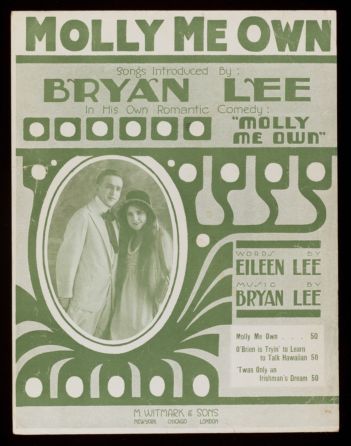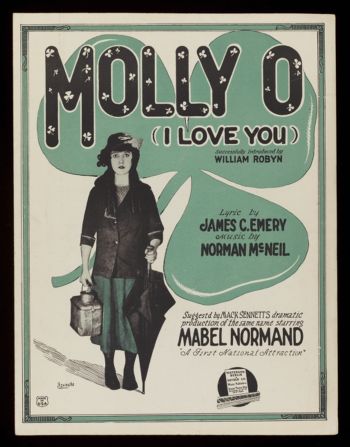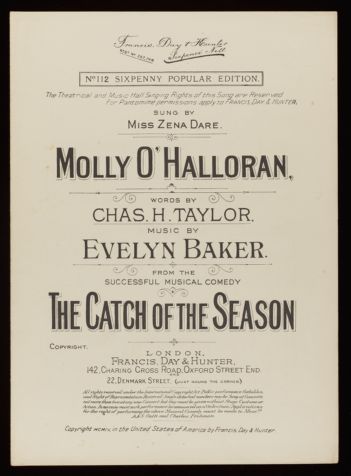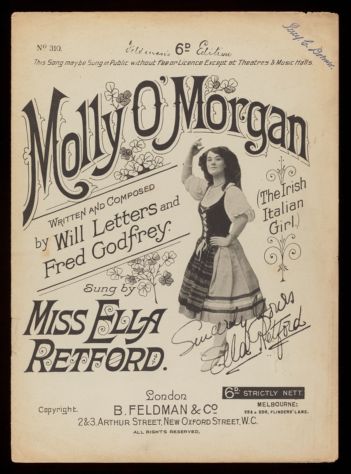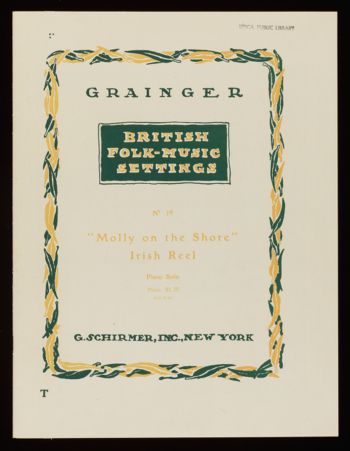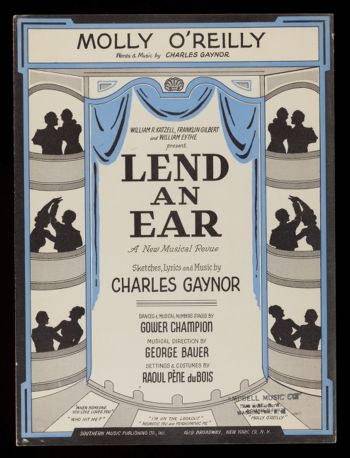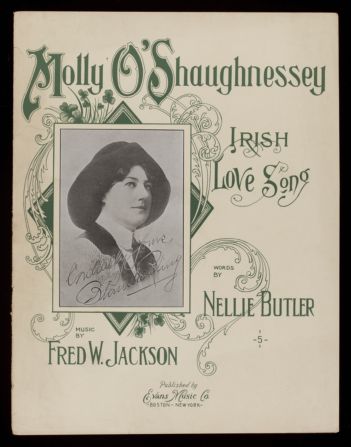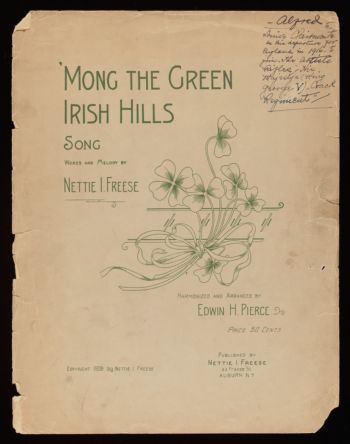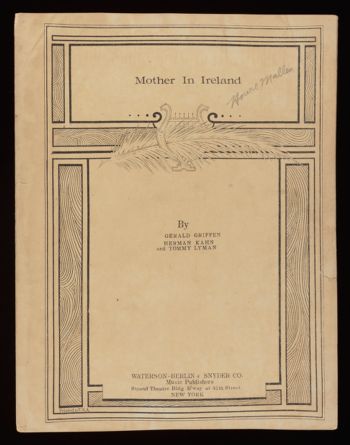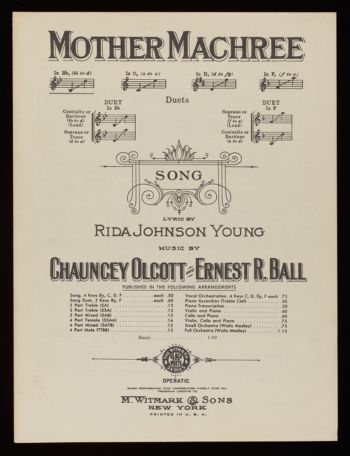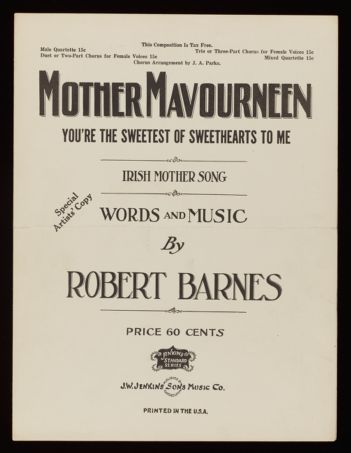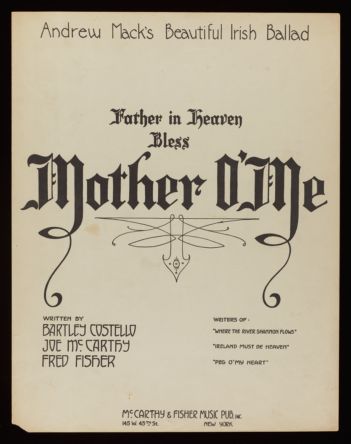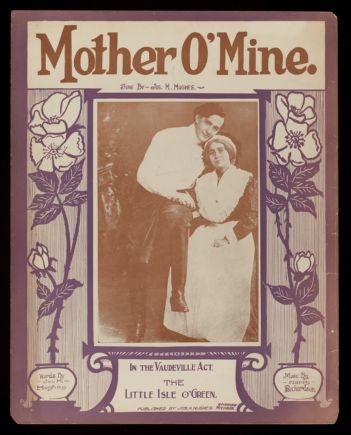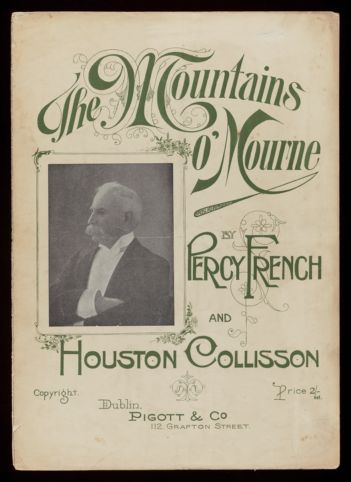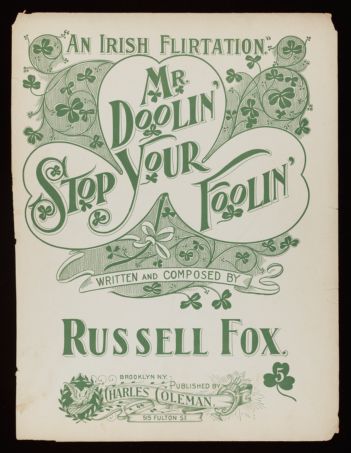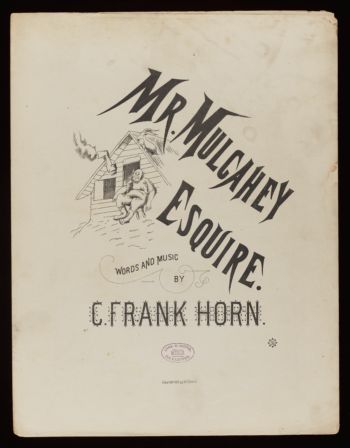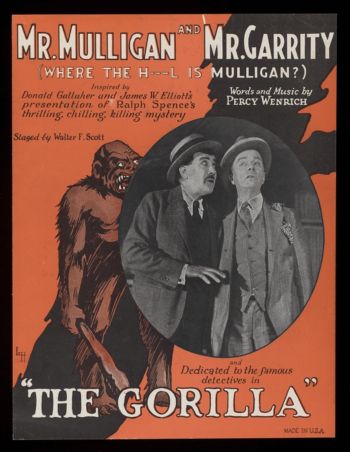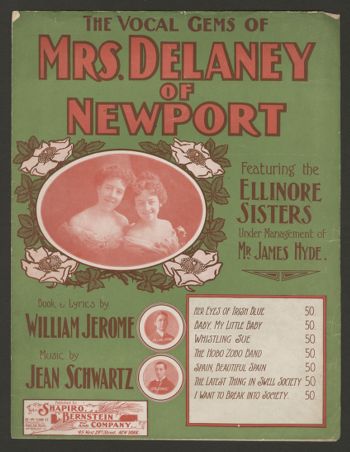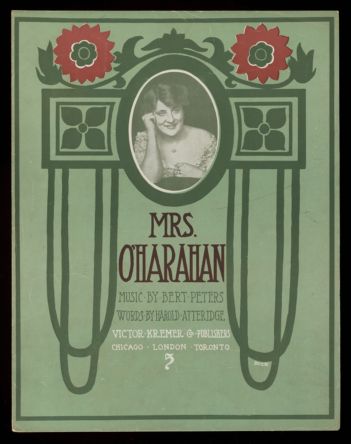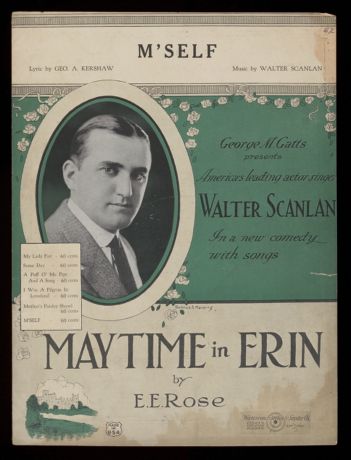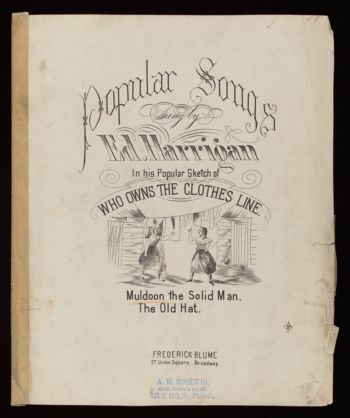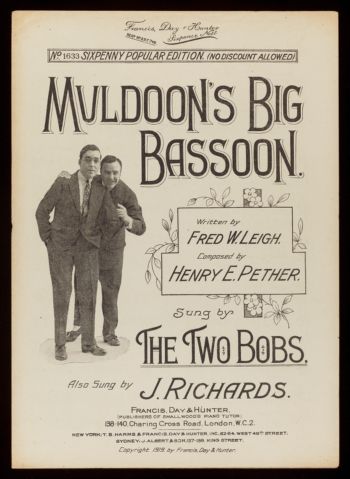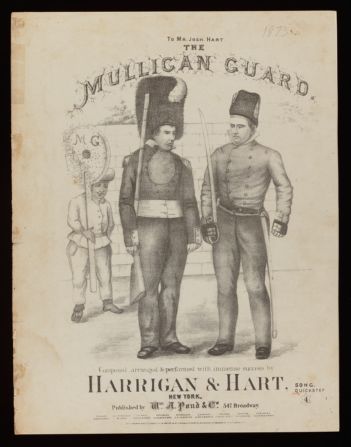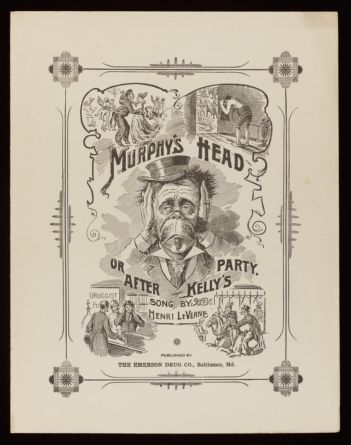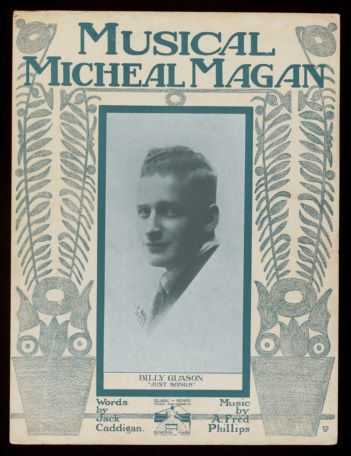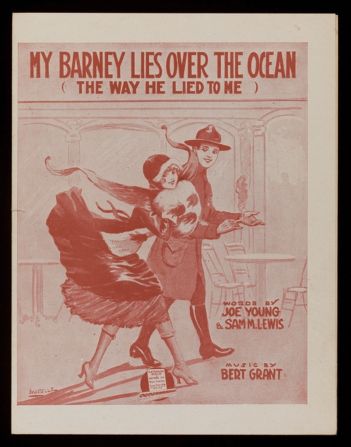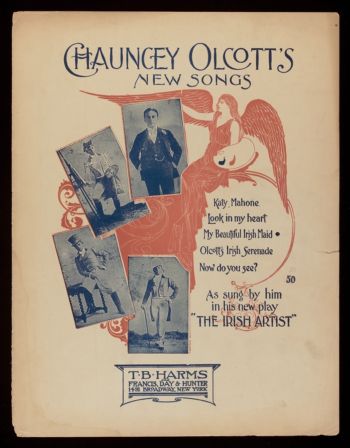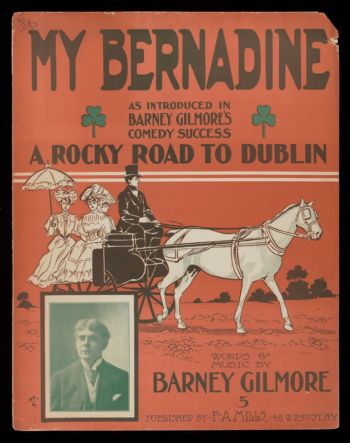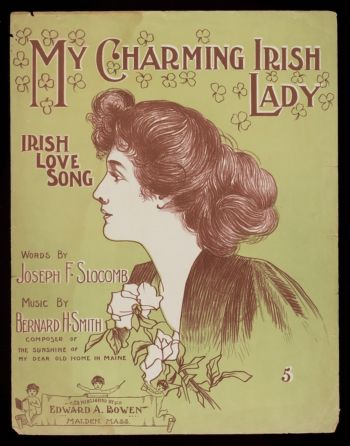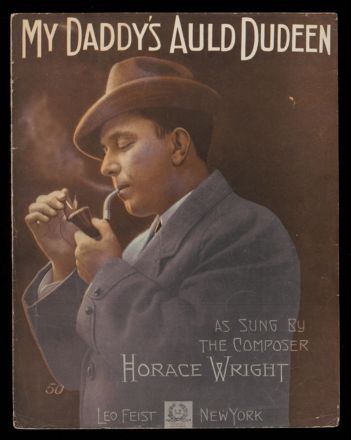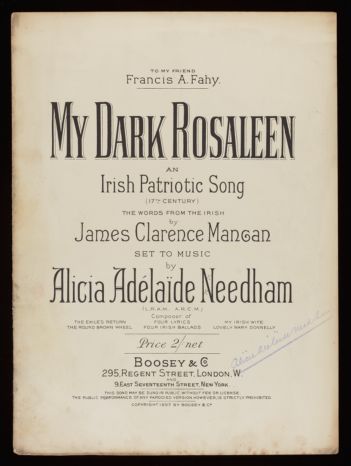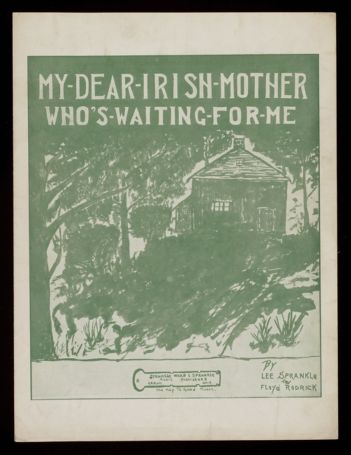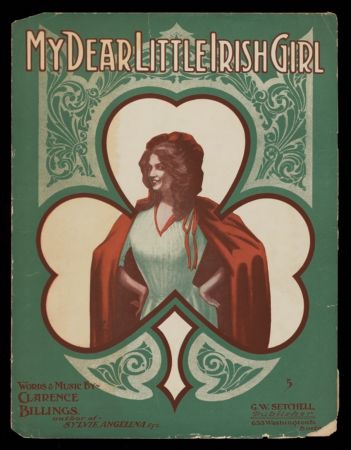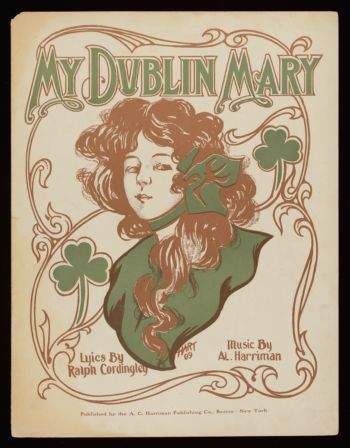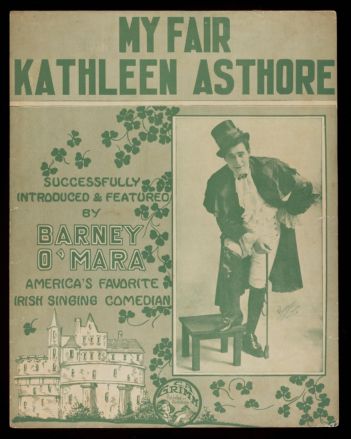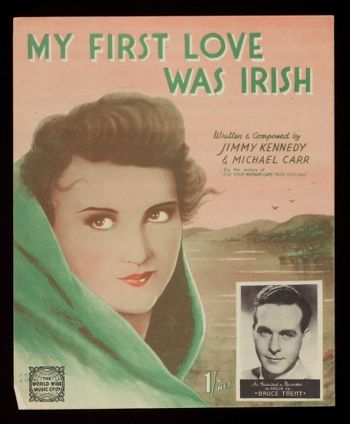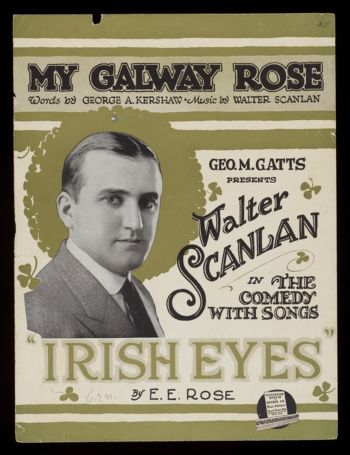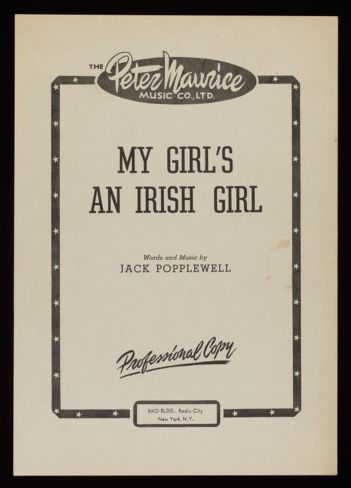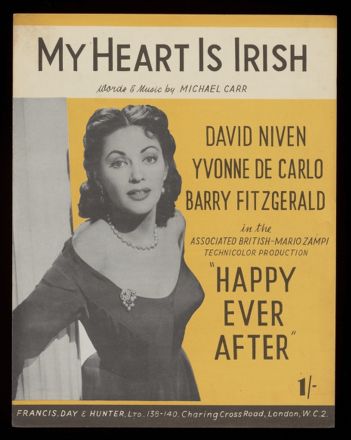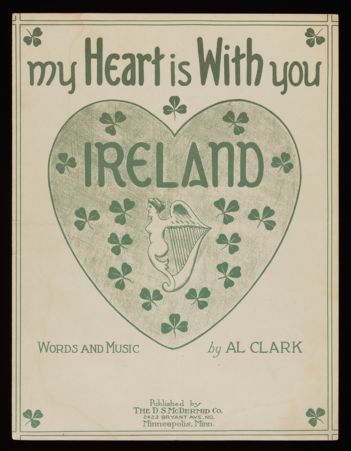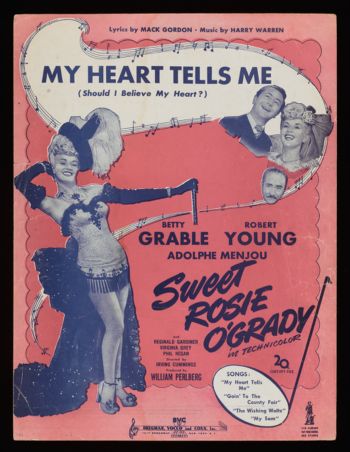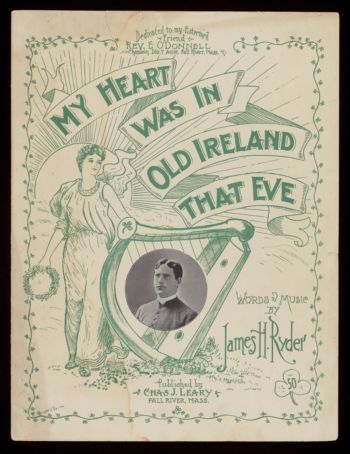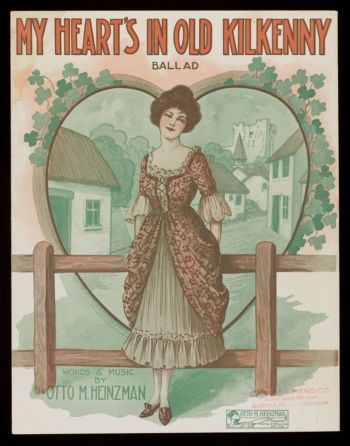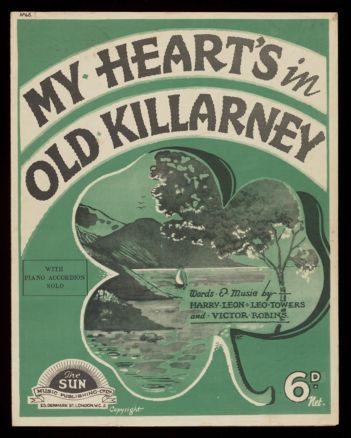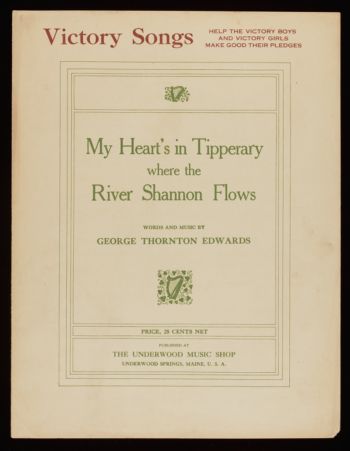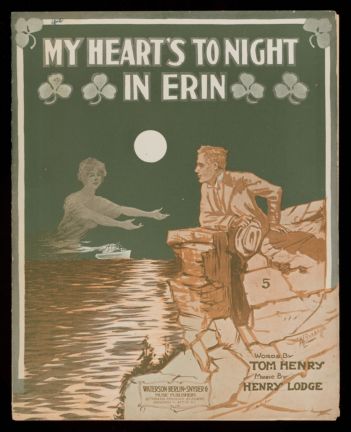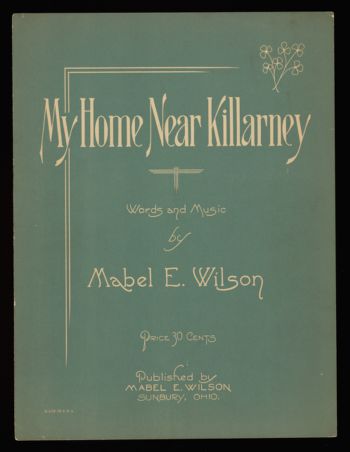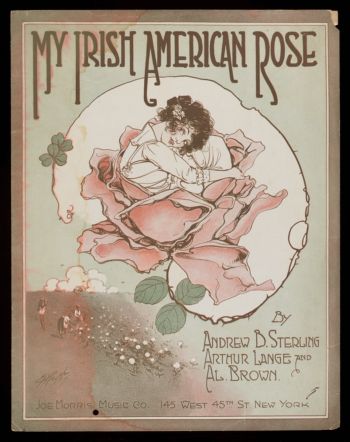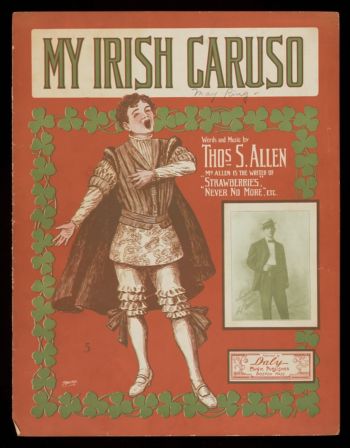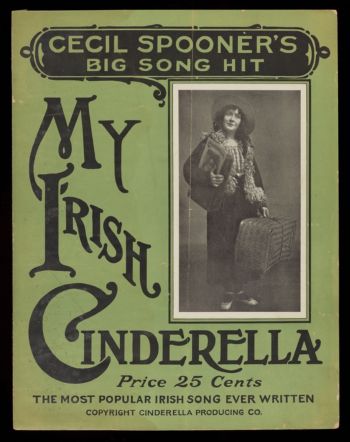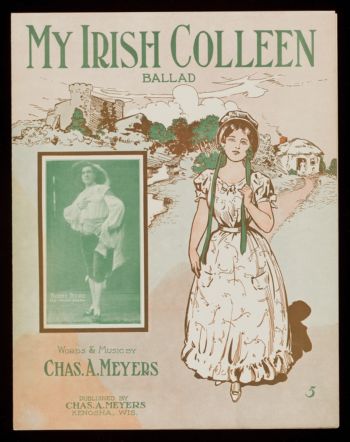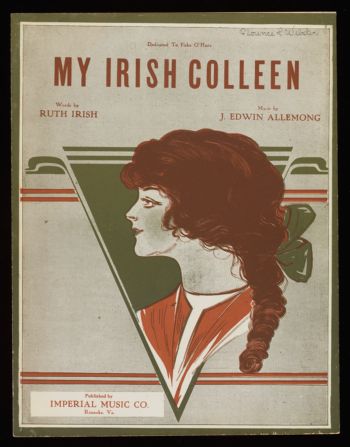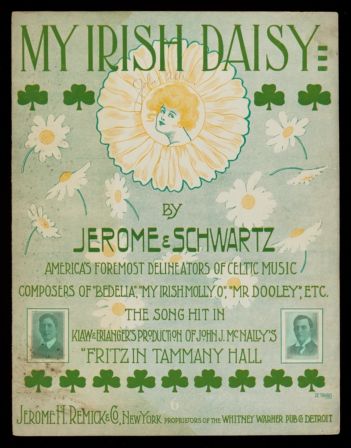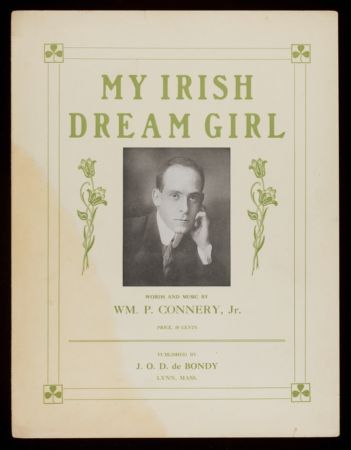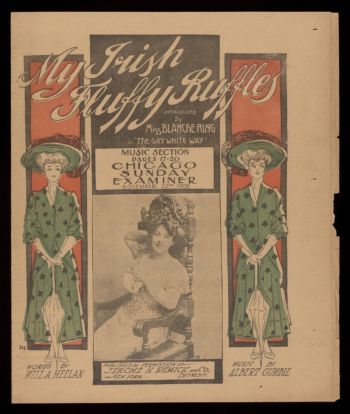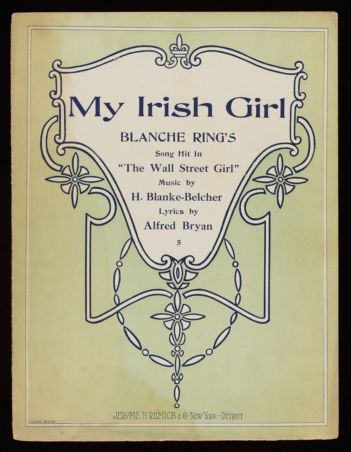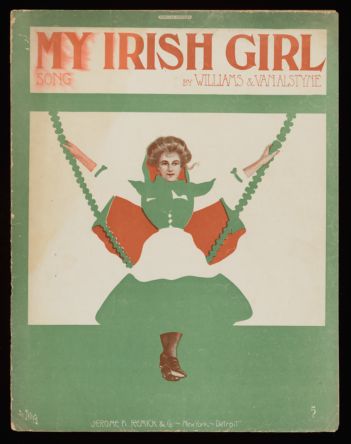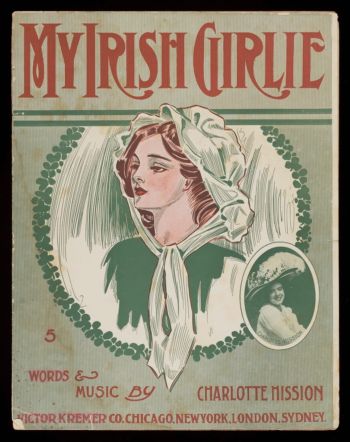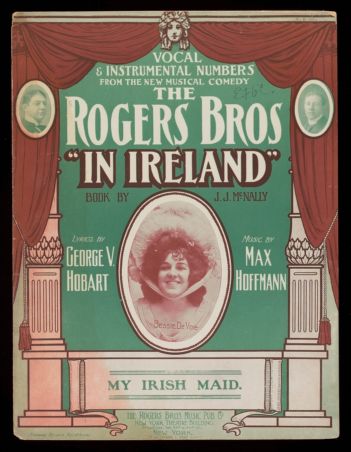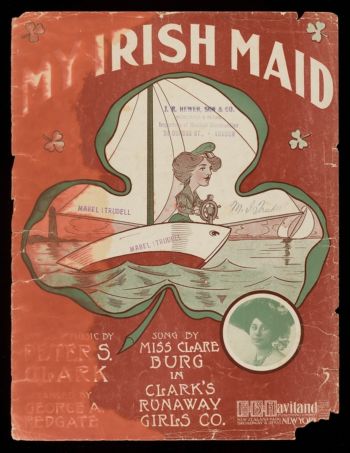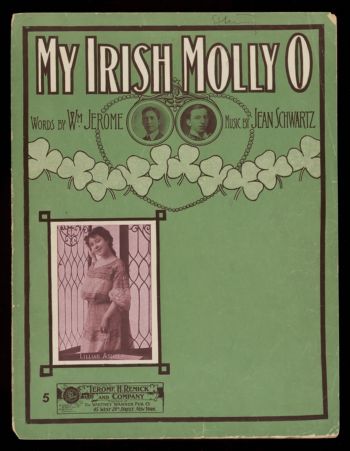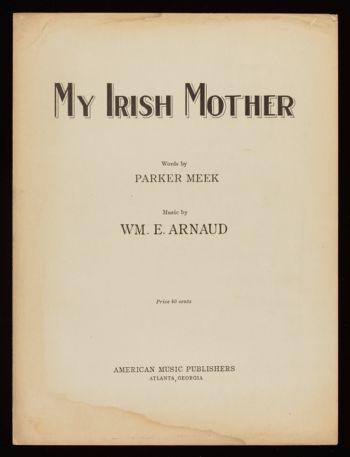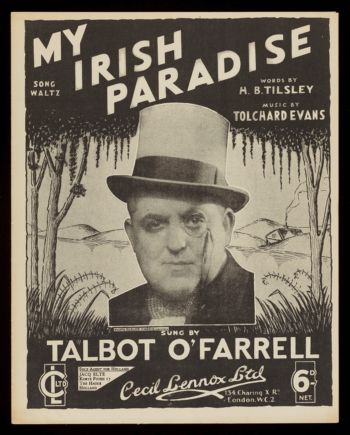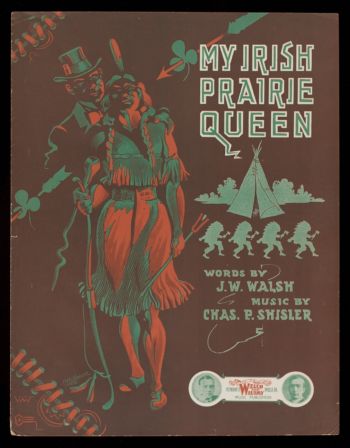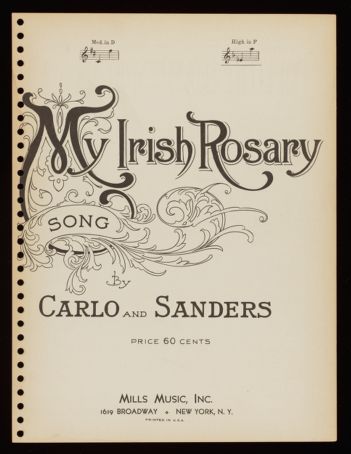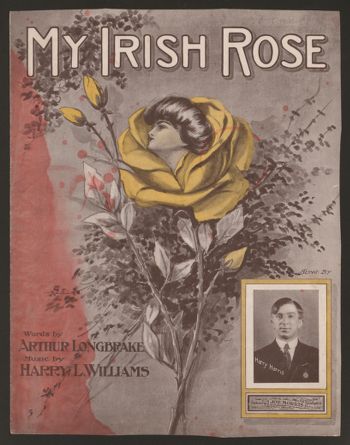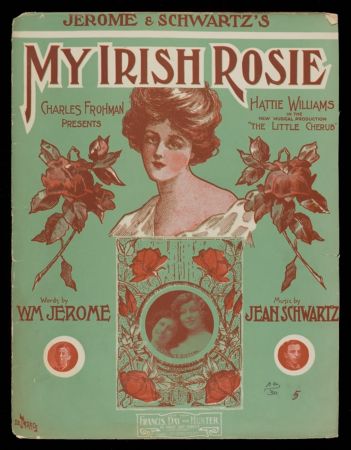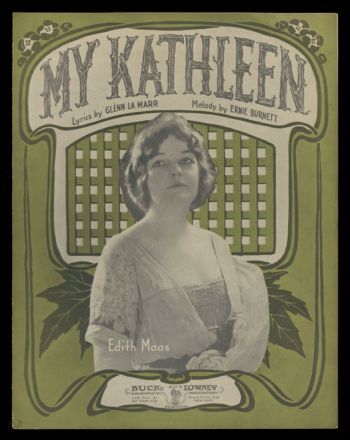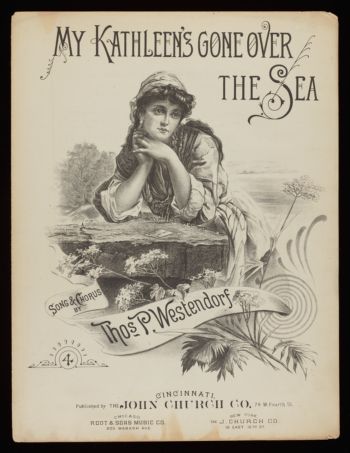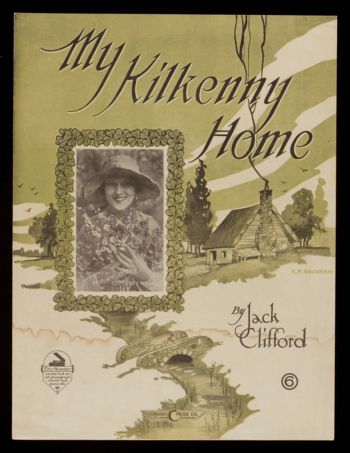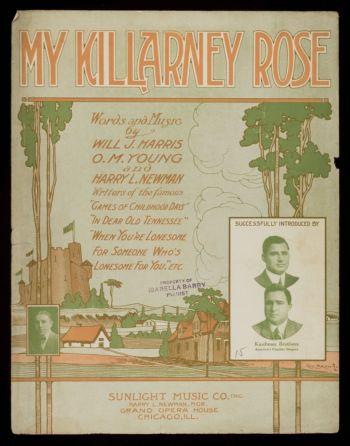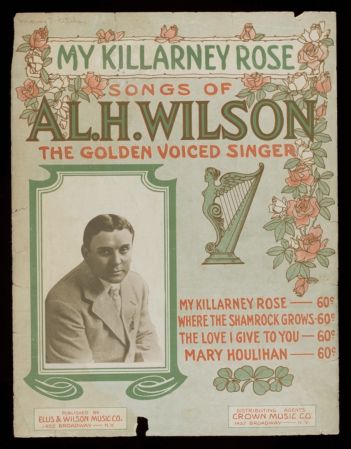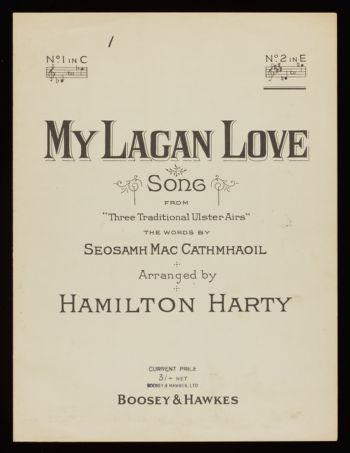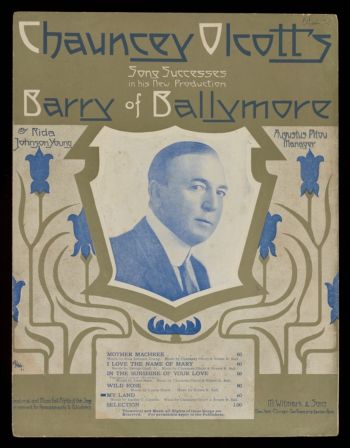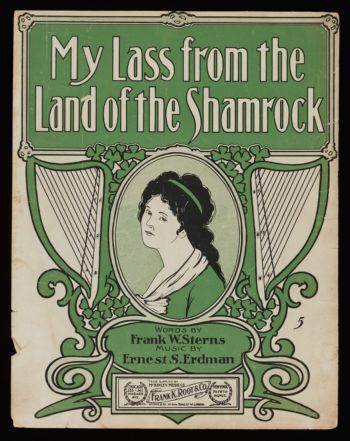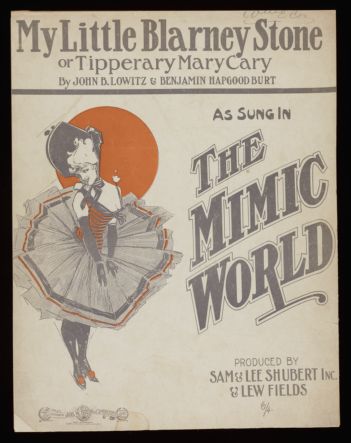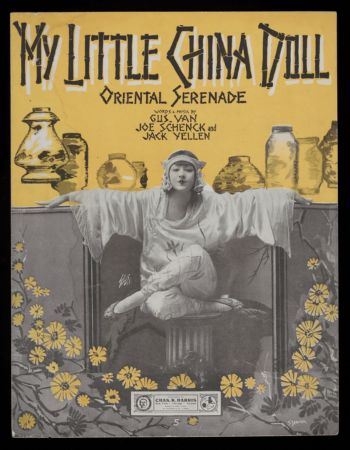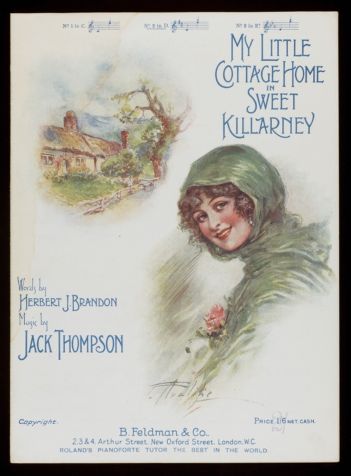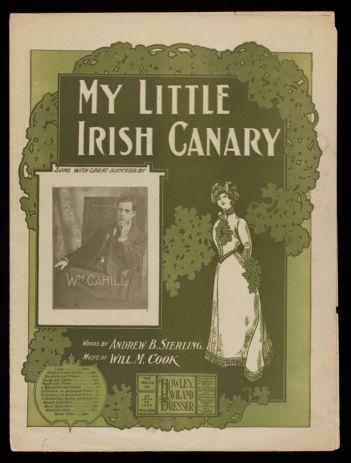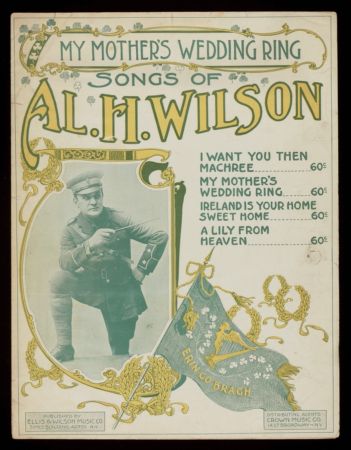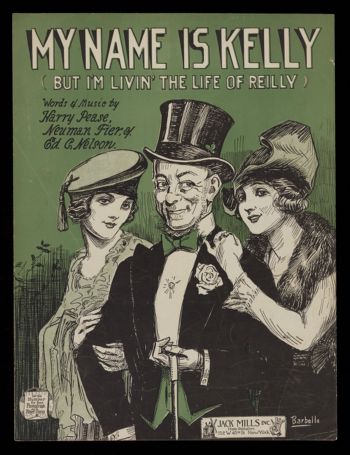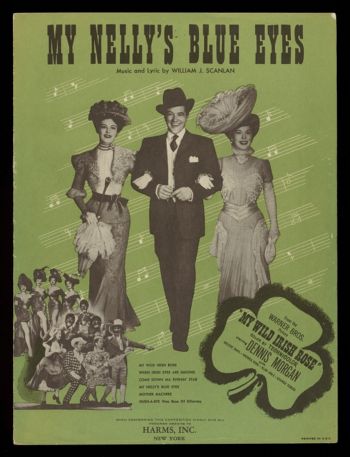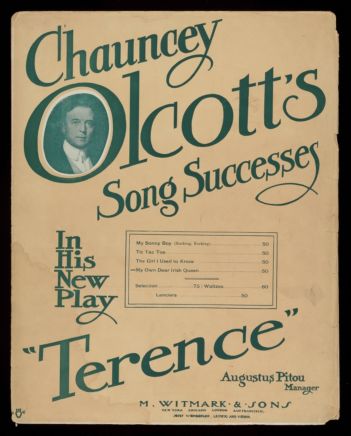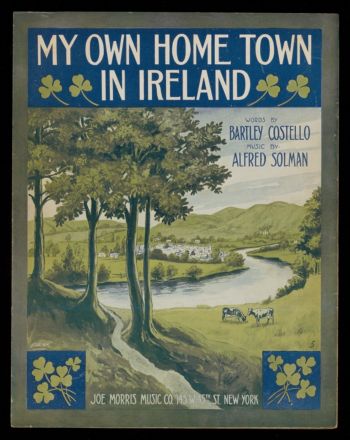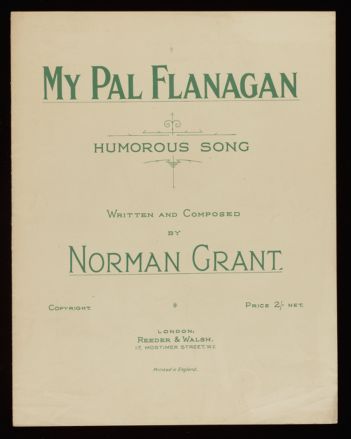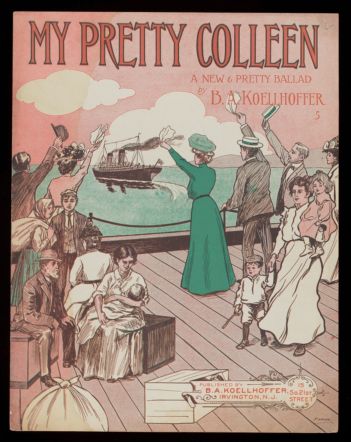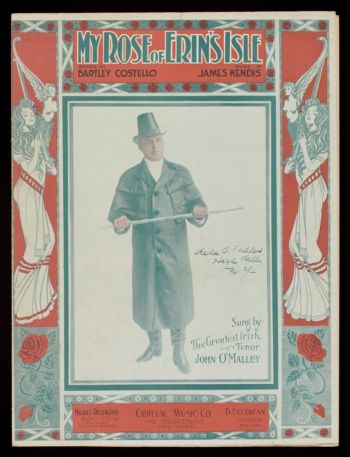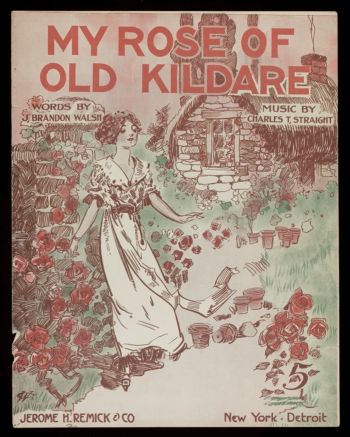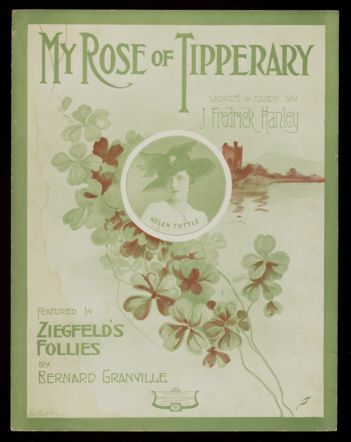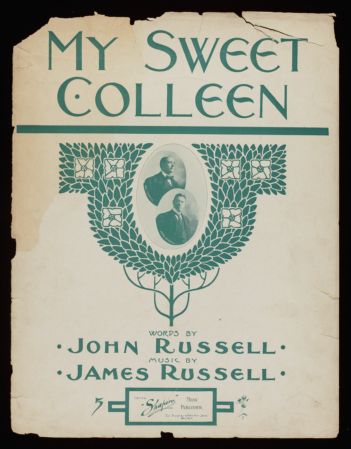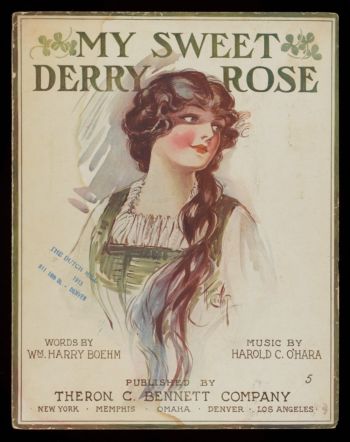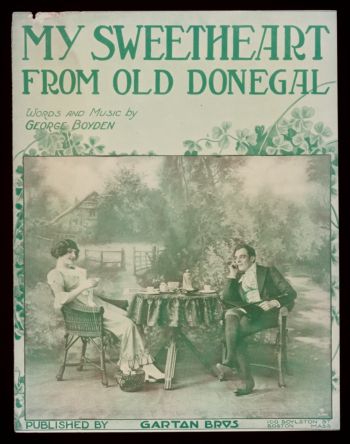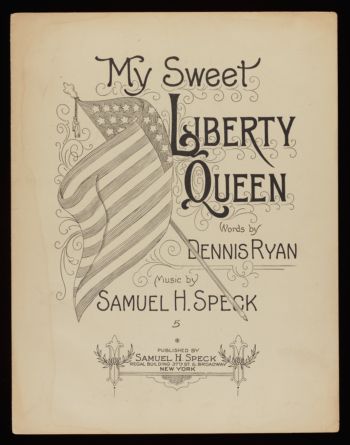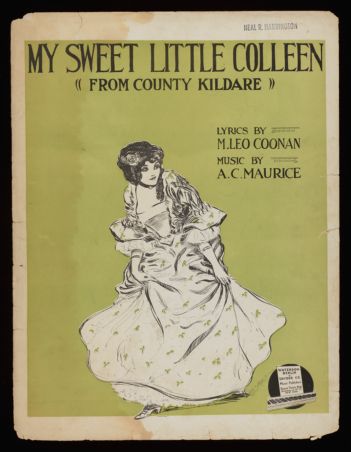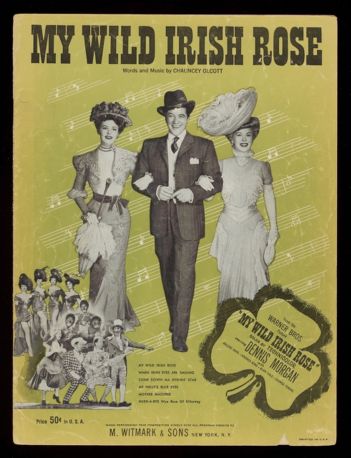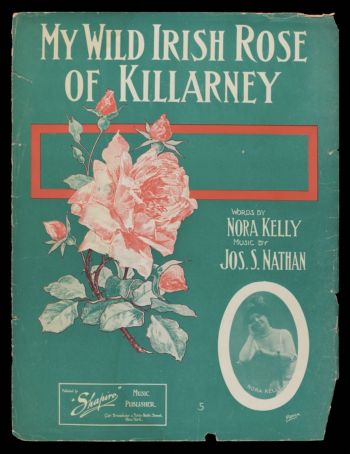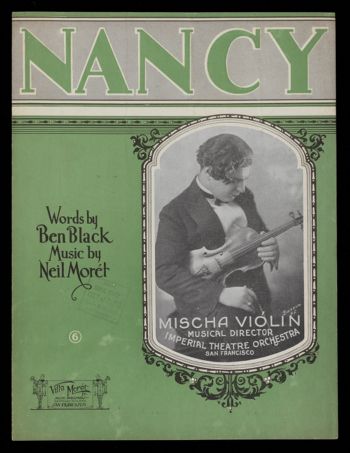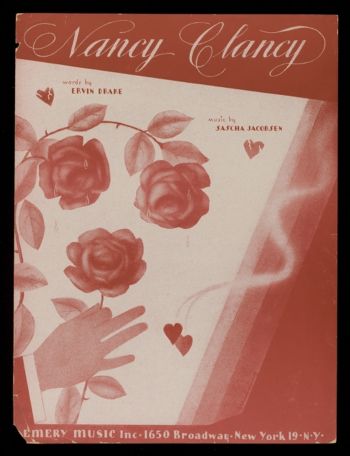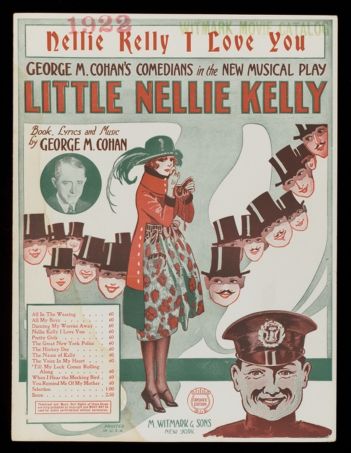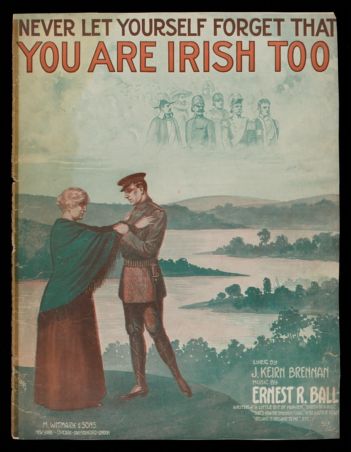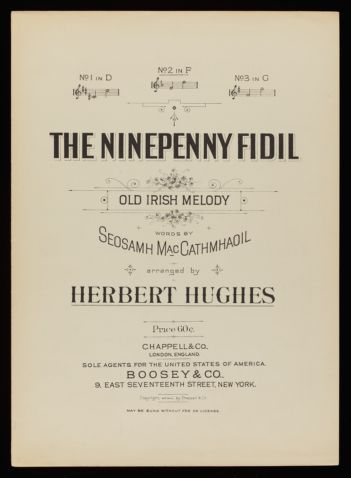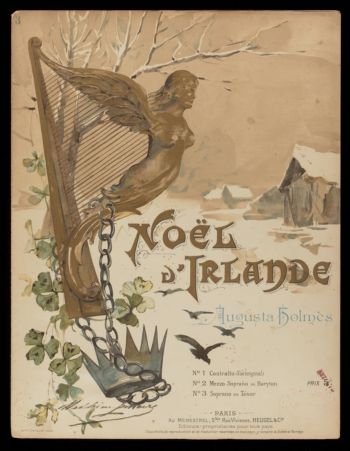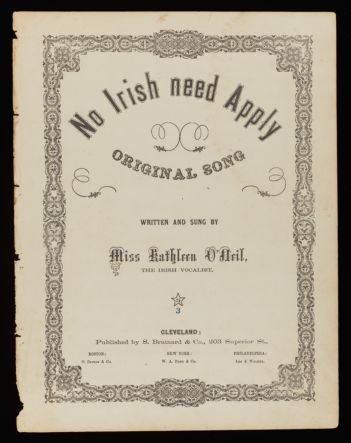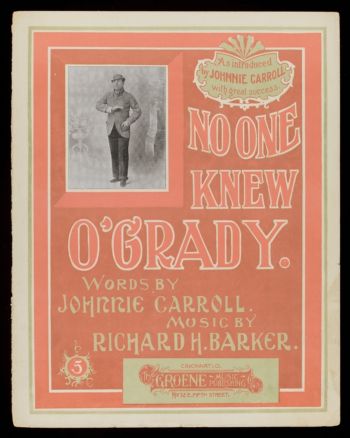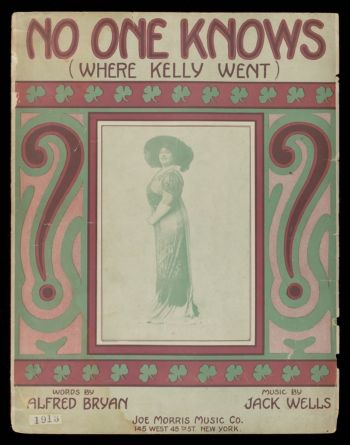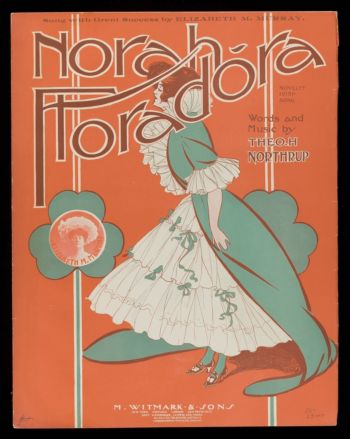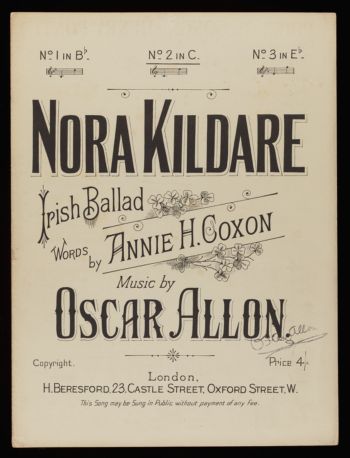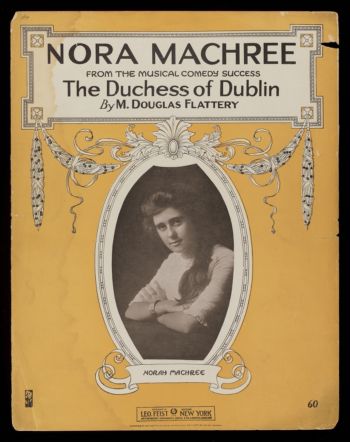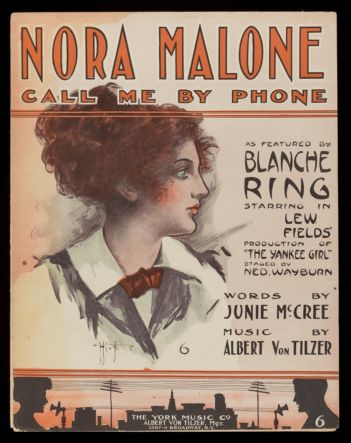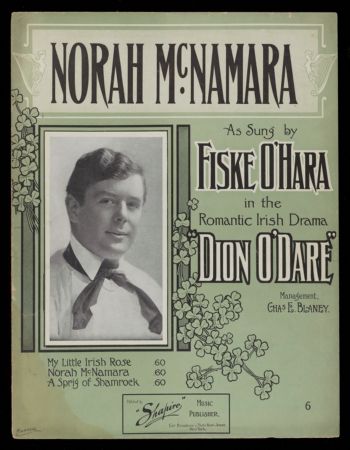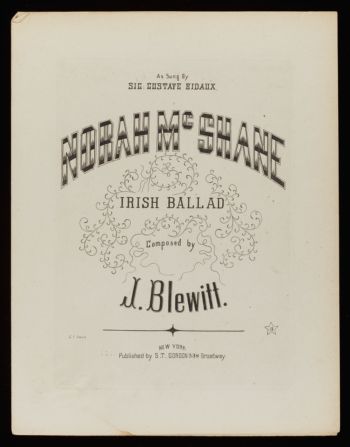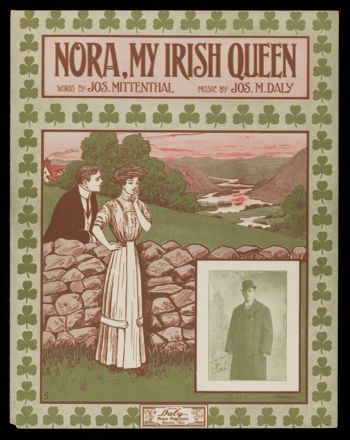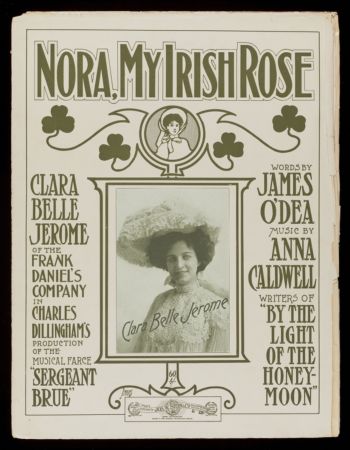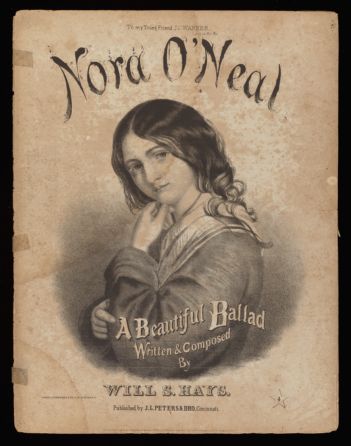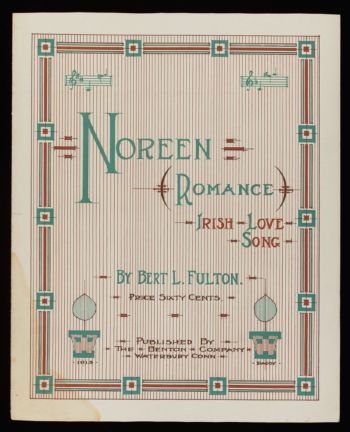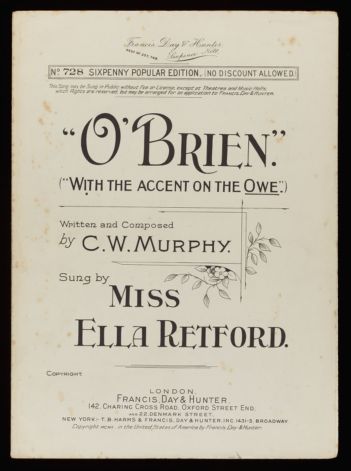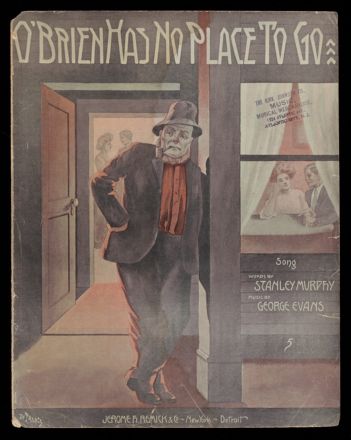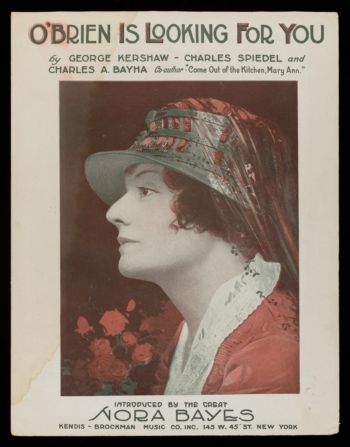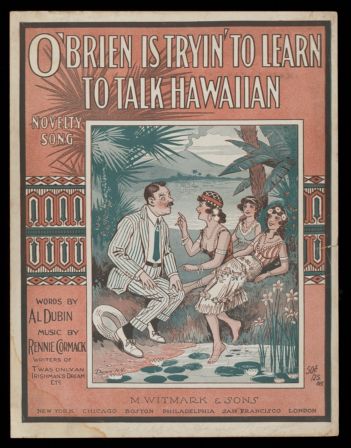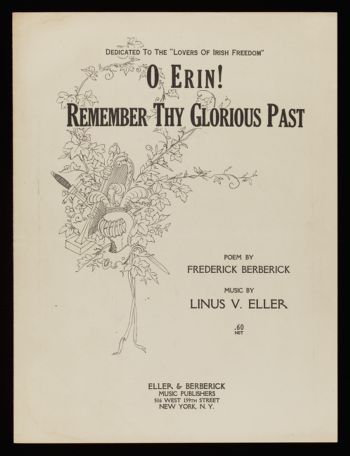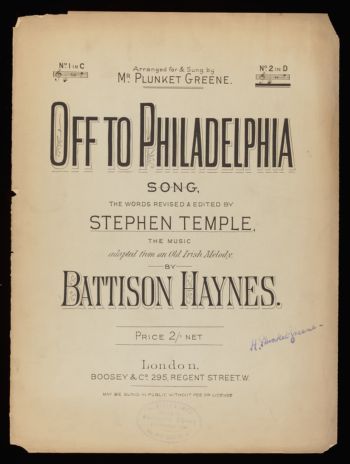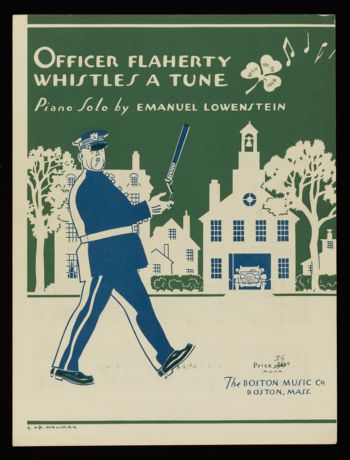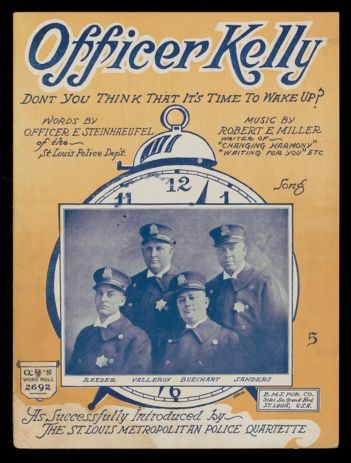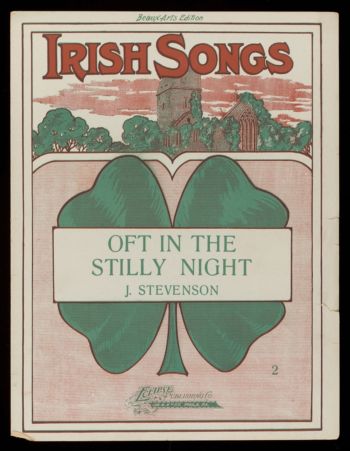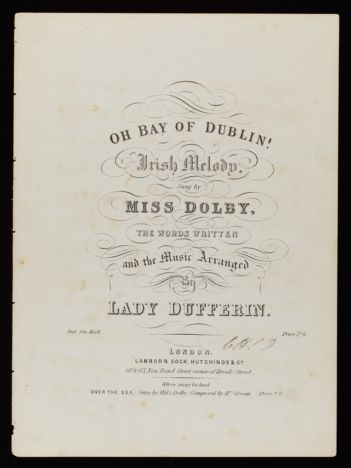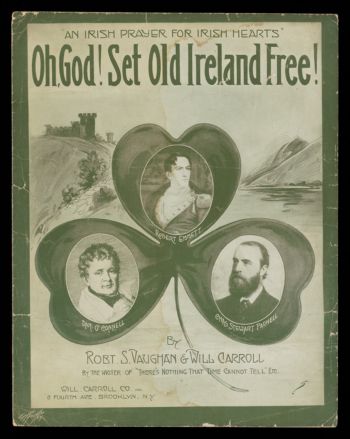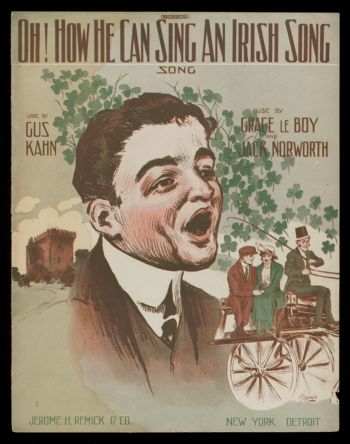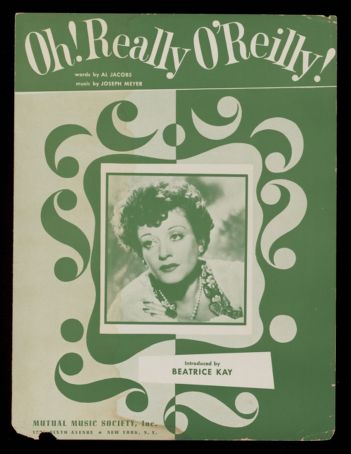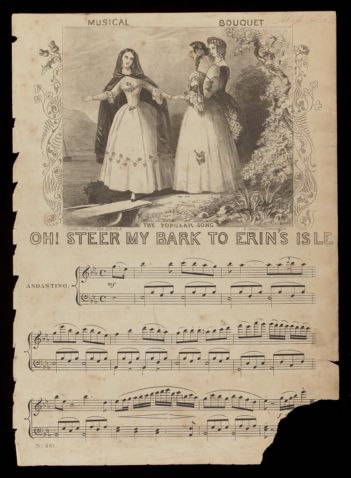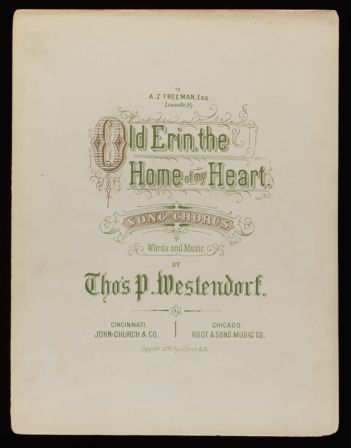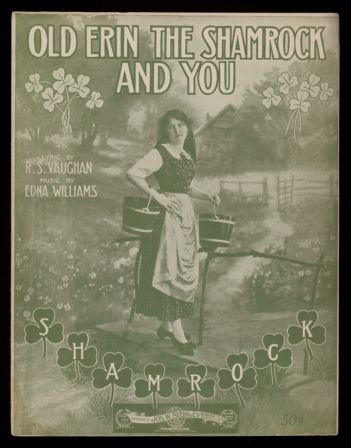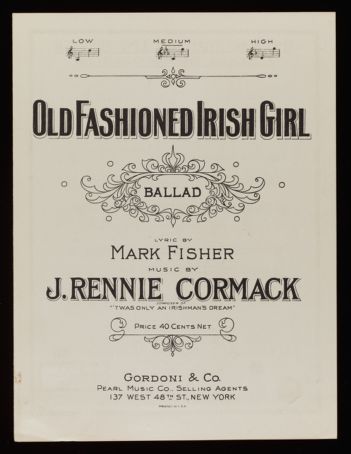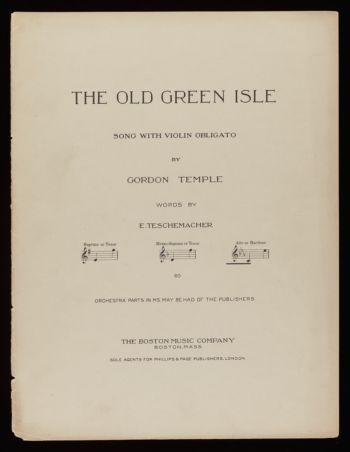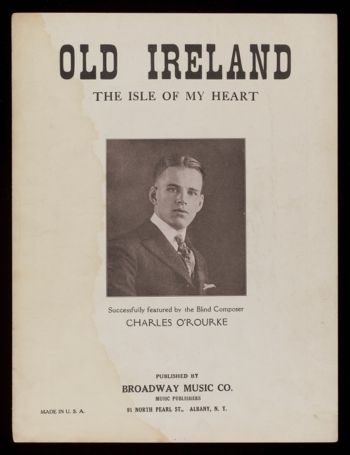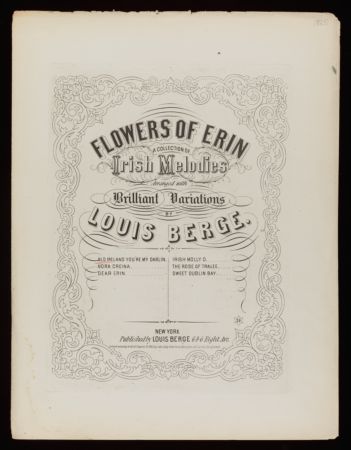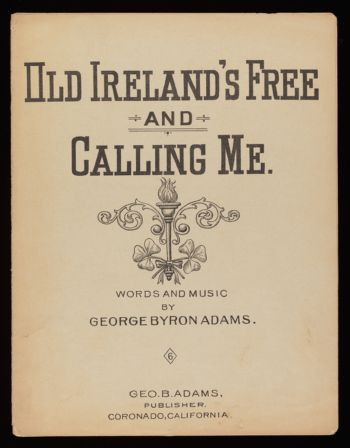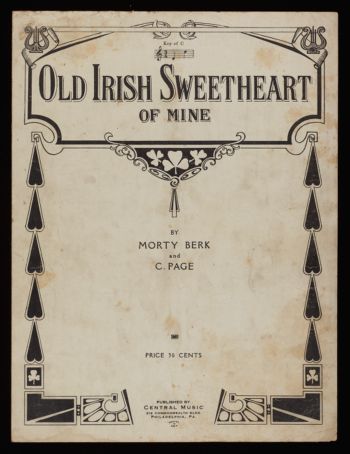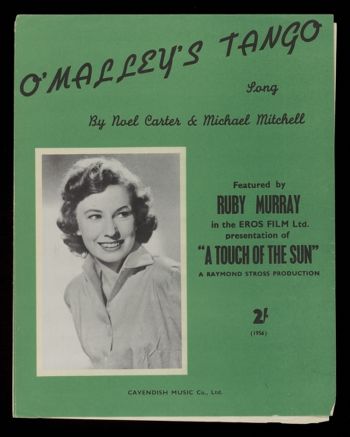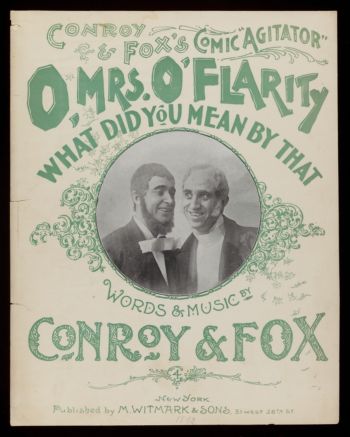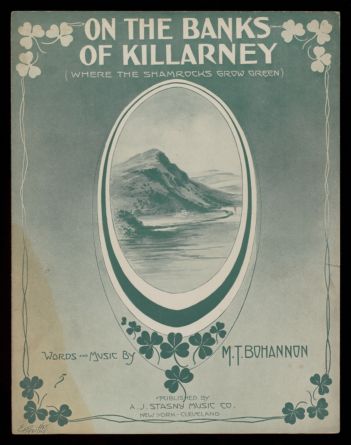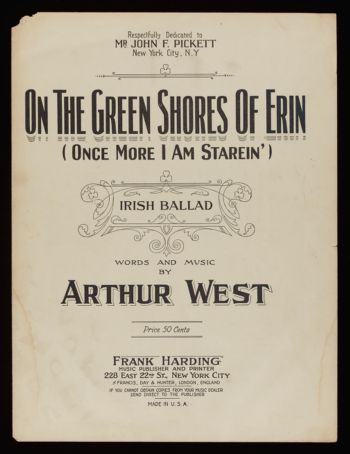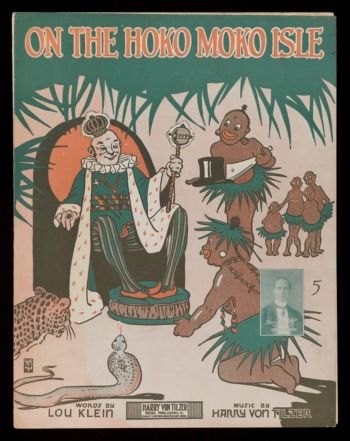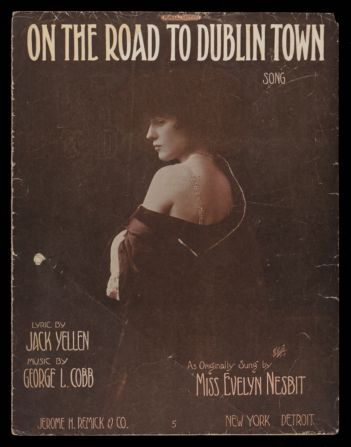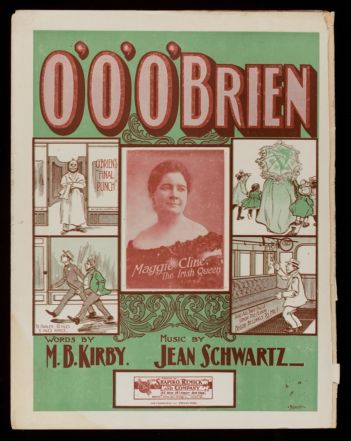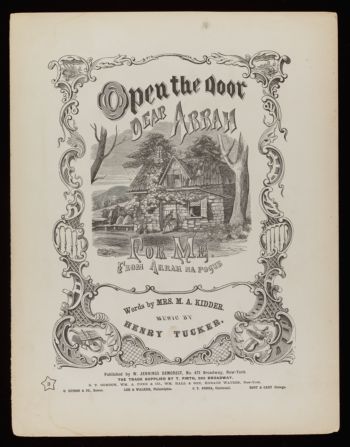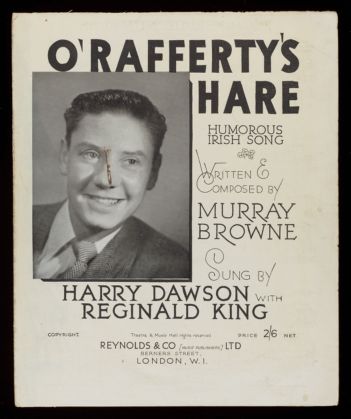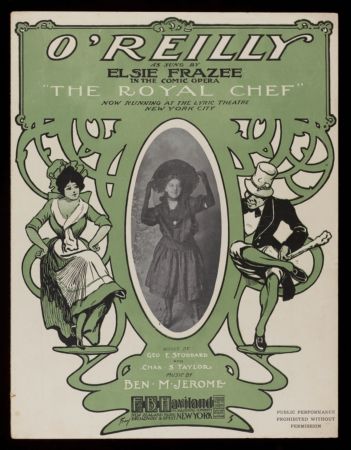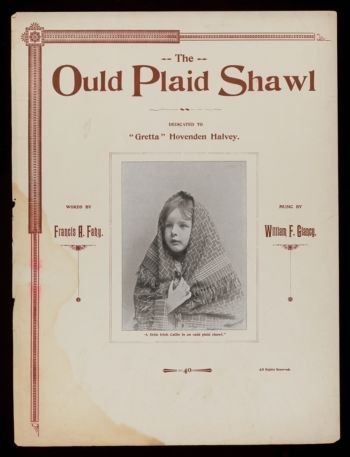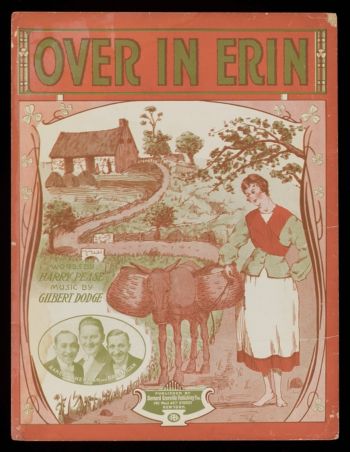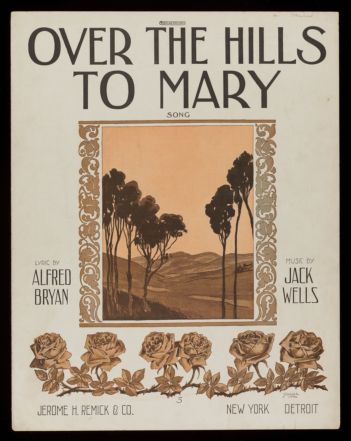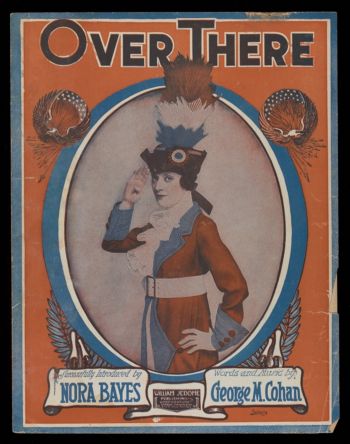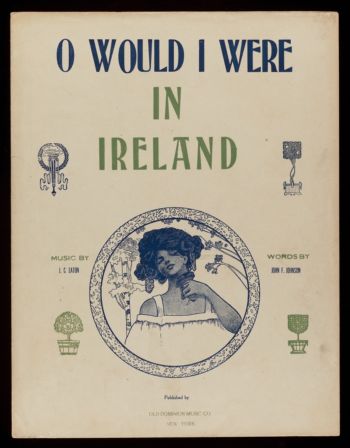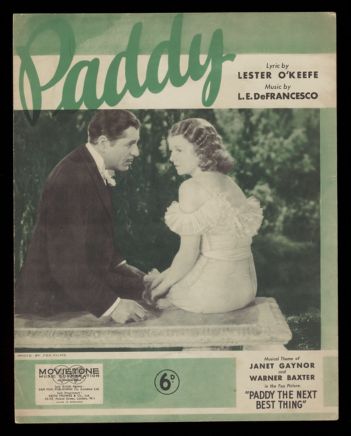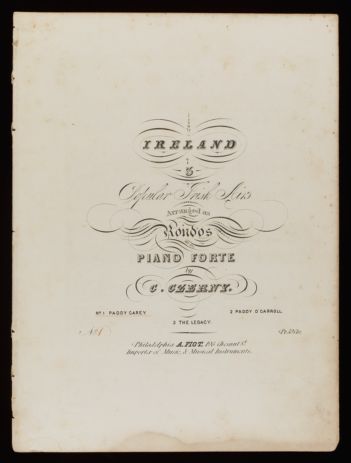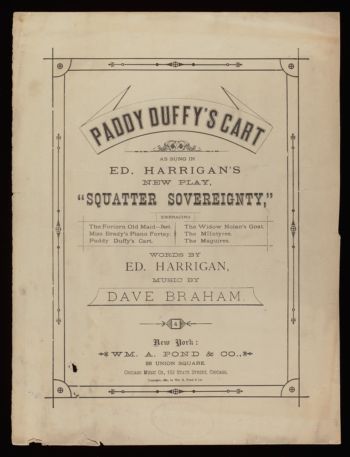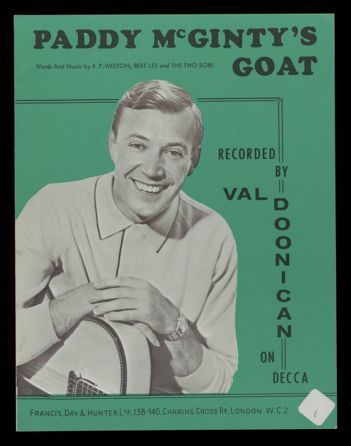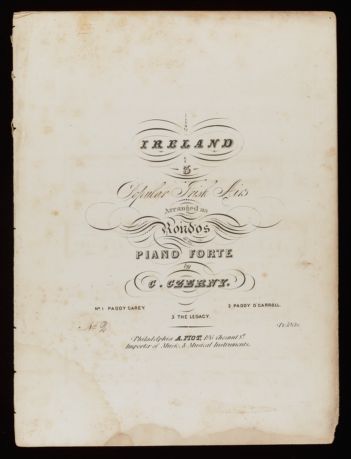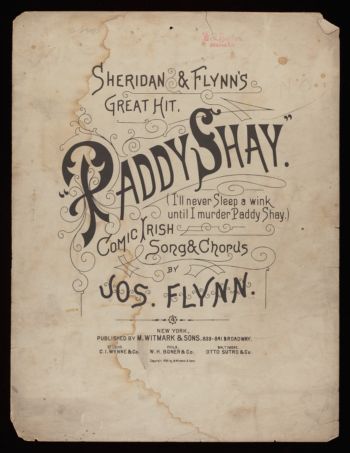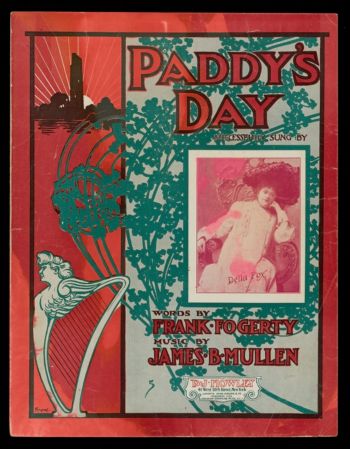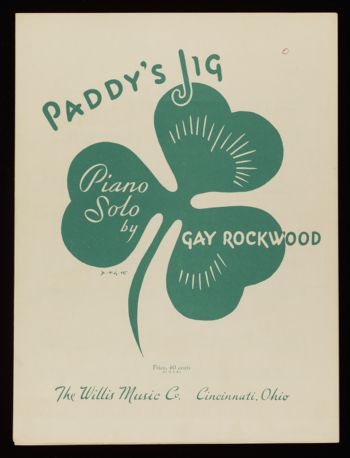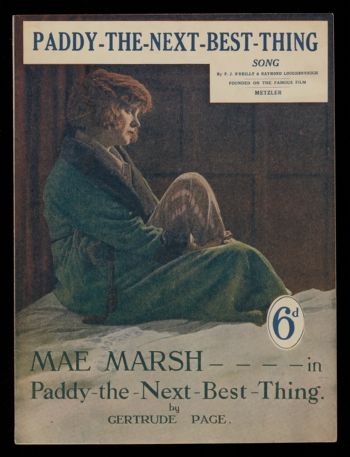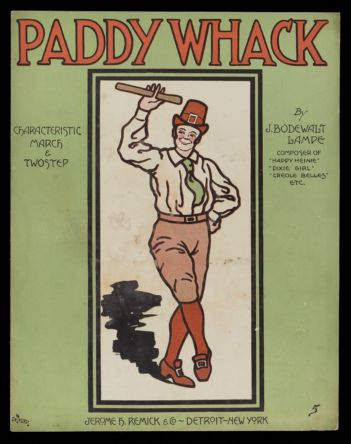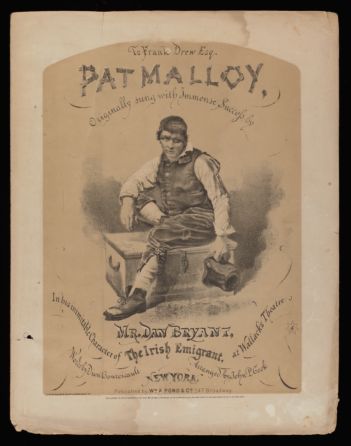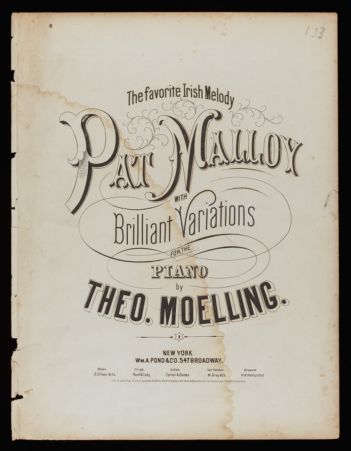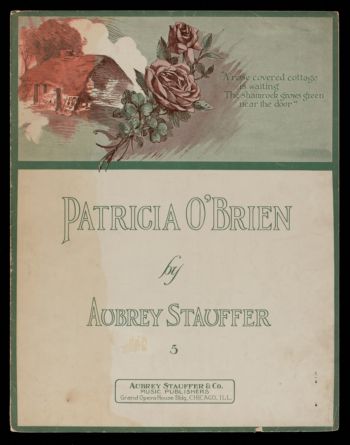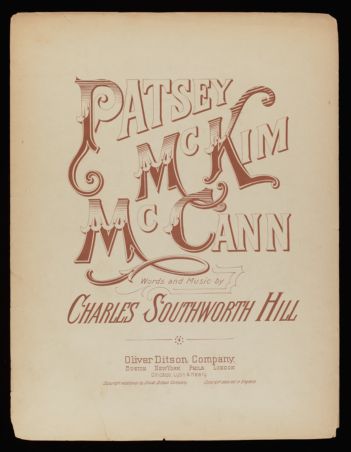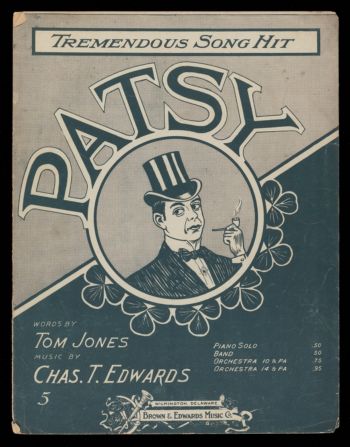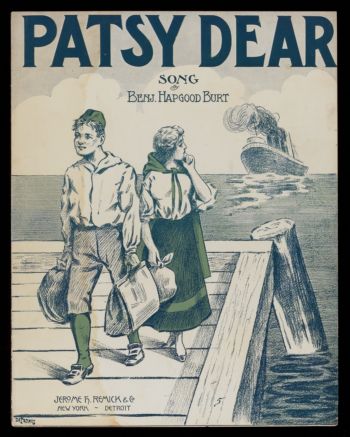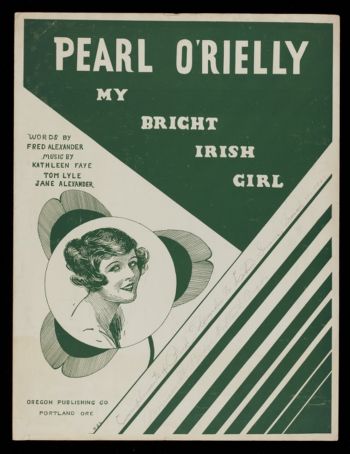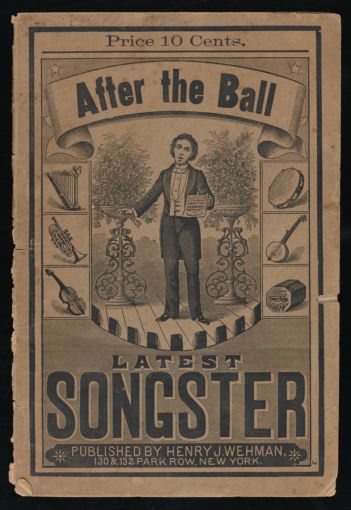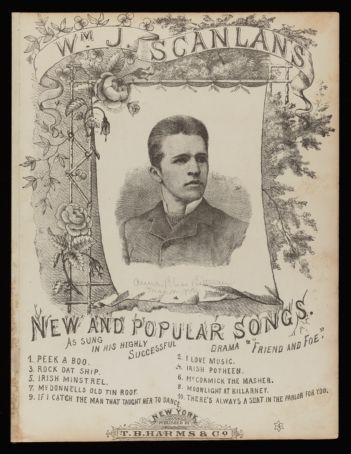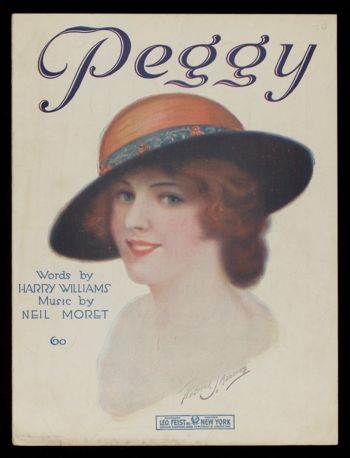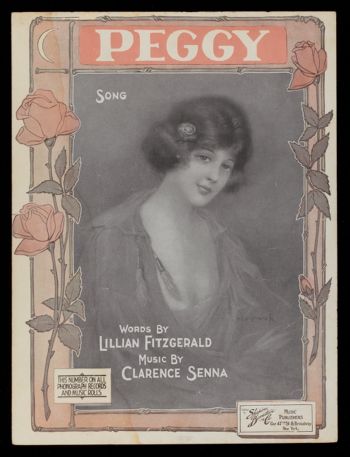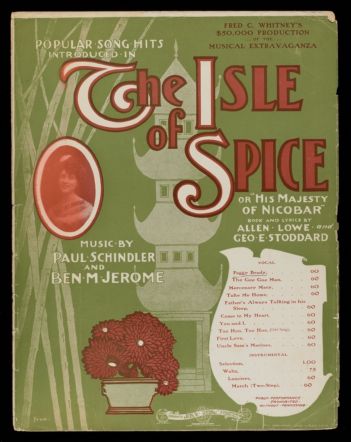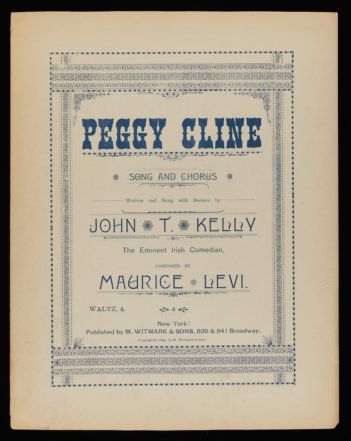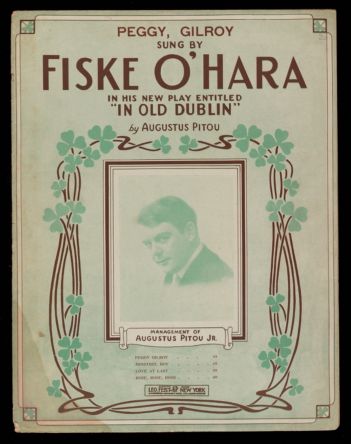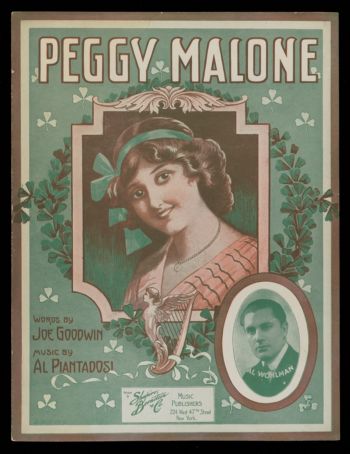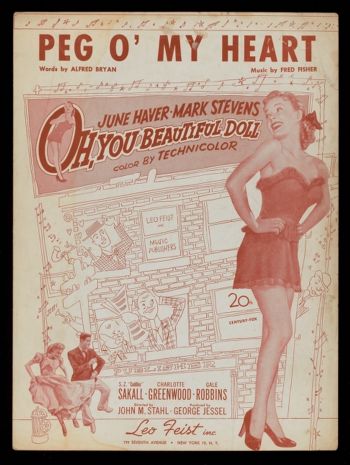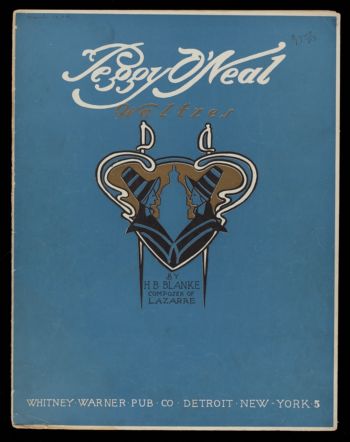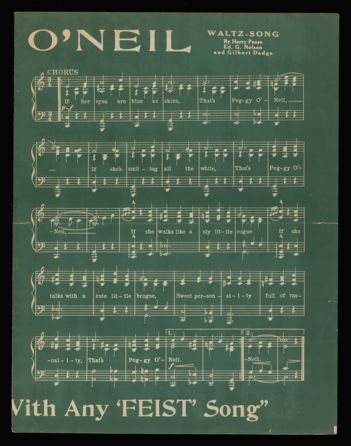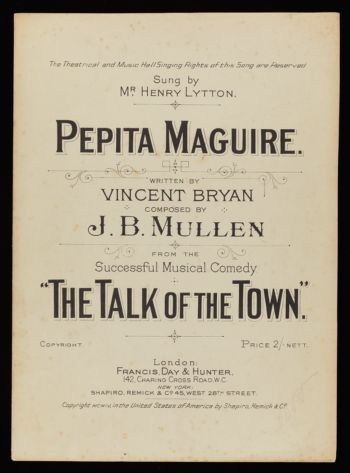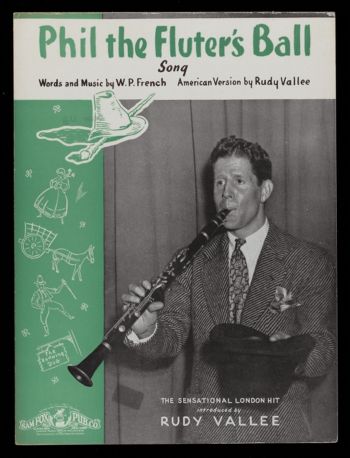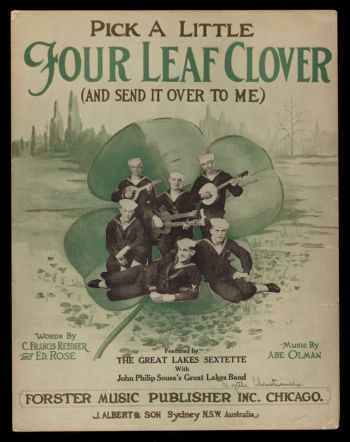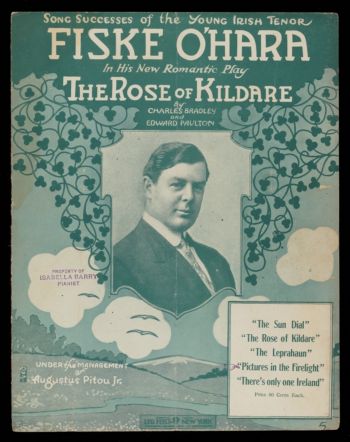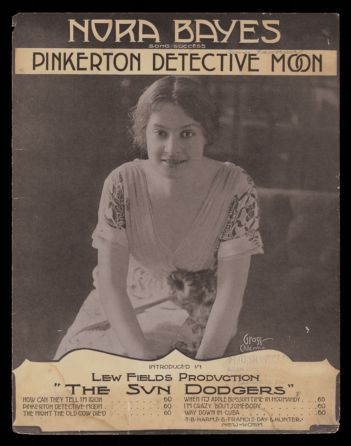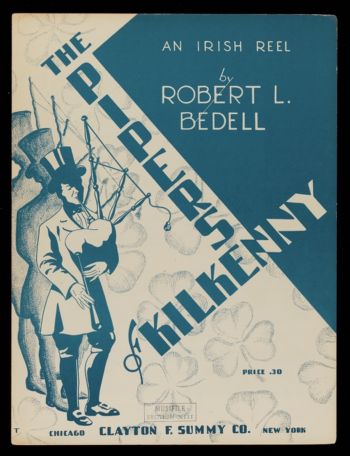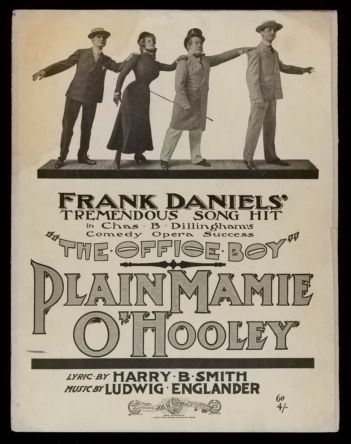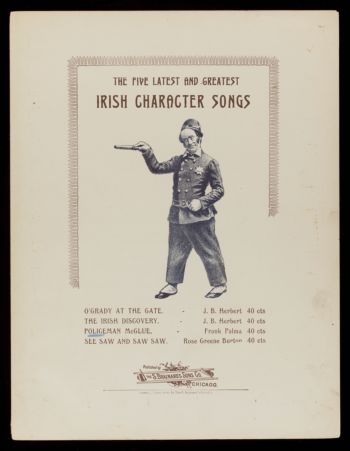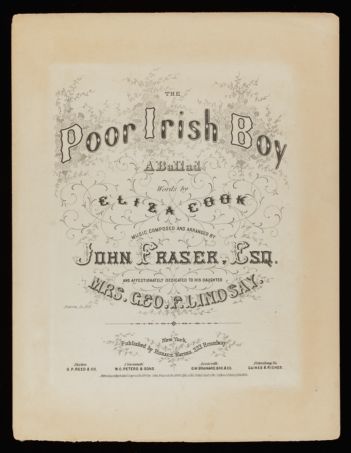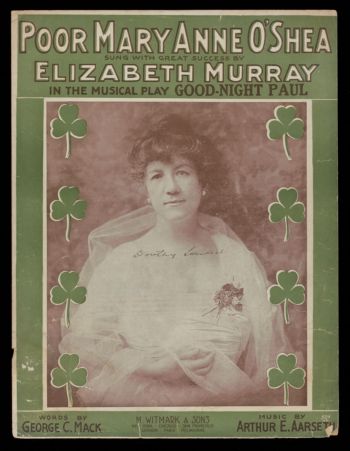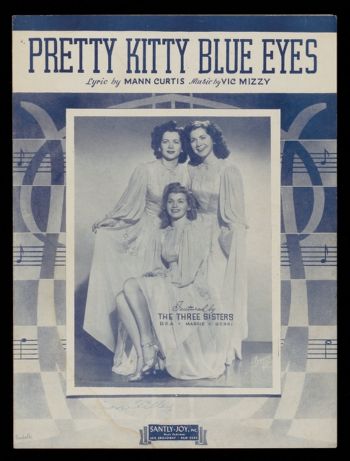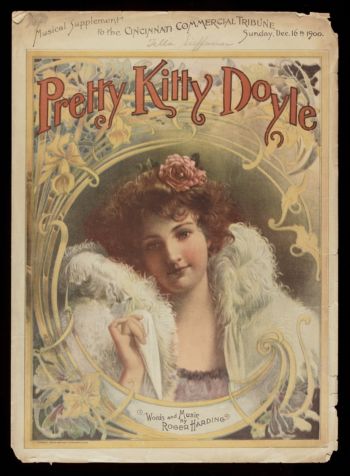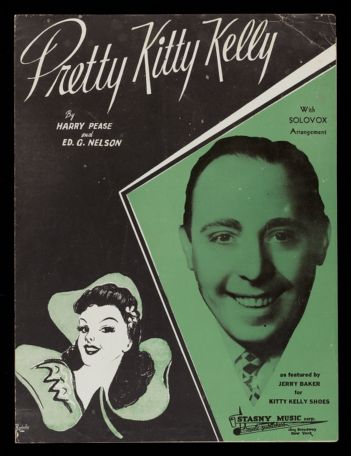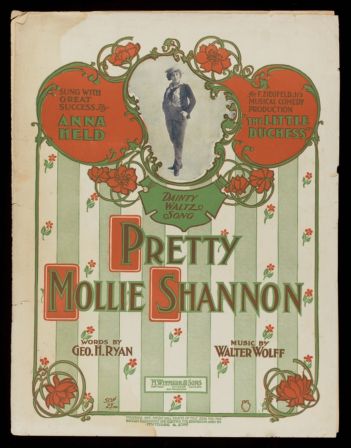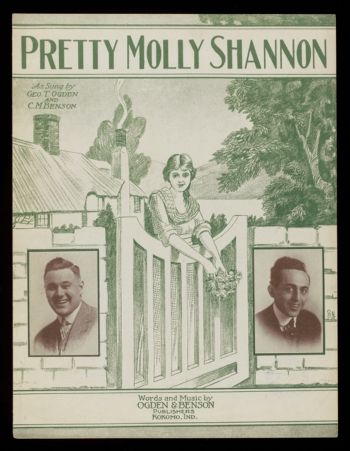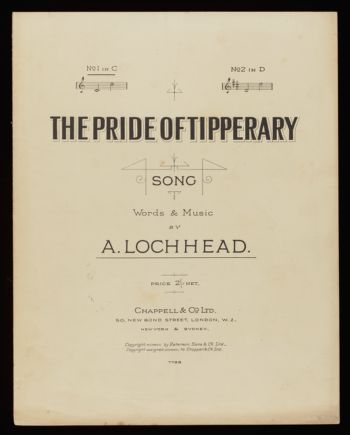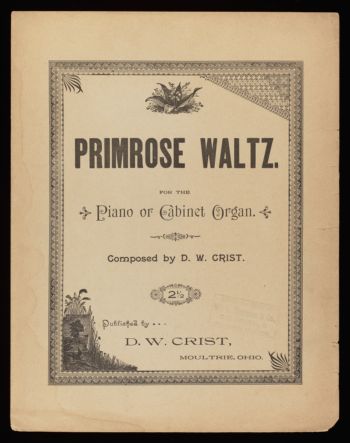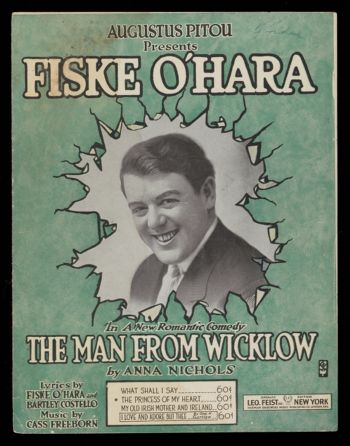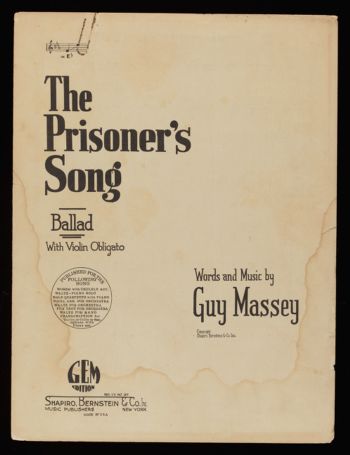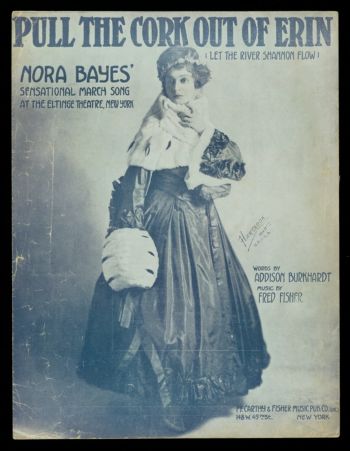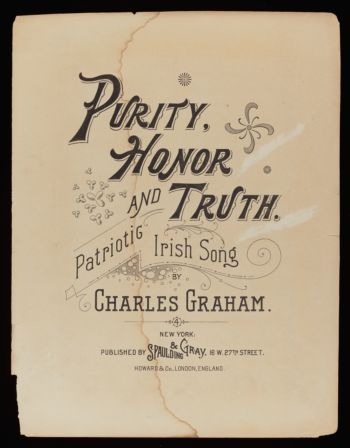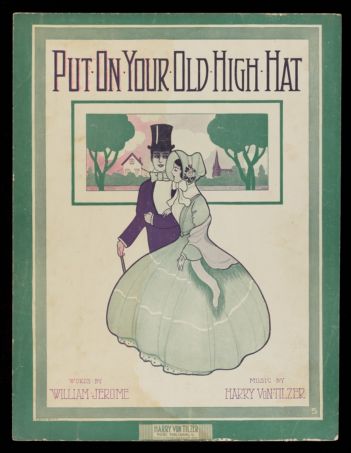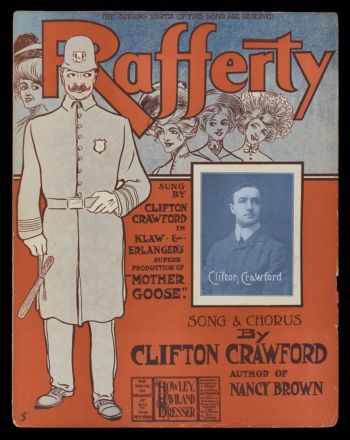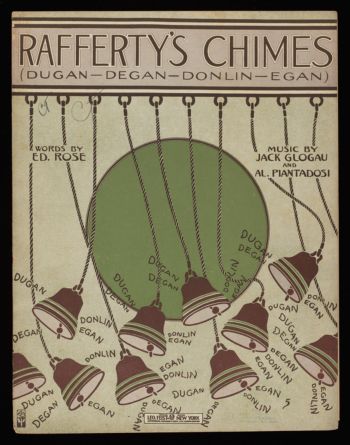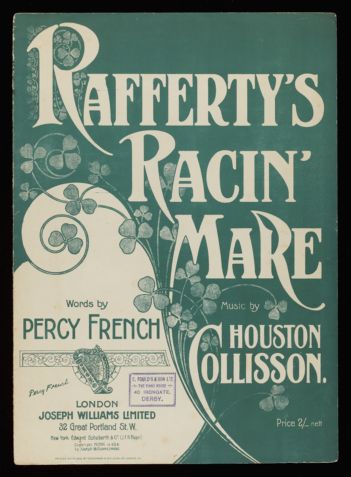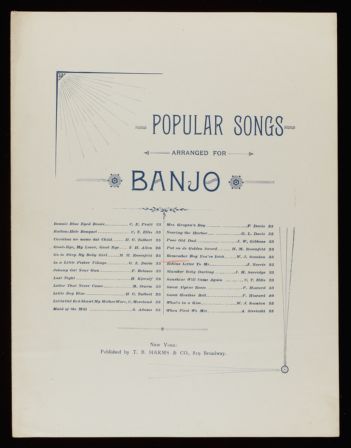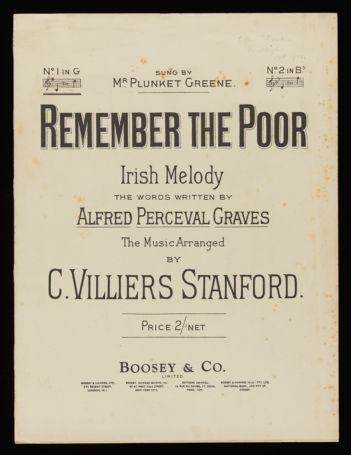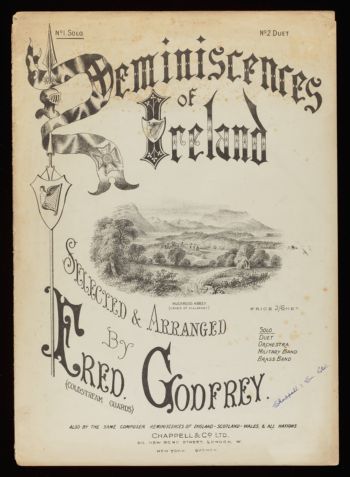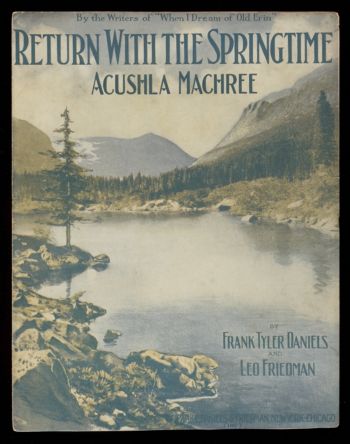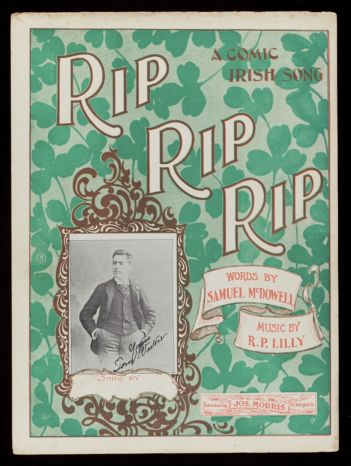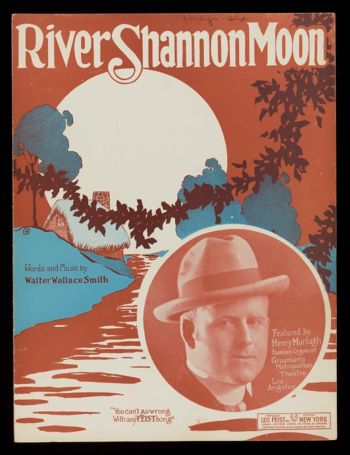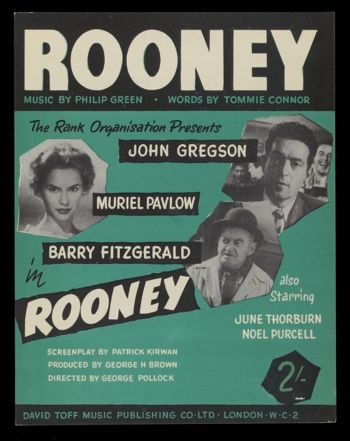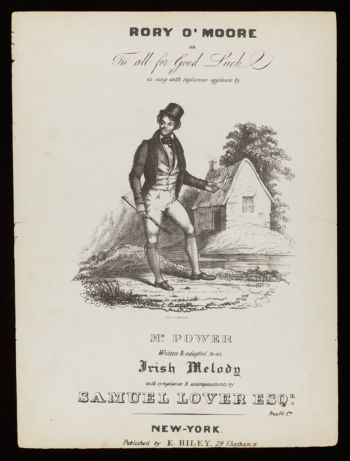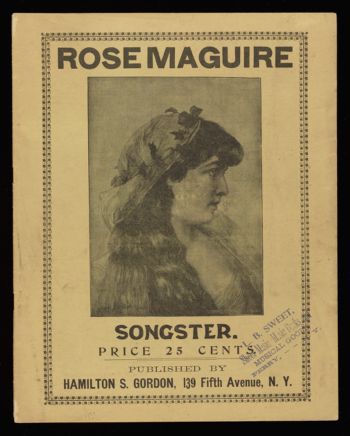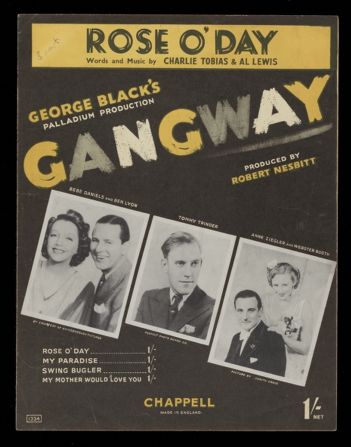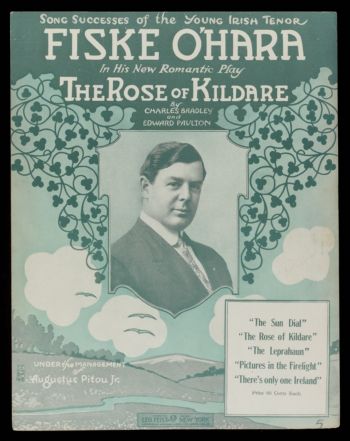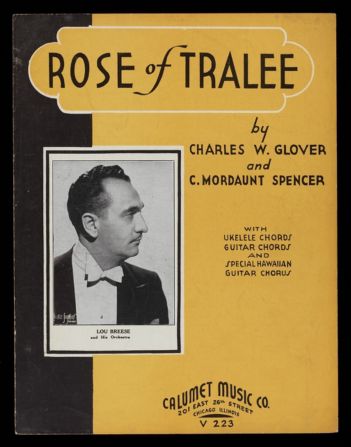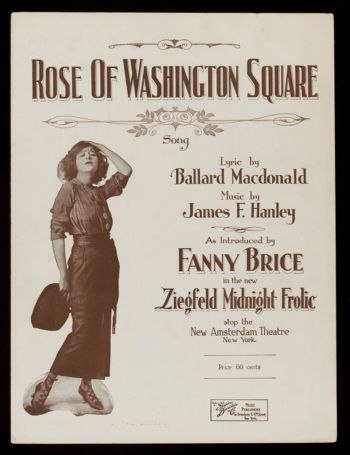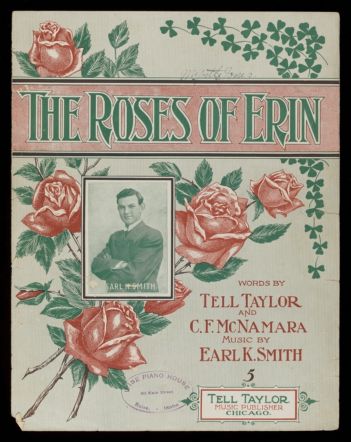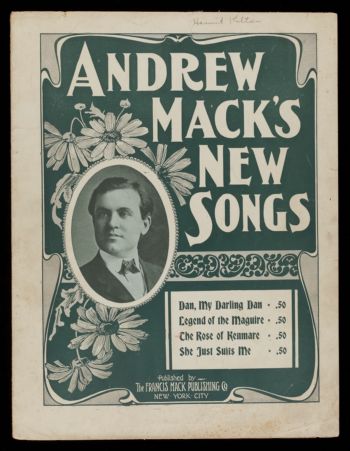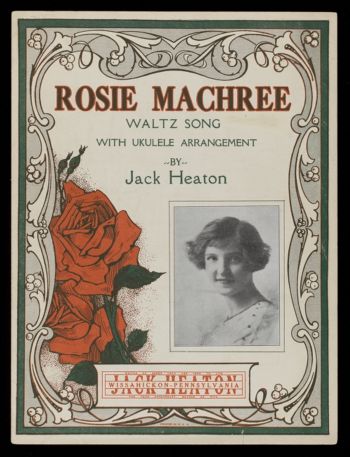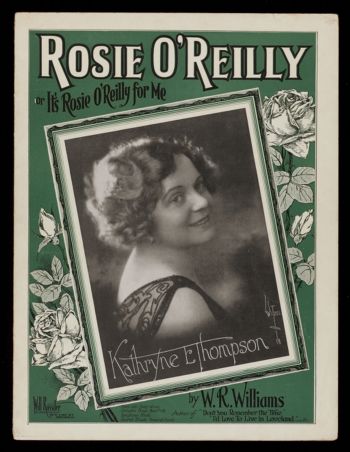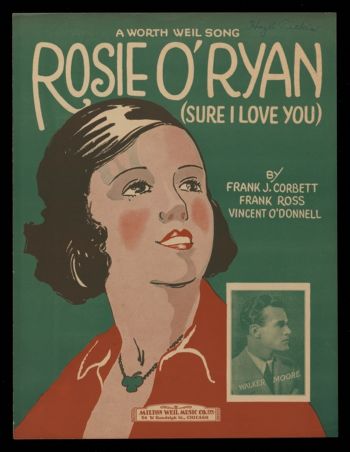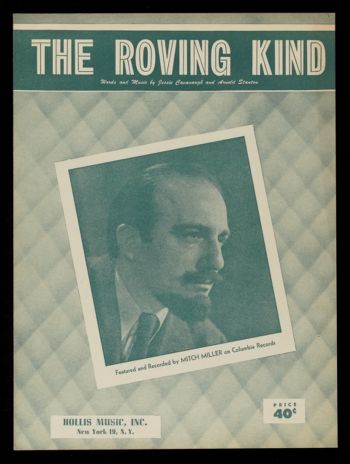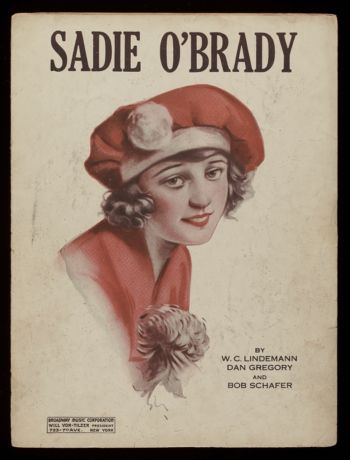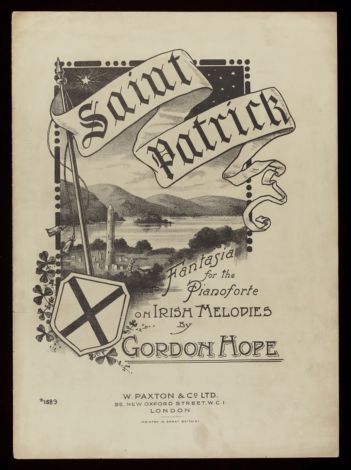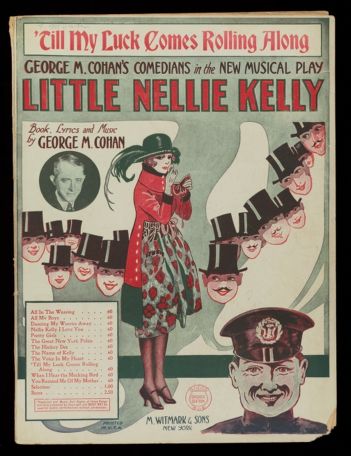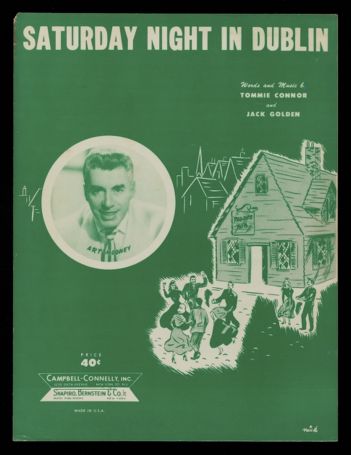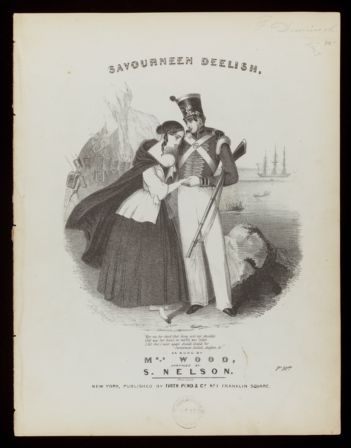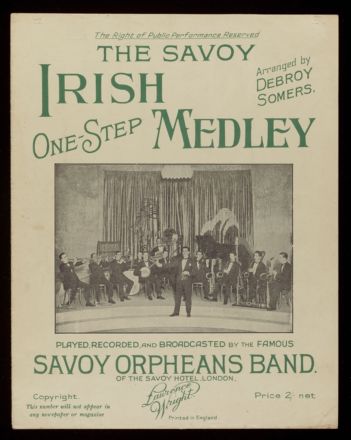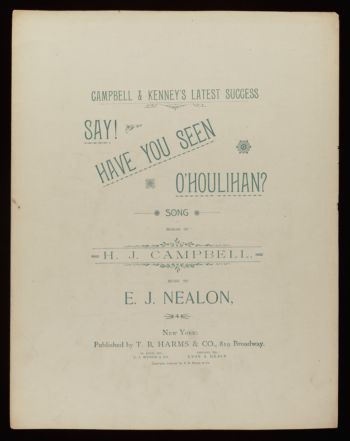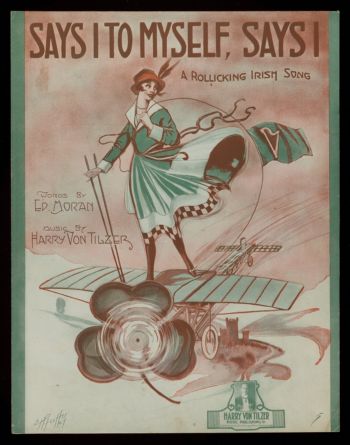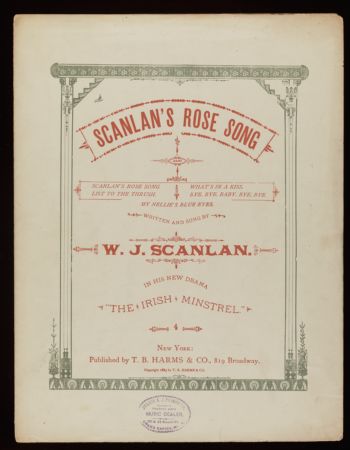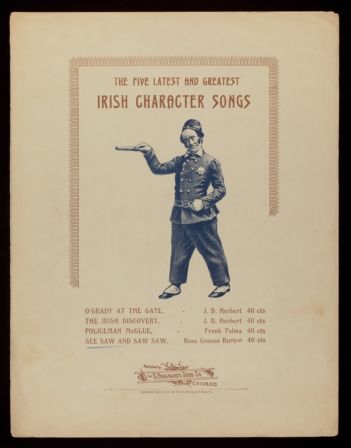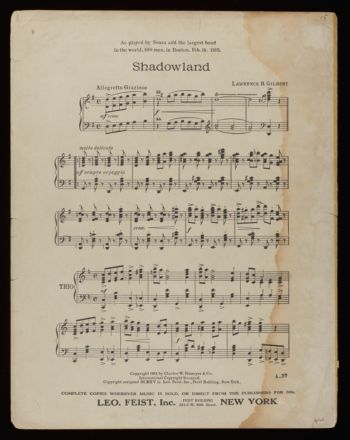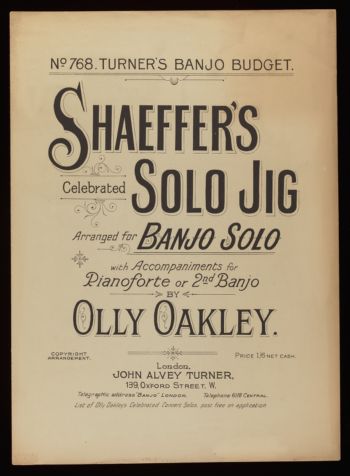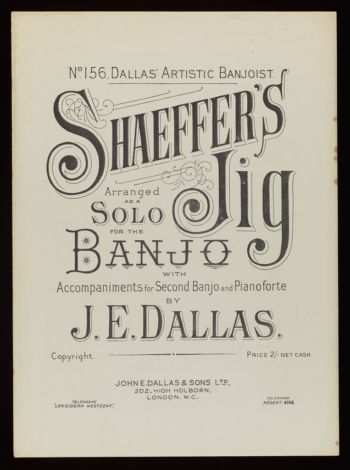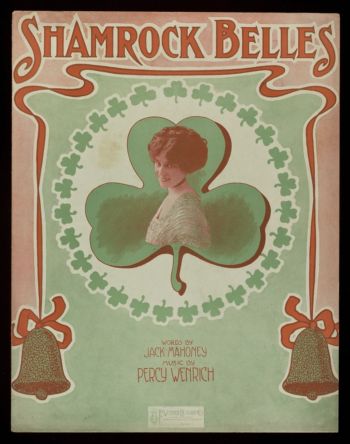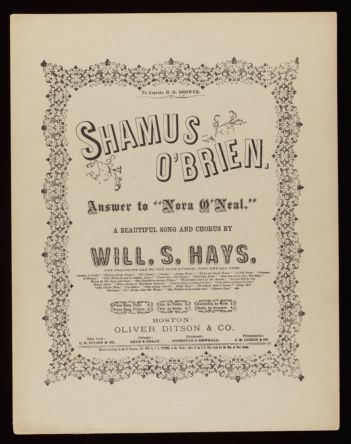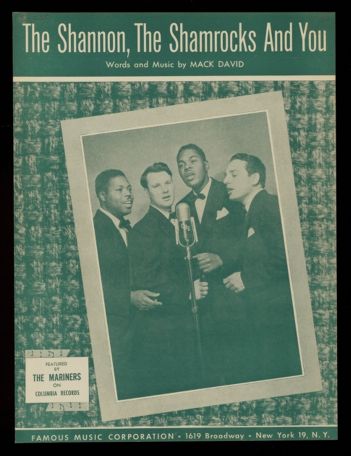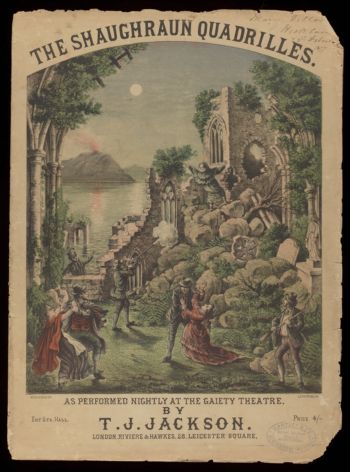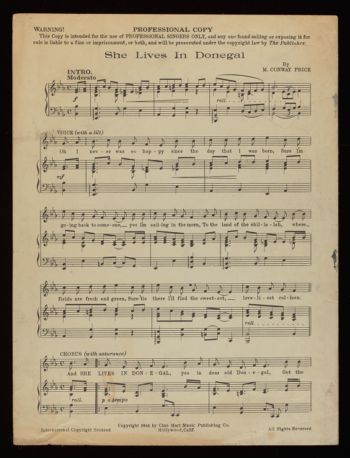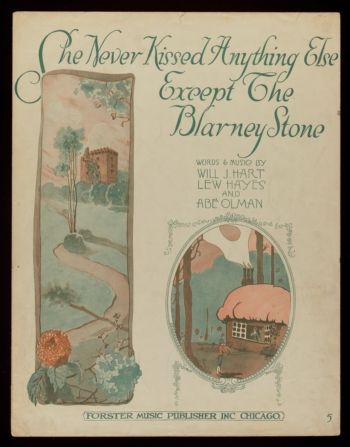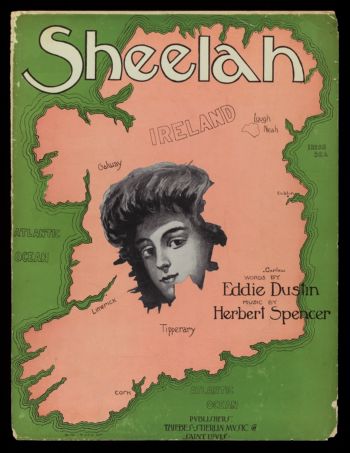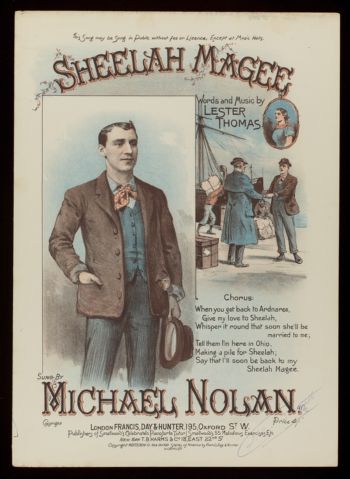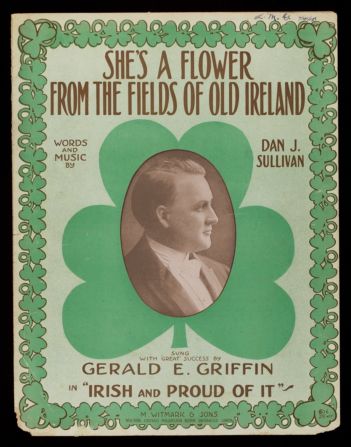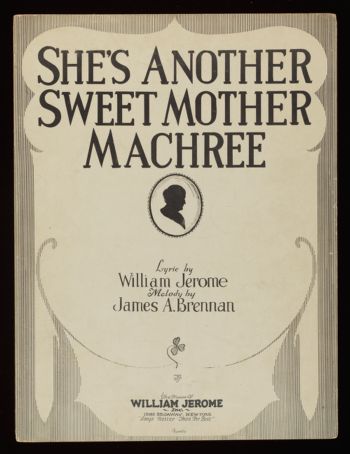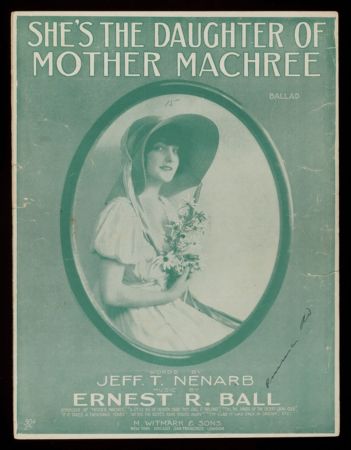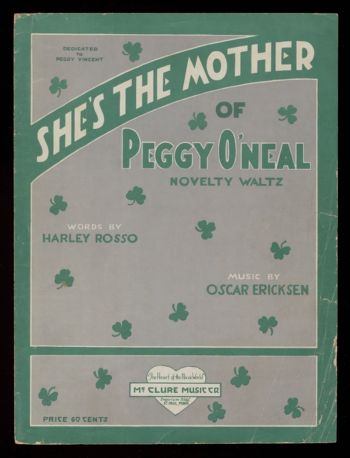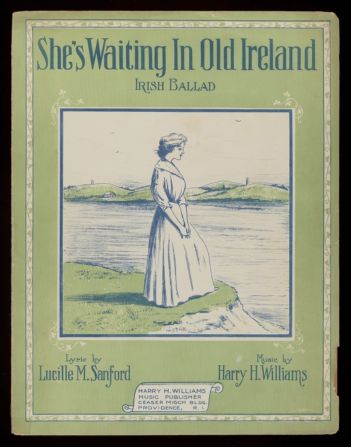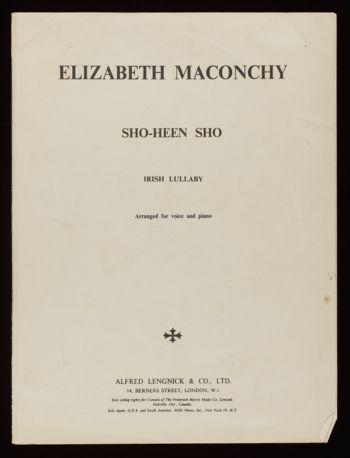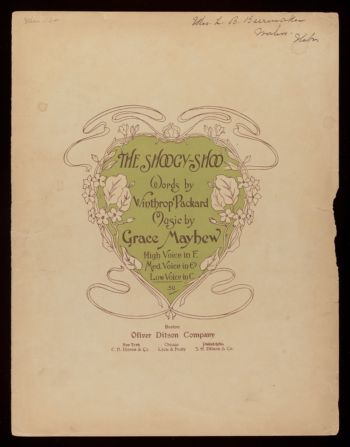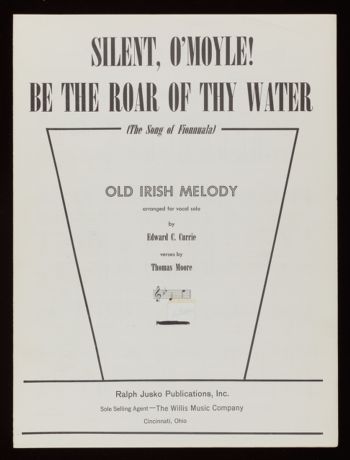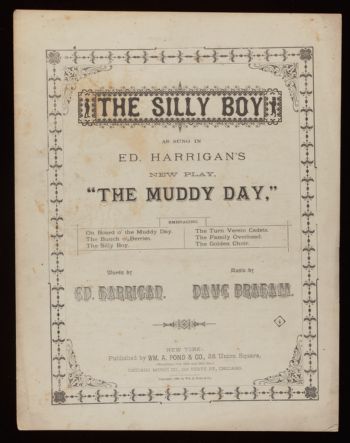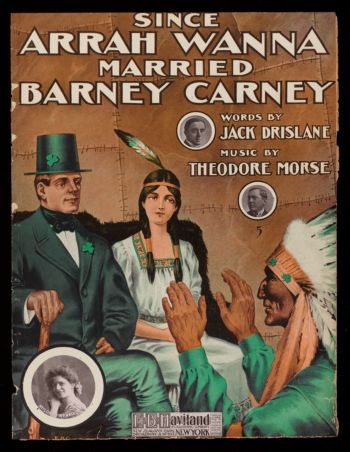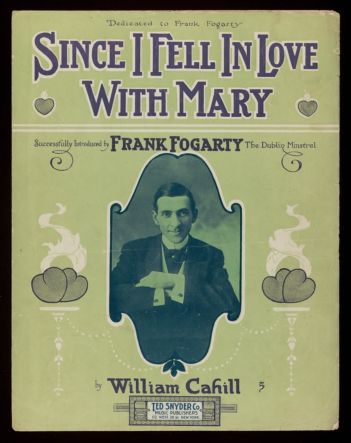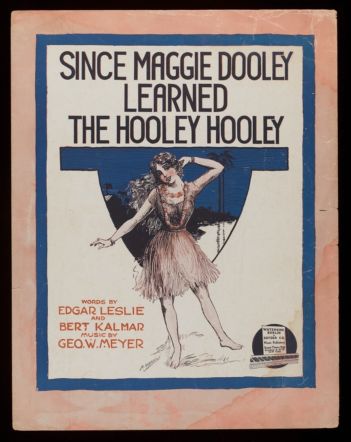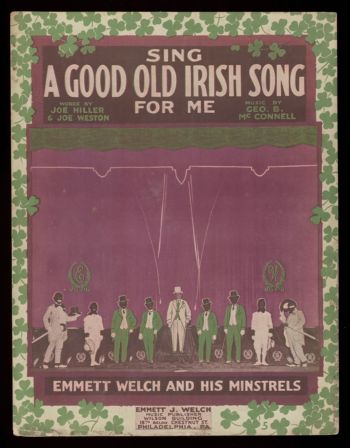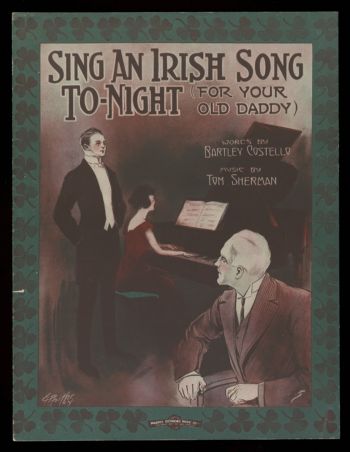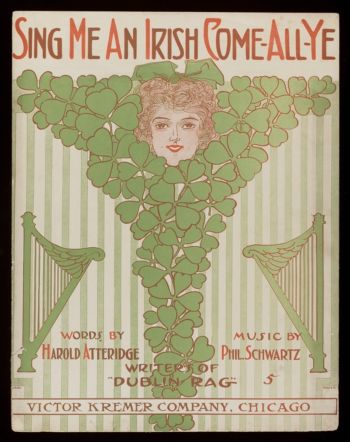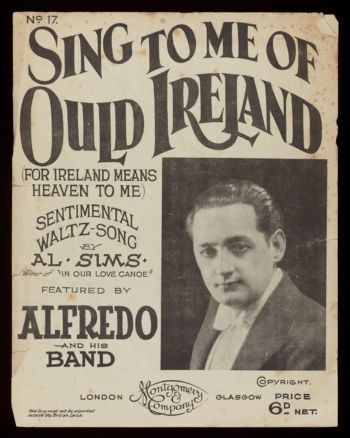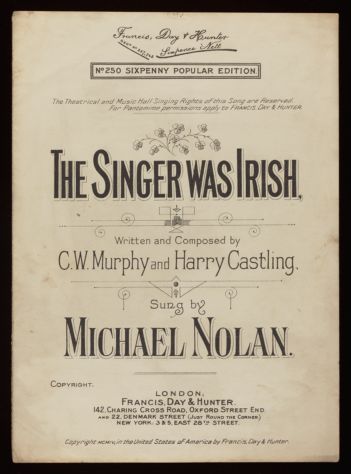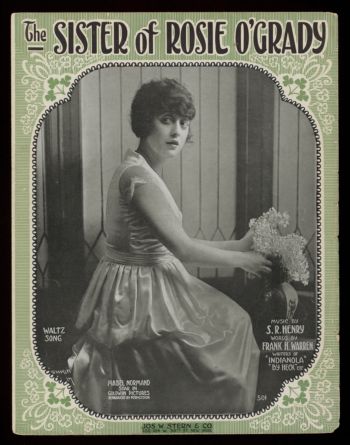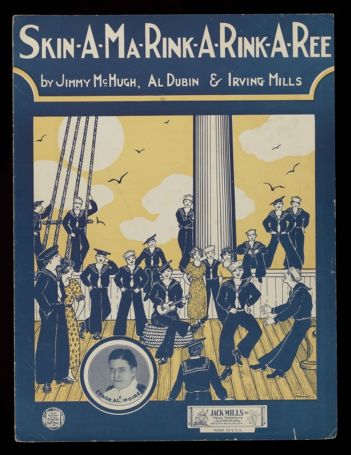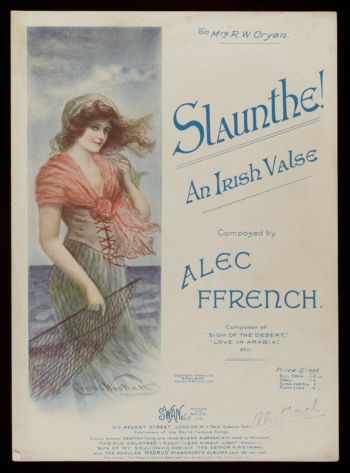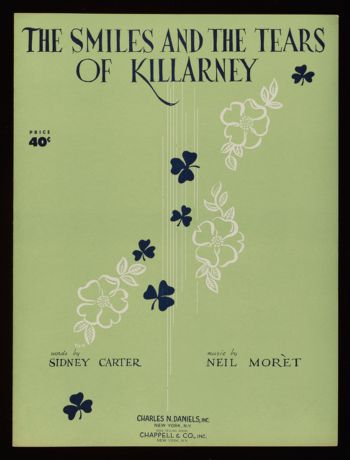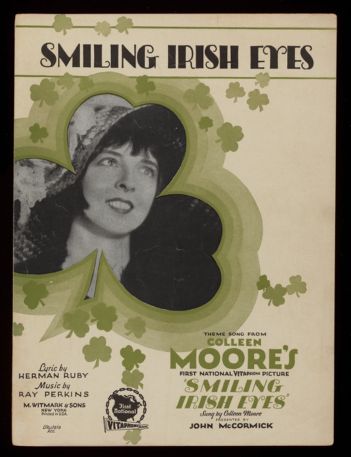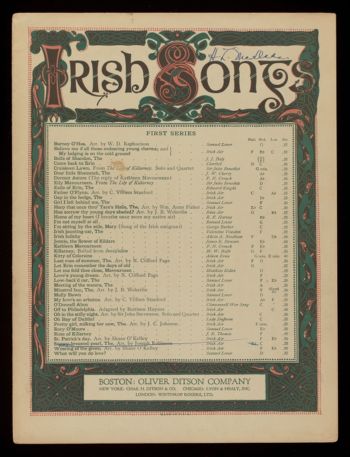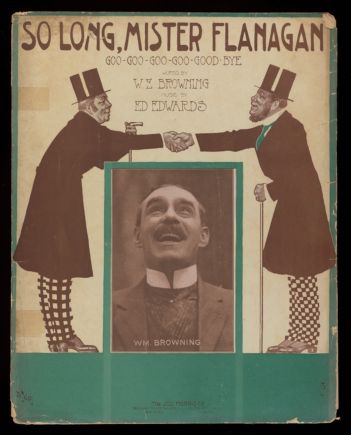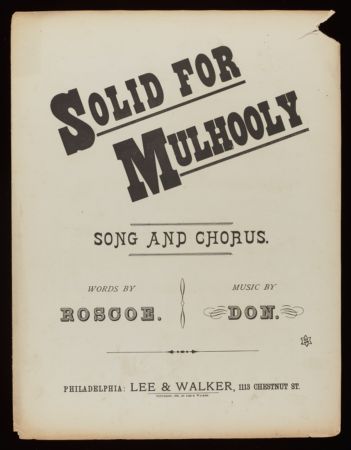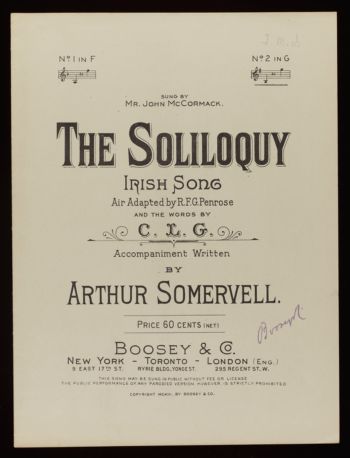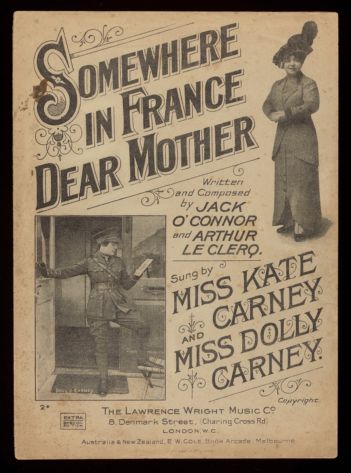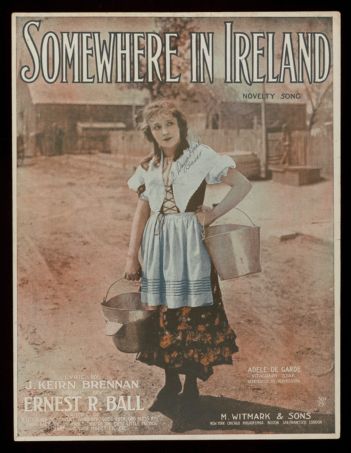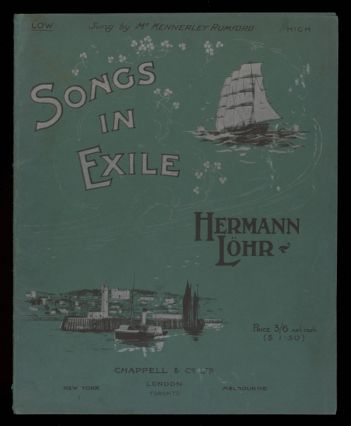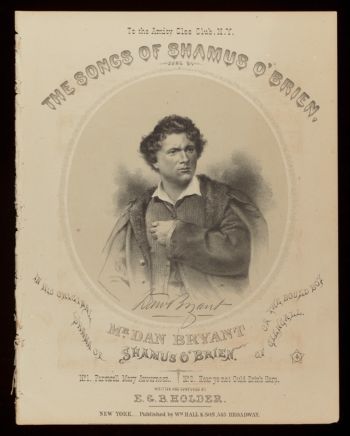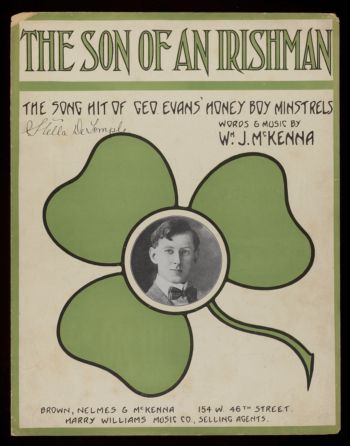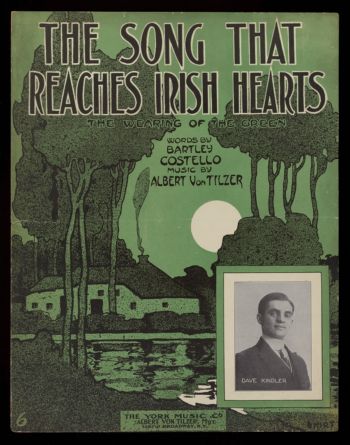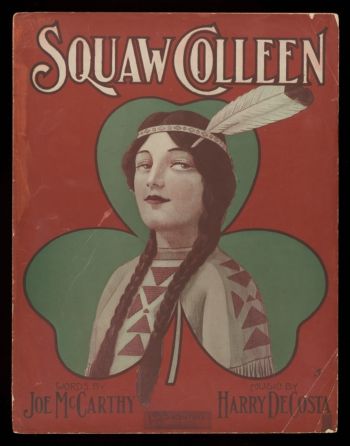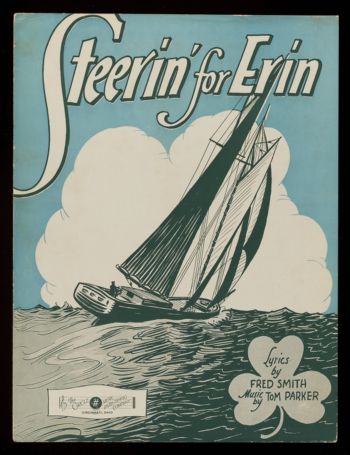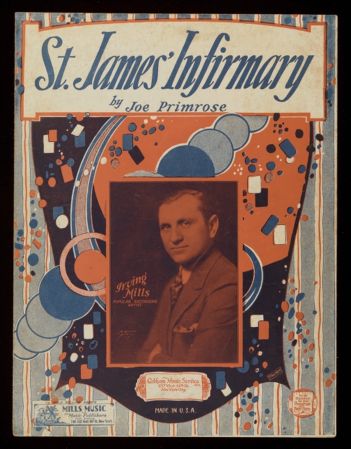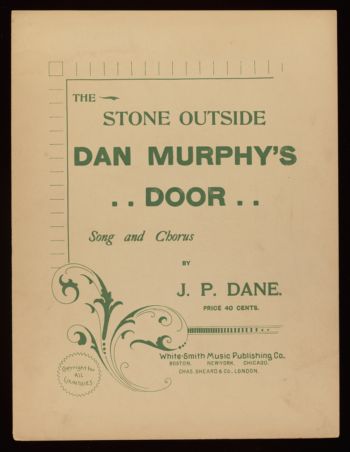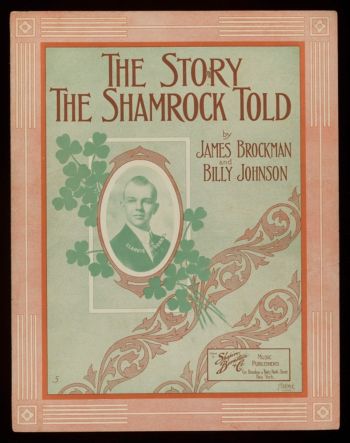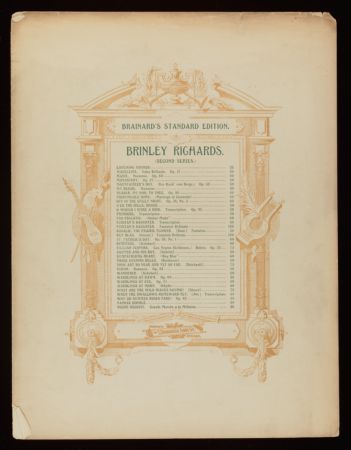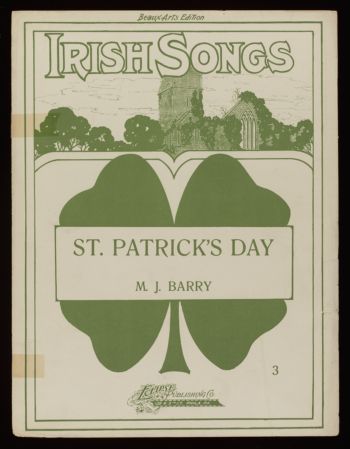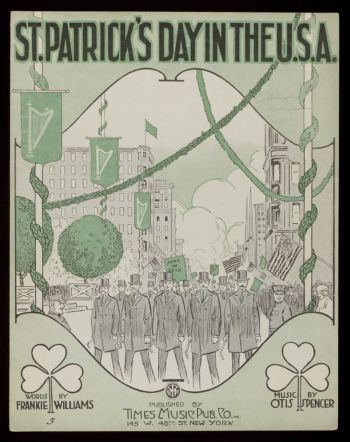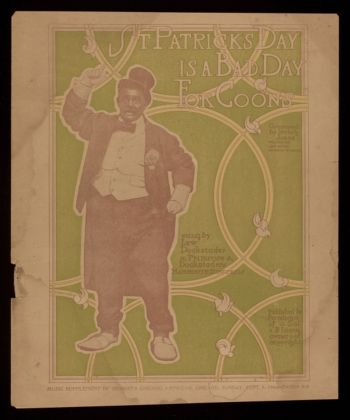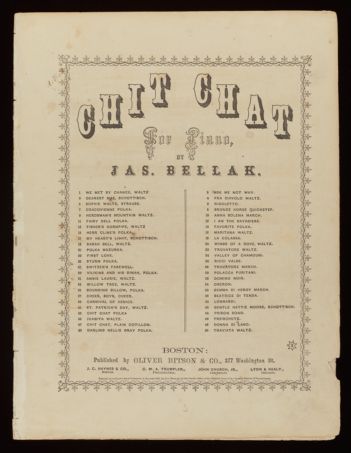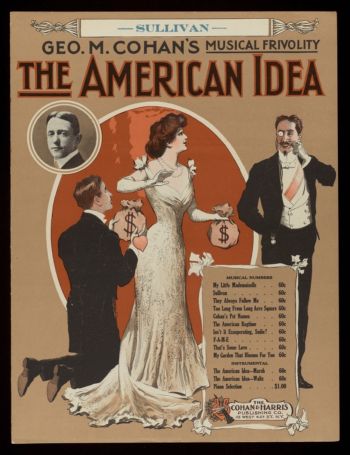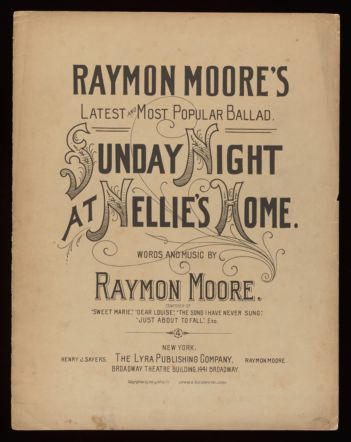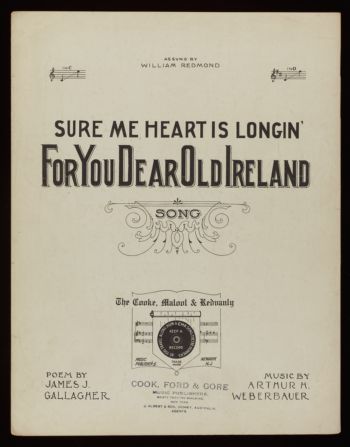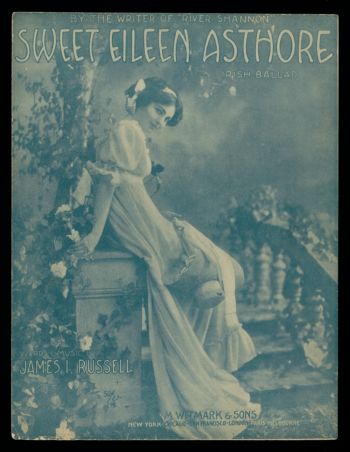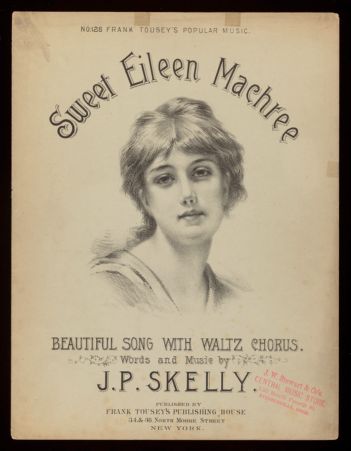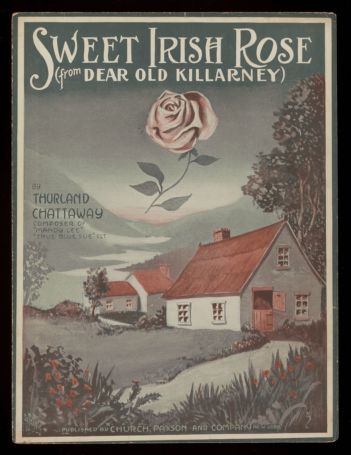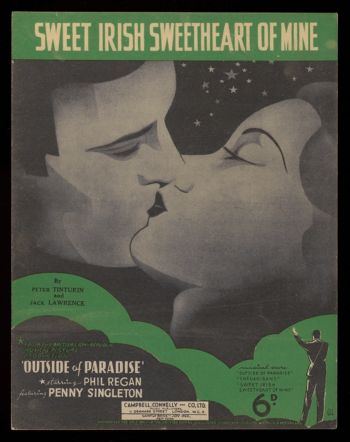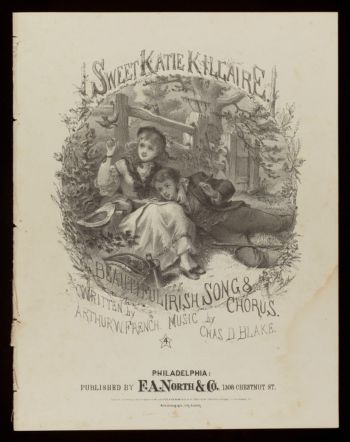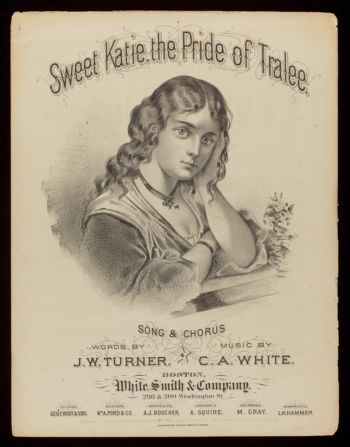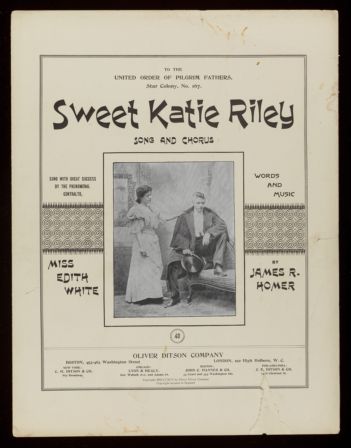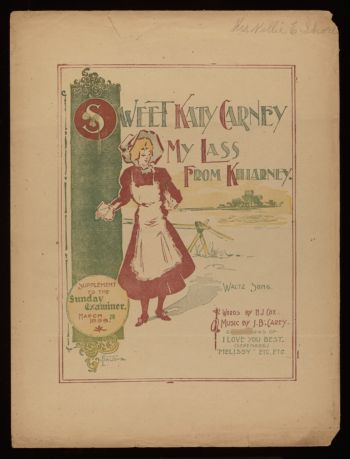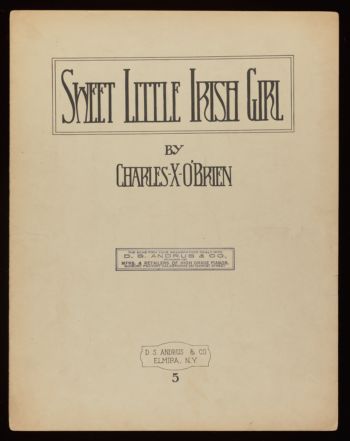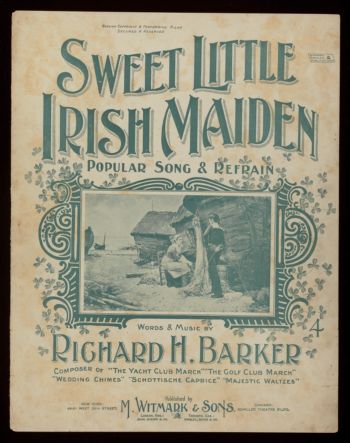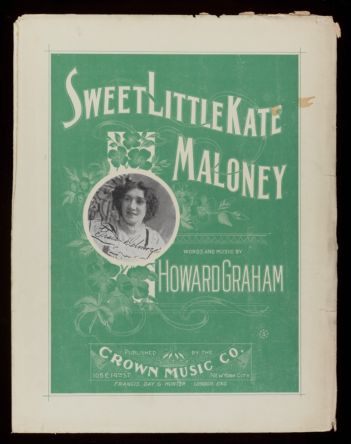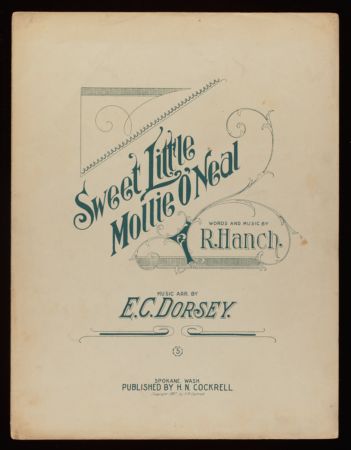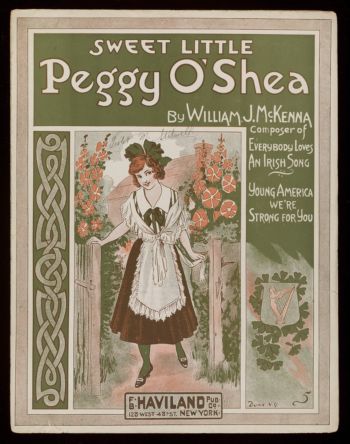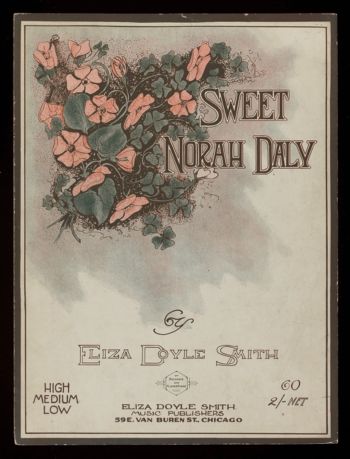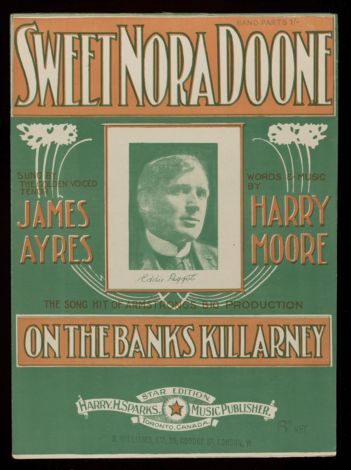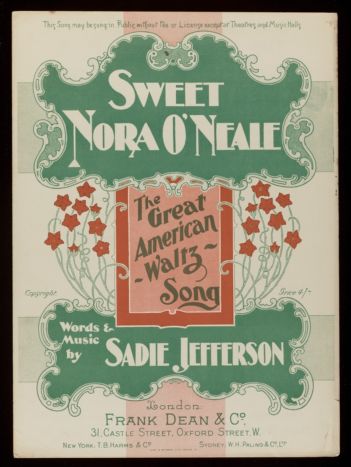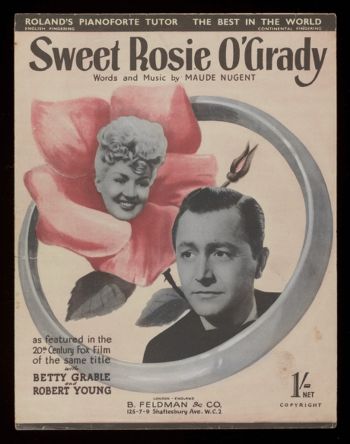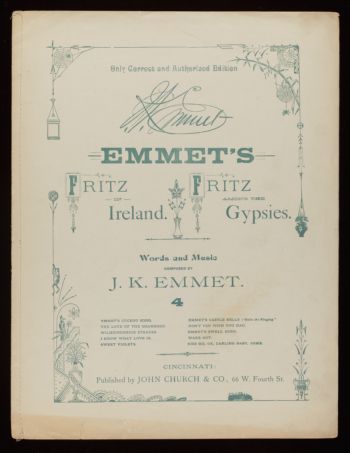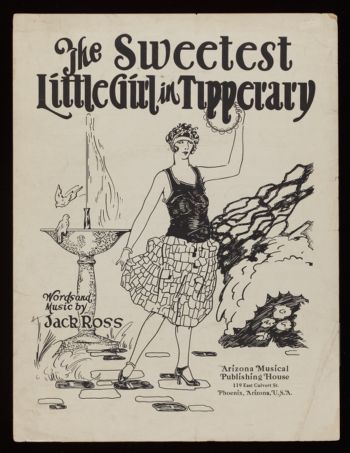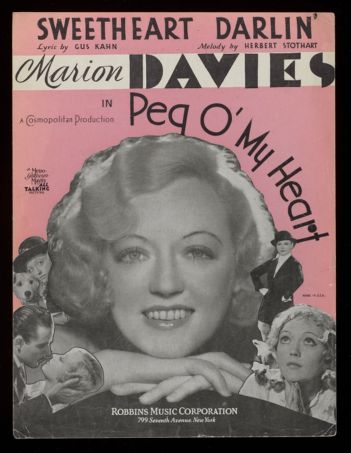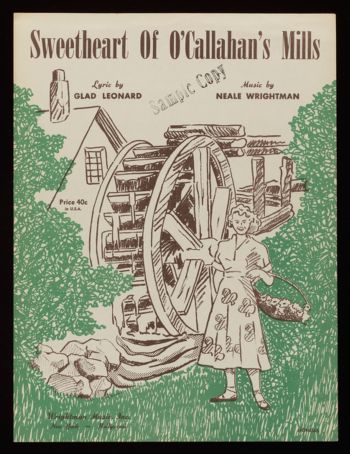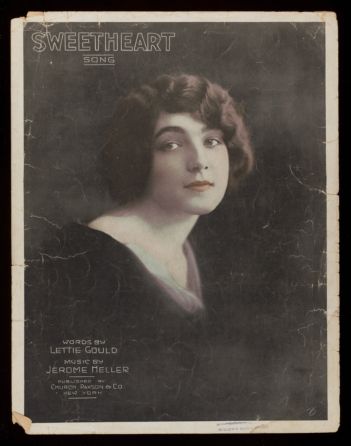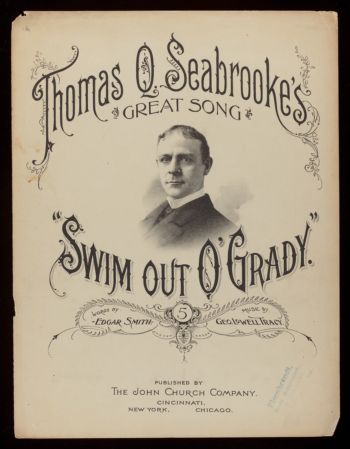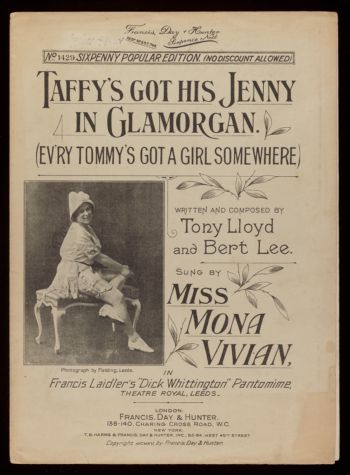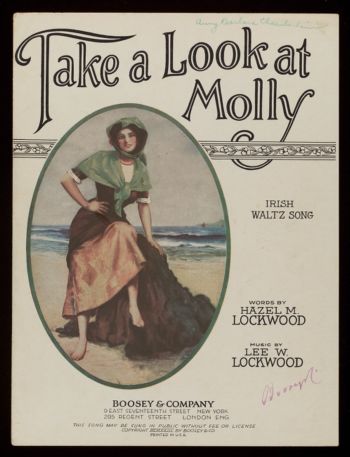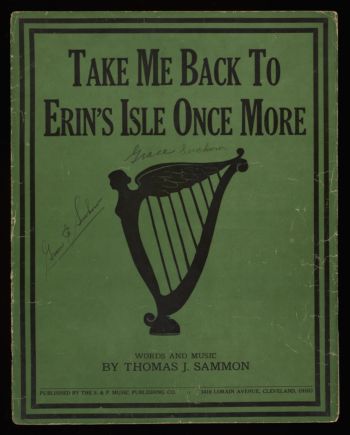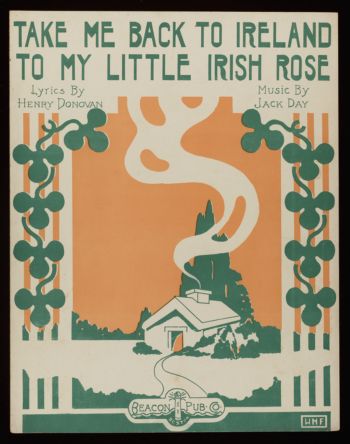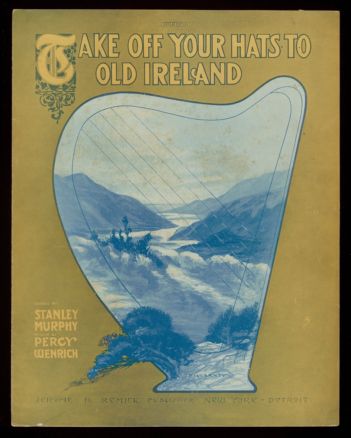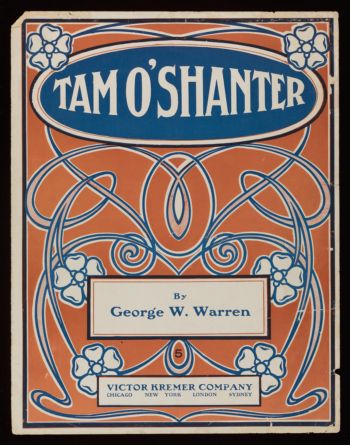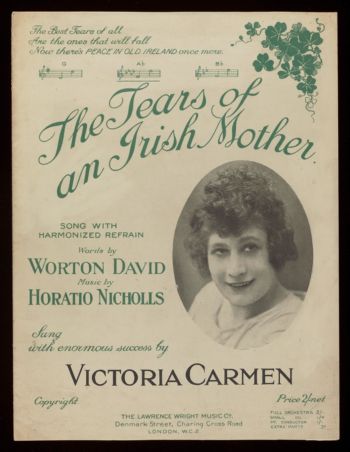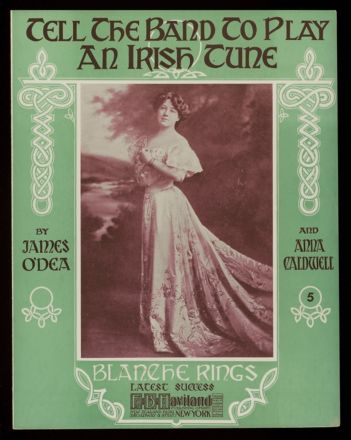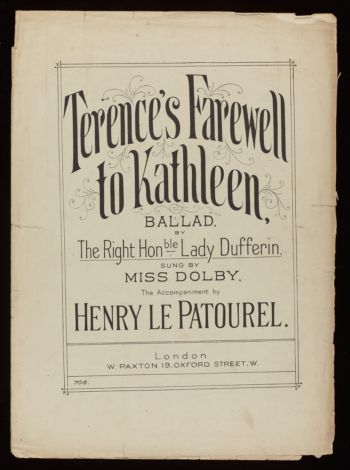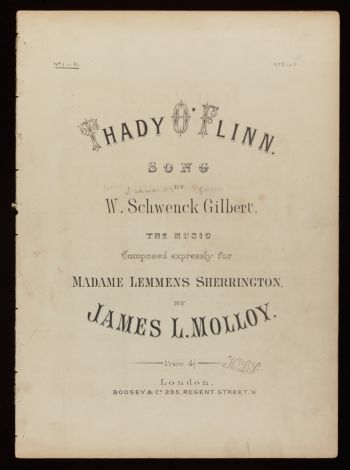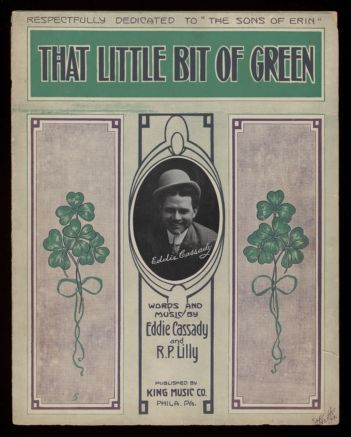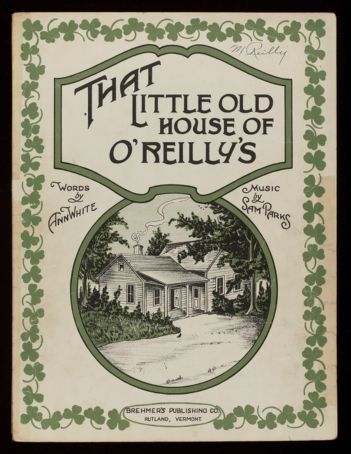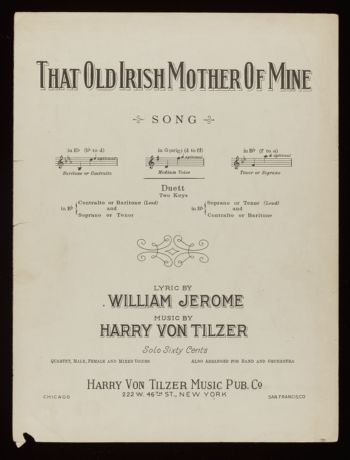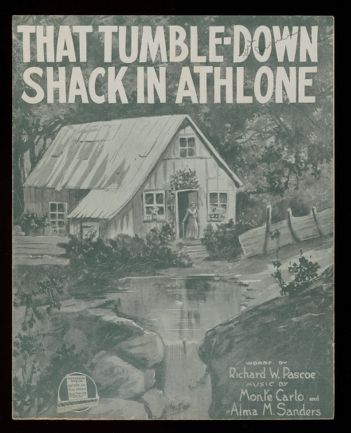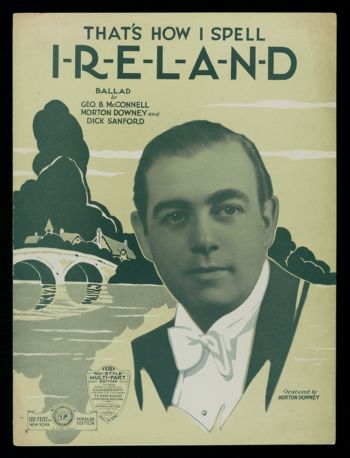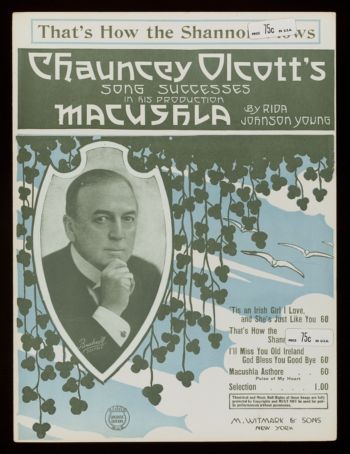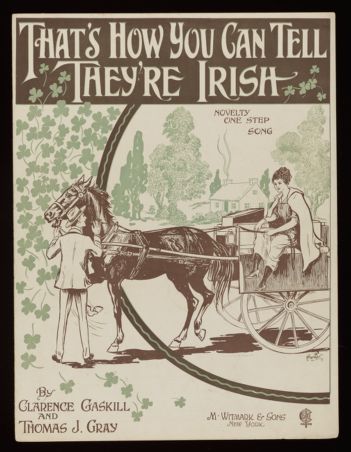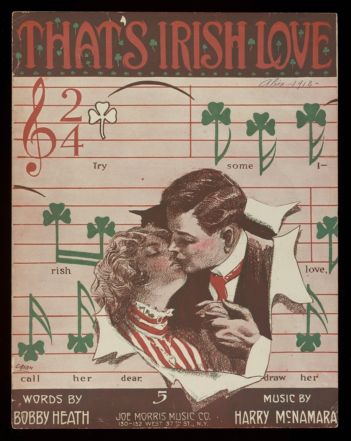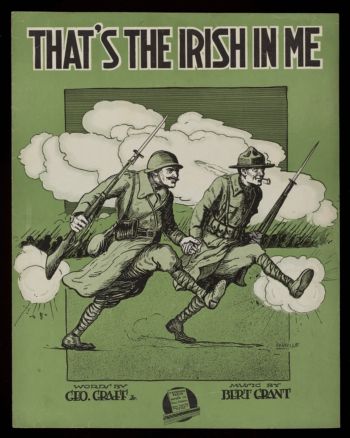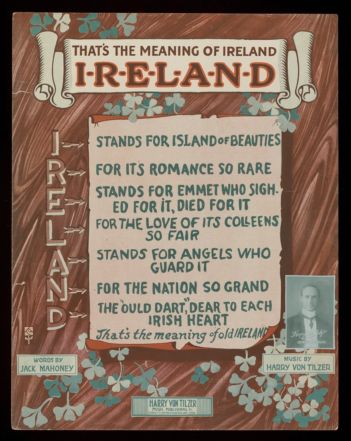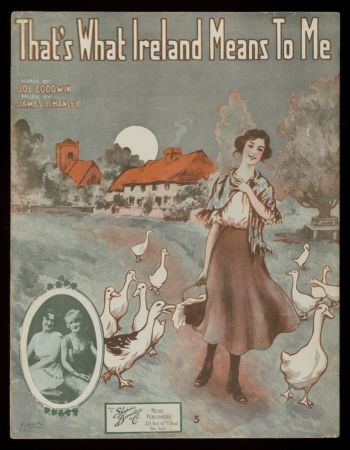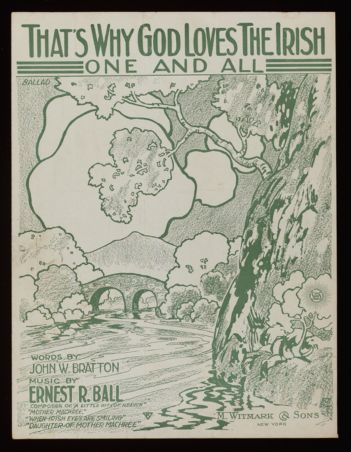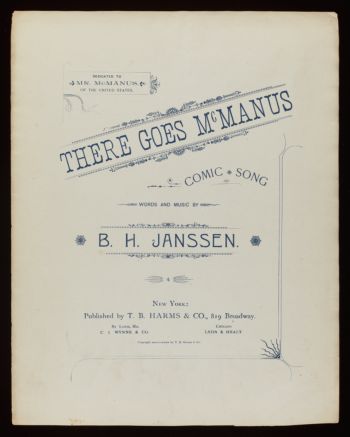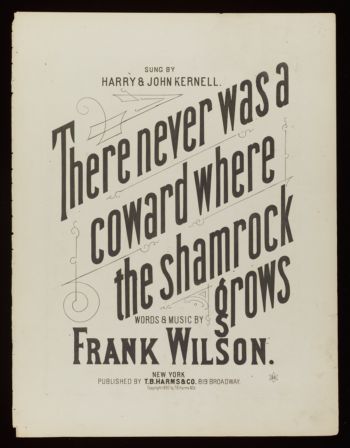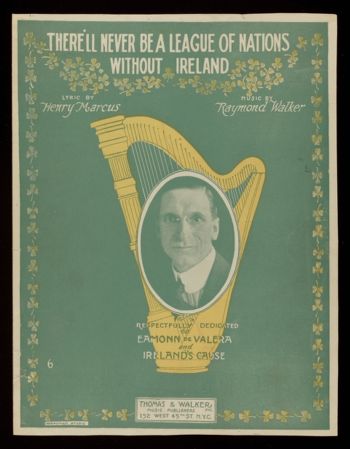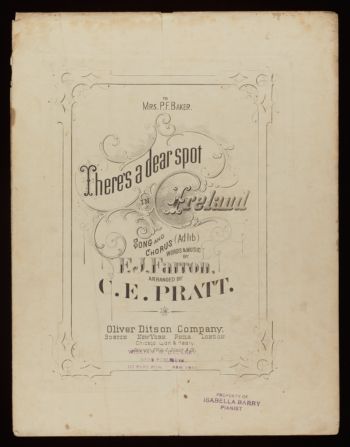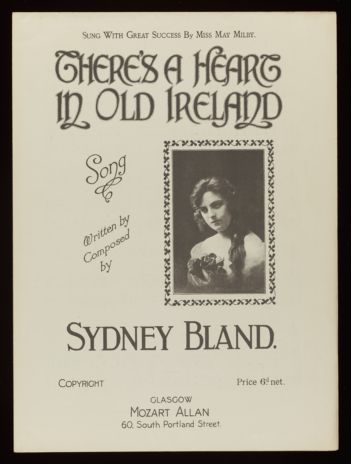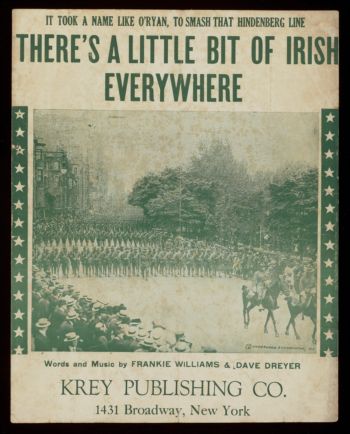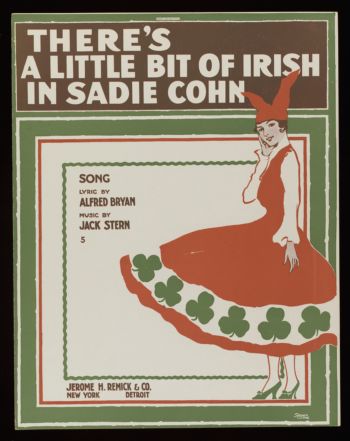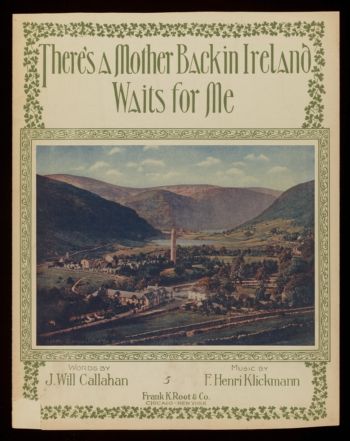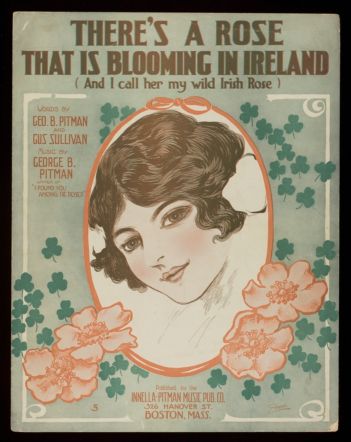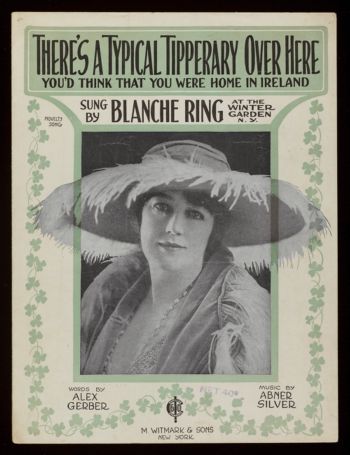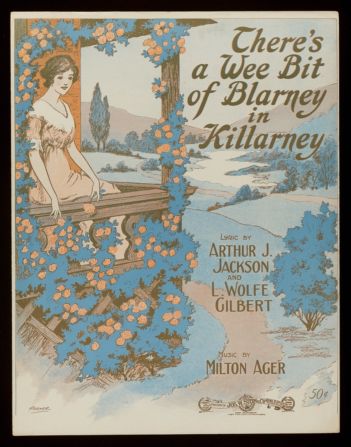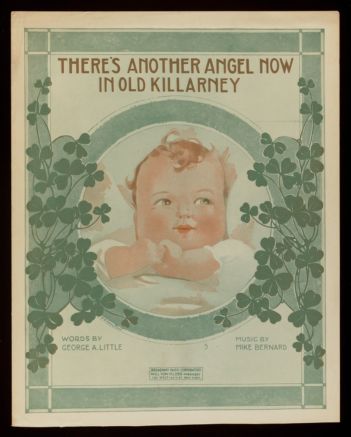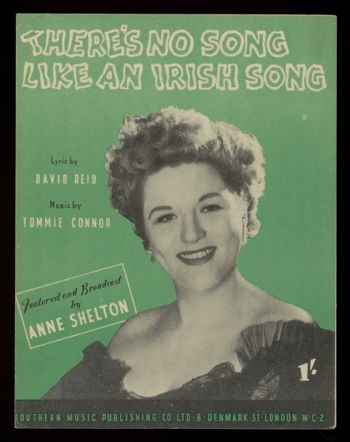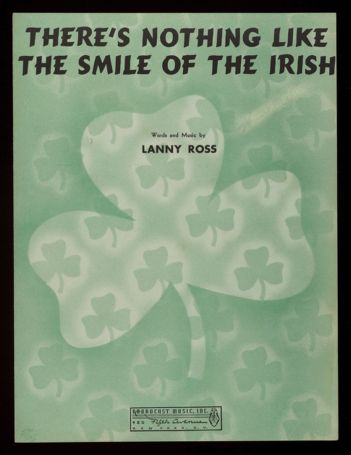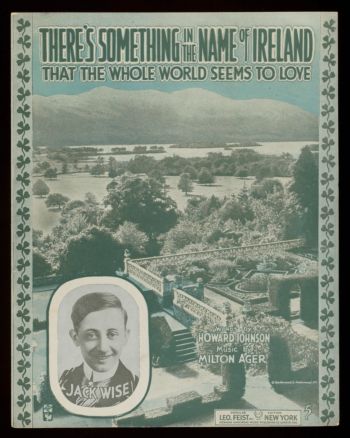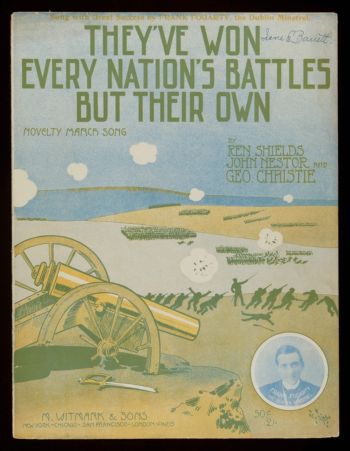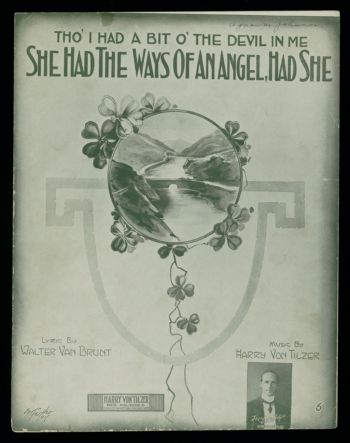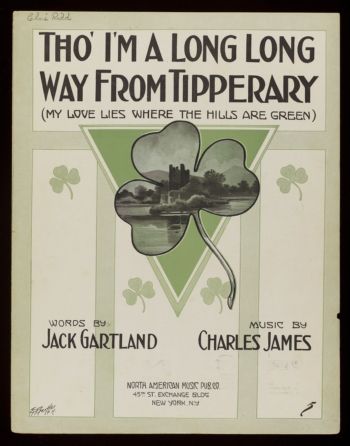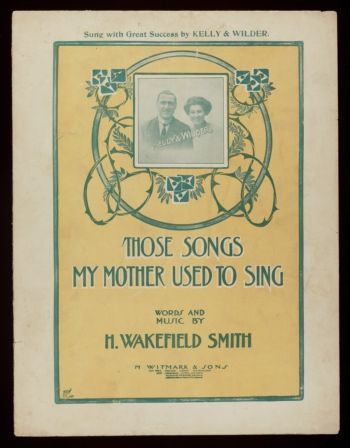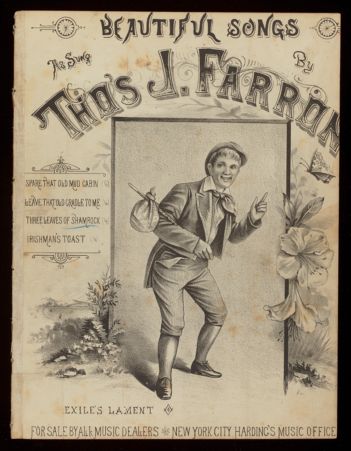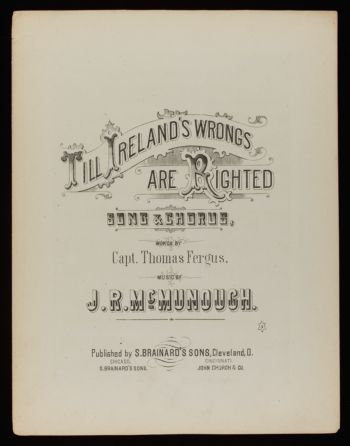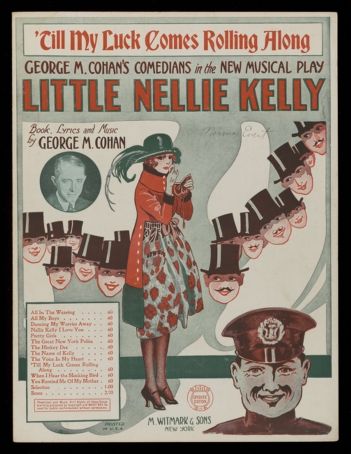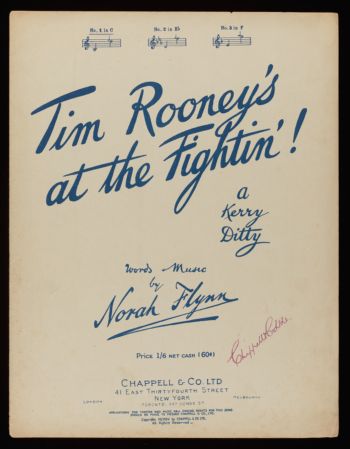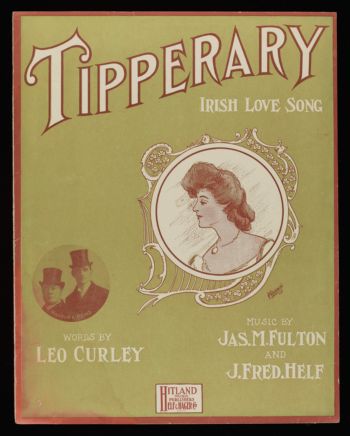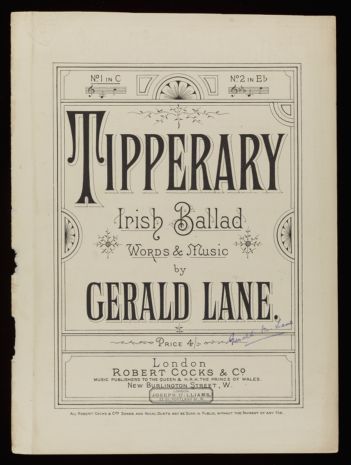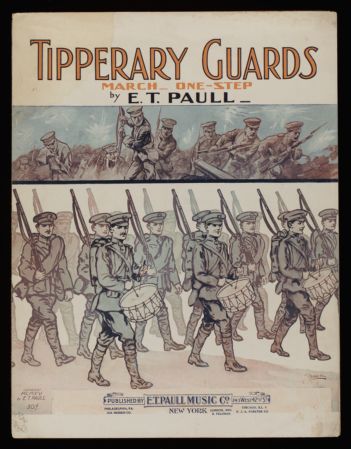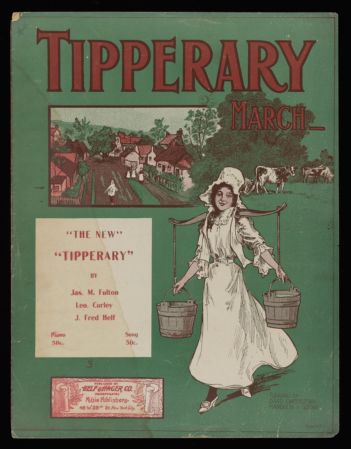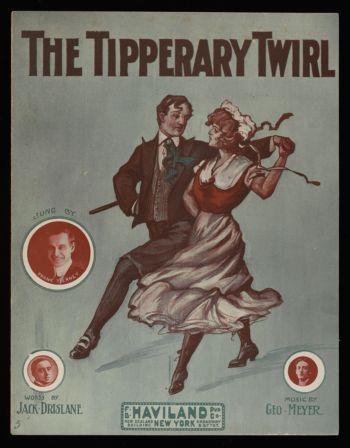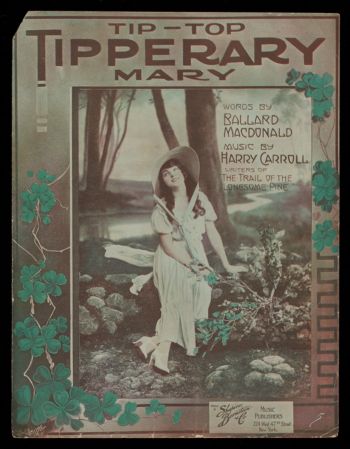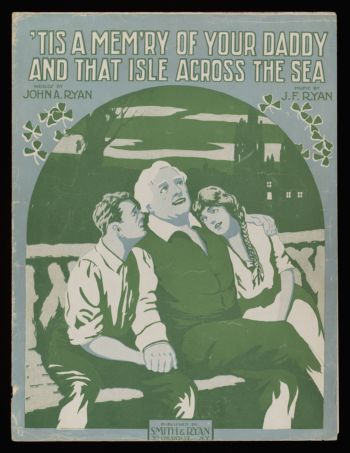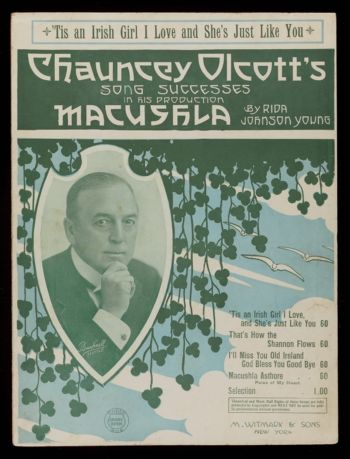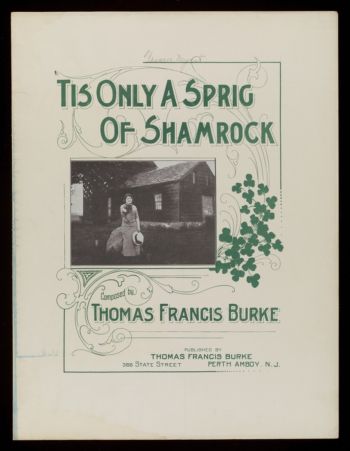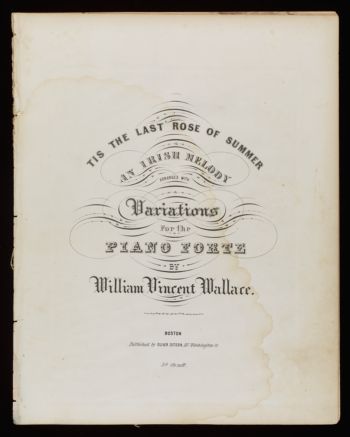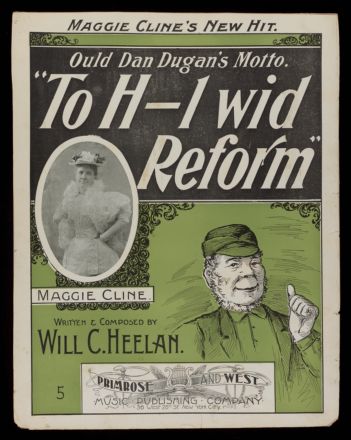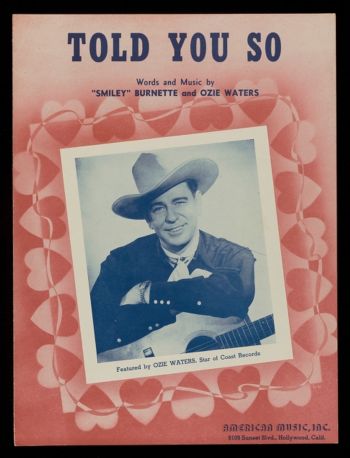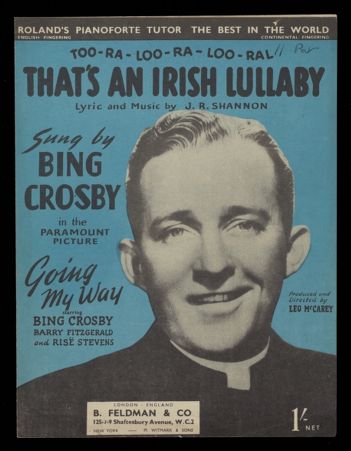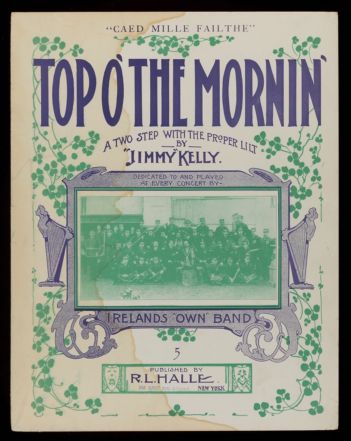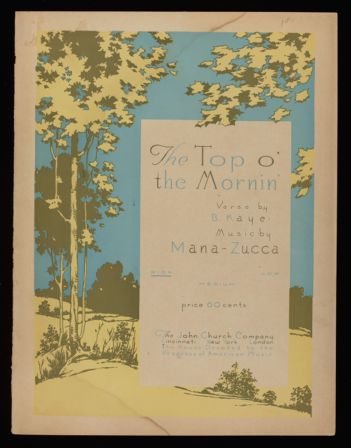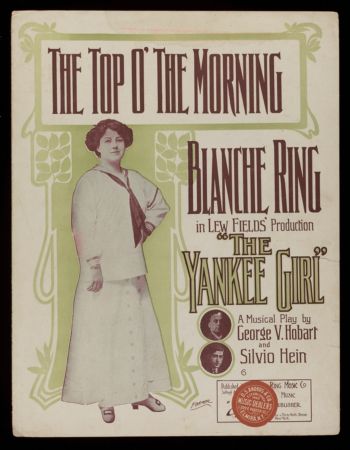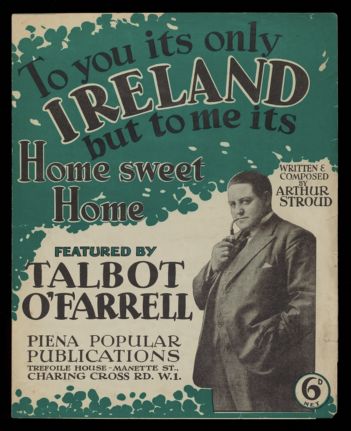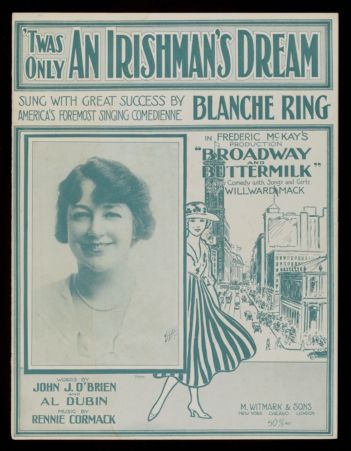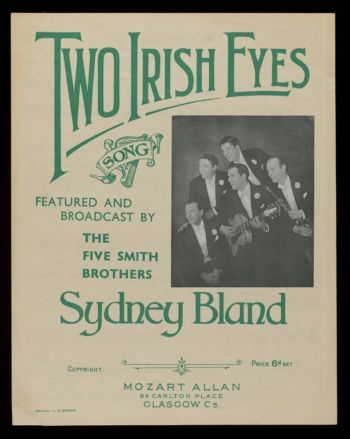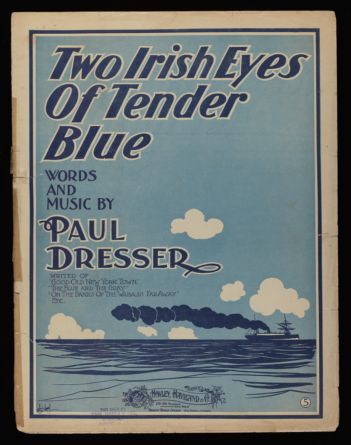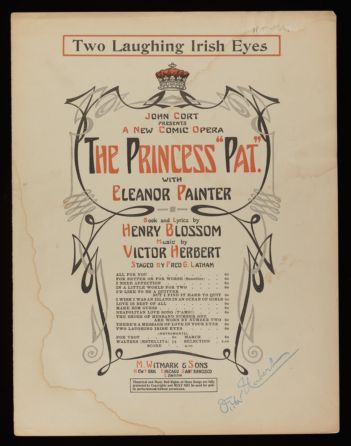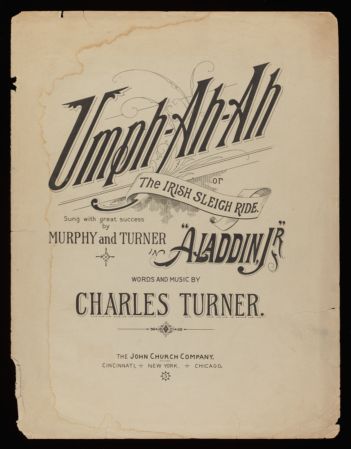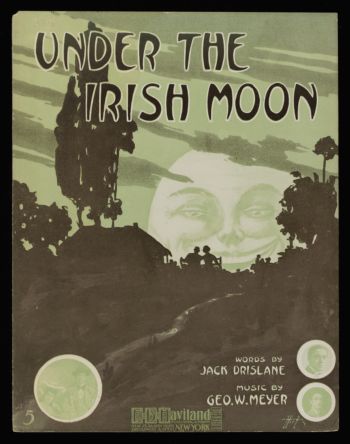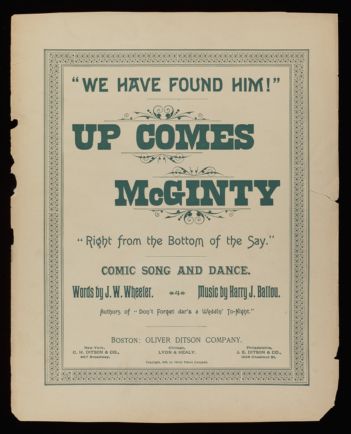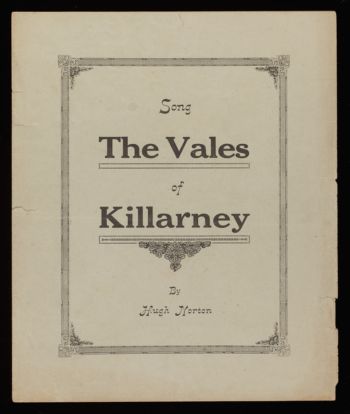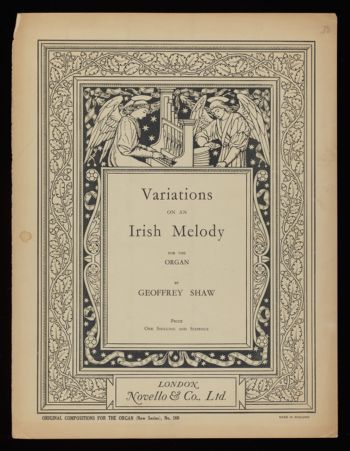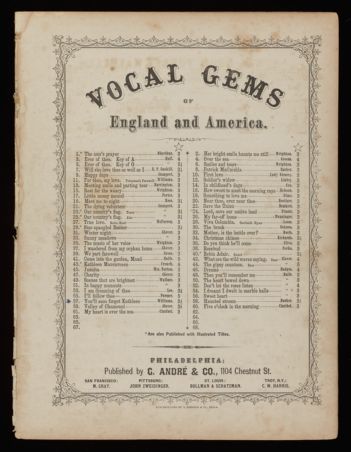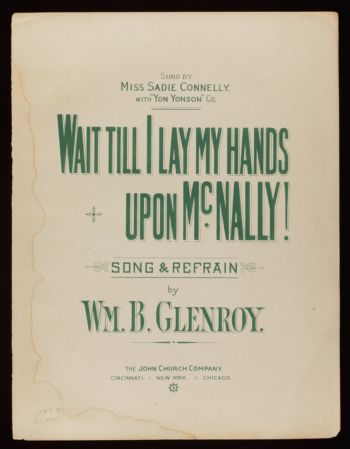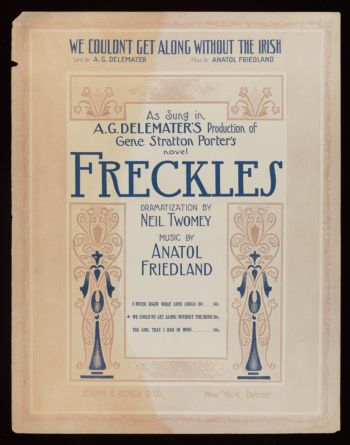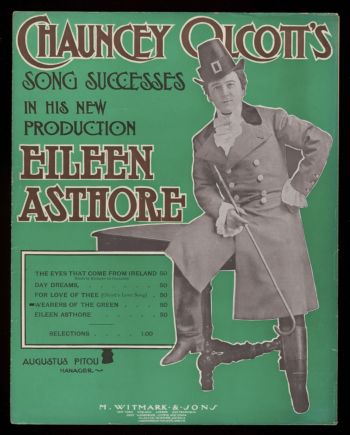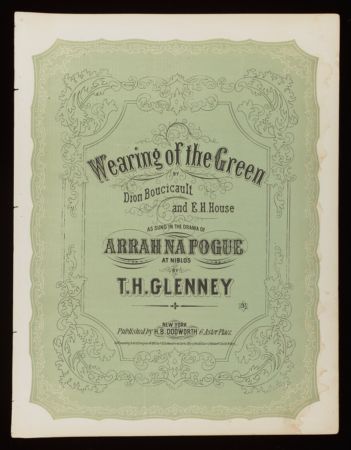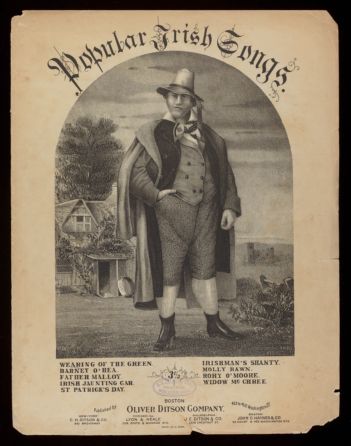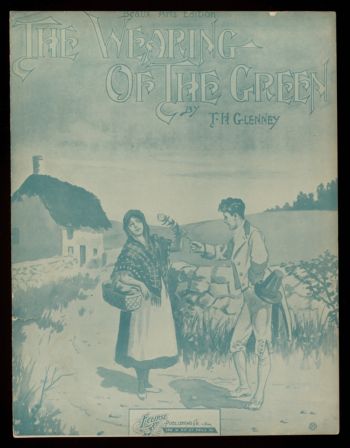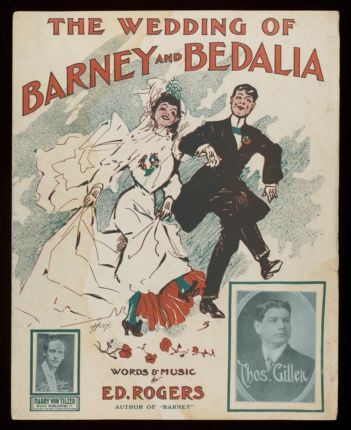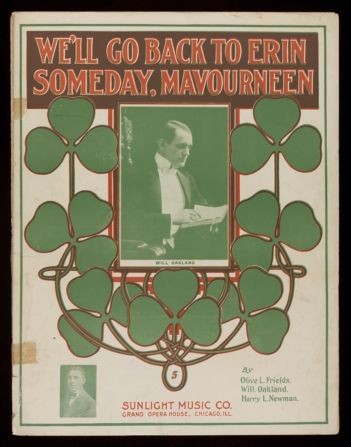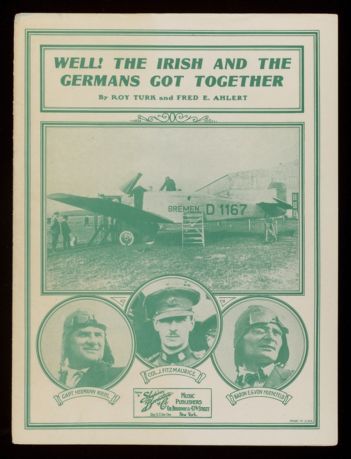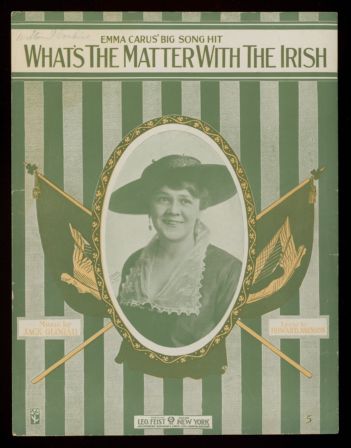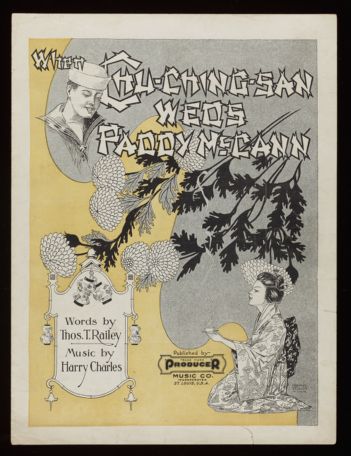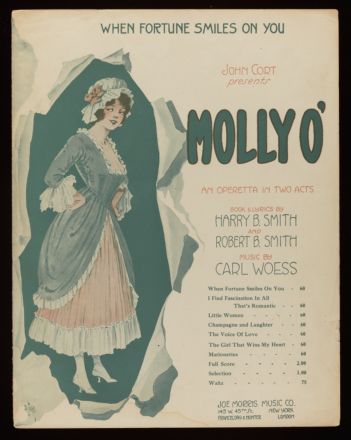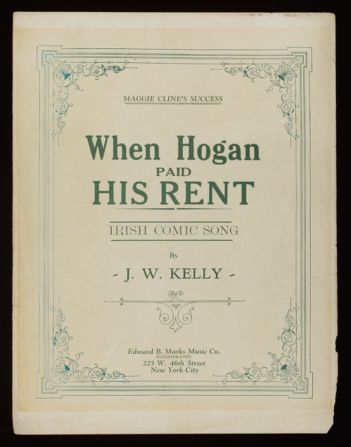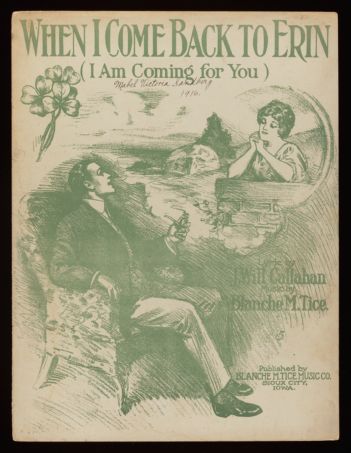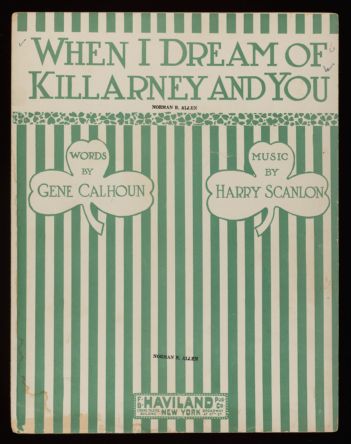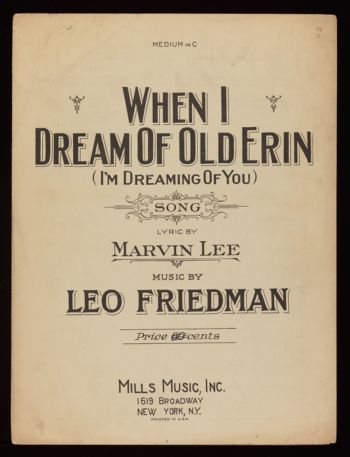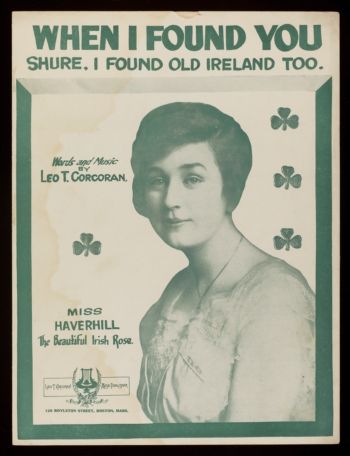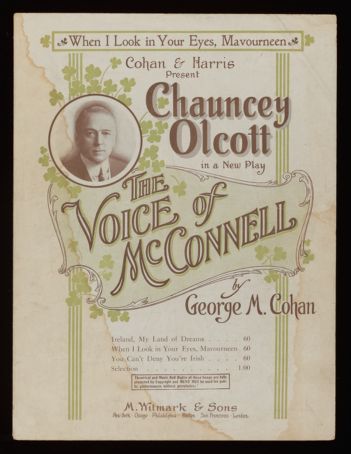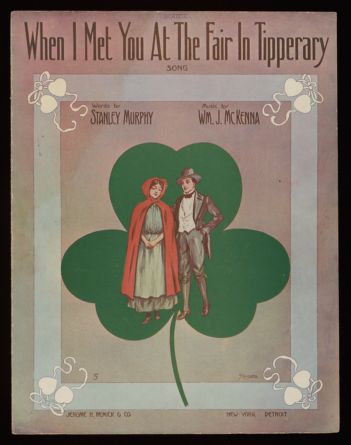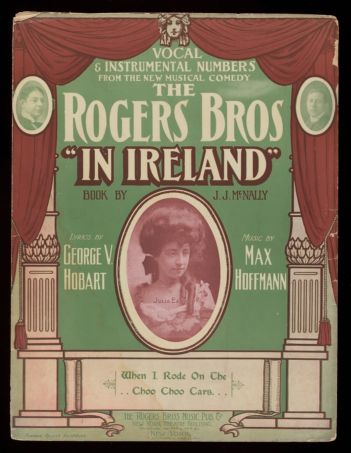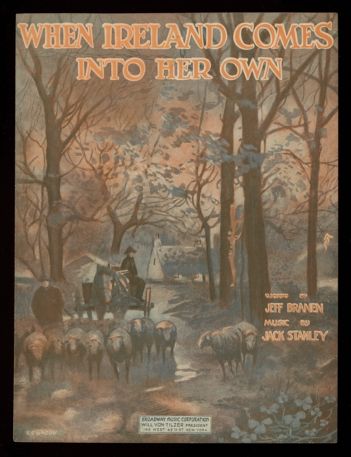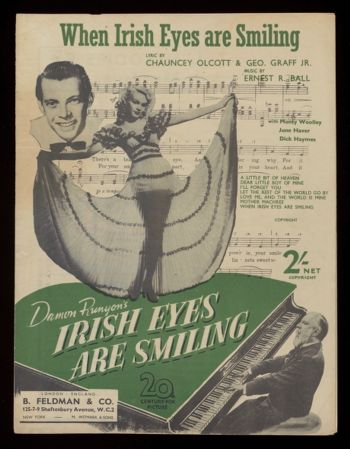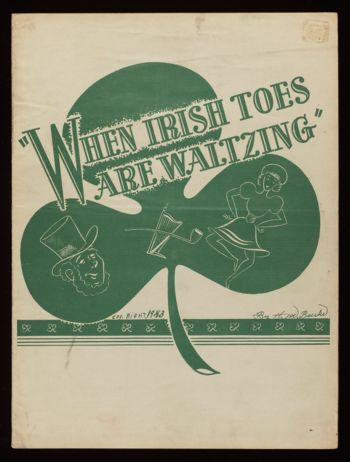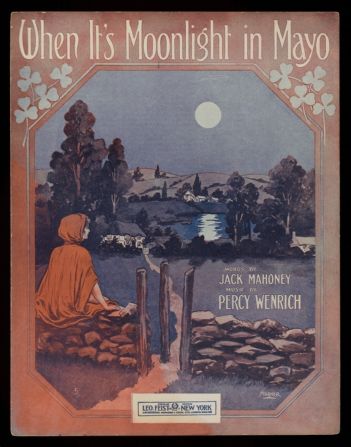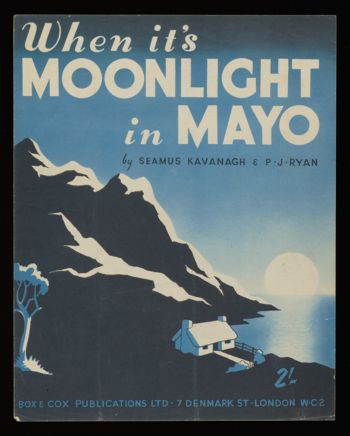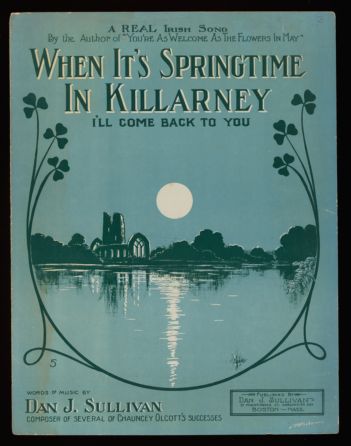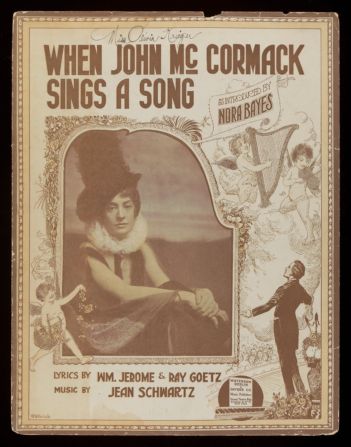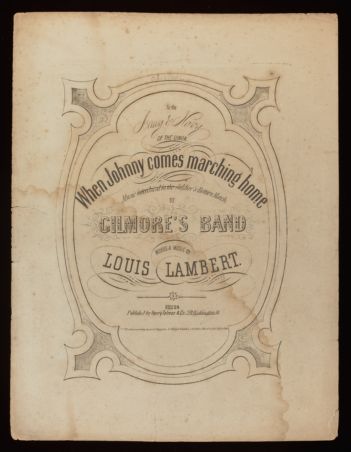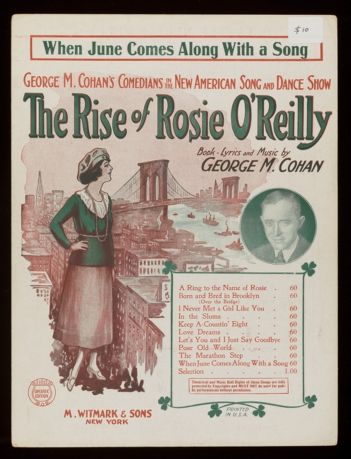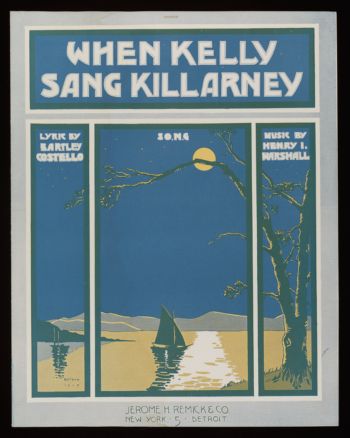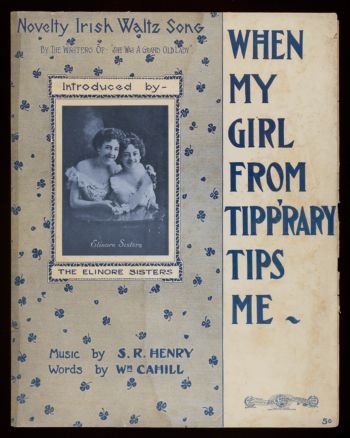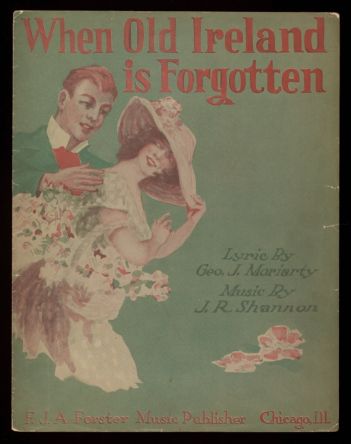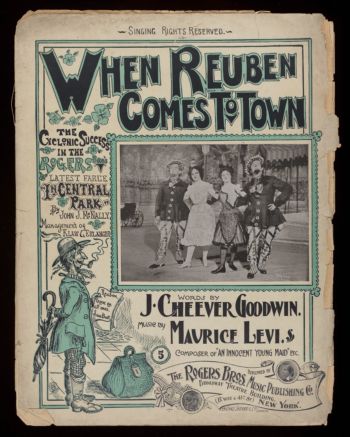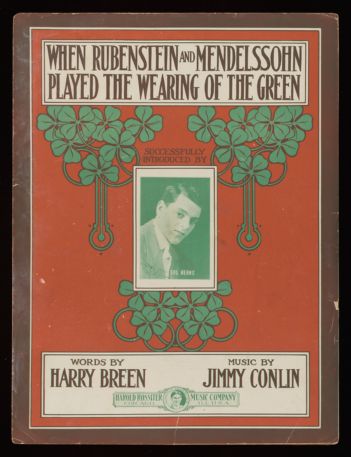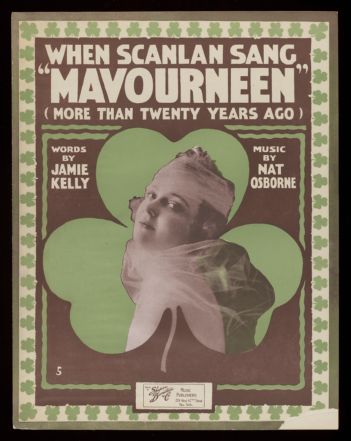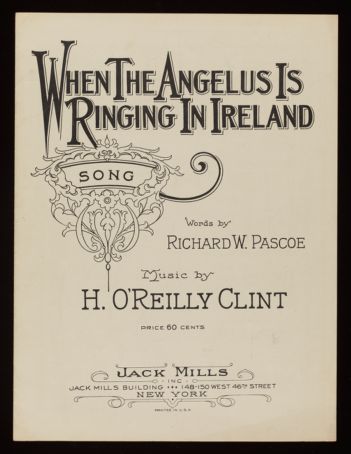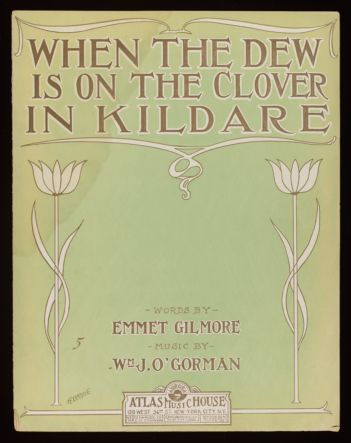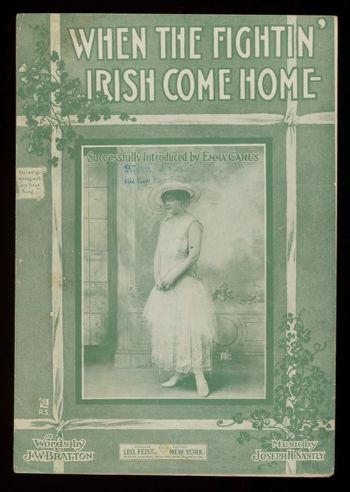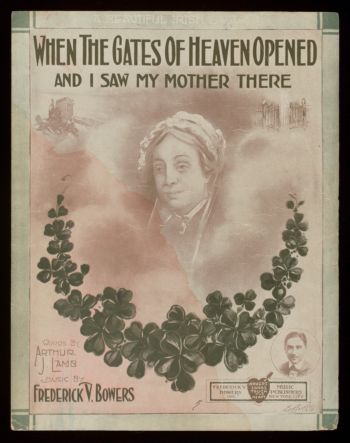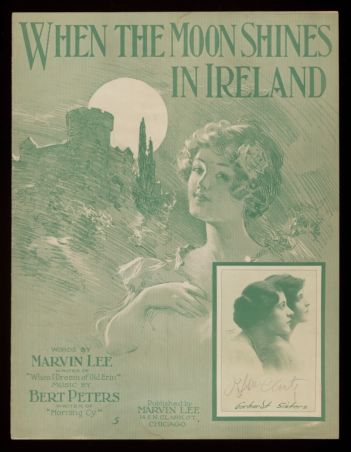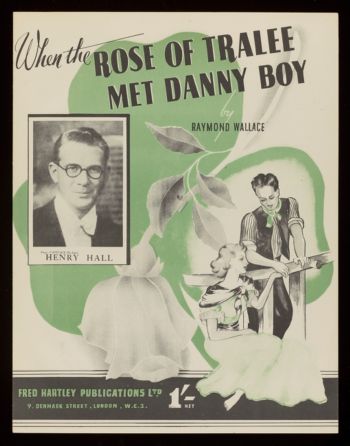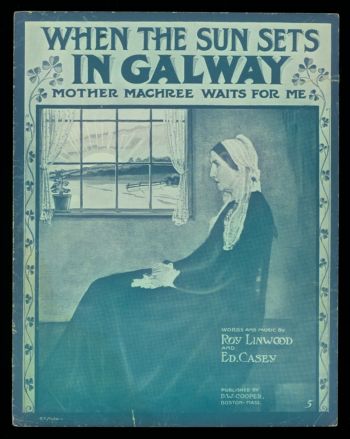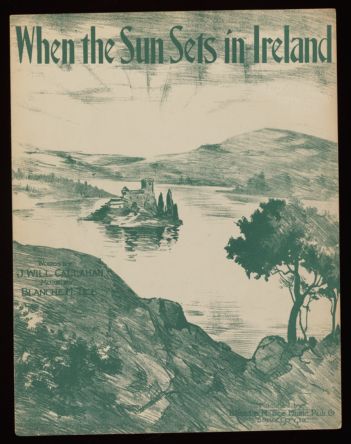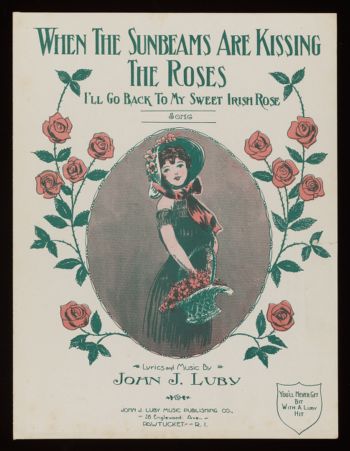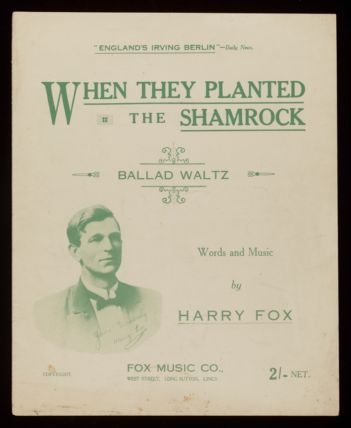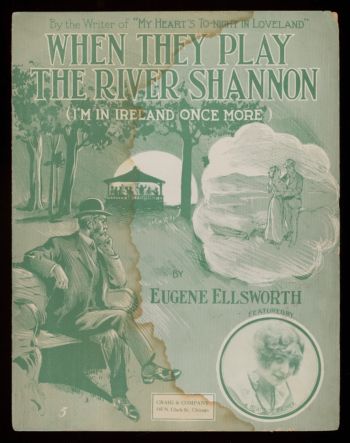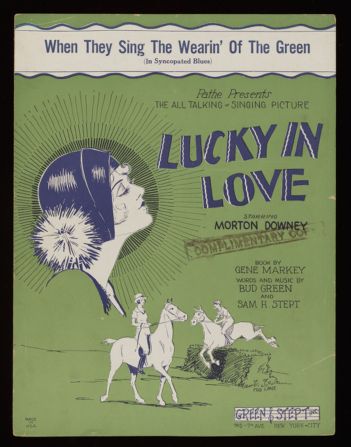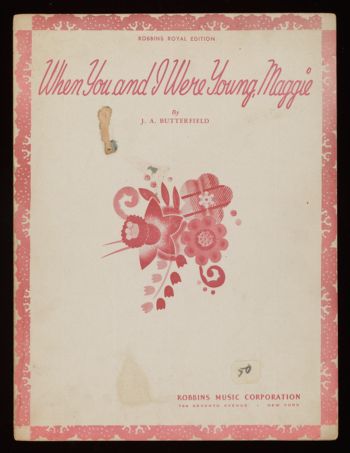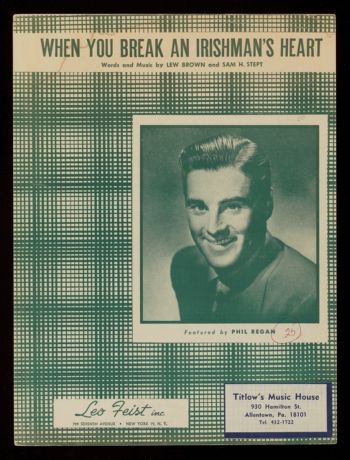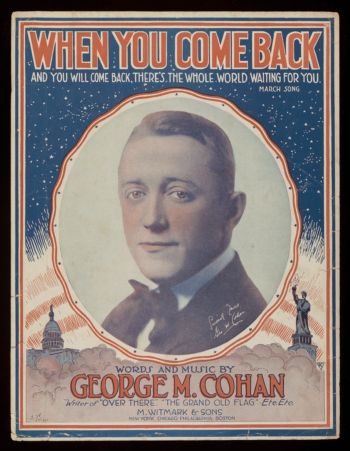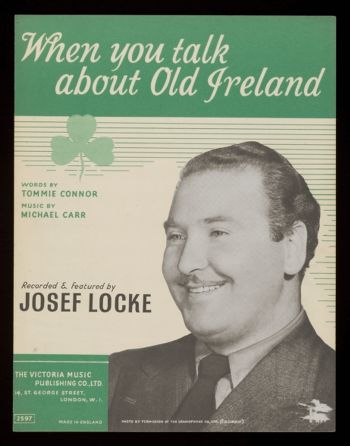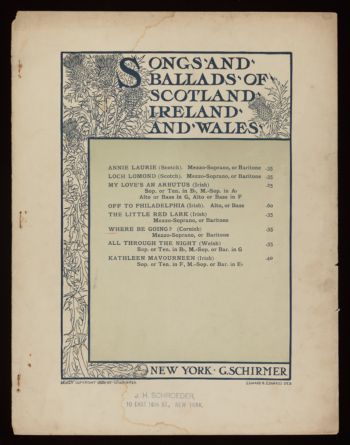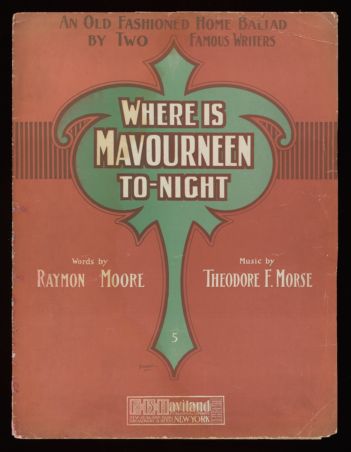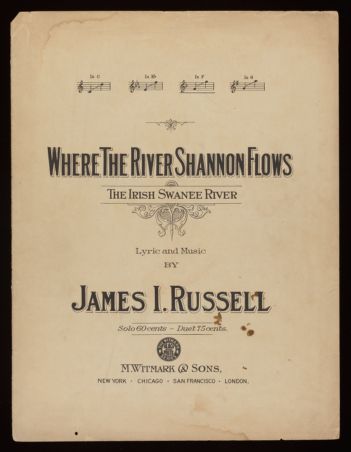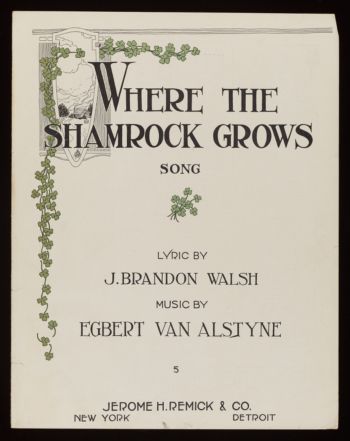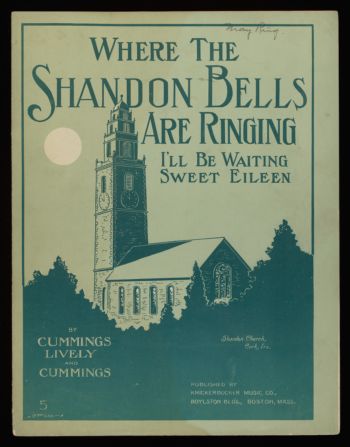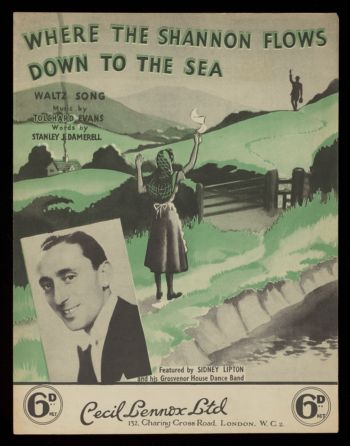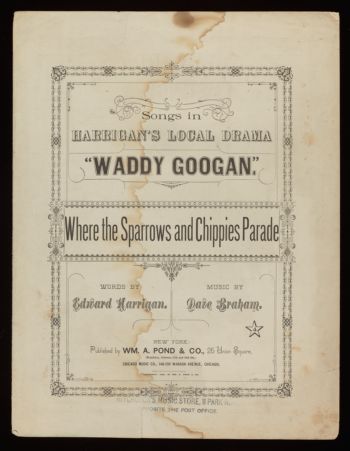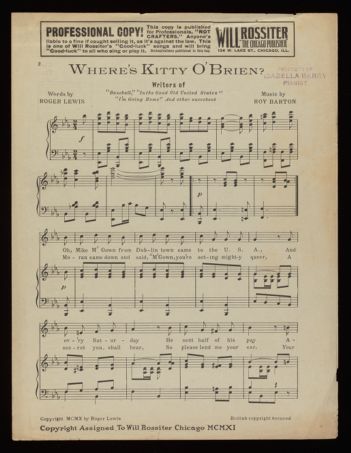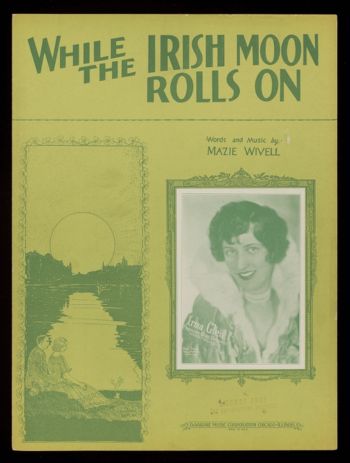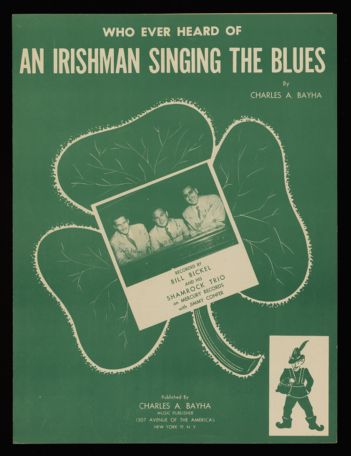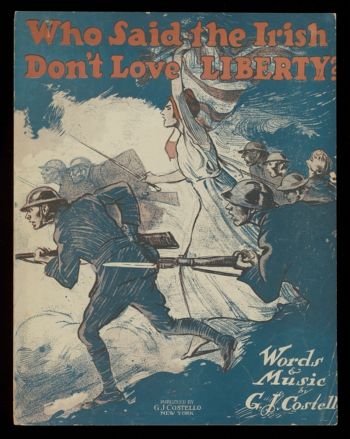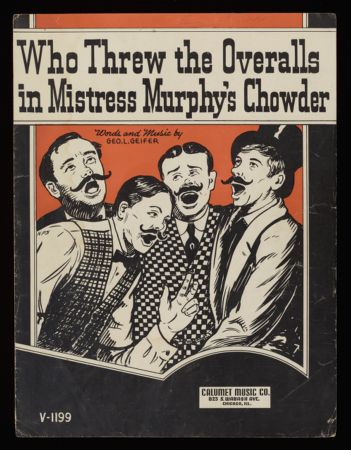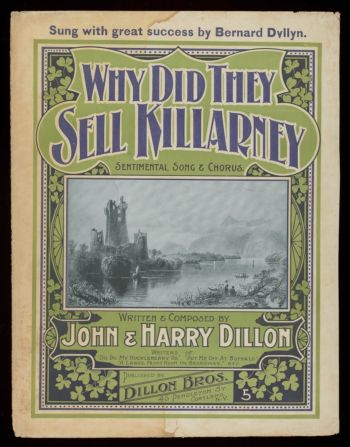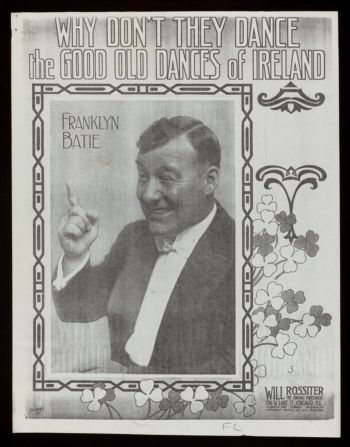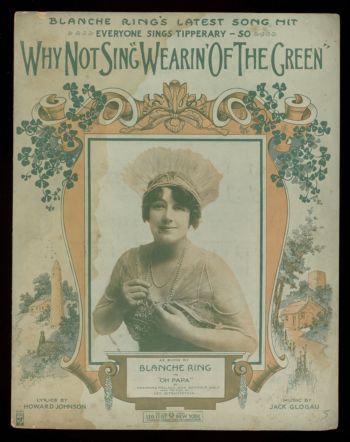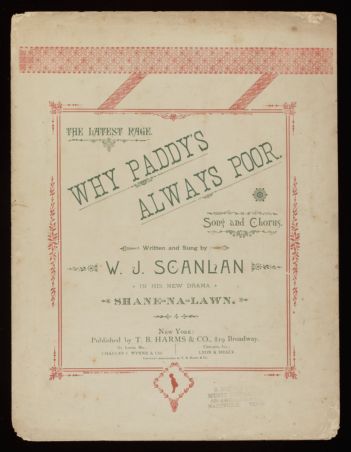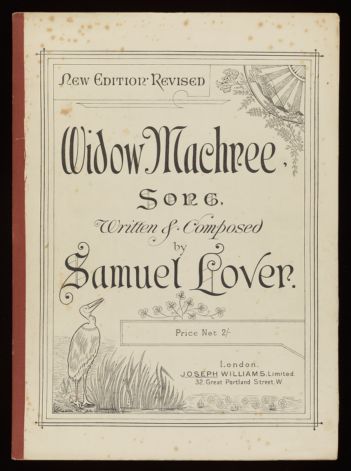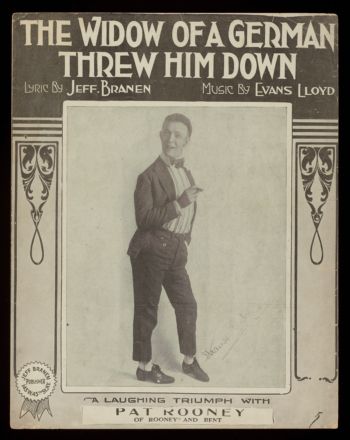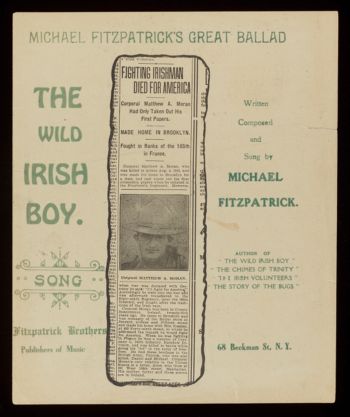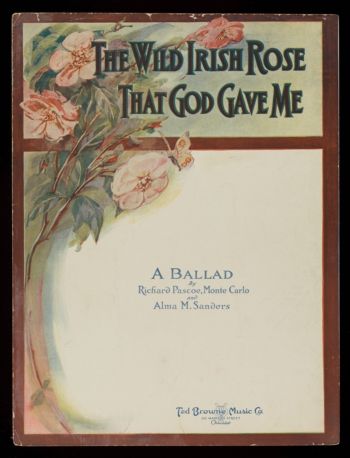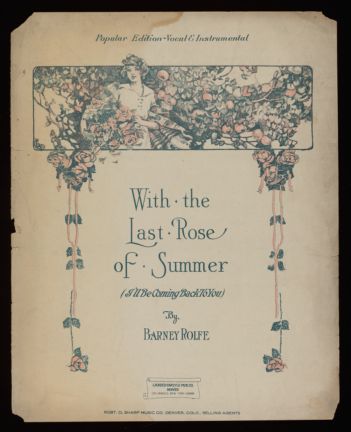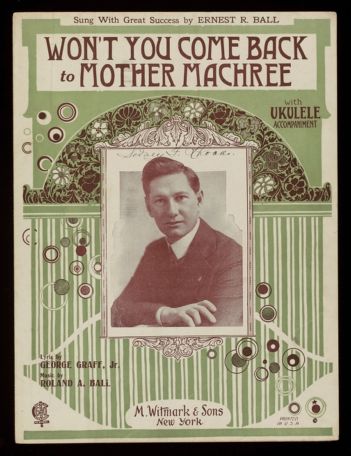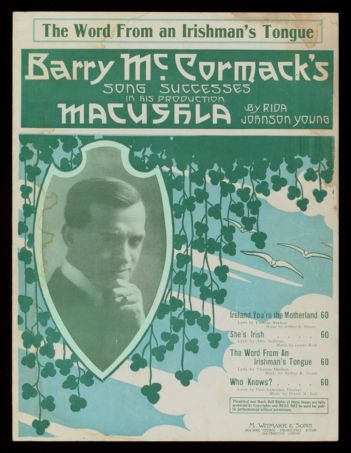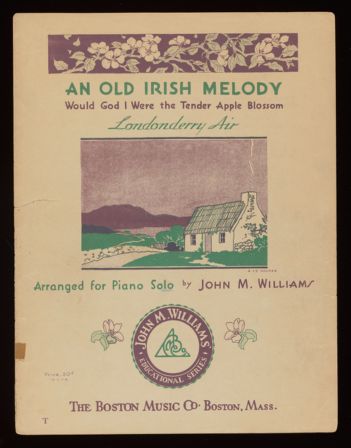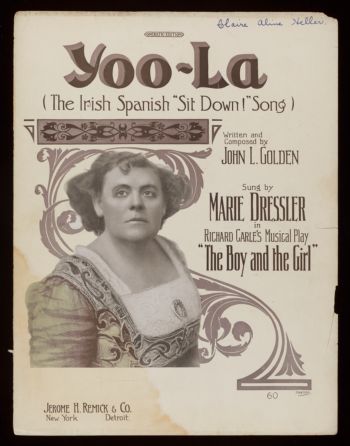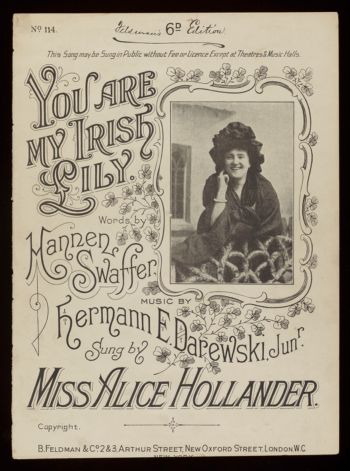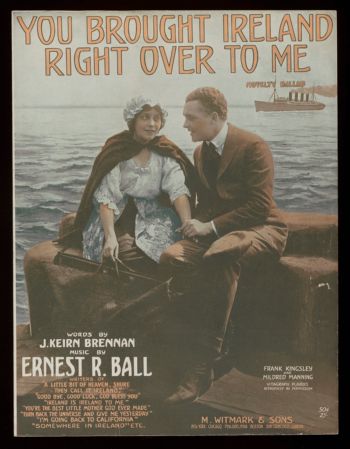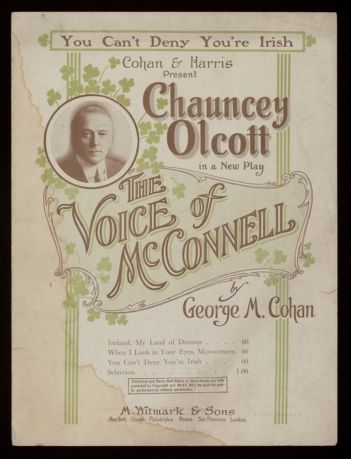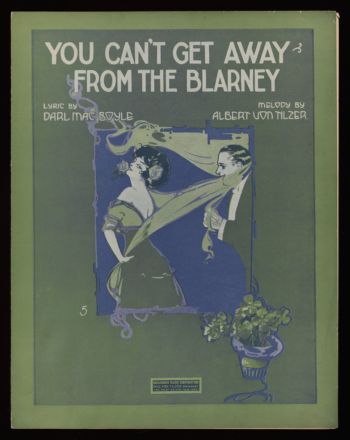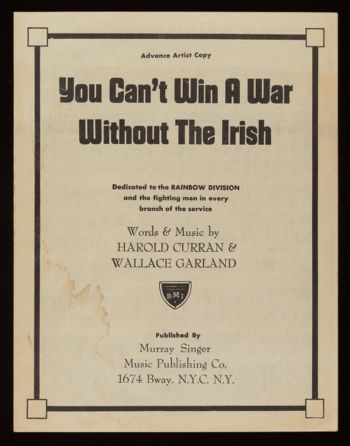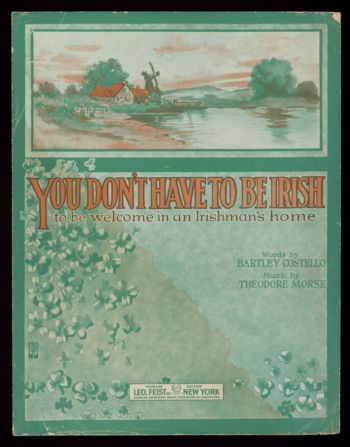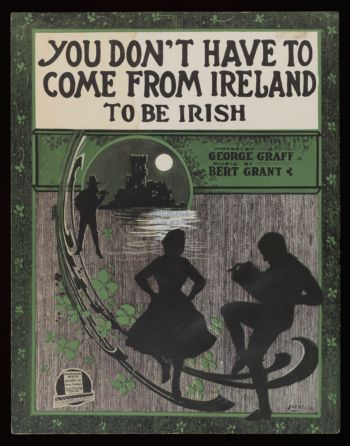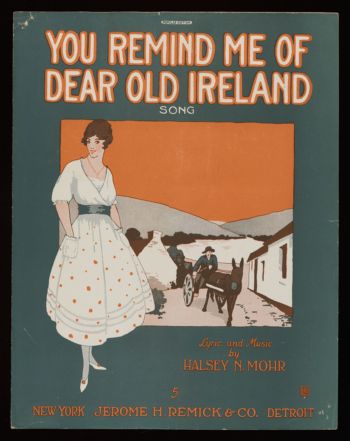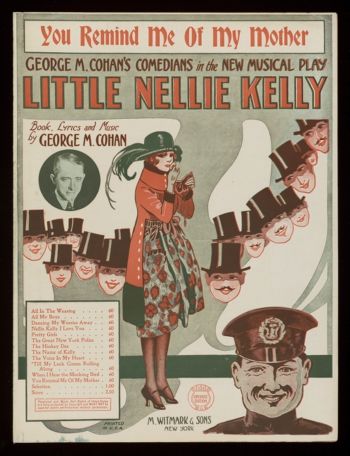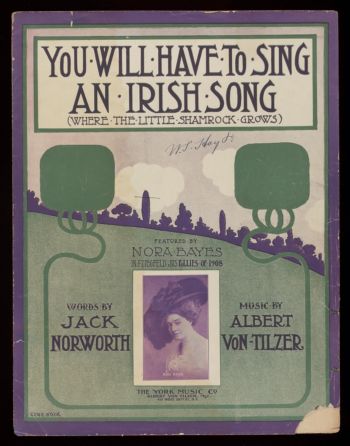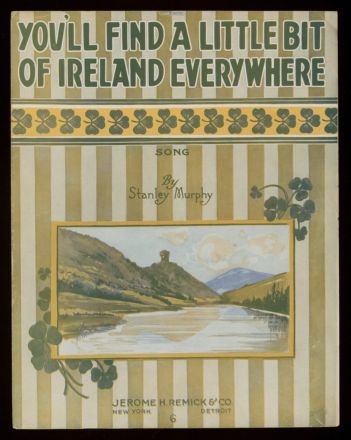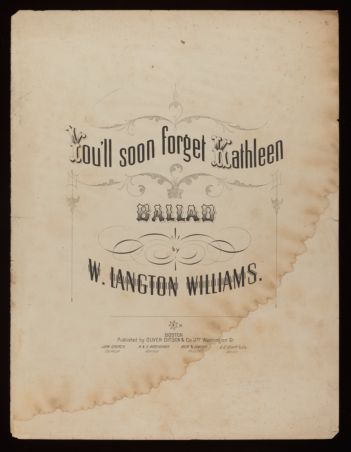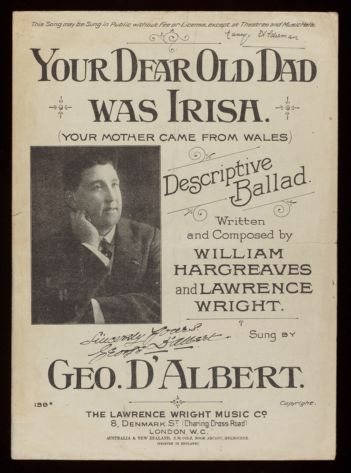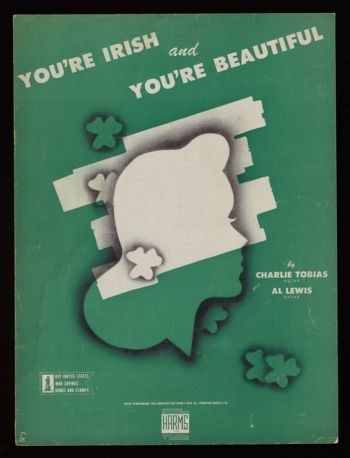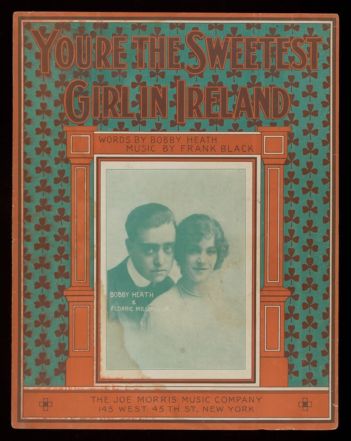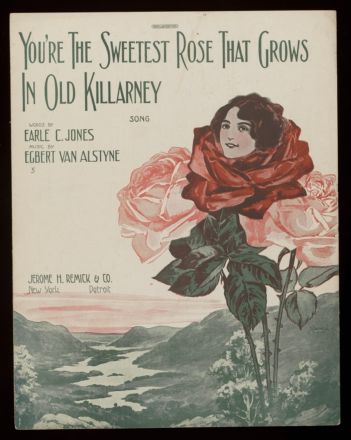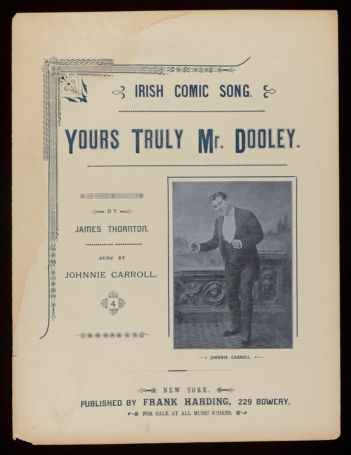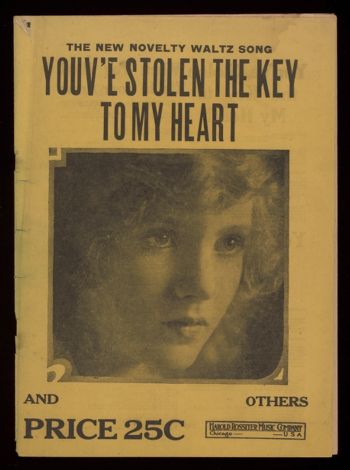Mick Moloney Irish-American Music and Popular Culture Irish Americana Collection
Call Number
Date
Creator
Extent
Language of Materials
Abstract
This collection of Irish-American ephemera and published music is part of the larger Mick Moloney Irish-American Music and Popular Culture Collection. This subcollection consists of sheet music, songsters, joke books, advertisements, and other forms of printed ephemera documenting the Irish and Irish-American image in American popular culture during the 19th and 20th centuries, with particular emphasis on ethnic perceptions and representations.
Biographical Note
Dr. Mick Moloney (1944-2022) was a musician, folklorist, and Global Distinguished Professor of Music and Irish Studies at New York University. He immigrated to the United States in 1973, earning a Ph.D. in folklore and folklife from the University of Pennsylvania. He has recorded and produced over forty albums of traditional music, acted as an advisor for scores of festivals and concerts, and served as artistic director for the musical ensemble The Green Fields of America. In 1999, Moloney was awarded the National Heritage Award of the National Endowment of the Arts, the highest official honor of traditional artist can receive in the United States. Moloney is the author of Far from the Shamrock Shore (2002) and numerous essays on Irish music and musical culture, and the co-editor of Close to the Floor: Irish Dance from the Boreen to Broadway (2009).
Sources: Steve Winnick, "From Limerick Rake to Solid Man: The Musical Life of Mick Moloney," Dirty Linen, No. 48 (October/November 1993) 1999 NEA National Heritage Fellowships: http://www.nea.gov/honors/heritage/fellows/fellow.php?id=1999_11 Mick Moloney, Musician and Folklorist: http://www.mickmoloney.com
Arrangement
Materials within each series are arranged in alphabetical order by title or subject, with the exception of materials from accession 2010-019 listed at the end of Series I and Series III respectively, which were not arranged by an archivist.
Series I: Sheet Music (Irish), 1817-1995
Series II. Songsters and Song Albums, 1863-1960
Series III. Sheet Music (Non-Irish), 1847-1950
Series IV. Joke Books, 1883-1928
Series V. Postcards, 1900-1915
Series VI. Ephemera, 1833-1961
Sub-series VI.A: General, 1833-1961
Sub-series VI.B: Merchant Ads, 1916 - circa 1960
Sub-series VI.C: Cartoons, 1865-1892
Scope and Content Note
The Mick Moloney Irish-American Music and Popular Culture Irish Americana Collection is a subcollection of the larger Mick Moloney Irish-American Music and Popular Culture Collection consisting of printed ephemera and published music documenting the Irish and Irish-American image in American popular culture during the 19th and 20th centuries, with particular emphasis on perceptions, representations, and stereotypes of Irish people. The subcollection includes both positive and negative stereotypes of the Irish, as depicted on sheet music, postcards, and other commercial printed materials such as songsters, joke books, advertisements, and cartoons. The joke books also contain content about harmful stereotypes of other immigrant groups, Jews, Asians, and Black Americans. Materials in this collection were published between 1817 and 1995, with the majority dating from between 1860 and 1930. The market for such commercial paper products was tied to the simultaneous emergence and symbiotic relationship of the American middle class and the culture of consumption during this period. In addition, the seepage of entertainment from public venues such as vaudeville into the domestic sphere created demand for such materials.
Subjects
People
Access Restrictions
Open for research without restrictions.
Use Restrictions
Copyright of the items in the collection are either held by their creators or in the public domain, depending on publication date, publication country, and whether or not the work was registered with a copyright notice. Users need not secure permission from the Tamiment library to publish or reproduce materials in this collection in the public domain; permission to publish or reproduce materials to which original creators hold copyright must be secured from the copyright holder. Please contact Tamiment Library and Robert F. Wagner Labor Archives, special.collections@nyu.edu, 212-998-2596 for assistance with contacting donor.
Preferred Citation
Published citations should take the following form:
Identification of item, date; Mick Moloney Irish-American Music and Popular Culture Irish Americana Collection (AIA 031.004); box number; folder or item number; Archives of Irish America;
Tamiment Library
New York University Libraries.
Custodial History Note
New York University's Division of Libraries, in conjunction with Glucksman Ireland House at New York University, purchased the Mick Moloney Collection for the Archives of Irish America in 2006. Until the Collection was transferred to New York University, under the supervision of Dr. Michael Nash, Head of the Tamiment Library, the materials were stored in Dr. Moloney's house in Philadelphia, Pennsylvania. The accession numbers associated with this collection are 2006.071 and 2010.019.
About this Guide
Processing Information
The original order of materials was maintained except in the case of obvious misfiling; Dr. Moloney employed various people to organize his papers prior to accession with sometimes unpredictable results.
In the fall of 2021 the description of Series IV: Joke Books was edited to provide more context for the materials.
In the fall of 2022, materials from accession 2010-019 were processed and described by an archivist. Materials were placed in new acid-free folders and boxes. Original titles were maintained when possible. One piano reel was rehoused by New York University's Barbara Goldsmith Preservaiton and Conservation Lab. Materials from accession 2010-019 were intellectually incorporated into appropriate series and sub-series. Postcards and ephemera materials were incorporated into the existing alphabetized file listings of Series II, IV, V, and VI; songbooks added to Series I and Series III were not arranged by an archivist and were added to the end of the previously created alphabetized file listings.
In April 2025, materials from box 2 were rehoused into two smaller flat boxes. Materials from this box are now found in boxes 2 and 65.
Sponsor Note
Revisions to this Guide
Repository
Series I: Sheet Music (Irish), 1817-1995, inclusive
Language of Materials
Scope and Content Note
Series I: Sheet Music (Irish), 1817-1995 consists of sheet music focusing on songs about Ireland and the Irish published in the United States, particularly in New York City. The majority of the titles in this series were printed between 1860 and 1930, with a significant number of undated pieces. A variety of genres (from comic to sentimental) are documented, as well as a recurring cast of composers, lyricists, and publishers. Together, they offer a comprehensive look at what was an musical form of cultural expression and an extremely lucrative business between the American Civil War and the Second World War.
Among the men composing music for Irish-themed sheet music who are substantially represented in this series are David Braham (28 examples), Jerome Schwartz (17), Ernest R. Ball (16), and Harry Von Tilzer (14), in addition to Victor Herbert, Theodore F. Morse, Albert Von Tilzer, Max Hoffman, and Walter Scanlan. There are "Irish" lyrics penned by Edward Harrigan (27), William Jerome (21), Alfred Bryan (13), and Bartley Costello (13), as well as by Thomas Moore, Samuel Lover, George V. Hobart, Harry Pease, J. Keirn Brennan, and Stanley Murphy. George M. Cohan and Chauncey Olcott represent composers who were also lyricists.
The team of Harrigan and Hart aside, only Cohan and Olcott are familiar names. Nevertheless, one of the men defining the "Irish Colleen" through sheet music such as that in Series I was Alfred Bryan (1871-1958), a native of Ontario who moved to New York in 1905. Among the thousand songs he composed were "My Irish Girlie" (Box 28, Folder 31) and "Peg O'My Heart" (Box 32, Folder 18). His philosophy was simple: "the public wants something that sings well."
More than 1,000 songs resulted from the collaboration of lyricist William Jerome and composer Jean Schwartz, among them many of the most memorable Irish-American pieces of the Tin Pan Alley era. The son of Irish immigrants, William Jerome Flannery (1865-1932) was born in Cornwall-on-the-Hudson, New York. After stints as a dancer with McAvoy's Hibernicon and Barlow's Minstrels, he starred during the 1890s at Tony Pastor's Theatre on 14th Street and at E. F. Albee's Union Square Theatre in New York City. Shortly after the turn of the century, Jerome turned to songwriting, teaming up with Jean Schwartz (1878-1956), a native of Budapest who began his New York career demonstrating pianos for a department store. Their first Irish American hit was "Bedelia" (Box 3, Folder 31) in 1903, followed two years later by "My Irish Molly O" (Box 28, Folder 35).
Novelty and nostalgia dominate Series I, with the most popular themes taking love and emigration as their subjects; see, "The Day I Left Old Erin (For the Good Old U.S.A.)" (Box 6, Folder 22), "Sing an Irish Song To-Night (For Your Old Daddy)" (Box 35, Folder 12), or "3,121 Miles Away" (Box 1, Folder 1). Words were often used to convey "Irish" at a glance and the Tin Pan Alley composer who sprinkled his lyrics with well-known Irish place names — "The Tipperary Twirl" (Box 39, Folder 8), "My Little Cottage Home in Sweet Killarney" (Box 29, Folder 13), "I'm On My Way to Dublin Bay" (Box 15, Folder 21) — conjured up an image of a mythical land of green fields and quaint villages that bore little relation to contemporary Ireland.
"'Twas Only an Irishman's Dream" (Box 39, Folder 22) or "Wait till I Lay My Hands on McNally!" (Box 40, Folder 1) are examples of titles in the sentimental and comic Irish repertoire. Humorous songs based on now-outdated conceptions of ethnicity took up the controversial theme of the "amalgamation of races," usually depicted through musical examples about romance and marriage between the Irish and other ethnic groups written within a narrow time period at the turn of the twentieth century. There are six songs about Irish men romancing Native American maidens — such as "Minni-Ha-Ha-Donahue" (Box 26, Folder 10) — two depicting Irish-Asian alliances — "When Chu-Ching-San Weds Paddy McCann" (Box 40, Folder 12) and "My Little China Doll" (Box 29, Folder 12) — as well as those featuring Mexicans, African-Americans, Italian-Americans, and Jews, like 1925's "Kosher Kitty Kelly" (Box 23, Folder 3).
Sheet music cover illustrations that represent the Irish as simianized, such as "The Judge, He's-a-Irish Too!" (Box 21, Folder 6) and "Come Down, Mike Downs, Come Down" (Box 5, Folder 27). The lyrics of many songs in Series I stereotype the Irish and Irish-Americans with racial or prejudiced language and situations. Other songs incorporate terms of endearment from the Irish language like "mavourneen," "acushla," "astore," and "machree." Particularly interesting examples can be found in "Carrigdhoun" (Box 5, Folder 1) and "Let the Farmer Praise His Grounds" (Box 24, Folder 1).
Contemporary events are also reflected in the subject matter, especially Irishmen serving as soldiers with the American military. "The Wild Irish Boy" (Box 42, Folder 17), "Somewhere in France Dear Mother" (Box 36, Folder 11), and "The Army's Full of Irish" (Box 2, Folder 34) date from the First World War while "Johnny Doughboy's Found a Rose in Ireland!" (Box 21, Folder 2) was a 1942 hit for singer Kate Smith, the same year "Clancy's Gone and Joined the Army" (Box 5, Folder 11) was published.
The oldest sheet music in Series I is "Eveleen's Bower" (1817) and the most recent is "The Irish Wedding Song" (1995). Of political interest are "Far Away Ireland" (1986), which is dedicated to Ronald Reagan, complementing "When Ireland Takes Her Place among the Nations of the Earth" (1919), which is dedicated to Eamon de Valera. The bulk of the sheet music was published in the United States, with New York City dominant, but there are good samples from Boston, Chicago, and Philadelphia. Among the foreign publications, there are 142 examples from London — such as "The Eyes of Irish Blue" (1913) — and 14 from Dublin, including Percy French's "The Emigrant's Letter" (n.d.). Many of the pieces are in excellent condition, considering their great age, but the majority have frayed along the spine and have separated. Only the pieces "Her Danny" (Box 12, Folder 27), "Nora Machree" (Box 30, Folder 14), "Shadowland" (Box 34, Folder 12), and "Winging Your Way to Ireland" (Box 42, Folder 19) are incomplete or contain a possibly unrelated page.
Arrangement
The materials in this series are arranged alphabetically by song title, with the exception of materials from accession 2010-019, housed in Boxes 60-62 and Box Shared Tamiment 164, which were not arranged by an archivist and added to the end of the previously created alphabetized file listings.
Numeric
3,121 Miles Away, undated, inclusive
Image Set
A
A Bit O' Blarney, 1904, inclusive
Image Set
A Bit O' Pink and White, 1923, inclusive
A Bit O' the Brogue, 1920, inclusive
Image Set
A Bit of Irish, 1923, inclusive
Image Set
A Breath of Old Ireland and You, 1920, inclusive
A Broken Song, 1904, inclusive
A Broth of a Boy, 1922, inclusive
Image Set
A Flower from Irish Soil, 1899, inclusive
A Garden in Connemara, 1949, inclusive
A Laugh with a Tear in It, 1908, inclusive
A Little Bit of Heaven, 1907-1916, inclusive
A Little Bit of Irish, 1911, inclusive
A Little Bunch of Shamrocks, 1913, inclusive
A Little Dash of Dublin, 1935, inclusive
A Little Drop of Irish and a Wee Bit of Scotch, 1919, inclusive
A Picture of Dear Old Ireland, 1916, inclusive
A Puff O' Me Pipe and A Song, 1922, inclusive
A Real Irish Mother, 1920, inclusive
Image Set
A Rose of Old Derry, 1907, inclusive
A Shawl of Galway Grey, 1949, inclusive
A Sprig O' Shillalah, 1904, inclusive
Image Set
A Wee Bit o' Love, 1929, inclusive
Image Set
A Wee Little Drop o' the Cruiskeen Lawn, 1912, inclusive
A Wee Sprig of Green, 1957, inclusive
Image Set
Abie's Irish Nose, 1925, inclusive
Abie's Irish Rose, 1947, inclusive
Image Set
Abie's Irish Rose (2), undated, inclusive
Acushla, 1906, inclusive
Image Set
Acushla Mine, 1948, inclusive
Image
Acushla! I'm Calling Thee, 1914, inclusive
After the Ball, undated, inclusive
Image Set
Aggie Asthore, 1858, inclusive
Agricultural Irish Girl, The, 1949, inclusive
Ah, Sweet is Tipperary, 1921, inclusive
Airs of Old Erin, undated, inclusive
Airy Mary, 1919, inclusive
Image Set
Alice Fitzgerald, 1888, inclusive
Image Set
Alice O'Grady, 1906, inclusive
All Aboard for Ireland, 1919, inclusive
All for the Love of Mike, 1922, inclusive
All Hands Went on Strike, 1893, inclusive
All My Life, 1936, inclusive
Image Set
All That I Want Is in Ireland, 1920, inclusive
Allan's Irish Pianist, undated, inclusive
Along the Rocky Road to Dublin, 1915, inclusive
America to Ireland, 1868, inclusive
America, Ireland Loves You, 1917, inclusive
An Irish Christmas, 1949, inclusive
Image Set
An Irish Coquette, 1905, inclusive
An Irish Courtship, 1903, inclusive
An Irish Dance, 1930, inclusive
Image Set
An Irish Girl, 1973, inclusive
Image Set
An Irish Girl Is Good Enough for Me, 1909, inclusive
An Irish Girl's Bouquet, 1892, inclusive
An Irish Girl's Lament, 1905, inclusive
An Irish Lad's Wooing, 1895, inclusive
An Irish Love Song, 1895, 1898, inclusive
An Irish Noel, 1904, inclusive
An Irish Slumber Song, 1903, inclusive
An Irish Song Will Live as Long as Life and Love Shall Last, 1921, inclusive
An Irishman Was Made to Love and Fight, 1918, inclusive
An Old Irish Lady, Apr 1905, inclusive
Image Set
And That's How We Love in Ireland, Mar 1905, inclusive
Angels Whisper, undated, inclusive
Image Set
Answer to the Lament of the Irish Immigrant, The, Jan 1905, inclusive
Any Old Place the Gang Goes, 1918, inclusive
Are Ye Right There, Michael?, 1902, inclusive
Are You for Ireland?, 1921, inclusive
Image Set
Are You the O'Reilly?, 1915, inclusive
Image Set
Army's Full of Irish, The, 1917, inclusive
Arrah Arabia, 1908, inclusive
Image Set
Arrah, Come in Out of the Rain, Barney McShane, 1909, inclusive
Arrah Go on I'm Gonna Go Back to Oregon, 1916, inclusive
Arrah Wanna, 1906, inclusive
Image Set
As I Walk Home With Kitty Malone, 1904, inclusive
As Irish As Dublin Town, 1947, inclusive
As Long As the Shamrock Grows Green, 1912, inclusive
Asthoreen Bawn, 1946, inclusive
At the Cry of the First Bird, 1924, inclusive
At the Donnybrook Fair, 1916, inclusive
At the End of an Irish Moonbeam, 1927, inclusive
At the Meeting of the Waters, 1920, inclusive
Away, Bonnie Bark, undated, inclusive
Image Set
Away From You, 1925, inclusive
Image Set
B
Back Again to Dear Old Ireland and You, 1915, inclusive
Bad Luck to the Day, 1870, inclusive
Back in Tipperary Town, 1917, inclusive
Babies on Our Block, The, 1879, inclusive
Ballymaquilty Band, The, 1948, inclusive
Ballymoney Conversazione, The, undated, inclusive
Bard of Armagh, The, 1914, inclusive
Image Set
Barney, 1903, inclusive
Image Set
Barney A'Leen, 1871, inclusive
Image Set
Barney Brallaghan, undated, inclusive
Image Set
Barney Come Over Here, 1920, inclusive
Image Set
Barney McCoy, 1881, inclusive
Barney M'Coy, 1882, inclusive
Image Set
Barney O'Hea, undated, inclusive
Image Set
Barney, Take Me Home Again, 1875, inclusive
Beautiful Girl of Kildare, 1873, inclusive
Beautiful Isle of Erin, 1915, inclusive
Beautiful Norah, undated, inclusive
Because You're Irish, 1917, inclusive
Image Set
Bedelia, 1903, inclusive
Image Set
Begorrah, 1959, inclusive
Image Set
Believe Me, If All Those Endearing Young Charms, 1910, inclusive
Bells of Killarney, 1913, inclusive
Image Set
Bells of Killarney (2), 1927, inclusive
Bells of Shandon, The, 1878, inclusive
Image Set
Bells of St. Mary's, The, 1917, 1942, inclusive
Be My Tipperary Bride, 1912, inclusive
Image Set
Bendeemer's Stream, 1893, inclusive
Image Set
Be Sure and Kiss the Blarney Stone, 1916, inclusive
Be Sure He's Irish, 1912, inclusive
Image Set
Biddy, 1920, inclusive
Image Set
Biddy Maloney, 1874, inclusive
Image Set
Birds, The, 1906, inclusive
Image Set
Birth of the Shamrock, The, 1923, inclusive
Blarney, 1937, inclusive
Image Set
Blarney Dream, The, 1938, inclusive
Image Set
Blarney Kate, 1911, inclusive
Image Set
Blarney Song, The, 1917, inclusive
Image Set
Blarney Stone, 1949, inclusive
Image Set
Bless You Darlin' Mother, 1936, inclusive
Blime Me, O'Reilly, 1915, inclusive
Image Set
Blue Waves Are Sleeping, The (An Irish Folk Tune), 1964, inclusive
Bowl'd Sojer Boy, The, undated, inclusive
Box of Shamrocks, The, 1859, inclusive
Boys of Kilkenny, The, undated, inclusive
Boys of the County Cork, The, 1946, inclusive
Brannigan's Band, 1876, inclusive
Image Set
Brian Og and Mollie Bawn, c. 1950, inclusive
Bridget O'Flynn, 1926, inclusive
Image Set
Bring back the Roses, 1918, inclusive
Image Set
Bringing Up Father in Society, 1915, inclusive
By the Little Old Log Cabin, 1919, inclusive
By the Shores of the Irish Sea, 1916, inclusive
C
Callahan's Gang, Carmel Quinn, 1893, inclusive
Carrigdhoun, undated, inclusive
Image Set
Casey, 1911, inclusive
Image Set
Cash! Cash! Cash!, 1881, inclusive
'Cause it's You, Just You, 1922, inclusive
Celtic Fisherfolk Song, 1942, inclusive
Change O'Mind, 1921, inclusive
Image Set
Charleston Blues, The, 1882, inclusive
Image Set
Chimmie Fadden, 1895, inclusive
Christmas in Killarney, 1950, inclusive
Clancy Lowered the Bloom, 1948, inclusive
Clancy's Gone and Joined the Army, 1942, inclusive
Clara Nolan's Ball, 1885, inclusive
Image Set
Cleopatra McNally, 1890, inclusive
Image Set
Cockles and Mussels, 1949, inclusive
Image Set
Colleen, 1905, inclusive
Image Set
Colleen (2), 1939, inclusive
Image Set
Colleen Avarra, 1898, inclusive
Image Set
Colleen Bawn, 1906, inclusive
Image Set
Colleen I'm Calling to You, 1917, inclusive
Colleen My Own, 1925, inclusive
Image Set
Colleen O'Mine, 1920, inclusive
Image Set
Come Back to Connemara, 1907, inclusive
Come Back to Erin, 1908-1942, nd, inclusive
Come Back to Erin, Mona Darling, 1916, inclusive
Come Back to Me, 1917, inclusive
Come Back to Old Ireland, 1922, inclusive
Come Down McGinty, 1904, inclusive
Image Set
Come Down, Mike Downs, Come Down, 1901, inclusive
Come Kiss the Blarney Mary Darling, 1911, inclusive
Come on Over Here, It's A Wonderful Place, 1916, inclusive
Connemara Shore, The, 1926, inclusive
Image Set
Contrary Mary Clary, 1915, inclusive
Image Set
Coortin' in the Kitchen, 1942, inclusive
Copper Malone, 1890, inclusive
Image Set
Cordalia Malone, 1904, inclusive
Image Set
Core of my Heart, undated, inclusive
Image Set
Cot Where My Old Dad Was Born, The, 1912, inclusive
Countess Markievicz, 1935, inclusive
Image Set
County Mayo, 1947, inclusive
Image Set
Cross Your Fingers Maggie Flynn, 1916, inclusive
Cruiskeen Lawn, undated, inclusive
Cuishla Machree, undated, inclusive
Cushlamachree, 1937, inclusive
Image Set
D
Daddy's Irish Melodies, 1914, inclusive
Daisy Donohue, 1903, inclusive
Image Set
Dan Mulligan's Masquerade, 1880, inclusive
Dancing 'Neath the Irish Moon, 1915, inclusive
Dancing Time in Kerry, 1923, inclusive
Daniel O'Brien and Young Paddy O'Shea, 1925, inclusive
Danny Boy, 1913, 1941, inclusive
Image Set
Darling Mother Mine, 1921, inclusive
Image Set
Daughter of Rose of Tralee, The, 1953, inclusive
Daughter of Rosie O'Grady, The, 1918, inclusive
Day I Left Old Erin, The, 1916, inclusive
Dear Erin, 1810-12, inclusive
Image Set
Dear Ireland, 1905, inclusive
Image Set
Dear Ireland When You're Free, 1898, inclusive
Dear Irish Maiden I Loved Long Ago, The, 1901, inclusive
Dear Little Boy of Mine, 1918, inclusive
Dear Little Irish Mother, 1927, inclusive
Dear Little Isle I Love, The, 1943, inclusive
Dear Little Shamrock, 1908, nd, inclusive
Dear Old County Mayo, 1909, inclusive
Image Set
Dear Old Donegal, 1942, inclusive
Image Set
Dear Old Emerald Shore, The, 1880, inclusive
Dear Old Fashioned Irish Songs My Mother Sang to Me, 1915, inclusive
Dear Ould Dart, The, 1939, inclusive
Defender of Erin, Ye Fought Not in Vain, 1921, inclusive
Dennis O'Shane, 1868, inclusive
Image Set
Denny Grady's Hack, 1886, inclusive
Denny Murphy's Daughter Nell, 1896, inclusive
Did Anyone Ever Tell You, Mrs. Murphy, 1949, inclusive
Did Your Mother Come From Ireland, 1931, 1935, 1936, inclusive
Dinny Danny, 1921, inclusive
Image Set
Dinty McGinty, 1942, inclusive
Image Set
Do You Know A Man Named Donohue?, 1912, inclusive
Dolly O'Mally, 1905, inclusive
Image Set
Donegal Bay, 1914, inclusive
Image Set
Donegan, 1930, inclusive
Image Set
Don't Do Dooley, 1902, inclusive
Don't Try to Knock a Chip from Riley's Shoulder, 1896, inclusive
Dooley's Alibi, 1902, inclusive
Doonaree, 1955, inclusive
Doreen, 1916, inclusive
Image Set
Dorine of Dublin, 1915, inclusive
Image Set
Dougherty, 1910, inclusive
Image Set
Down an Old Irish Lane, 1934, inclusive
Down by the Glenside, 1947, inclusive
Image Set
Down By the River Lee, 1946, inclusive
Image Set
Down Deep in an Irishman's Heart, 1925, inclusive
Down in the Old Neighborhood, 1926, inclusive
Down Limerick Way, 1919, inclusive
Image Set
Down Went McGinty, 1942, inclusive
Drill, Ye Tarriers, Drill!, 1888, inclusive
Drink of this Cup, undated, inclusive
Image Set
Dublin and Belfast United, 1947, inclusive
Dublin Bay, 1912, inclusive
Dublin City, 1948, inclusive
Dublin Daisies, 1909, inclusive
Image Set
Dublin Devils, 1936, inclusive
Image Set
Dublin Jig, The, 1951, inclusive
Dublin Mary Brown, 1916, inclusive
Image Set
Dublin Mary Jane, Dublin Rag, The, Dublin Rag, The, 1889, inclusive
Duffy, the Swell, 1884, inclusive
Duna, 1914, inclusive
Image Set
Dundreary O'Donnell, 1877, inclusive
Image Set
E
Eileen, 1917, inclusive
Image Set
Eileen (2), 1911-1914, inclusive
Image Set
Eileen Allanna, 1873, inclusive
Image Set
Eileen-Alanna Astore, 1917, nd, inclusive
Eileen O'Dwyer, undated, inclusive
Image Set
Eileen Oge, 1903, inclusive
Eilleen's Answer, 1876, inclusive
Image Set
Eily Riley, undated, inclusive
Image Set
Ellen of Lismore, undated, inclusive
Image Set
Ellen O'Hagan, 1904, inclusive
Emblems of Ireland, 1914, inclusive
Image Set
Emerald, 1904, inclusive
Image Set
Emerald Isle, The, 1840, inclusive
Image Set
Emerald Isle, The (2), 1901, inclusive
Emerald March Medley of Irish Airs, The
Emigrant's Letter, The, undated, inclusive
En-cy-clo-pe-dia McFlinn, 1885, inclusive
Enniscorthy, undated, inclusive
Image Set
Erin, 1907, 1919, inclusive
Image Set
Erin Go Brah, undated, inclusive
Erin is my Home, undated, inclusive
Image Set
Erin Lover, The, 1906, inclusive
Erin the tear and the smile in thine eyes, undated, inclusive
Erin Weeps Forsaken, 1852, inclusive
Image Set
Erin, a lament, 1917, inclusive
Erin, You're Wearin' A Wonderful Smile, 1922, inclusive
Erin=Sweet Isle of the Sea, 1913, inclusive
Erin's Isle and You, 1914, inclusive
Image Set
Esmeralda McCann, 1904, inclusive
Image Set
Eveleens Bower, 1817, inclusive
Image Set
Every Little Dog Must Have His Day, 1902, inclusive
Every Mother's Son There, Sang, The Wearin' of the Green, 1908, inclusive
Every Road Leads Back to Ireland, 1936, inclusive
Every Star Falls In Love With It's Mate, 1907, inclusive
Every Tear is a Smile in an Irishman's Heart, 1919, inclusive
Everybody Loves a Little Bit of Irish, 1915, inclusive
Everybody Loves An Irish Song, 1916, inclusive
Everything About You Tells Me That You're Irish, 1920, inclusive
Exile, The, 1886, inclusive
Image Set
Extra, Extra!, 1885, inclusive
Eyes of Irish Blue, 1909, inclusive
Image Set
Eyes of Irish Blue, The, 1913, inclusive
F
Fair Day To-Morrah!, 1948, inclusive
Family Overhead, The, 1883, inclusive
Fancy Nancy Clancy, 1923, inclusive
Image Set
Fanny O'Donovan's Dance, 1894, inclusive
Far Away Ireland, 1986, inclusive
Image Set
Farewell Mavourneen, 1907, inclusive
Image Set
Father in Heaven Bless Mother O'Me, 1917, inclusive
Father Matthew, 1878, inclusive
Image Set
Father O'Flynn, undated, inclusive
Image Set
Father Phil, 1895, inclusive
Image Set
Father's a Drunkard and Mother is Dead, 1868, inclusive
Faugh-A-Ballagh, Feis Eireann, 1917, inclusive
Fenian Days, 1909, inclusive
Fenian Exiles' Farewell Song, The, 1869, inclusive
Fenians Evermore, 1866, inclusive
Fiddler of Dooney, The, 1934, inclusive
Fine Ould Irish Gentleman, The, 1845, 1860, inclusive
Finnegan Gave It to Me, 1912, inclusive
Finnegins, The, 1866, inclusive
Image Set
Finnigan's Irish Band, 1908, inclusive
Image Set
Flower of Erin, 1913, inclusive
Image Set
For Freedom and Ireland, 1900, inclusive
For Ireland and You, 1915, inclusive
Image Set
For Killarney and You, 1910, inclusive
Image Set
Forlorn Old Maid, The, 1881, inclusive
For Sadness Can't Dwell, 1919, inclusive
For the Green, 1903, inclusive
For the Wearing of the Green, 1912, inclusive
Forgive But Don't Forget, 1877, inclusive
Four-leaf'd Shamrock, The, 1922, inclusive
French Taught in Ireland, 1888, inclusive
Full Moon Union, The, 1880, inclusive
Image Set
G
Gallagher, 1910, inclusive
Image Set
Galway Bay, 1947, inclusive
Image Set
Garden Where the Praties Grow, The, 1929, inclusive
Gay Gosson, The, 1909, inclusive
Gems from the Emerald Isle, undated, inclusive
Gems of Erin, Gems of the Emerald Isle, undated, inclusive
General Hooligan, Genial Irish Collection, The, 1915, inclusive
Ghost of Kelly, The, 1910, inclusive
Image Set
Gilligan's On a Tear Again, 1890, inclusive
Girl of a Shantyman's Dream, 1938, inclusive
Girl with a Brogue, The, 1909, inclusive
Give Me a Honeymoon that's Irish, 1910, inclusive
Give Me a Little Bit More Than You Gave Reilly, 1917, inclusive
Give Old Ireland to the Irish, 1921, inclusive
Go Find a Sweetheart from the Emerald Isle, 1908, inclusive
Go Over the Top with Reilly, 1918, inclusive
Golden Jubilee, The, 1941, inclusive
Image Set
"Gone Again" Corrigan, 1938, inclusive
Image Set
Good Old Irish Gentleman, The, 1840, inclusive
Goodbye, Mother Machree, 1918, inclusive
Grandma's Shamrocks, 1898, inclusive
Image Set
Green Fields in Ireland, undated, inclusive
Green Glens of Antrim, The, 1951, inclusive
Green Hills of Old Erin, The, 1883, inclusive
Gypsy Love Song, 1898, inclusive
Image Set
H
Half-way to Ireland, 1950, inclusive
Image Set
Hang the Mulligan Banner Up, 1880, inclusive
Hannah Dooley, 1905, inclusive
Image Set
Happy Hooligan, 1902, inclusive
Harp that Once Thro' Tara's Halls, 1851, inclusive
Harrigan, 1907, inclusive
Image Set
Has Anybody Here Seen Kelly?, 1909, inclusive
Has Sorrow Thy Young Days Shaded, undated, inclusive
Hat My Father Wore Upon St. Patrick's Day, The, 1909, inclusive
Hat My Father Wore!, The, 1942, inclusive
Haunted Spring, The, undated, inclusive
Have a Jolly Time, 1898, inclusive
Image Set
Have You Seen Maggie Riley, 1904, inclusive
He Is Irish, 1891, inclusive
Image Set
He Married Riley's Bride, 1895, inclusive
He Never Deserted a Friend, 1889, inclusive
Heart of My Irish Rose, The, 1933, inclusive
Hello, Patsy Fagan, 1947, inclusive
Image Set
Her Danny, 1919, inclusive
Image Set
Her Name is Mary Donohue, 1909, inclusive
He's Living the Life of Riley, 1917, inclusive
He's My Boy, 1918, inclusive
Image Set
Hills of Donegal, The, 1914, inclusive
Hills of Kerry, The, 1909, inclusive
Image Set
Hippity Hop, 1919, inclusive
Image Set
His Name Is Patrick Brannigan, 1891, inclusive
Ho-Ho-Ho-Hogan, 1928, inclusive
Image Set
Home of Killarney and You, The, 1916, inclusive
Home of the Celt and the Gael, The, 1907, inclusive
Home Rule for Old Ireland, 1878, inclusive
Home to You, Ireland, 1916, inclusive
Image Set
Honorah, 1906, inclusive
Image Set
Hooligans are Hooli Hooli Mad, The, 1917, inclusive
Hooligan's Fancy Dress Ball, undated, inclusive
Host of the Air, The, 1908, inclusive
Image Set
How Are Things in Glocca Morra, 1946, inclusive
How Can They Tell That Oi'm Irish, 1898, inclusive
How Can You Buy Killarney, 1948, inclusive
How Happy Old Ireland Would Be, 1919, inclusive
How I Got Even with O'Grady, 1888, inclusive
Hush, my Darlings, do not Weep, 1880, inclusive
Hush-a-bye, Ma Baby, 1914, inclusive
Image Set
Hush-a-bye, Wee Rose of Killarney, 1947, inclusive
Husheen, 1897, inclusive
Image Set
I
I am Dreaming of My Irish Rose, 1914, inclusive
I Didn't Mean to Hurt Your Feeling, I Didn't Mean to Make You Cry, 1909, inclusive
I Don't Have to Go Back to Ireland, 1950, inclusive
I Dunno, 1886, inclusive
Image Set
I Got a Letter From Ireland, 1916, inclusive
I Had $15 in my Inside pocket, 1885, inclusive
I Have a Bonnet Trimmed with Blue, 1963, inclusive
I Have Loved Her Since I Heard Her Sing Killarney, 1912, inclusive
I Heard a Piper Piping, 1922, inclusive
I Know An Irish Garden, 1938, inclusive
I Know What Love Is, 1870, inclusive
I Long for the Green Isle of Erin, 1923, inclusive
I Looked at Norah, 1950, inclusive
Image Set
I Lost My Heart in Ireland, 1918, inclusive
I Love and Adore But Thee, 1917, inclusive
I Love the Name of Erin, 1913, inclusive
I Love the Name of Killarney, 1919, inclusive
I Love the Name of Mary, 1910, inclusive
I Love to Hear an Irish Band Upon St. Patrick's Day, 1912, inclusive
I Love You as the Angels Love Killarney, 1915, inclusive
I Love You Mary, My Irish Fairy, 1915, inclusive
I Never Met a Girl Like You, 1923, inclusive
I Never Met Before a Girl Like You, 1913, inclusive
I Want a Girlie from the Emerald Isle, 1913, inclusive
I Want an Irish Rose, 1911, inclusive
Image Set
I Was Dreaming That Ireland Was Free, 1920, inclusive
I Wish That I Was Back in Old Killarney, 1912, inclusive
I Wonder if the Same Moon Shines in Ireland To-Night, 1919, inclusive
I Wonder Why They Don't Set Ireland Free, 1919, inclusive
I'd Just Paint the Leaf of the Shamrock, 1920, inclusive
Idol of Erin, The, 1917, 1923, inclusive
If I Knew That Ireland Was Free, 1919, inclusive
If I Knock the 'L' Out of Kelly, 1916, inclusive
If it Wasn't for the Irish and the Jews, 1912, inclusive
If the Irish Should Win their Grand Liberty, 1920, inclusive
If They'd Only Give Old Ireland to the Irish, 1919, inclusive
If They'd Only Move Old Ireland Over Here, 1913, inclusive
If We Only Had A Robert Emmet Now, 1902, inclusive
If You Ever Go To Ireland, 1944, inclusive
If You're Irish, Come Into the Parlor, 1919, inclusive
If You're Irish, You'll Remember, 1916, inclusive
I'll Always Be Irish, 1966, inclusive
Image Set
I'll Be Back in Dear Old Dublin the Day that Ireland's Free, 1920, inclusive
I'll Be With You When It's Daisy Time in Dublin, 1916, inclusive
I'll Buy the Blarney Castle, 1920, inclusive
I'll Never Have Another Pal Like Mary Mine, 1911, inclusive
I'll Paralyze the Man that says McGinty, 1890, inclusive
I'll Take You Home Again, Kathleen / Kathleen Mavourneen, 1932, 1942, inclusive
I'll Tell Me Ma, 1963, inclusive
Image Set
I'll Wear the Trowsers, Oh!, 1880, inclusive
I'm A Long Way From Tipperary, 1914, inclusive
I'm Awfully Glad I'm Irish, 1910, inclusive
I'm Crazy 'Bout Somebody, 1912, inclusive
I'm Doublin' Back to Dublin, 1920, inclusive
I'm Going Back to Erin, 1915, inclusive
I'm Going Back to Old Erin, 1915, inclusive
I'm Going Back to Those I Love in Ireland, 1916, inclusive
I'm Hearin' from Erin, 1917, inclusive
Image Set
I'm Irish, 1889, inclusive
Image Set
I'm Longing For My Little Irish Home, 1911, inclusive
I'm Looking Over a Four Leaf Clover, 1927, inclusive
I'm Not Myself At All, undated, inclusive
I'm Off to Kelly's Isle, undated, inclusive
I'm On Agen with Monaghan, 1910, inclusive
I'm on My Way to Dublin Bay, 1905, 1915, inclusive
I'm Such a Naughty Kid, 1894, inclusive
I'm Tickled to Death That You're Irish, 1919, inclusive
In A Doorway in Galway, 1940, inclusive
In An Irish Jaunting Car, 1920, inclusive
In County Clare, 1921, inclusive
Image Set
In Dear Old Ireland, 1912, inclusive
Image Set
In Dreams I Return to the Green Hills of Erin, 1918, inclusive
In Ireland, 1905, inclusive
Image Set
In My Wild Mountain Valley, undated, inclusive
In Old Ireland Meet Me There, 1903, 1912, inclusive
In Old Ireland That's Just Where I Long To Be, 1913, inclusive
In Old Ireland where the River Kenmare Flows, 1911, inclusive
In the Beautiful Vale Where the Blackwater Flows, 1913, inclusive
In the Dark, 1905, inclusive
Image Set
In the Good Old Irish Way, 1907, inclusive
In the Heart of an Irish Rose, 1916, inclusive
In the Hills of Killarney, 1916, inclusive
In the Hills of Old Killarney, 1915, inclusive
In the Land Where the Shamrock Grows, 1910, inclusive
In the Land Where the Shamrock Grows (2), 1919, inclusive
In the Land Where the Shamrock Grows (3) / Dear Heart, 1919
In the Vales of Killarney, undated, inclusive
In the Valley Where My Sally Said Good-Bye, 1907, inclusive
Independence Day in Dublin Town, 1914, inclusive
Ireland, 1915, inclusive
Image Set
Ireland (2), 1915, inclusive
Image Set
Ireland (3), 1912, inclusive
Ireland A! Gra Ma Chree, Ireland Calling, 1901, inclusive
Ireland Dear Ireland, 1914
Image Set
Ireland I Hear You Calling, 1915, inclusive
Ireland Is Calling, 1917, inclusive
Image Set
Ireland is Ireland to Me, 1915, inclusive
Ireland Is Your Home Sweet Home, 1917, inclusive
Ireland Isn't Ireland Anymore, 1909, inclusive
Ireland Must Be A Garden, 1923, inclusive
Ireland Must Be Free, 1921, inclusive
Ireland Must Be Heaven For My Mother Came From There, 1916, inclusive
Ireland my Ireland, 1917, inclusive
Image Set
Ireland my Ireland (2), 1918, inclusive
Ireland Never Seemed So Far Away, 1912, inclusive
Ireland Sweet Land Across the Sea, 1915, inclusive
Ireland Will Be Happy Ireland Again, 1885, inclusive
Ireland Won Her Freedom, 1917, inclusive
Ireland, Dear, My Heart's For You, 1917, inclusive
Ireland, I Love You, Acushla Machree!, 1900-1910, inclusive
Ireland, Ireland, 1903, inclusive
Ireland, My Land of Dreams, 1918, inclusive
Ireland, My Sireland, 1917, inclusive
Ireland, the Footstool of God, 1916, inclusive
Ireland, We Sympathize With You, 1919, inclusive
Ireland's Appeal, 1888, inclusive
Ireland's Freedom, 1880, inclusive
Ireland's Loss Was Heaven's Gain, 1917, inclusive
Ireland's Native Green, 1886, inclusive
Irish, The, 1903, inclusive
Irish American Athletic Club March, 1909
Irish Beauties, 1911, inclusive
Image Set
Irish Blues, The, 1915, inclusive
Image Set
Irish Christening, The, 1877, inclusive
Irish Colonel, The, 1913, inclusive
Irish Cradle Song, 1951, inclusive
Image Set
Irish Cradle Song (2), 1897, inclusive
Irish Discovery, The, 1894, inclusive
Image Set
Irish Eyes, 1912, inclusive
Image Set
Irish Eyes (2), 1927, inclusive
Image Set
Irish Eyes of Love, 1914, inclusive
Image Set
Irish Fancy, 1956, inclusive
Image Set
An Irish Folk Song, 1894, 1922, inclusive
Irish Fox Trot, The, 1908, inclusive
Image Set
Irish Have a Great Day To-night, The, 1917, inclusive
Irish Hearts, 1906, inclusive
Image Set
Irish in Me, The, 1958, inclusive
Image Set
Irish Jubilee, The, 1890, inclusive
Image Set
Irish Jug, 1963, inclusive
Image Set
Irish Kaiser, The, 1917, inclusive
Image Set
Irish Lads in Blue, The, 1901, inclusive
Irish Lullaby, 1914, inclusive
Image Set
Irish Ma O'Mine, 1915, inclusive
Image Set
Irish Mambo, 1954, inclusive
Image Set
Irish Moon, 1923, inclusive
Image Set
Irish Mother's Lament, The, undated, inclusive
Irish Names, 1908, inclusive
Image Set
Irish Patrol, 1881, inclusive
Image Set
Irish Piper, The, 1893, inclusive
Irish Pipers, 1935, inclusive
Image Set
Irish Potheen, 1882, inclusive
Image Set
Irish Rag, 1910, inclusive
Irish Republic, The, 1895, 1926, inclusive
Irish Schoolmaster, The, undated, inclusive
Irish Serenade, 1894, inclusive
Irish Soldier Boy, The, Irish Songs, Vol. II, 1950, inclusive
Irish Spinning Song, 1894, inclusive
Irish Sport, The, 1892, inclusive
Image Set
Irish Spree, The, undated, inclusive
Image Set
Irish Steeple Chase, The, undated, inclusive
Irish Tango, The, 1914, inclusive
Image Set
Irish Tavern, The, 1895, inclusive
Irish Tune from County Derry, 1911, 1939, inclusive
Irish Volunteers, The, 1904, 1917, inclusive
Irish Walk, The, 1903, inclusive
Image Set
Irish Washerwoman, The, 1907, inclusive
Irish Washerwoman, The (2), 1954, inclusive
Irish Weavin' Song, 1905, inclusive
Irish Wedding , The, undated, inclusive
Irish Wedding Song, The, 1995, inclusive
Irishman's Greeting to America, The, 1853, inclusive
Irishman's Shanty, The, 1859, inclusive
Is that Mr. Reilly?, 1883, inclusive
Image Set
Is that You, O'Reilly?, 1915, inclusive
Is Your Mother in Molly Malone?, 1903, inclusive
Island of Green, The, 1907, inclusive
Image Set
Isle O'Dreams, 1912, inclusive
Image Set
Isle of Innisfree, The, 1950, inclusive
Isle that's Crown'd with Shamrock, The, 1884, inclusive
It May Be Far to Tipperary, It's a Longer Way to Tennessee, 1914, inclusive
It Takes a Great Big Irish Heart to Sing an Irish Song, 1915, inclusive
It Takes the Irish to Beat the Dutch, 1903, inclusive
It's a Great Day for the Irish, 1940, inclusive
It's a Long, Long Way to Tipperary, 1912, inclusive
It's a Rocky Road to Dublin, 1913, inclusive
It's My Old High Hat, 1902, inclusive
Image Set
It's Nice to be Nice to a Nice Little Girl like You, 1911, inclusive
It's Not Your Nationality, 1916, inclusive
It's the Irish in Me, 1951, inclusive
It's the Irish in Your Eye, It's the Irish in Your Smile, 1916, inclusive
It's the land of the Shillelah for me, 1922, inclusive
It's the Music in the Irish, 1924, inclusive
It's the Same Old Shillelagh, 1940, inclusive
It's the Shamrock that Grows by my Door, 1914, inclusive
It's the Three Leaves of Shamrock, 1915, inclusive
I've Got the River Shannon Blues, 1922, inclusive
I've Worked Eight Hours this Day, undated, inclusive
J
Jaunting Car, The, 1923, inclusive
Image Set
Jeanie with the Light Brown Hair, 1939, inclusive
Jennie, the Flower of Kildare, 1873, inclusive
Jerry, 1919, inclusive
Image Set
John James O'Reilly, 1921, inclusive
Image Set
John Maloney's Sweetheart, 1890, inclusive
Johnny Doughboy Found a Rose in Ireland!, 1942, inclusive
Johnny Keane's Courtship, 1865, inclusive
Joys of an Irish Dance, The, 1906, inclusive
Juc of a Punch, The, 1897, inclusive
Image Set
Judge He's-A-Irish-Too!, The, 1912, inclusive
Judy, 1921, inclusive
Image Set
Just a Bit of Irish Lace, 1922, inclusive
Just a Little Bit of Green, 1913, inclusive
Just a Plain Little Irish Girl, 1910, inclusive
Just Mention the Old Emerald Isle, 1928, inclusive
Just Sing a Song for Ireland, 1898, inclusive
K
Kate Connor, undated, inclusive
Kate Kearney, 1904, nd, inclusive
Image Set
Kate Killarney, 1910, inclusive
Image Set
Kate O'Brien, undated, inclusive
Image Set
Kate O'Donoghue, 1897, inclusive
Image Set
Kate O'Shane, undated, inclusive
Image Set
Kathleen, 1920, inclusive
Image Set
Kathleen (2), 1921, inclusive
Image Set
Kathleen Aroon, nd, 1910, inclusive
Image Set
Kathleen Is Gone, undated, inclusive
Image Set
Kathleen Is Waiting For Me, 1888, inclusive
Kathleen Mavourneen, 1909, 1935, 1942, nd, inclusive
Kathleen Mavourneen (2), 1919, inclusive
Kathleen Mavourneen (3), undated, inclusive
Kathleen My Rose, 1917, inclusive
Image Set
Kathleen O'Moore, undated, inclusive
Image Set
Kathleen, the Rose of My Heart, 1874, inclusive
Katie, 1906, inclusive
Image Set
Katie's Eyes Are Irish, 1904, inclusive
Katy Darling's Farewell to Dermot, 1852, inclusive
Katy Mahone, 1894, inclusive
Keep the Horseshoe, 1880, inclusive
Image Set
Kelly, I'm Glad to See You Back, 1919, inclusive
Kelly, the Carman, 1898, inclusive
Image Set
Kellys Are At It Again, The, 1913, inclusive
Kelly's Gone to Kingdom Come, 1910, inclusive
Kelly's Masquerade Ball, 1892, inclusive
Kerry Dance, The, 1941, inclusive
Image Set
Kerry Mills Barn Dance, 1908, inclusive
Kilcoy Schottische, The, undated, inclusive
Kilkenny, 1911, 1912, inclusive
Image Set
Killaloe, undated, inclusive
Image Set
Killaloo, 1915, inclusive
Killarney, [circa 1915], inclusive
Image Set
Killarney (2), nd, 1940, inclusive
Image Set
Killarney Colleen, 1917, inclusive
Image Set
Killarney Kate, 1924, inclusive
Killarney, My Home O'er the Sea, 1908, 1911, inclusive
Killarney, the Blarney, and You, 1924, inclusive
Killbarney Trip to Paris, The, undated, inclusive
Kind of a Girl I Mean, The, 1918, inclusive
King Finnigan, 1901, inclusive
Image Set
King Mickey Malone, 1910, inclusive
Image Set
Kitty, 1923, inclusive
Image Set
Kitty Donohue, 1921, inclusive
Image Set
Kitty Dooley, 1903, inclusive
Kitty O'Neil, 1904, inclusive
Image Set
Kitty Tyrrell, undated, inclusive
Image Set
K-K-K-Katy, 1918, inclusive
Image Set
Knights of St. Patrick, The, 1878, inclusive
Kosher Kitty Kelly, 1925, inclusive
L
Laddie Buck, 1908, inclusive
Laddie Buck of Mine, 1920, inclusive
Image Set
Lads Who Live in Ireland, The, 1864, inclusive
Lament of the Irish Emigrant, The, 1843, inclusive
Lament of the Irish Lover, 1847, inclusive
Land O'Romance, The, 1922, inclusive
Image Set
Lannagin's Shillalah, 1941, inclusive
Image Set
Larry Moore, 1890, inclusive
Image Set
Lass from the County Mayo, The, 1913, inclusive
Lass I Love, The, 1900, inclusive
Image Set
Lass of Limerick Town, The, 1917, inclusive
Lass that I Loved in Killarney, The, 1913, inclusive
Last Rose of Summer, The, 1925, inclusive
Last Sod of Turf, The, 1918, inclusive
Image Set
Laughing Irish Eyes, 1936, inclusive
Image Set
Learn to Smile ( from The O'Brien Girl ), 1921, inclusive
Leaves of the Shamrock, The, 1920, inclusive
Legacy, The ( Part III of Ireland ), undated, inclusive
Legend of the Maguire, The, 1904, inclusive
Leprehaun, The, 1935, inclusive
Image Set
Let Me Glance At Dear Old Ireland Once Again, 1911, inclusive
Let the Farmer Praise His Grounds, 1916, inclusive
Let the Rest of the World Go By, 1919, inclusive
Let's Help the Irish Now, 1919, inclusive
Lights of Bantry Bay, The, 1911, inclusive
Limerick Girls, 1902, inclusive
Listen to that Irish Ragtime Band, 1912, inclusive
Little American Boy, 1943, inclusive
Image Set
Little Annie Rooney, nd, 1890, 1925, inclusive
Little Colleen I Love, The, 1908, inclusive
Little Galway Cloak, The, 1906, inclusive
Little Homes of Ireland, The, 1947, inclusive
Little Irish Dance, 1949, inclusive
Image Set
Little Irish Girl, The, 1903, inclusive
Little Irish Home, 1937, inclusive
Image Set
Little Irish Rose, 1928, inclusive
Image Set
Little Katie Dooley is My Wife Now, 1890, inclusive
Little Maggie Ann, 1879, inclusive
Image Set
Little Maggie Brady, 1911, inclusive
Image Set
Little Maggie Magee, 1891, inclusive
Image Set
Little Miss Killarney, 1913, inclusive
Image Set
Little Red Lark, The, undated, inclusive
Little Skillet Pot, The, 1963, inclusive
Little Tommy Murphy, 1900, inclusive
Image Set
Little Town in the Ould County Down, 1920, inclusive
Little Widow Dunn, The, 1879, inclusive
Live in My Heart and Pay No Rent, 1902, inclusive
Londonderry Air, 1928, inclusive
Image Set
Londonderry Air (2), 1935, inclusive
Image Set
Look What My Boy Got in France, 1918, inclusive
Love Dreams, 1923, inclusive
Image Set
Love of the Shamrock, The, 1879, inclusive
Lovely Katie, 1914, inclusive
Image Set
Love's Old Sweet Song, c. 1914, inclusive
Low Back'd Car, The, 1846, inclusive
Image Set
Luck O' the Road, 1950, inclusive
Image Set
M
Mac O-Macorkity, 1877, inclusive
Image Set
Macnamara's Band, 1917, inclusive
Image Set
Macushla, 1910, inclusive
Image Set
Mademoiselle O'Toole, 1911, inclusive
Maggie McGlynn, 1896, inclusive
Image Set
Maggie Murphy's Home, 1890, inclusive
Image Set
Maggie O'Reilly, 1903, inclusive
Maggie, Darling, Now Good Bye, 1872, inclusive
Maguires, The, 1881, inclusive
Major O'Flaherty, 1893, inclusive
Image Set
Mamie Brady's the girl for me, 1899, inclusive
Man Know Thyself, c. 1900, inclusive
Image Set
Mar-an-da, 1908, inclusive
Image Set
Márie Ann, 1910, inclusive
Martyrs of Ireland, The, 1916, inclusive
Mary, 1918, inclusive
Image Set
Mary Ann, 1904, inclusive
Image Set
Mary Ann O'Sann, 1915, inclusive
Mary Ellen, 1903, inclusive
Image Set
Mary Kelly's Beau, 1880, inclusive
Mary O'Brien, 1921, inclusive
Image Set
Mary Regan, 1919, inclusive
Image Set
Mary Tracy 'How would you like to become a Casey?', 1921, inclusive
McAlheeny's Cake Walk, 1899, inclusive
Image Set
McCarthy in Picardy, 1918, inclusive
Image Set
McCormick the Masher, McNeil Chord System, 1879, inclusive
McNulty's Café, 1892, inclusive
Image Set
Me Little Dudeen, 1913, inclusive
Meet Me In Rose Time Rosie, 1908, inclusive
Meet Me Sweet Kathleen in Honeysuckle Time, 1906, inclusive
Meet Mister Callaghan, 1952, inclusive
Image Set
Meeting of the Waters, The, undated, inclusive
Message of a Dying Engineer, The, 1908, 1913, inclusive
Michael McGinnity, 1904, inclusive
Image Set
Mick McGilligan's Ball, 1948, inclusive
Mickey, 1943, inclusive
Image Set
Mickey Donohue, 1923, inclusive
Image Set
Mickey O'Neil, 1921, inclusive
Image Set
Micky, Midnight Sons, The, 1944, inclusive
Mike, 1926, inclusive
Image Set
Mike Doolin's Jaunting Car, 1905, inclusive
Mike McCarty's Wake, 1894, inclusive
Image Set
Milk Maid of Tyrone, The, 1888, inclusive
Minni-Ha-Ha-Donohue, 1908, inclusive
Image Set
Minstrel Boy, The, undated, inclusive
Image Set
Minstrel of Clare, The, Minstrel Show Guide, 1896, inclusive
Miss Katy Donahue, 1909, inclusive
Miss Killarney, 1910, inclusive
Image Set
Miss Mary, 1905, inclusive
Image Set
Miss Molly O'Moore, 1930, inclusive
Image Set
Miss O'Leary's Irish Fruit Cake, 1952, inclusive
Mister Dooley, 1902, inclusive
Image Set
Mister Gallagher and Mister Shean, 1922, inclusive
Mister Moon and Turn Off the Light, 1910, inclusive
Mister Pat O'Hare, 1910, inclusive
Image Set
Mollie Casey, 1897, inclusive
Image Set
Mollie Darling, 1871, inclusive
Mollie the Pride of Mayo, 1884, inclusive
Mollie Vaughn, 1925, inclusive
Image Set
Molloy, My Boy, 1946, inclusive
Molly Dear, It's You I'm After, 1915, inclusive
Molly Malone, 1909, 1919, 1927, inclusive
Molly McGee, 1916, inclusive
Image Set
Molly McGinnity, You're My Affinity, 1907, inclusive
Molly Melone, 1957, inclusive
Image Set
Molly Me Own, 1916, inclusive
Image Set
Molly O, 1921, inclusive
Image Set
Molly O'Halloran, 1904, inclusive
Image Set
Molly O'Morgan, undated, inclusive
Image Set
Molly on the Shore, 1939, inclusive
Image Set
Molly O'Reilly, 1948, inclusive
Image Set
Molly O'Rourke, 1948, inclusive
Molly O'Shaughnessey, 1912, inclusive
Image Set
'Mong the Green Irish Hills, 1908, inclusive
Moonlight, 1921, inclusive
Mother in Ireland, 1922, 1923, inclusive
Mother Machree, 1910, inclusive
Image Set
Mother Mavourneen, 1923, inclusive
Image Set
Mother O'Me, 1917, inclusive
Image Set
Mother O'Mine, 1914, inclusive
Image Set
Mountains o'Mourne, The, undated, inclusive
Mr. Doolin' Stop Your Foolin', 1899, inclusive
Mr. Mulcahey Esquire, 1885, inclusive
Image Set
Mr. Mulligan and Mr. Garrity, 1925, inclusive
Mrs. Delaney of Newport, 1903, inclusive
Mrs. O'Harahan, 1905, inclusive
Image Set
M'self, 1922, inclusive
Image Set
Muldoon, the Solid Man, 1874, inclusive
Muldoon's Big Bassoon, 1919, inclusive
Image Set
Mulligan Guard, The, 1873, inclusive
Image Set
Murphy's Head, 1892, inclusive
Image Set
Mush, Mush, Mush, Tural-I-Addy, undated, inclusive
Musical Micheal Magan, 1916, inclusive
Image Set
My Barney Lies Over the Ocean, 1919, inclusive
My Beautiful Irish Maid, 1894, inclusive
My Beautiful Old Land, 1867, inclusive
My Bernadine, 1905, inclusive
Image Set
My Charming Irish Lady, 1904, inclusive
My Daddy's Auld Dudeen, 1911, inclusive
My Dark Rosaleen, 1897, inclusive
Image Set
My Dear Irish Mother Who's Waiting For Me, 1920, inclusive
My Dear Little Irish Girl, 1907, inclusive
My Dublin Mary, 1910, inclusive
Image Set
My Fair Kathleen Ashtore, 1918, inclusive
My First Love Was Irish, 1946, inclusive
My Galway Rose, 1921, inclusive
Image Set
My Girl's An Irish Girl, 1947, inclusive
My Heart Is Irish, 1954, inclusive
Image Set
My Heart Is With You Ireland, 1921, inclusive
My Heart Tells Me, 1943, inclusive
Image Set
My Heart was in Old Ireland that Eve, 1900, inclusive
My Heart's in Old Kilkenny, 1914, inclusive
My Heart's in Old Killarney, 1936, inclusive
My Heart's in Tipperary, 1915, inclusive
My Heart's Tonight in Erin, 1914, inclusive
My Home Near Killarney, 1935, inclusive
My Irish American Rose, 1918, inclusive
My Irish Caruso, 1909, inclusive
Image Set
My Irish Cinderella, 1917, inclusive
Image Set
My Irish Colleen, 1912, inclusive
Image Set
My Irish Colleen (2), 1917, inclusive
Image Set
My Irish Daisy, 1905, inclusive
Image Set
My Irish Dream Girl, 1914, inclusive
Image Set
My Irish Fluffy Ruffles, 1907, inclusive
My Irish Girl, 1911, inclusive
Image Set
My Irish Girl (2), 1906, inclusive
Image Set
My Irish Girlie, 1909, inclusive
Image Set
My Irish Jaunting Car, 1952, inclusive
My Irish Maid, 1905, inclusive
Image Set
My Irish Maid (2), 1907, inclusive
Image Set
My Irish Molly O, 1905, inclusive
Image Set
My Irish Mother, 1939, inclusive
Image Set
My Irish Paradise, 1929, inclusive
Image Set
My Irish Prairie Queen, 1909, inclusive
My Irish Rosary, 1923, inclusive
Image Set
My Irish Rose, 1906, inclusive
Image Set
My Irish Rosie, 1906, inclusive
Image Set
My Kathleen, 1915, inclusive
Image Set
My Kathleen (2), 1947, inclusive
My Kathleen's Gone Over the Sea, 1887, inclusive
My Kilkenny Home, 1920, inclusive
Image Set
My Killarney Rose, 1911, inclusive
Image Set
My Killarney Rose (2), 1916, inclusive
Image Set
My Lagan Love, 1905, inclusive
Image Set
My Land, 1910, inclusive
Image Set
My Lass from the Land of the Shamrock, 1906, inclusive
My Little Blarney Stone, 1908, inclusive
My Little China Doll, 1917, inclusive
Image Set
My Little Cottage Home in Sweet Killarney, 1917, inclusive
My Little Irish Canary, 1904, inclusive
My Mother's Rosary, 1915, inclusive
My Mother's Wedding Ring, 1917, inclusive
My Name Is Kelly, nd, 1919, inclusive
Image Set
My Name Is Paddy Leary, 1916, inclusive
My Nelly's Blue Eyes, 1947, inclusive
Image Set
My Own Colleen, 1896, inclusive
My Own Dear Irish Queen, 1903, inclusive
My Own Home Town In Ireland, 1915, inclusive
My Pal Flanagan, 1930, inclusive
Image Set
My Pretty Colleen, 1907, inclusive
Image Set
My Rose of Erin's Isle, 1916, inclusive
My Rose of Old Kildare, 1912, inclusive
My Rose of Tipperary, 1915, inclusive
Image Set
My Sweet Colleen, 1909, inclusive
Image Set
My Sweet Derry Rose, 1913, inclusive
Image Set
My Sweetheart from Old Donegal, 1916, inclusive
My Sweet Liberty Queen, 1915, inclusive
My Sweet Little Colleen, 1915, inclusive
My Wild Irish Rose, 1899, 1961, inclusive
My Wild Irish Rose of Killarney, 1906, inclusive
N
Nancy, 1924, inclusive
Image Set
Nancy Clancy, 1946, inclusive
Image Set
Nellie Kelly I Love You, 1922, inclusive
Never Let Yourself Forget That You Are Irish Too, 1915, inclusive
Never Take the Horseshoe from the Door, 1880, inclusive
Ninepenny Fidil, The, 1904, inclusive
Image Set
Noel D'Irlande, undated, inclusive
Image Set
No Irish Need Apply, 1863, inclusive
Image Set
No One Knew O'Grady, 1898, inclusive
Image Set
No One Knows, 1913, inclusive
Image Set
Norah-Floradora, undated, inclusive
Image Set
Nora Kildare, undated, inclusive
Image Set
Nora Machree, undated, inclusive
Image Set
Nora Malone, 1909, inclusive
Image Set
Norah McNamara, 1908, inclusive
Image Set
Norah McShane, undated, inclusive
Image Set
Nora, My Irish Queen, 1911, inclusive
Image Set
Nora, My Irish Rose, 1906, inclusive
Image Set
Nora O'Neal, 1866, inclusive
Image Set
Noreen, 1913, inclusive
Image Set
O
O'Brien, 1910, inclusive
Image Set
O'Brien Has No Place to Go, 1908, inclusive
O'Brien is Looking For You, 1917, inclusive
O'Brien is tryin' to learn to talk Hawaiian, 1916, inclusive
Och, Girls Dear, 1916, inclusive
O Erin! Remember Thy Glorious Past, 1921, inclusive
Off to Philadelphia, undated, inclusive
Officer Flaherty Whistles a Tune, 1938, inclusive
Officer Kelly, 1924, inclusive
Image Set
Oft in the Stilly Night, undated, inclusive
Oh Bay of Dublin!, undated, inclusive
Image Set
Oh, Did You Ne'er Hear of the Blarney, 1916, inclusive
Oh! Did You Not Hear of Kate Kearney, 1916, inclusive
Oh God! Set Old Ireland Free!, 1917, inclusive
Oh, He Promises, 1880, inclusive
Oh! How He Can Sing An Irish Song, 1914, inclusive
Oh! Molly Bawn Why Leave Me Pining, undated, inclusive
Oh! Paddy Dear, 1916, inclusive
Oh! Really O'Reilly!, 1945, inclusive
Image Set
Oh! Steer My Bark to Erin's Isle, undated, inclusive
Oh! The Moment Was Sad, 1916, inclusive
Old Boreen, The, 1915, inclusive
Old Country, The, 1952, inclusive
Old Erin, the Home of my Heart, 1878, inclusive
Old Erin, the Shamrock and You, 1914, inclusive
Old Fashioned Irish Girl, 1924, inclusive
Old Green Isle, The, 1903, inclusive
Image Set
Old Ireland, 1925, inclusive
Image Set
Old Ireland You're My Darlin', 1865, inclusive
Old Ireland's Free and Calling Me, 1922, inclusive
Old Irish Sweetheart of Mine, 1933, inclusive
O'Malley's Tango, 1956, inclusive
Image Set
O Mrs. O'Flarity, what did you mean by that, 1892, inclusive
On the Banks of Killarney, 1913-1915, inclusive
On the Green Shores of Erin, 1923, inclusive
On the Hoko Moko Isle, 1916, inclusive
On the Road to Dublin Town, 1915, inclusive
On Union Square, 1886, inclusive
Once Upon A Time, 1917, inclusive
O'O'O'Brien, 1902, inclusive
Image Set
Open the Door, dear Arrah, for me, 1865, inclusive
O'Rafferty's Hare, 1949, inclusive
Image Set
O'Reagans, The, 1886, inclusive
O'Reilly, 1904, inclusive
Image Set
Ould Plaid Shawl, The, 1908, inclusive
Ould Plaid Shawl , The (2), 1895, inclusive
Over in Erin, 1917, inclusive
Image Set
Over the Hills to Mary, 1915, inclusive
Over There, 1917, inclusive
Image Set
O Would I Were in Ireland, 1912, inclusive
P
Paddy, 1906, 1933, inclusive
Image Set
Paddy Carey, undated, inclusive
Image Set
Paddy Carey's Fortune, undated, inclusive
Paddy Duffy's Cart, 1881, inclusive
Image Set
Paddy McGinty's Goat, 1917, inclusive
Image Set
Paddy O'Carroll, undated, inclusive
Image Set
Paddy Shay, 1889, inclusive
Image Set
Paddy's Day, 1905, inclusive
Image Set
Paddy's Jig, 1955, inclusive
Image Set
Paddy-the-next-best-thing, 1923, inclusive
Paddy Whack, 1907, inclusive
Image Set
Pat Malloy, 1865, inclusive
Image Set
Pat Malloy (2), 1867, inclusive
Image Set
Patricia O'Brien, 1910, inclusive
Image Set
Patsey McKim McCann, 1895, inclusive
Image Set
Patsy, 1906, 1907, inclusive
Image Set
Patsy Dear, 1907, inclusive
Image Set
Pearl O'Rielly, 1936, inclusive
Image Set
Peek-A-Boo, undated, inclusive
Image Set
Peek-A-Boo (2), 1881, inclusive
Image Set
Peggy, 1919, inclusive
Image Set
Peggy (2), 1919, inclusive
Image Set
Peggy Brady, 1903, inclusive
Image Set
Peggy Cline, 1892, inclusive
Image Set
Peggy Gilroy, 1913, inclusive
Image Set
Peggy Malone, 1916, inclusive
Image Set
Peggy McVey, 1918, inclusive
Peg O' My Heart, 1913, 1947, inclusive
Peggy O'Neal, 1903, inclusive
Image Set
Peggy O'Neil, nd, 1921, inclusive
Image Set
Pepita Maguire, 1904, inclusive
Image Set
Phil the Fluter's Ball, 1938, inclusive
Pick A Little Four Leaf Clover, 1918, inclusive
Pictures in the Firelight, 1912, inclusive
Pinkerton Detective Moon, 1912, inclusive
Pipers of Kilkenny, The, 1937, inclusive
Plain Mamie O'Hooley, 1903, inclusive
Image Set
Ploughman, The, 1951, inclusive
Policeman McGlue, 1887, inclusive
Image Set
Poor Irish Boy, The, 1854, inclusive
Image Set
Poor Mary Anne O'Shea, 1917, inclusive
Image Set
Pretty Kitty Blue Eyes, 1944, inclusive
Pretty Kitty Doyle, 1896, inclusive
Image Set
Pretty Kitty Kelly, 1920, inclusive
Image Set
Pretty Mollie Shannon, 1901, inclusive
Image Set
Pretty Molly Shannon, 1922, inclusive
Image Set
Pride of Tipperary, The, 1925, inclusive
Primrose Waltz, 1896, inclusive
Image Set
Princess of My Heart, The, 1917, inclusive
Prisoner's Song, The, 1924, inclusive
Image Set
Pull the Cork out of Erin, 1917, inclusive
Purity, Honor, and Truth, 1894, inclusive
Put On Your Old High Hat, 1912, inclusive
R
Rafferty, 1903, inclusive
Image Set
Rafferty's Chime, 1914, inclusive
Image Set
Rafferty's Racin' Mare, 1906, inclusive
Remember Boy You're Irish, 1888, inclusive
Remember the Poor, 1900, inclusive
Image Set
Reminiscences of Ireland, undated, inclusive
Return With the Springtime Acushla Machree, 1915, inclusive
Rip Rip Rip, 1901, inclusive
Image Set
Rising of the Moon, The, 1957, inclusive
River Shannon Moon, 1923, inclusive
Image Set
Rooney, 1958, inclusive
Image Set
Rory O'Moore, undated, inclusive
Image Set
Rory O'Mory and Me, 1948, inclusive
Rose Maguire, 1896, inclusive
Image Set
Rose O'Day, 1941, inclusive
Image Set
Rose of Kildare, The, 1912, inclusive
Image Set
Rose of Killarney, 1876, inclusive
Rose of Tralee, 1933, 1935, inclusive
Image Set
Rose of Washington Square, undated
Roses of Erin, The, 1911, inclusive
Image Set
Rose Sweet Rose, 1904, inclusive
Image Set
Rosie Machree, 1927, inclusive
Image Set
Rosie O'Reilly, 1923, inclusive
Image Set
Rosie O'Ryan, 1926, inclusive
Image Set
Roving Kind, The, 1950, inclusive
Image Set
S
Sadie O'Brady, 1924, inclusive
Image Set
Saint Patrick, undated, inclusive
Image Set
Sally and Irene and Mary, 1921, inclusive
Santiago-Flynn, 1908, inclusive
Saturday Night in Dublin, 1950, inclusive
Savourneen Deelish, undated, inclusive
Savoy Irish Medley, The, 1924, inclusive
Say! Have You Seen O'Houlihan?, 1890, inclusive
Says I to Myself, Says I, 1917, inclusive
Scanlan's Rose Song, 1883, inclusive
Image Set
See Saw and Saw Saw, 1894, inclusive
Image Set
Shadowland, 1914, inclusive
Image Set
Shaeffer's Jig, undated, inclusive
Image Set
Shaeffer's Jig (2), undated, inclusive
Shamrock and the Rose, The, 1915, inclusive
Shamrock Belles, 1912, inclusive
Image Set
Shamus O'Brien, 1870, inclusive
Image Set
Shannon, The Shamrocks, And You, The, 1951, inclusive
Shaughraun Quadrilles, The, 1877, inclusive
She Lives in Donegal, 1941, inclusive
Image Set
She Lives on Munray Hill, 1882, inclusive
She Never Kissed Anything Else Except the Blarney Stone, 1917, inclusive
Sheelah, 1907, inclusive
Image Set
Sheelah Magee, 1894, inclusive
Image Set
She's A Flower from the Fields of Old Ireland, 1909, inclusive
She's Another Sweet Mother Machree, 1927, inclusive
She's the Daughter of Mother Machree, 1915, inclusive
She's the Mother of Peggy O'Neal, 1921, inclusive
She's Waiting in Old Ireland, 1913, inclusive
Sho-Heen Sho, 1955, inclusive
Image Set
Shoogy-Shoo, The, 1897, inclusive
Image Set
Silent, O'Moyle! Be the Roar of thy Water, 1961, inclusive
Silly Boy, The, 1883, inclusive
Image Set
Since Arrah Wanna Married Barney Carney, 1907, inclusive
Since I Fell in Love with Mary, 1910, inclusive
Since Maggie Dooley Learned the Hooley Hooley, 1916, inclusive
Since O'Keefe is On Relief, 1935, inclusive
Sing A Good Old Irish Song For Me, 1917, inclusive
Sing An Irish Song To-Night, 1914, inclusive
Sing Me An Irish Come-All-Ye, 1911, inclusive
Sing to Me of Ould Ireland, 1927, inclusive
Singer Was Irish, The, 1914, inclusive
Image Set
Sister of Rosie O'Grady, The, 1918, inclusive
Skids Are Out To-Day, The, 1879, inclusive
Skin-A-Ma-Rink-A-Rink-A-Ree, 1924, inclusive
Slaunthe!, 1918, inclusive
Image Set
Smiles and the Tears of Killarney, The, 1917, inclusive
Smiling Irish Eyes, 1929, inclusive
Image Set
Snowy-Breasted Pearl, The, 1912, inclusive
So Long, Mister Flanagan, 1910, inclusive
Soldier's Song, The, 1959, inclusive
Solid for Mulhooly, 1881, inclusive
Image Set
Soliloquy, The, 1903, inclusive
Image Set
Somewhere in France Dear Mother, 1915, inclusive
Somewhere in Ireland, 1917, inclusive
Image Set
Songs in Exile, 1908, inclusive
Image Set
Songs of Shamus O'Brien, 1866, inclusive
Songtime in Erin, 1923, inclusive
Son of an Irishman, The, 1913, inclusive
Song that Reaches Irish Hearts, The, 1911, inclusive
Squaw Colleen, 1910, inclusive
Image Set
Steerin' for Erin, 1923, inclusive
Image Set
St. James Infirmary, 1930, inclusive
Image Set
Stone Outside Dan Murphy's Door, The, 1895, inclusive
Story the Shamrock Told, The, 1913, inclusive
St. Patrick's Day, undated, inclusive
Image Set
St. Patrick's Day (2), undated, inclusive
St. Patrick's Day in the USA, 1918, inclusive
St. Patrick's Day is a Bad Day for Coons, 1901, inclusive
St. Patrick's Day Waltz, 1856, inclusive
Sullivan, 1908, inclusive
Image Set
Sunday Night at Nellie's Home, 1894, inclusive
Supposin', 1909, inclusive
Sure Me Heart Is Longin' For You Dear Old Ireland, 1918, inclusive
Sweet Eileen Asthore, 1912, inclusive
Image Set
Sweet Eileen Machree, 1891, inclusive
Image Set
Sweet Irish Rose, 1915, inclusive
Image Set
Sweet Irish Sweetheart of Mine, 1937, inclusive
Sweet Katie Kilcaire, 1874, inclusive
Image Set
Sweet Katie, the Pride of Tralee, undated
Sweet Katie Riley, 1895, inclusive
Image Set
Sweet Katy Carney, My Lass from Killarney, 1898, inclusive
Sweet Little Irish Girl, 1910, inclusive
Sweet Little Irish Maiden, 1896, inclusive
Sweet Little Kate Maloney, 1900, inclusive
Sweet Little Kate McCoy, 1894, inclusive
Sweet Little Mollie O'Neal, 1897, inclusive
Sweet Little Peggy O'Shea, 1916, inclusive
Sweet Mary Ann, 1878, inclusive
Sweet Molly Malone, 1940, inclusive
Sweet Norah Daly, 1919, inclusive
Image Set
Sweet Nora Doone, 1907, inclusive
Image Set
Sweet Nora O'Neale, 1902, inclusive
Image Set
Sweet Rosie O'Grady, nd, 1896, 1924, 1944, inclusive
Sweet Violets, 1882, inclusive
Image Set
Sweetest Little Girl in Tipperary, The, 1928, inclusive
Sweetheart Darlin', 1933, inclusive
Image Set
Sweetheart of O'Callahan's Mills, 1951, inclusive
Sweetheart Song, 1916, inclusive
Image Set
Swim Out O'Grady, 1894, inclusive
Image Set
T
Taffy's Got His Jenny in Glamorgan, 1915, inclusive
Take a Look at Molly, 1923, inclusive
Image Set
Take Me Back to Erin's Isle Once More, 1915, inclusive
Take Me Back to Ireland to My Little Irish Rose, 1913, inclusive
Take Me Back to My Sweet Shannon Rose, 1918, inclusive
Take Off Your Hats to Old Ireland, 1910, inclusive
Tam O'Shanter, undated, inclusive
Image Set
Teaching McFadden to Waltz, 1890, inclusive
Tears of an Irish Mother, The, 1921, inclusive
Tears of the Shannon, 1925, inclusive
Teddy O'Neil, 1947, inclusive
Tell It To Sweeny, 1910, inclusive
Tell the Band to Play an Irish Tune, 1906, inclusive
Terence's Farewell to Kathleen, undated, inclusive
Thady O'Flinn, undated, inclusive
Image Set
That Little Bit of Green, 1910, inclusive
That Little Old House of O'Reilly's, 1922, inclusive
That Old Irish Mother of Mine, 1920, 1925, inclusive
That Tumble-Down Shack in Athlone, 1918, inclusive
That's How I Spell I-R-E-L-A-N-D, 1931, inclusive
That's How the Shannon Flows, 1915, inclusive
That's How You Can Tell They're Irish, 1920, inclusive
That's Irish Love, 1912, inclusive
Image Set
That's the Irish in Me, 1918, inclusive
That's the Meaning of I-R-E-L-A-N-D, 1916, inclusive
That's What Ireland Means to Me, 1917, inclusive
That's What You Get for Being Irish, 1908, inclusive
That's Why God Loves the Irish, 1919, inclusive
There Goes McManus, 1889, inclusive
Image Set
There Never Was a Coward Where the Shamrock Grows, 1880, inclusive
There'll Never Be a League of Nations Without Ireland, 1920, inclusive
There's A Charm of Dear Old Ireland in Your Eyes, 1918, inclusive
There's a Dear Spot in Ireland, 1878, inclusive
There's a Dear Spot in Ireland (2), 1917, inclusive
There's a Heart in Old Ireland, undated, inclusive
There's a Little Bit of Irish Everywhere, 1919, inclusive
There's a Little Bit of Irish in Sadie Cohn, 1916, inclusive
There's A Little Bit of Irish in Us All, 1938, inclusive
There's a Mother Back in Ireland Waits for Me, 1914, inclusive
There's a Rose in Old Erin, 1915, inclusive
There's a Rose that is Blooming in Ireland, 1917, inclusive
There's a Typical Tipperary Over Here, 1920, inclusive
There's a Wee Bit of Blarney in Killarney, 1915, inclusive
There's Another Angel Now in Old Killarney, 1917, inclusive
Theres No Song Like an Irish Song, 1952, inclusive
There's Nothing Like the Smile of the Irish, 1941, inclusive
There's Something in the Name of Ireland, 1917, inclusive
They Sail'd Away, 1916, inclusive
They Were Irish, 1906, inclusive
They've Won Every Nation's Battles But Their Own, 1910, inclusive
Tho' I Had a Bit o' the Devil in Me, She Had the Ways of an Angel, Had She, 1916, inclusive
Tho' I'm a Long Long Way from Tipperary, 1914, inclusive
Those Songs Mother Used to Sing, 1904, inclusive
Three Leaves of Shamrock, 1890, inclusive
Three Leaves of Shamrock (2), 1889, inclusive
Three Lovely Lasses in Bannion, 1940, inclusive
Throw Him Down, McCloskey, 1942, inclusive
Till Ireland's Wrongs Are Righted, 1880, inclusive
Till My Luck Comes Rolling Along, 1922, inclusive
Tim Rooney's at the Fightin'!, 1915, inclusive
Tipperary, 1907, inclusive
Image Set
Tipperary (2), undated, inclusive
Image Set
Tipperary Guards, 1915, inclusive
Image Set
Tipperary March, 1908, inclusive
Image Set
Tipperary Twirl, The, 1911, inclusive
Image Set
Tip-Top Tipperary Mary, 1914, inclusive
Tis A Mem'ry of Your Daddy And That Isle Across the Sea, 1915, inclusive
Tis an Irish Girl I Love and She's Just Like You, 1919, inclusive
Tis Only A Sprig of Shamrock, 1915, inclusive
Tis the Last Rose of Summer, undated, inclusive
To H-L Wid Reform, 1898, inclusive
Image Set
Told You So, 1945, inclusive
Image Set
Too-Ra-Loo-Ra-Loo-Ral That's An Irish Lullaby, 1913, 1941, 1944, inclusive
Top o' the Mornin', 1905, inclusive
Image Set
Top o' the Mornin' (2), 1907, inclusive
Top o' the Mornin', The, 1920, inclusive
Top o' the Morning, The, 1909, inclusive
To You it's Only Ireland, undated, inclusive
Twas Only an Irishman's Dream, 1916, inclusive
Two Irish Eyes, undated, inclusive
Image Set
Two Irish Eyes of Tender Blue, 1900, inclusive
Two Laughing Irish Eyes, 1915, inclusive
Two More to Come, 1883, inclusive
U
Umph-Ah-Ah, 1895, inclusive
Image Set
Uncle Reilly, 1890, inclusive
Under the Irish Moon, 1909, inclusive
Image Set
Up Comes McGinty, 1915, inclusive
Image Set
V
Vales of Killarney, The, undated, inclusive
Variations on an Irish Melody, 1935, inclusive
Vocal Gems, undated, inclusive
Image Set
W
Wait till I lay my hands upon McNally!, 1893, inclusive
We Americans, 1927, inclusive
We Couldn't Get Along Without the Irish, 1912, inclusive
Wearers of the Green, 1906, inclusive
Image Set
Wearing of the Green, 1865, inclusive
Image Set
Wearing of the Green, The, 1860, inclusive
Wearing of the Green, The (2), 1909, inclusive
Wedding of Barney and Bedalia, The, 1904, inclusive
We'll Go Back to Erin Someday Mavourneen, 1909, inclusive
Well, the Irish and the Germans Got Together, 1928, inclusive
What's the Matter with the Irish, 1916, inclusive
When Chu-Ching-San Weds Paddy McCann, 1920, inclusive
When Fortune Smiles on You, 1916, inclusive
When Hogan Paid His Rent, 1933, inclusive
When I Come Back to Erin, 1916, inclusive
When I Dream of Killarney and You, 1915, inclusive
When I Dream of Old Erin, 1912, 1931, inclusive
When I Found You, 1917, inclusive
Image Set
When I Look In Your Eyes, Mavourneen, 1918, inclusive
When I Met You at the Fair in Tipperary, 1912, inclusive
When I Rode on the Choo Choo Cars, 1905, inclusive
When Ireland Comes Into Her Own, 1919, inclusive
When Ireland Takes Her Place Among the Nations of the Earth, 1919, inclusive
When Irish Eyes Are Smiling, 1912, inclusive
When Irish Toes Are Waltzing, 1943, inclusive
When It's Moonlight in Mayo, 1913, inclusive
When It's Moonlight in Mayo (2), 1954, inclusive
When It's Springtime in Killarney, 1915, 1916, inclusive
When John McCormack Sings A Song, 1915, inclusive
When Johnny Comes Marching Home, 1863, inclusive
When June Comes Along With A Song, 1923, inclusive
When Kelly Sang Killarney, 1917, inclusive
When My Girl From Tipp'rary Tips Me, 1907, inclusive
When Old Ireland Is Forgotten, 1914, inclusive
When Reuben Comes to Town, 1900, inclusive
When Rubenstein and Mendelssohn Played the Wearing of the Green, 1912, inclusive
When Scanlan Sang Mavourneen, 1917, inclusive
When the Angelus is Ringing in Ireland, 1923, inclusive
When the Bloom is on the Clover, Molly Dear, 1907, inclusive
When the Dew is on the Clover in Kildare, 1909, inclusive
When the Fightin' Irish Come Home, 1919, inclusive
When the Gates of Heaven Opened, 1917, inclusive
When the Moon Shines in Ireland, 1914, 1917, inclusive
When the Rose of Tralee Met Danny Boy, 1940, inclusive
When the Sun Sets in Galway, 1915, inclusive
When the Sun Sets in Ireland, 1917, inclusive
When the Sunbeams are Kissing the Roses, 1919, inclusive
When They Planted the Shamrock, 1928, inclusive
When They Play the River Shannon, 1916, inclusive
When They Sing the Wearin' of the Green, 1929, inclusive
When You and I Were Young, Maggie, nd, 1866, 1935, inclusive
When You Break an Irishman's Heart, 1949, inclusive
When You Come Back, 1928, inclusive
Image Set
When You Talk about Old Ireland, 1950, inclusive
Where Be Going?, 1898, inclusive
Image Set
Where Irish Skies Are Smiling, 1918, inclusive
Where Is Mavourneen Tonight?, 1904, inclusive
Where the Golden Rod is Waving, Mollie Dear, 1906, inclusive
Where the River Liffy Flows, 1916, inclusive
Where the River Shannon Flows, 1905, inclusive
Where the Shamrock Grows, 1916, inclusive
Where the Shandon Bells Are Ringing, 1914, inclusive
Where the Shannon Flows Down to the Sea, 1938, inclusive
Where the Silvery Sleney's Flowing, 1912, inclusive
Where the Sparrows and Chippies Parade, 1888, inclusive
Where's Kitty O'Brien?, 1910, inclusive
While the Irish Moon Rolls On, 1932, inclusive
Who Ever Heard of and Irishman Singing the Blues?, 1952, inclusive
Who Said the Irish Don't Love Liberty?, 1919, inclusive
Who Threw the Overalls in Mistress Murphy's Chowder?, 1932, inclusive
Why Did They Sell Killarney?, 1899, inclusive
Why Don't They Dance the Good Old Dances of Ireland, 1912, inclusive
Why Not Sing "Wearin' Of The Green", 1915, inclusive
Why Paddy's Always Poor, 1886, inclusive
Widow Machree, nd, 1916, inclusive
Image Set
Widow Nolan's Goat, The, 1881, inclusive
Widow of a German Threw Him Down, The, 1918, inclusive
Wild Irish Boy, The, 1919, inclusive
Image Set
Wild Irish Rose That God Gave Me, The, 1917, inclusive
Winging Your Way to Ireland, undated, inclusive
With My Shillelagh Under My Arm, 1936, inclusive
With the Last Rose of Summer, 1916, inclusive
Won't You Come Back to Mother Machree, 1923, inclusive
Won't You Come Back to Old Ireland, 1914, inclusive
Word From An Irishman's Tongue, The, 1919, inclusive
Would God I Were the Tender Apple Blossom, 1932, inclusive
Y
Yoo-La, 1909, inclusive
Image Set
You Are My Irish Lily, 1906, inclusive
Image Set
You Brought Ireland Right Over To Me, 1917, inclusive
You Can Tell That I'm Irish, 1916, inclusive
You Can't Deny You're Irish, 1918, inclusive
You Can't Get Away From the Blarney, 1917, inclusive
You Can't Win A War Without the Irish, 1942, inclusive
You Don't Have to Be Irish to Be Welcome in an Irishman's Home, 1917, inclusive
You Don't Have to Come from Ireland to Be Irish, 1917, inclusive
You Remind Me of Dear Old Ireland, 1916, inclusive
You Remind Me of My Mother, 1922, inclusive
You Will Have to Sing an Irish Song, 1908, inclusive
You'll Find a Little Bit of Ireland Everywhere, 1916, inclusive
You'll Soon Forget Kathleen, undated, inclusive
Your Dear Old Dad Was Irish, 1914, inclusive
You're Irish and You're Beautiful, 1943, inclusive
You're the Sweetest Girl in Ireland, 1913, inclusive
You're the Sweetest Rose Killarney Ever Grew, 1918, inclusive
You're the Sweetest Rose that Grows in Old Killarney, 1913, inclusive
Yours Truly Mr. Dooley, 1893, inclusive
You've Stolen the Key to My Heart, 1915, inclusive
Accretions
The Irish Jaunting Car, 1855
Garret O'Magh, 1900
A Little Bit of Heave Shure They Call It Ireland, 1914
There Goes Muldoon the Solid Man (An Irish Character Song), undated
Kerry Dance, 1941
Irish Diamonds, undated
The Song That Reaches Irish Hearts, 1914
Katie, 1906
God is Good to the Irish, 1927
Ireland, Mother Ireland, 1922
Kelly's Gone to Kingdom Come, 1910
Overture of Irish Melodies, 1909
Bring Back the Roses Kathleen Mavoureen, 1918
When the Sun Sets in Ireland, 1917
Ireland, I'm For You, 1916
Sweet Eileen Asthore, 1912
Every Lane Must Have A Turn, 1907
That old Fashioned Mother of Mine, 1918
If You Ever Go to Ireland, 1944
Edmund Burke, 1905
River Shannon Syncopated Waltz, 1912
My Sweet Little Colleen (From County Kildare), 1915
Shandon Bell's Waltz, undated
Back to Old Erin (Ballad), 1914
When You Look in the Heart of a Shamrock, 1947
Irish Songs, 1907
There's A Typical Tipperary Over Here You'd Think That You Were Home In Ireland, undated
If I Knock the "L" Out of Kelly, 1916
My Bright Irish Girl, 1936
Finnigan's Irish Band Irish March Song, 1908
When Old Ireland is Forgotten, 1914
There's Something in the Name of Ireland That the Whole World Seems to Love, 1917
Are You Mo-ri-ar-i-ty?, undated
Darling Nellie Gray, 1938
Dream Girl O'Mine, undated
When Ireland Comes Into Her Own, 1919
An Old Irish Melody - Would God I Were the Tender Apple Blossom, 1932
Eileen (from Old Killarney), 1911, 1914, inclusive
Erin's Isle and You, 1914
I'll Take You Home Again, Kathleen, 1943
I Love A Wee Bit of Irish, 1924
New Great Song, 1904
Irish Sketches, 1916
Going My Way, 1944
Dainty Little Love, undated
All My Life, 1936
I'm Looking Over A Four Leaf Clover, 1927
There's A Four Leaf Clover in My Pocket (And a Horse -- Shoe Over My Door), 1929
Mother in Ireland, 1922
Too-Ra-Loo-Ra-Loo-Ral That's An Irish Lullaby, 1913
Christmas in Killarney, 1955
In the Shadow of the Dear Old Blarney Stone, 1912
Eileen Allanna, undated
Patsy Dear, 1907
Those Irish Eyes, 1929
An Irish Girl, 1973
Along the Rocky Road to Dublin, 1915
Arrahwana, 1906
His Heart's Desire, 1916
Bells of Killarney, 1913
Barney Brallaghan, undated
If It Wasn't for the Irish and the Jews, 1912
Mother Machree, undated
Molly O (I Love You), 1921
Mavourneen, 1904
The Irish Tango, 1914
Irish Ma O'Mine, undated
An Irish Love Song, 1895
Martin Tucker, undated
Trail on the Tail O' Me (Mush, Mush, Mush), 1945
Chimmie Faden, 1896
You'll Find A Shamrock Down in the Garden Ev'ry Irish Heart, 1892
Arrah-Na-Pogue, 1903
Jack's Romance, 1914
Yaka Hula Hickey Dula, 1916
Barry of Ballymore (Chauncey Olcott), 1909
Who Threw the Overalls in Mistress Murphy's Chowder?, 1937
When the River Shannon Flows, 1907
Where Is My Mama?, 1914
When You Wore A Tulip and I Wore A Big Red Rose, 1914
When You're A Long, Long Way From Home, 1914
When You and I Were Young Maggie, undated
When The Irish Are On Parade, undated
When It's Moonlight in Mayo, undated
Chauncey Olcott's Greatest Songs Successes, undated
The Lament of the Irish Emigrant, 1842
Knights of the Mystic Star, 1891
Just A Girl That Men Forget (Ballad), undated
Andrew Mack's New Songs, undated
I Wish I Knew, undated
I Want an Irish Rose, undated
I Want A Girl Just Like the Girl That Married Dear Old Dad, undated
It's Only a Step from Killarney to Heaven, undated
It's the Same of Shillelagh, undated
Those Songs My Mother Used to Sing, undated
When Irish Eyes Are Smiling, undated
Misc - Handwritten Sheet Music (Irish), undated
Gems from Glen-da-Lough, undated
If We Can't Be The Same Old Sweethearts We'll Just Be the Same Old Friends, 1915
Honorah!, 1906
Has Anybody Here Seen Kelly?, 1909
In Ireland, 1906
Maoushla, 1911
Give Me A Little Bit More Than You Gave Reilly, 1917
Be My Tipperary Bride, 1912
Blime Me, O'Reilly (You're Doing Quite Well), 1914
Come Back to Erin, 1909
Once Upon A Time, 1916
Dear Mother Mine, 1915
Eileen, 1917
Hearts of Erin, 1917
Fritz in Ireland, 1879
Faugh-a-Ballagh (Fog-A-Bolla), 1917
I'm Proud I'm Irish, 1895
Irish Songs, 1908
Morton Downey's Collection of Irish Songs, 1943
Says I to Myself, Says I, 1917
The Rosary, 1912
Maggie Murphy's Home, 1890
Phil the Fluter's Ball, 1937
A Perfect Day, 1910
Paddy's Jig, 1950
Paddy McGinty's Goat, 1917
Over the Moutain, 1881
The Orange, the White, and the Green, 1919
Oh the Irish Hearts, 1923
Nearer My God, to Thee, 1907
A Night Cap, a Night Cap, 1880
My Wild Irish Rose, undated
My Mary's Heart is Irish, 1907
Molly Me Own, 1916
Micky, 1918
Ragged Robin, 1904
Memories of Ireland, 1919
McAlheeny's Cake Walk, 1899
Mary Houlihan, 1916
Molly O', 1916
Love At Last, 1913
Live My Love, Oh Live, 1885
A Little Bit of Irish, 1911
Let Me Glance At Dear Old Ireland Once Again, 1911
Those Good Old Days Back Home, 1916
There's A Long, Long Trail, 1915
Sweet Rosie O'Grady, 1924
Sweet Innis Fallen, 1909
The Last of the Rohans, 1899
Smiling Irish Eyes, 1929
Sligo (Just to Hear My Mother Sing), 1920
She's A Flower from the Fields of Old Ireland, 1909
My Irish Rosie, 1906
Well! The Irish and the Germans Got Together, 1928
My Irish Prairie Queen, 1909
The Mulligan Guard, 1873
My Name is Kelly (But I'm Livin' the Life of Reilly), 1919
I Love To Hear A Good Old Irish Song, 1909
Th' Breath of An Irish Smile, undated
The Heart of Paddy Whack, 1914
Irish Beauties - Two Step, 1911
I Never See Maggie Alone, 1926
I'm On My Way to Dublin Bay, 1915
I'll Buy the Blarney Castle, 1920
Little Isle O'Green, 1913
Ragged Robin, 1908
The Old Irish Mother of Mine (Piano Reel), 1920
Series II: Songsters and Song Albums, 1863-1960, inclusive
Language of Materials
Scope and Content Note
Series II: Songsters and Song Albums, 1863-1960 consists of songsters (songbooks) and song albums containing both Irish and Irish-American content. These range in date from 1863's Irish Song Album with Various Artists to Irish Favorites (1960), with the majority published between 1900 and 1940. There are a number of undated examples, especially among the pocket-sized songsters which most likely were published in the middle of the nineteenth century. Many of the items in this series illustrate stereotyped depictions of the Irish and other ethnic groups in the nineteenth century. Most are in excellent condition and many contain handwritten music, annotations, and signatures. The songsters in particular lend themselves to a comparison of nineteenth-century stereotypes of the Irish as well as Jewish, German (Gus Williams Sdill I Don't Vas Happy Songster, Box 5, Folder 6), and African-American (Harry Pell's Ebony Songster, Box 5, Folder 4) figures.
50 Beauties of Erin, undated, inclusive
12 New Charming Irish Songs, 1954, inclusive
Airs and Fantasies, 1932, inclusive
Album of Irish Diamonds, nd, 1910, inclusive
Album of Songs by Victor Herbert, 1927, inclusive
Ancient Irish Music, undated, inclusive
Beadle's Dime Songbook No. 4, 1859
Beadle's Dime Songbook No. 5, 1860
Beadle's Dime Songbook No. 7, 1860
Beadle's Singer's Library, 1878
Bing Crosby – Dance Folio - Carmel Quinn, 1933, inclusive
Carmel Quinn (2), post-1955, inclusive
The Catharine Hayes' Songster, undated
Cavan O'Connor's Favourites, 1944, inclusive
Chappell's Famous Melodies, 1934, inclusive
The Charly O'Malley Irish Comic Songster, 1862
Choice Irish Songs, Vol. II, 1906, inclusive
Dance Music for Teaching and Concert Purposes, undated, inclusive
Echoes from Erin, 1926, inclusive
Echoes from Ireland, 1926, inclusive
Emerald Gems, 1940, inclusive
Famous Irish Songs, 1930, inclusive
Favorite Irish Melodies of Thomas Moore, The, 1906, inclusive
Favorite Irish Songs, 1943, inclusive
Favorite Songs of Ireland, 1909, inclusive
Favorite Reels, Jigs, and Hornpipes, 1907, inclusive
Greatest of All Irish Songs, 1942, 1945, 1949, inclusive
Harding's Collection of Jigs, Reels, & c., 1928, inclusive
Harrigan and Hart's Patrick's Day Parade Songster, 1874
Harry & John Kernell's Irish Specialties Songster, undated
Hermit Songs, 1954, inclusive
I'm Forever Blowing Bubbles Songster, undated
Ireland's Kings, 1896, inclusive
Ireland's Own Song Book, undated, inclusive
Irish Album of Songs, 1955, 1957, inclusive
Irish All-Time Hits, 1951, inclusive
Irish Ballad Album, post-1892, inclusive
Irish Ballads, Jigs, and Reels Songbooks, 1943, 1976, inclusive
Irish Come-All-Ye's, c. 1931, inclusive
Irish Favorites, 1960, inclusive
Irish Gems- Waltzes, 1906, inclusive
Irish Jigs, Songs, and Dances, 1937, inclusive
Irish Song Album, undated, inclusive
Irish Song Albums, 1899, inclusive
Irish Song Album with Various Artists, 1863, inclusive
Irish Song and Joke, undated, inclusive
Irish Song Collection, 1954, 1955, inclusive
Irish Songs, 1937, inclusive
Irish Songs and Airs, 1936, inclusive
Irish Songs and Ballads, 1916, inclusive
Irish Songs, Jigs, and Reels, 1943, inclusive
Irish Songster, undated, inclusive
Irish Songs, Vol. I, 1908, inclusive
Jigs and Reels, Vol. I, 1908, inclusive
Jigs and Reels, Vol. II, 1908, inclusive
Jigs, Reels, and Country Dances, 1933, inclusive
Johnny Paterson's Irish Clown Songster, undated
Melodies of Ireland, 1885, inclusive
Melody Mike's Favorite Irish Songs, 1908, inclusive
Old Fashioned Minstrel Show - Gilbert, 1902
Old Time Jigs and Reels, 1906, inclusive
O'Neill's Dance Music of Ireland, 1910, inclusive
Overture of Irish Melodies, 1909, inclusive
Scanlan's Famous Songs, 1924, inclusive
Six Hundred and Seventeen Irish Songs and Ballads, undated, inclusive
Sixty Irish Songs (Copy 1), 1915, inclusive
Sixty Irish Songs (Copy 2), 1915, inclusive
Sixty Irish Songs (Copy 3), 1915, inclusive
Songs By A Turf Fire, 1956, inclusive
Summer Time is the Time for Me Songster, 1892, inclusive
The Alliance Songster, 1891, inclusive
Bassett's Native Herb Songster, undated
Campfire Songster, The, 1862, inclusive
Christy's New Songster and Black Jokes, 1863, inclusive
Cole and Lockwood Songster, The, undated
Comic Songs, Funny Stories and Recitations, 1928, inclusive
Comic Songster No. XXII, 1839, inclusive
Comical Brown's Songster, 1885, inclusive
Don't Go Mollie Darling Songster, The, 1872, inclusive
E J Hassan's One of the Finest Songster, undated
Fenian Song Book, undated
Ferguson and Mack's Political Candidates Songster, undated
Grandfather's Clock Songster, 1877, inclusive
Gus William's Sdill I Don't Vas Happy Songster, 1872, inclusive
Happy Billy Radcliffe's Songster, undated
Happy Dick Turner's Sea Side Aquarium Songster, undated
Harry Pell's Ebony Songster, 1864, inclusive
Howorth's Hibernica Songster, undated
Irish Peasant Songs, 1922, inclusive
Katie Cooper's Cindy Jane Songster, undated
Kome and Kiss Me Songster, undated
Lannigan's Ball Songster, 1863, inclusive
Lookout Mountain No. Two Songster, undated
Minstrel Show Guide, undated
My Country 'Tis of Thee: Republican Song Book, 1880, inclusive
Pat Rooney's Is That Mr. Reilly Songster, undated
Patriotic American Songs, 1909, inclusive
Patterson's Ideal Songster (3 copies), undated
Rody the Rover Songster and Emerald Isle Lecture Book, 1873, inclusive
Schoolcraft and Coe's Mrs. Diddimus' Party Songster, 1881, inclusive
Sentimental Songs for the Lady's [sic], undated
Shaughraun Songster, The, 1875, inclusive
Squatter Sovereignty Songster, undated
Swim Out for Glory Songster, 1882, inclusive
Tall Corn Songster, The, undated
Walter L Main Circus-Show's Songster, undated
W H Power's Ivy Leaf Songster, undated
Sullivan & Harrington's Mighty Rapid Liza Songster, undated
Johnny Roach's Variety Combination Songster, undated
Series III: Sheet Music (Non-Irish), 1847-1950, inclusive
Language of Materials
Scope and Content Note
Series III: Sheet Music (Non-Irish), 1847-1946 consists of sheet music that does not specifically pertain to Irish America, but are nonetheless significant examples from the vaudeville and Tin Pan Alley era. The approximate date range for these materials is circa 1847 to 1946. Some of the sheet music found within this series include minstrel songs that include offensive imagery and language regarding Black people.
Arrangement
The materials in this series are arranged alphabetically by song title, with the exception of materials from accession 2010-019, housed in Box 63 and Shared Tamiment 164, which were not arranged by an archivist and added to the end of the previously created alphabetized file listings.
A Cavalry Catch, 1913, inclusive
A Dream, 1923, inclusive
Ah! Sweet Mystery of Life, 1910, inclusive
An Outcast, 1898, inclusive
Beautiful Dreamer, 1936, inclusive
Beautiful Face of Jennie Knott, The, 1894, inclusive
Belle of Manayunk Waltz, 1904, inclusive
Broomstick Buckaroo, 1946, inclusive
By the Lone Riverside, 1862, inclusive
Carry Me Back to Old Virginny, 1906, inclusive
Complete Minstrel Folio, post-1933, inclusive
Corn Flower Waltz, undated, inclusive
Day Dreams, 1906, inclusive
'E Dunno Know Where 'E Are, 1895, inclusive
Fairy Bell Waltz, The, 1890, inclusive
Florie's First Waltz, 1871, inclusive
Four Little Blackberries, 1907, inclusive
Four Little Curly Headed Coons, 1891, inclusive
Get a Girl to Love You, 1910, inclusive
Golf Club, The, 1900, inclusive
Harpist's Dream, 1873, inclusive
I Believe in Miracles, 1934, inclusive
I'll Meet You When the Roses Bloom Again, undated, inclusive
I'm Afraid of the Beautiful Girls, 1916, inclusive
Immigration Rose (Smile Again, Kathleen Mavourneen), 1923, inclusive
In the Palace of Dreams, 1914, inclusive
Jolly Beggar, The, undated, inclusive
Jolly Jack March, 1900, inclusive
Just a Girl That Men Forget, 1923, inclusive
Just Like a Gipsy, 1919, inclusive
Love Days, 1908, inclusive
Lurline, Do You Think of Me Now?, 1881, inclusive
Mighty Lak' a Rose, 1924, inclusive
Minstrel Songster, 1911, inclusive
Mission of a Rose, The, 1895, inclusive
Moon, the Coon, and the little Octoroon, 1903, inclusive
Music of the Ethiopian Serenaders, 1847 (?), inclusive
My Bonnie, 1936, inclusive
North Country, 1893, inclusive
Old Black Joe, undated, inclusive
Old Folks at Home, 1897, inclusive
Oh, Johnny! Oh, Johnny! Oh!, 1917, inclusive
O! Sing to Me, undated, inclusive
Precious Treasure, 1894, inclusive
Red Lips, 1874, inclusive
Shine On Harvest Moon, 1908, 1941, inclusive
That Mellow Melody, 1912, inclusive
That Naughty Waltz, 1920, inclusive
Thinking of Home and Mother, 1894, inclusive
Uncle Sammie's Boys, 1942, inclusive
Violette, 1905, inclusive
Turn Back the Universe and Give Me Yesterday, 1916, inclusive
Where Did You Get That Hat?, 1888, inclusive
When Francis Dances With Me, 1921, inclusive
When Grandma Sings the Songs She Loved at the End of a Perfect Day, 1916, inclusive
When It's Apple Blossom Time in Normandie, 1912, inclusive
When That Little Yellow Fellow Plays Piano, 1915, inclusive
When You Come Back, 1918, inclusive
When You Sit Beside the Fireside in Winter, 1915, inclusive
Who Do You Love?, 1918, inclusive
Who Paid the Rent for Mrs. Rip Van Winkle?, 1914, inclusive
Without You, 1918, inclusive
You'll Always Be the Same Sweet Girl, 1915, inclusive
You'll miss me, Darling Chloe, 1878, inclusive
You're as Welcome as the Flowers in May, 1942, inclusive
Zaza, Come On The Piazza, 1910, inclusive
Indian Summer, 1939
I'm On My Way to Mandalay, 1913
Missouri Waltz, 1914
Alexander's Ragtime Band, 1911
Aloha Oe Waltzes, 1915
Be My Little Baby Bumble Bee, 1912
Blue Hawaii, 1945
Brian Boru March, 1896
Come Over to Dover, 1914
For You, undated
On the Hoko Moko Isle, 1916
Nights of Gladness, 1912
My Isle of Golden Dreams, 1919
Lullaby of Broadway, 1950
My Aloha Land, 1939
You Made Me Love You (I Didn't Want to Do It), 1913
Waters of the Perkiomen, 1925
Under the Double Eagle, 1944
Miscellaenous I, undated
Miscellaenous II, undated
Polkas, Schottisches, etc… (Irish Washer Woman), undated
Try This Over On Your Piano, Boy Scout, 1911
Zephyr, 1889
A Wonderful Thing, 1914
Brahms Compositions for the Piano, 1926
McNeil Chord System, 1923
Butterly Dance, 1918
Call Me Back Again, 1881
Uncle Tom's Cabin, 1914
Fancy Nancy Clancy, 1922
Come On Over Here It's a Wonderful Place, 1916
Series IV: Joke Books, 1883-1928, inclusive
Language of Materials
Scope and Content Note
Series IV: Joke Books, 1883-1928 includes books that record racial and ethnic stereotyples of Irish, Jewish, and Black people that were commonly used in Vaudeville performances and minstrel shows in the 19th and early 20th centuries. The Irish were a popular subject of mockery in the vaudville shows of the mid 19th century in response to the arrival of the first large wave of Irish immigrants in the United States. As the decades passed and large immigrant groups from other places in the world arrived in the US, Irish Americans often performed in vaudeville acts that mocked people of other ethnicities and performed in black-face at minstrel shows.
Burdett's Irish Dialect, Recitations and Readings, 1883, inclusive
Cooper's Irish Dialect Readings and Recitations, 1891, inclusive
Irish Jokes, No. 1, 1906, inclusive
Choice Irish Jokes No. 3, 1907, inclusive
Irish Yarns No. 1 [ 2 copies], 1907, inclusive
Irish Jokes No. 2, 1907, inclusive
Hebrew Jokes No. 1, 1908, inclusive
Jew Jokes and Job Lots, 1908, inclusive
New Book of Monologues, 1908, inclusive
A Minstrel Guide and Joke Book, 1912, inclusive
Irish Jokes No. 3 (Wehman), 1914, inclusive
Combination Irish Hebrew and Dutch Jokes, 1916, inclusive
Irish Wit and Humor, 1918, inclusive
Baker's Minstrel Joke Book, 1928, inclusive
Comical Sayings of Paddy from Cork, The, undated, inclusive
Harrigan & Hart's New York Boys Joker, undated
Irish Assassin, or the Misfortunes of the Family of O'Donnel, The, undated, inclusive
Irish Yarns No. 2 Wit and Humor (3 copies), undated, inclusive
Selected Vaudeville Jokes, undated, inclusive
Star Series of Irish Yarns Fun Wit and Humor, The, undated, inclusive
Surprising Life and Adventures of the Gentlemen-Robber, Redmond O'Hanlon, The, undated, inclusive
Witty and Extravagant Exploits of George Buchanan to Which is Added the Comical Sayings of Paddy from Cork, The, undated, inclusive
Series V: Postcards, 1900-1915, inclusive
Language of Materials
Scope and Content Note
Series V: Postcards, 1900-1915 consists of postcards produced for both the St. Patrick's Day market and tourism to Ireland. Dr. Moloney arranged the cards by theme in eleven categories: St. Patrick's Day, Colleens, Dance, Holiday (Irish, but not March 17th), Humor, Irish-America, Irish Scenes, Irish (general), Music, Pipes, and Miscellaneous. This is the largest known collection of its kind in the world, and includes examples from German, English, and American manufacturers such as Raphael Tuck and Sons and the International Art Publishing Co., and prominent postcard artists such as Ellen H. Clapsaddle. Of particular interest are cards that depict dual loyalties to Ireland as well as the United States and those that incorporate specific locations in Ireland such as Blarney Castle or the Lakes of Killarney.
St. Patrick's Day, undated, inclusive
Colleens, undated, inclusive
Dance, undated, inclusive
Holiday, undated, inclusive
Humour, undated, inclusive
Irish-American, undated, inclusive
Irish Scenes, undated, inclusive
Irish (General), undated, inclusive
Music, undated, inclusive
Pipes, undated, inclusive
Miscellaneous, undated, inclusive
Series VI: Ephemera, 1833-1961, inclusive
Language of Materials
Scope and Content Note
Series VI: Ephemera, 1856-1960 consists of cartoons, advertisements, and other examples of Irish-American imagery from journalism and marketing. Of particular interest are illustrations published in Harper's Weekly and Puck from the 1860s and 1870s, as well as cigar-box art from the late nineteenth century, and print advertisements for Irish International Airlines, Jameson's Irish Whiskey, and Coca-Cola published in the middle of the twentieth century.
